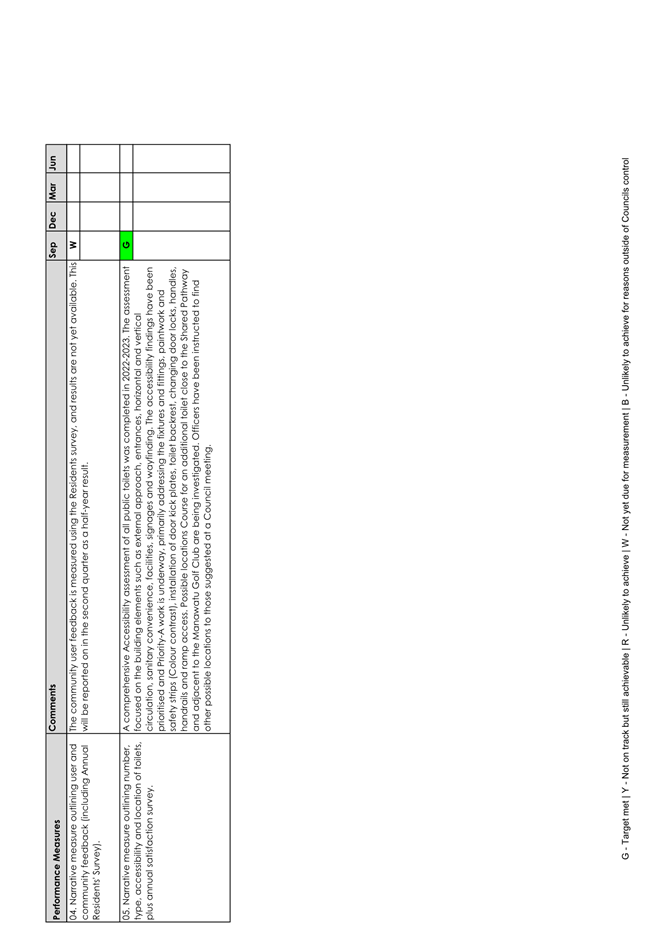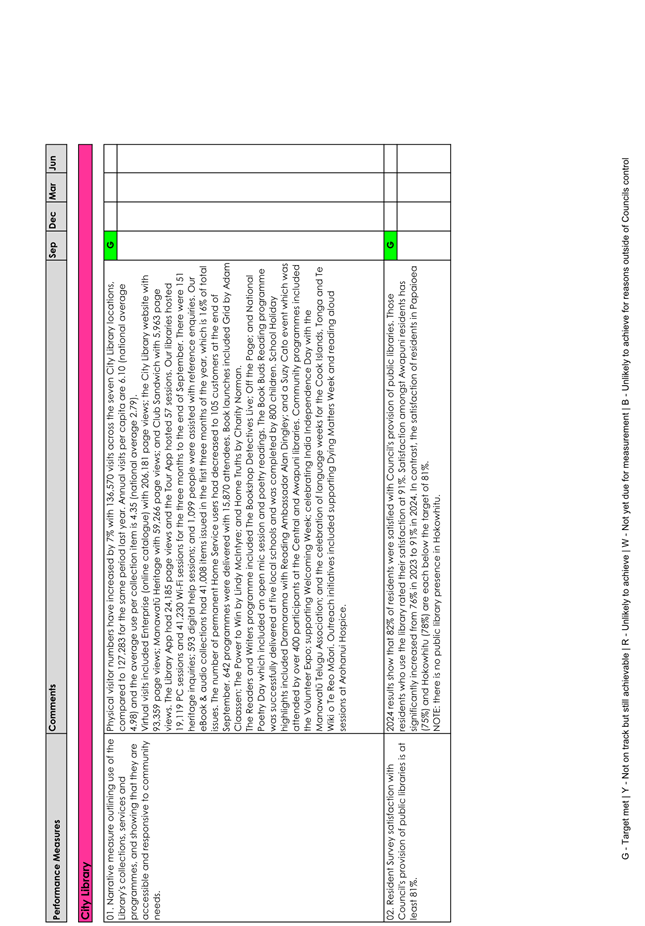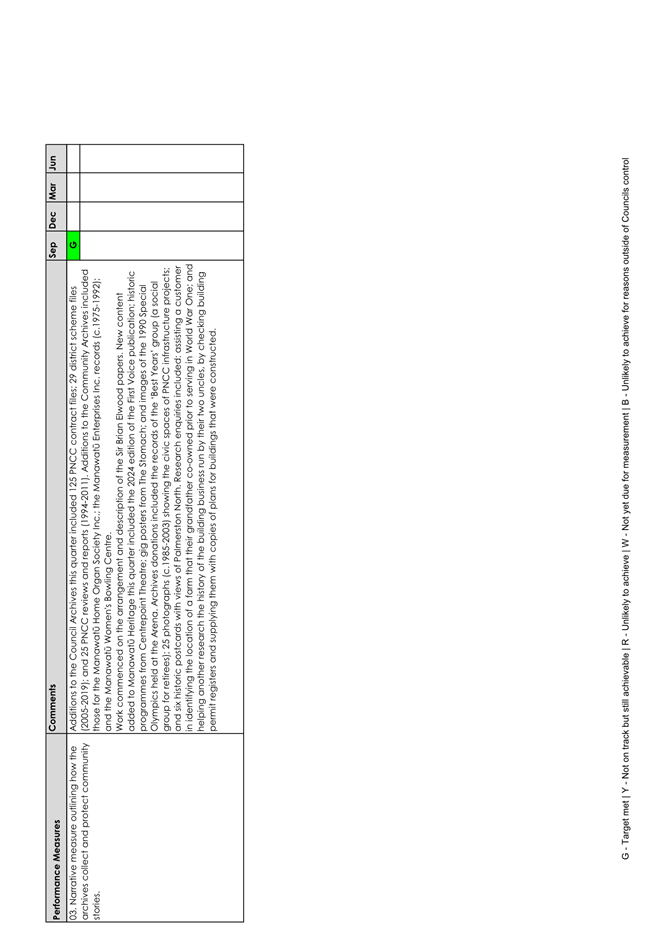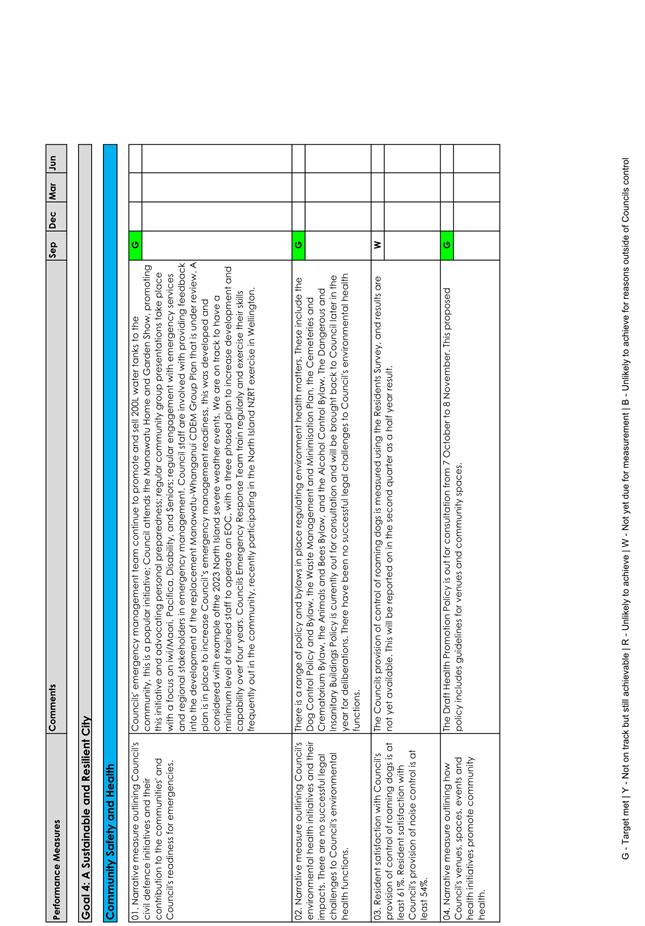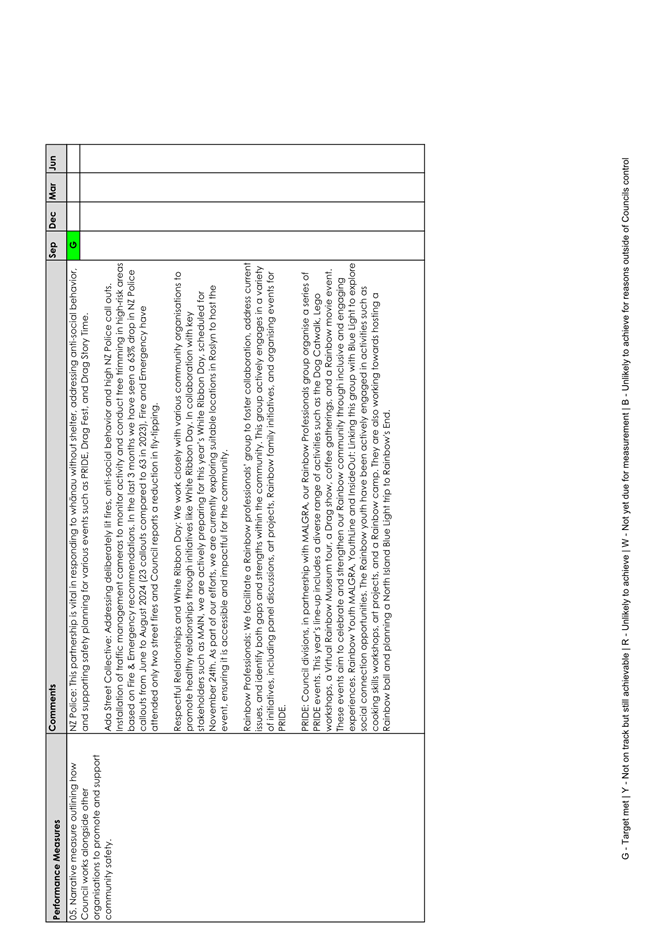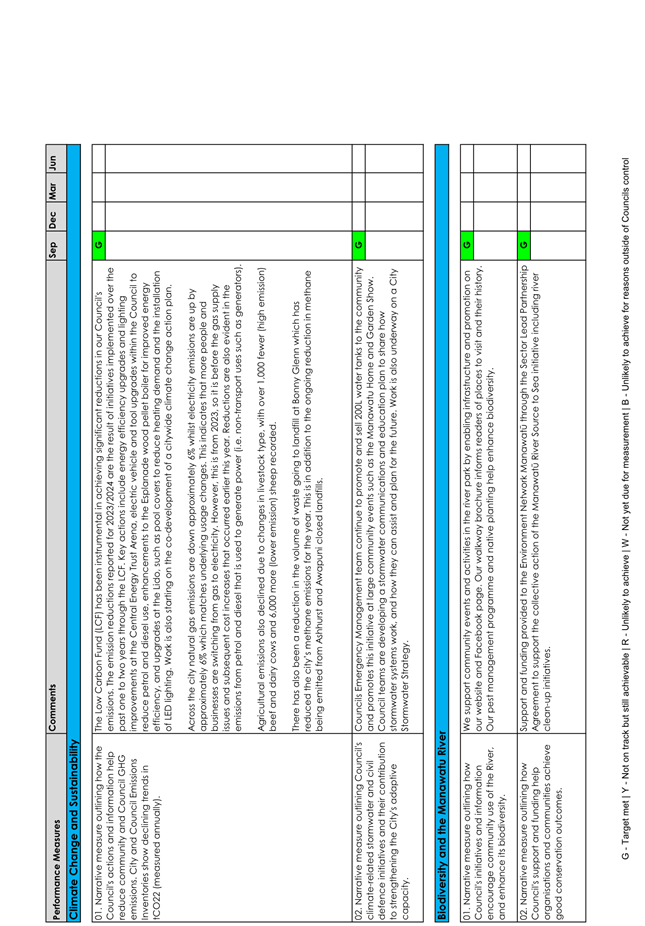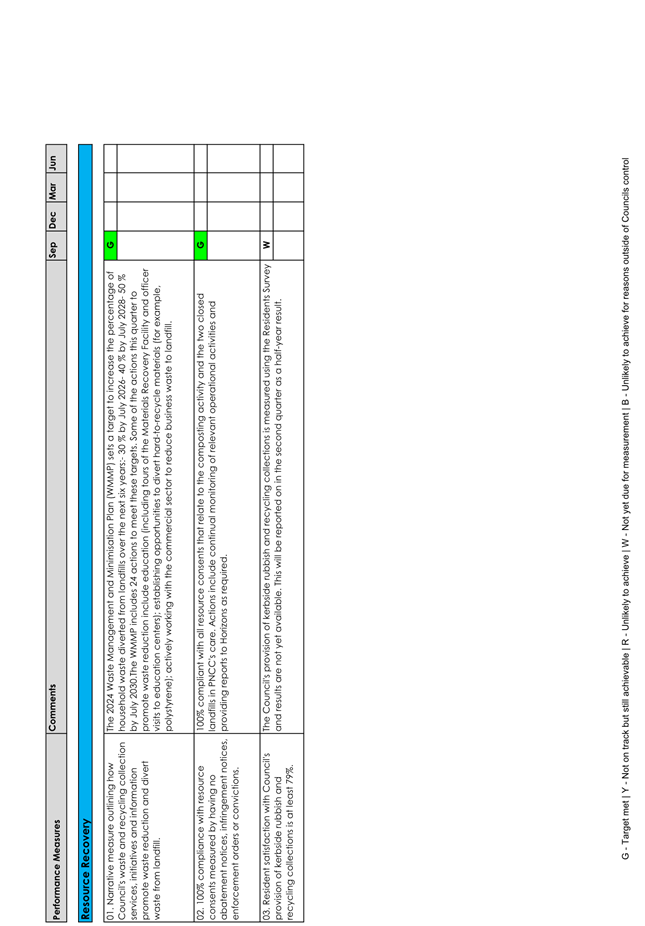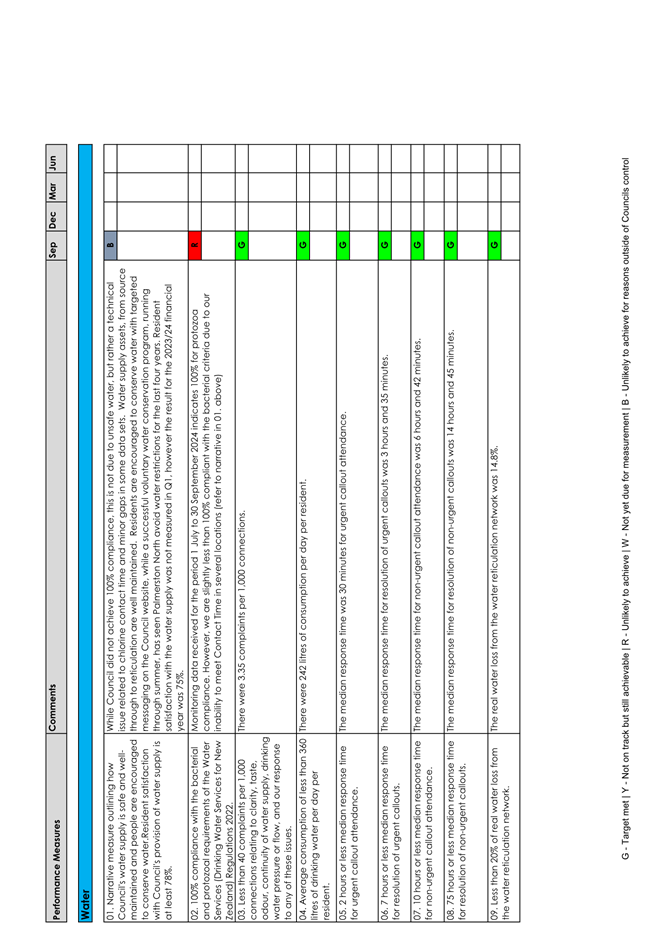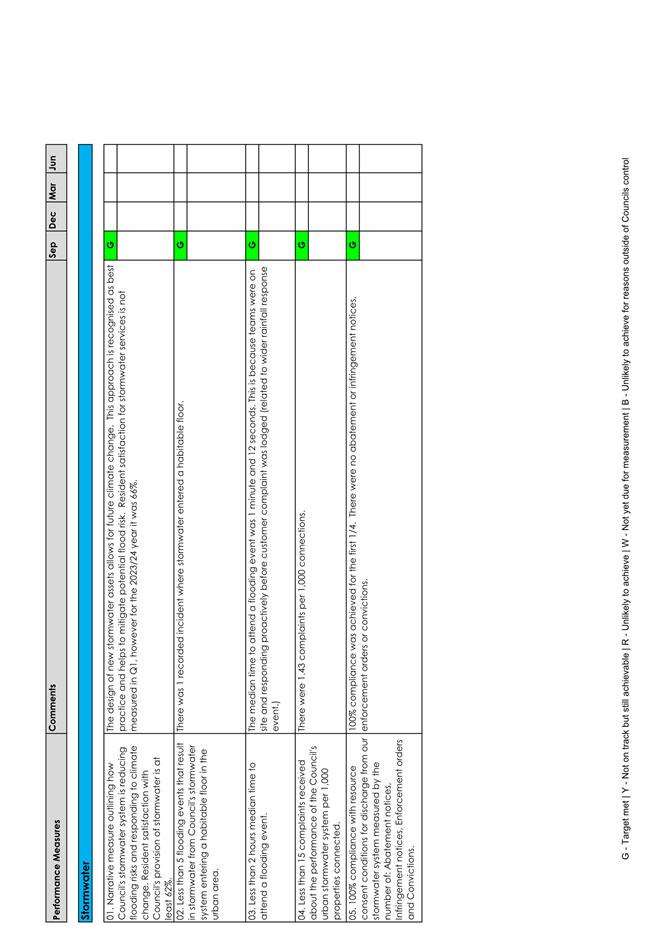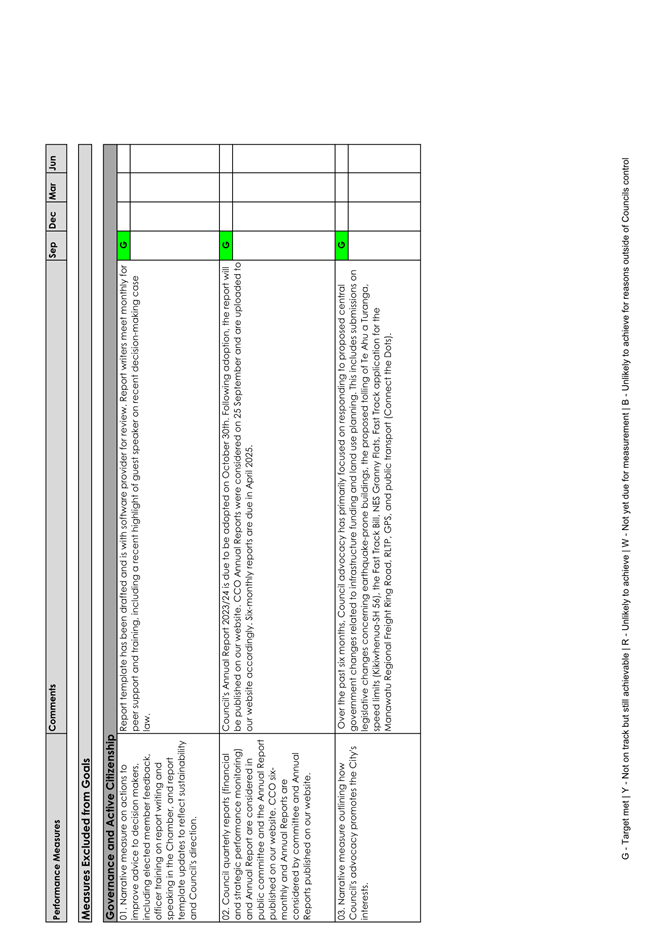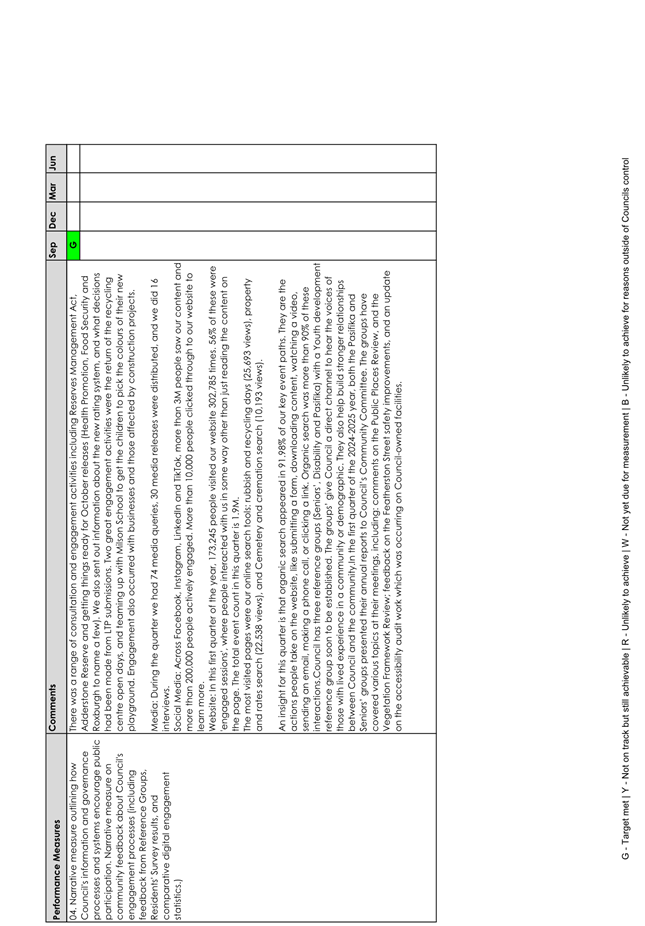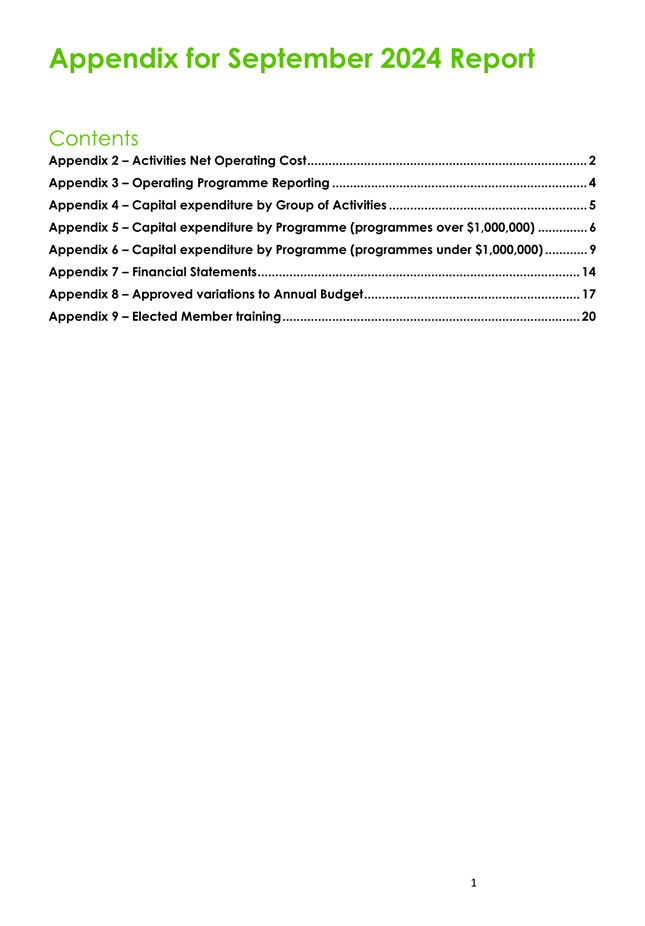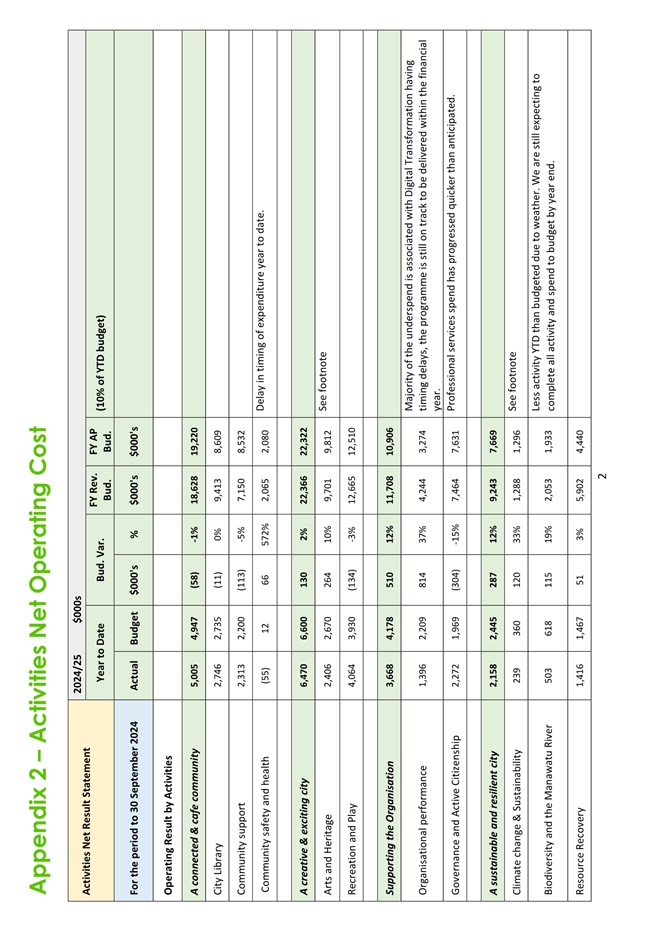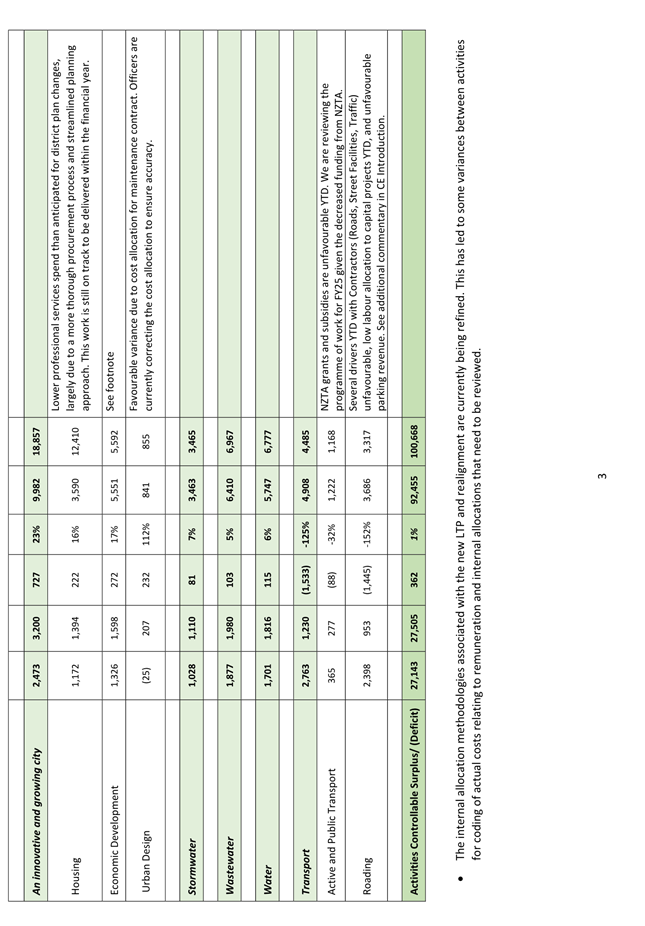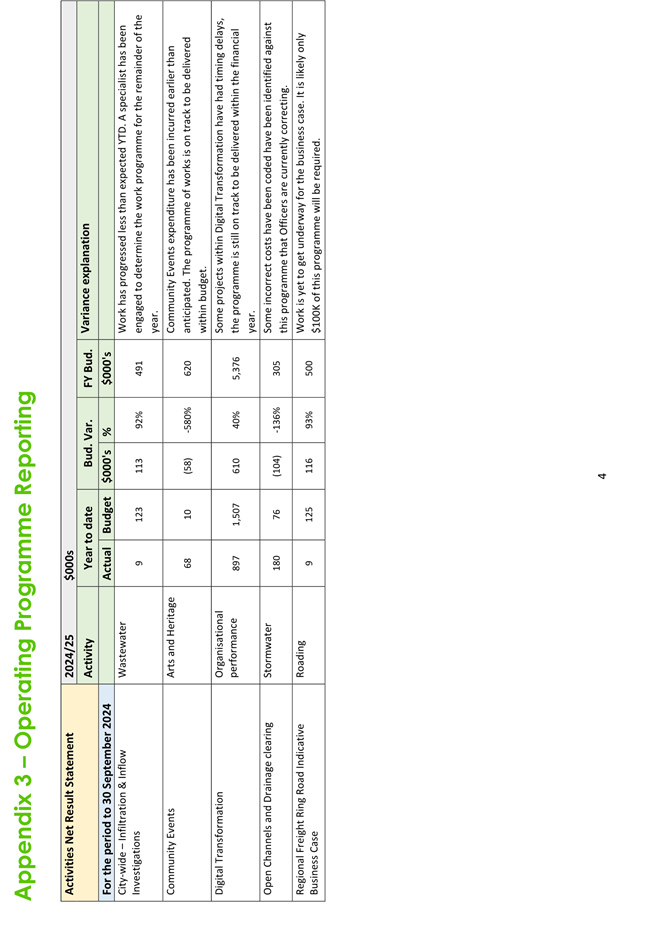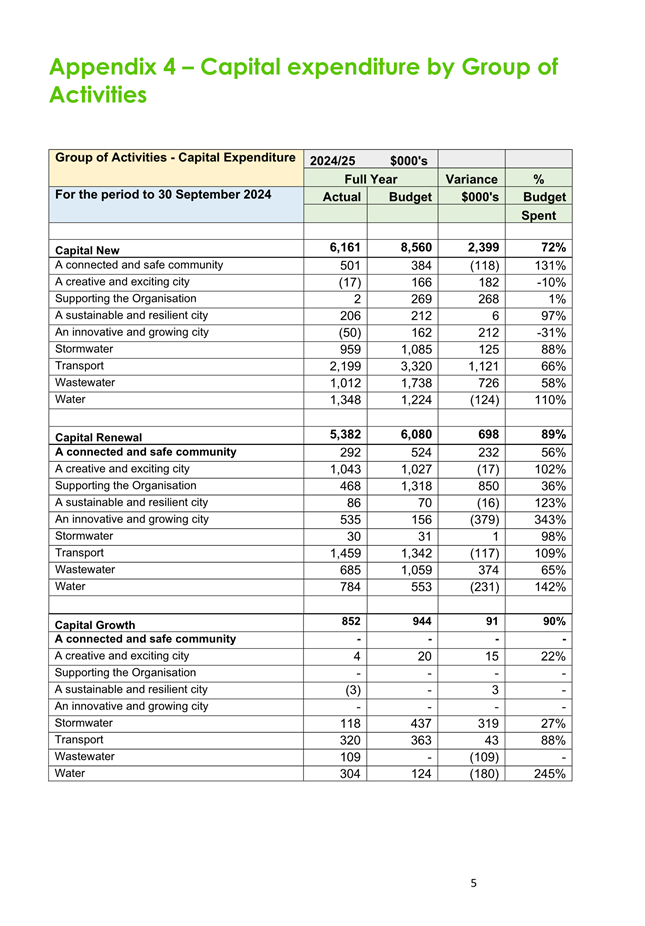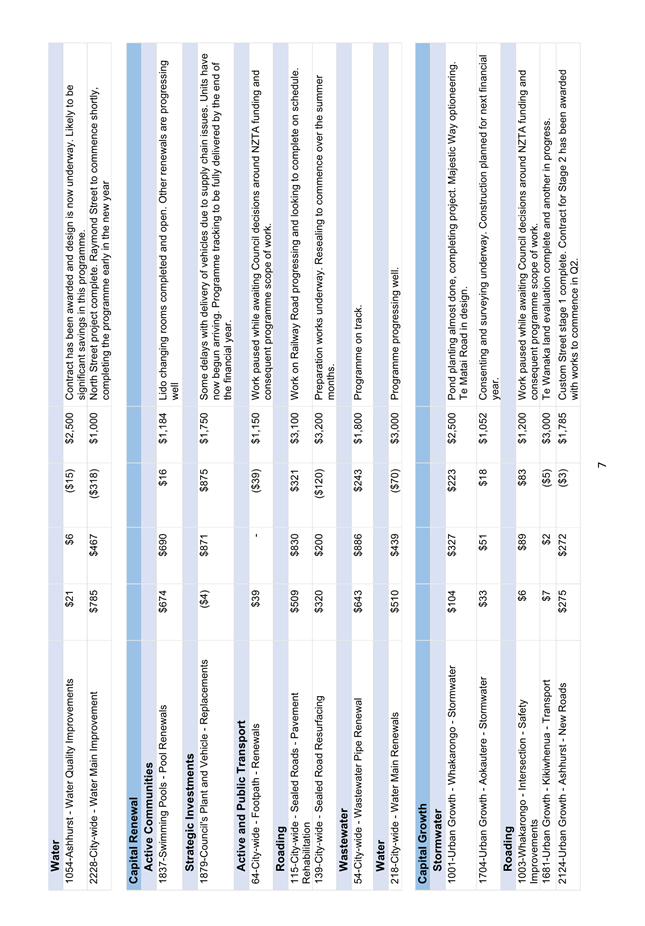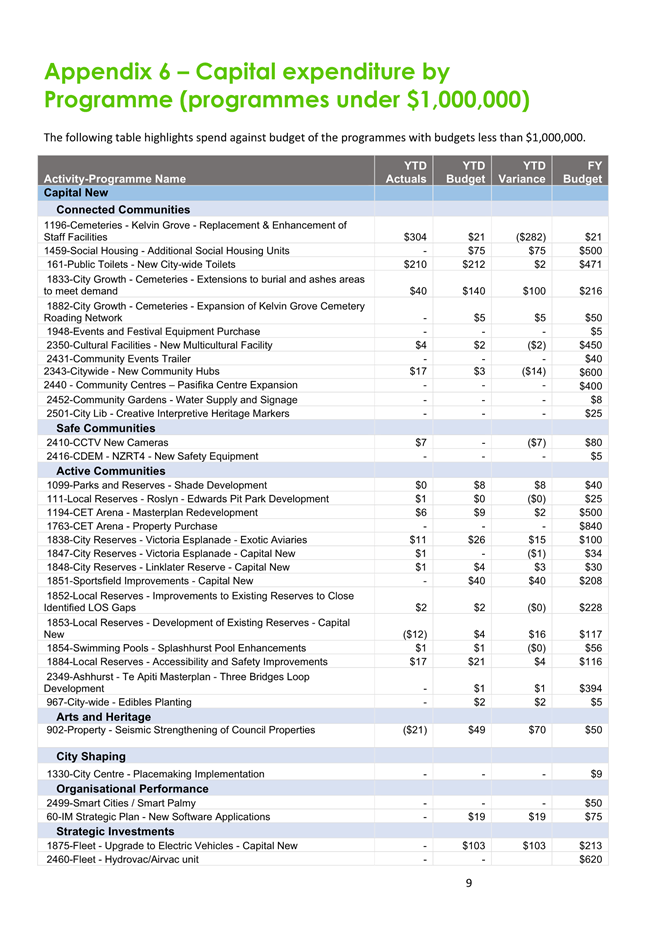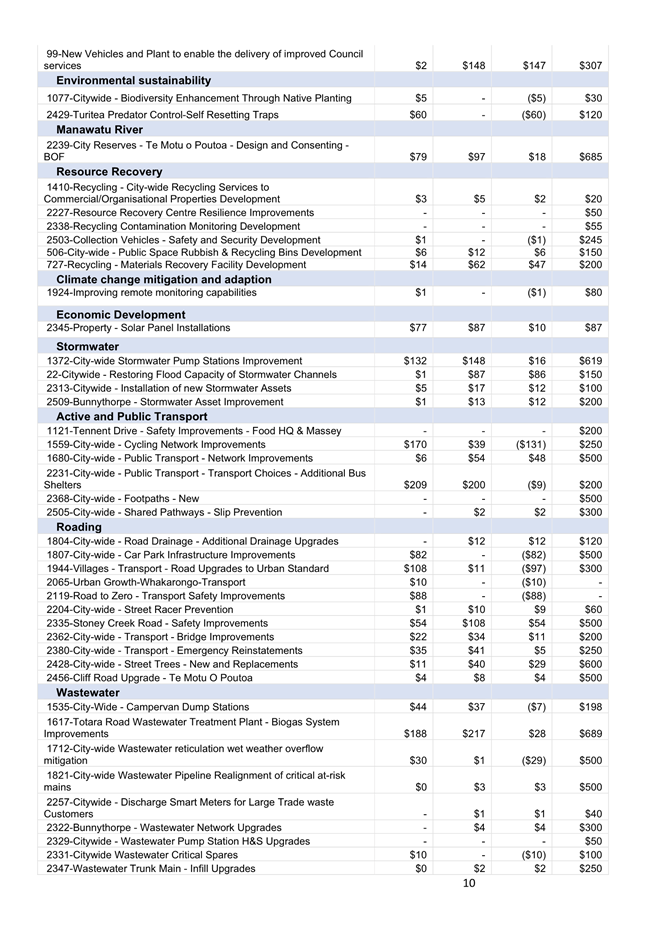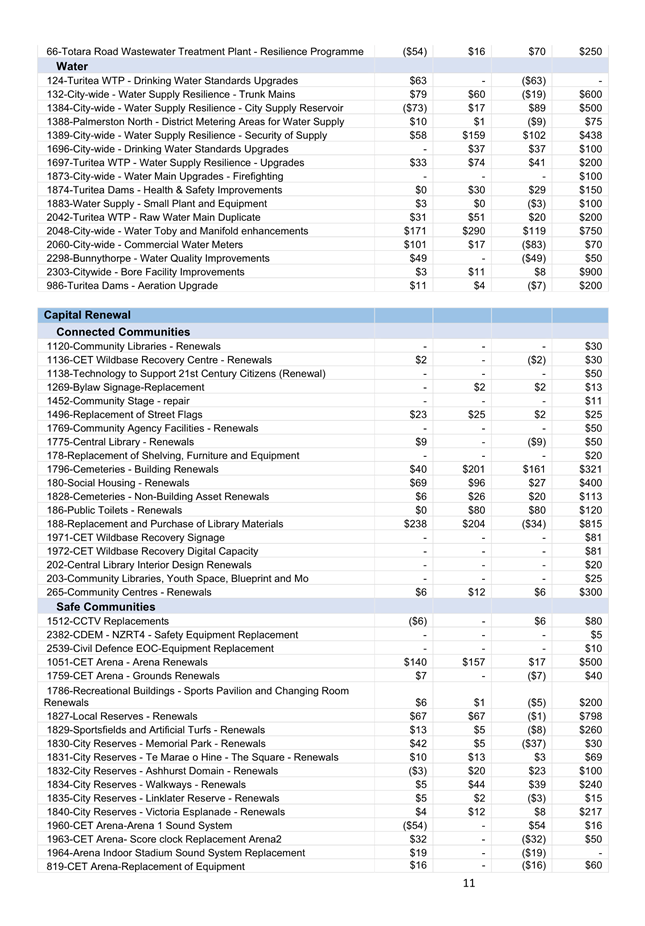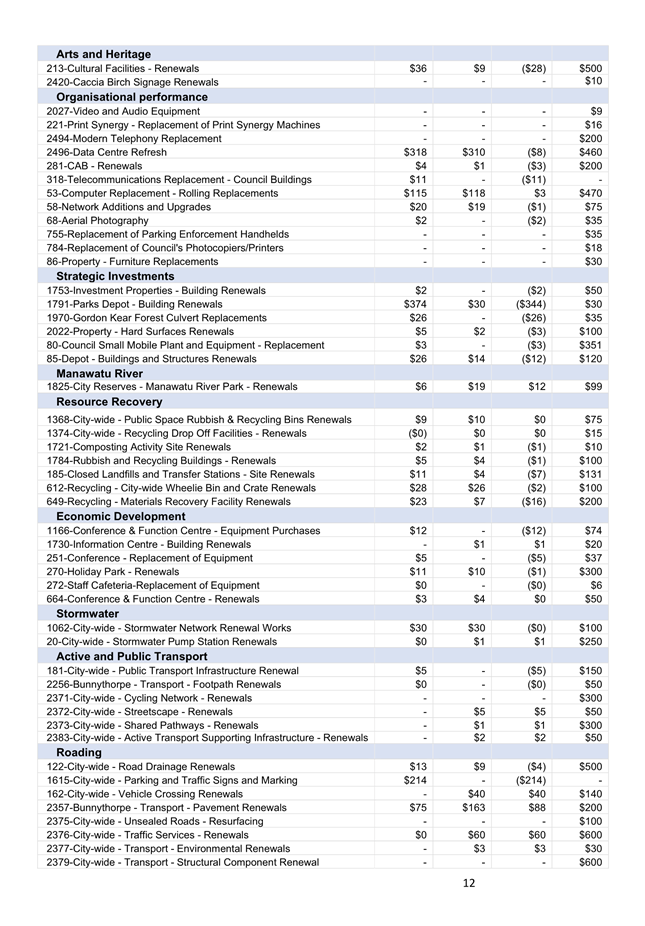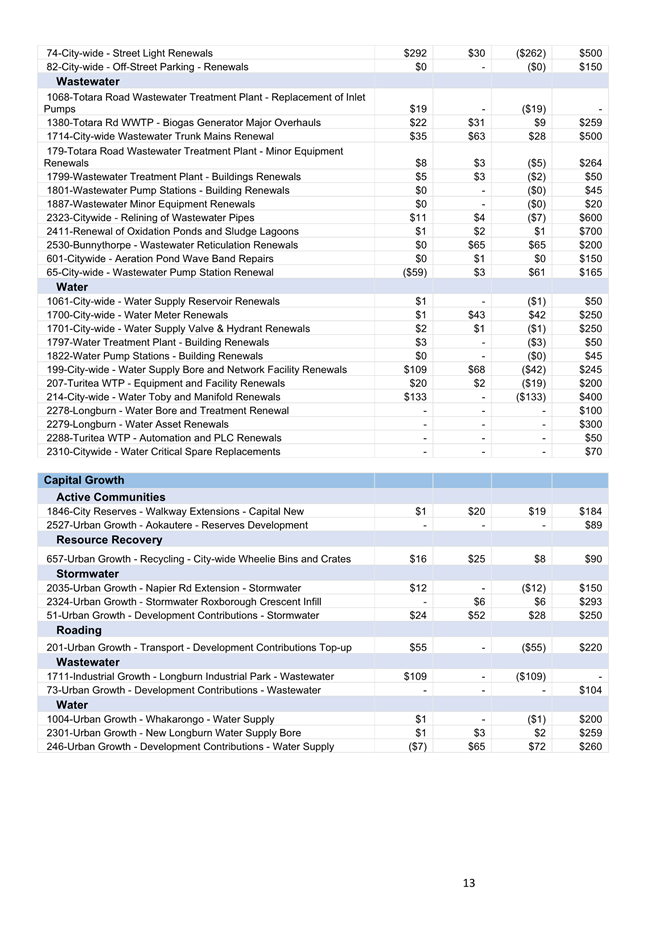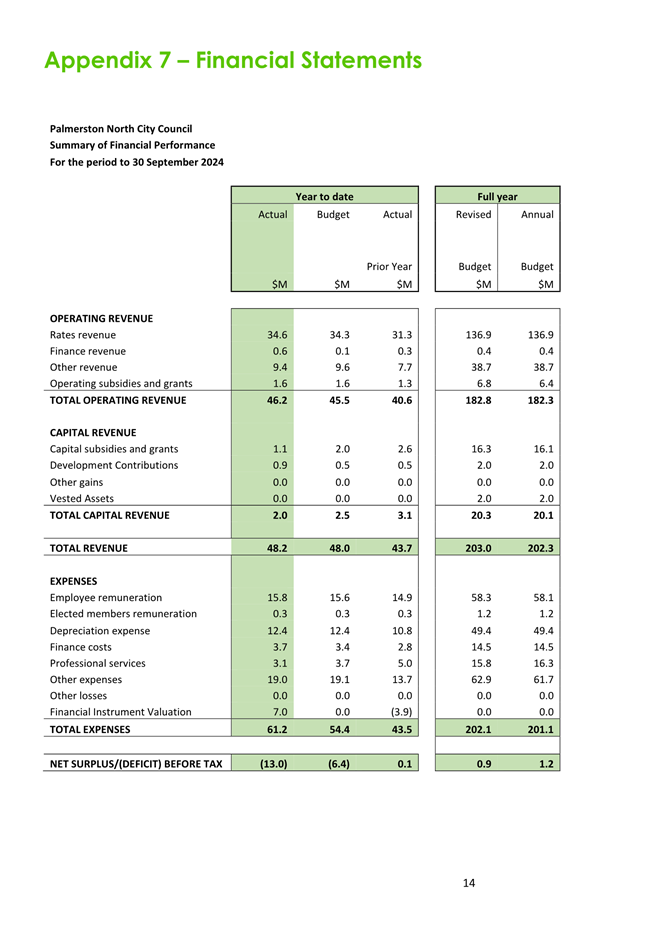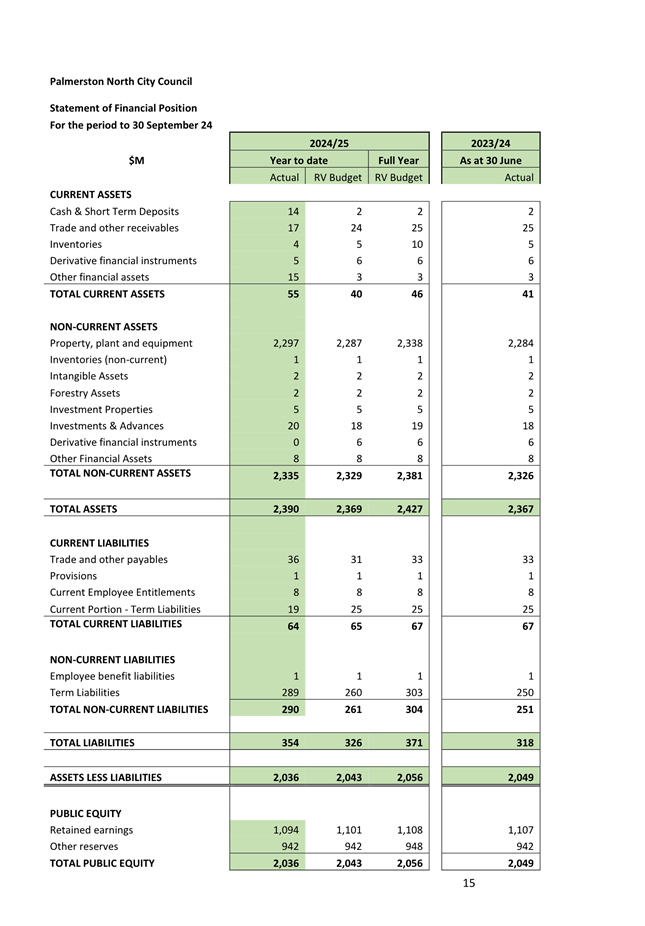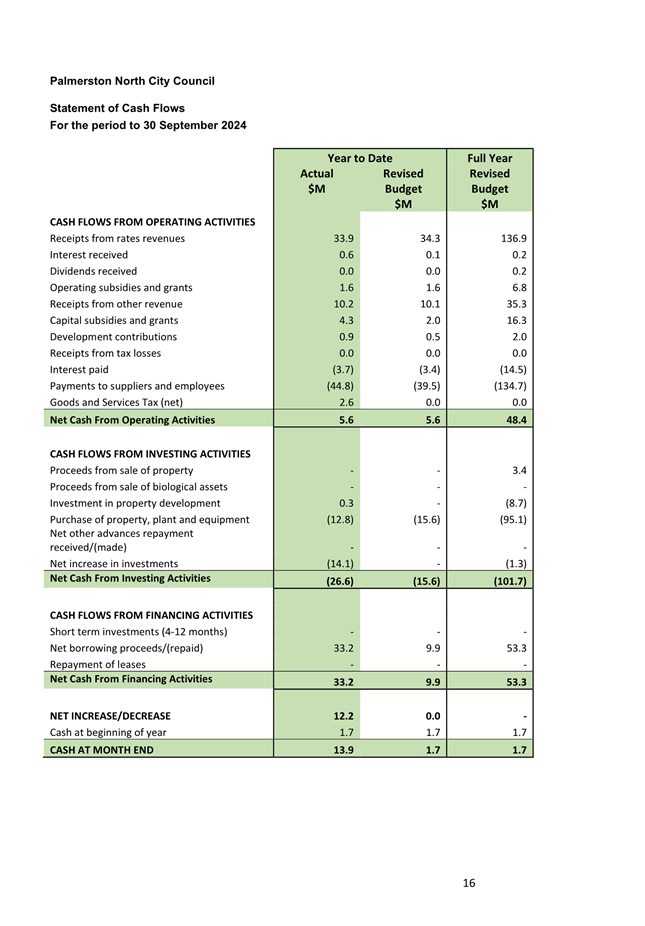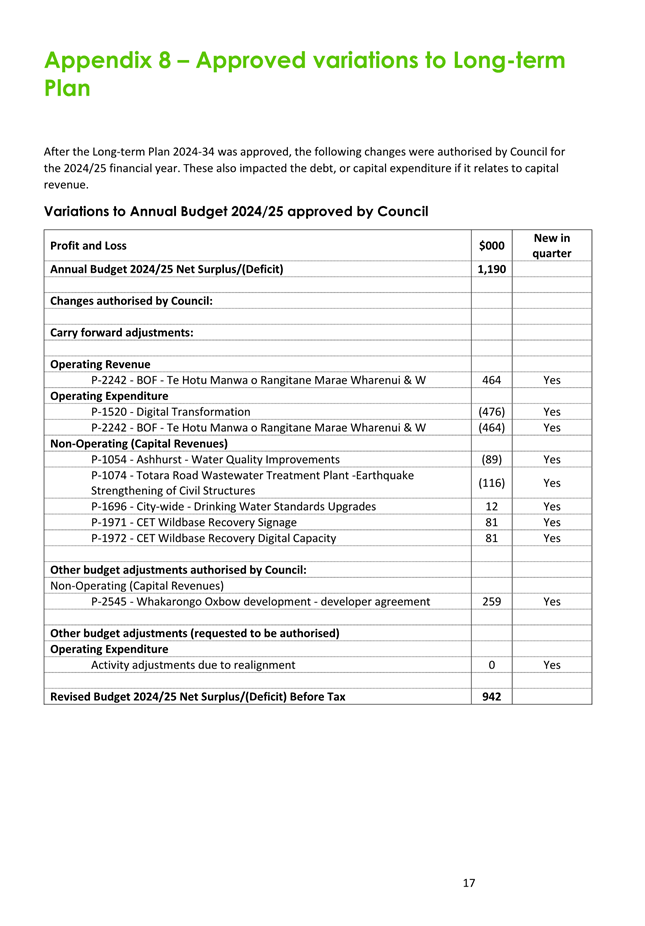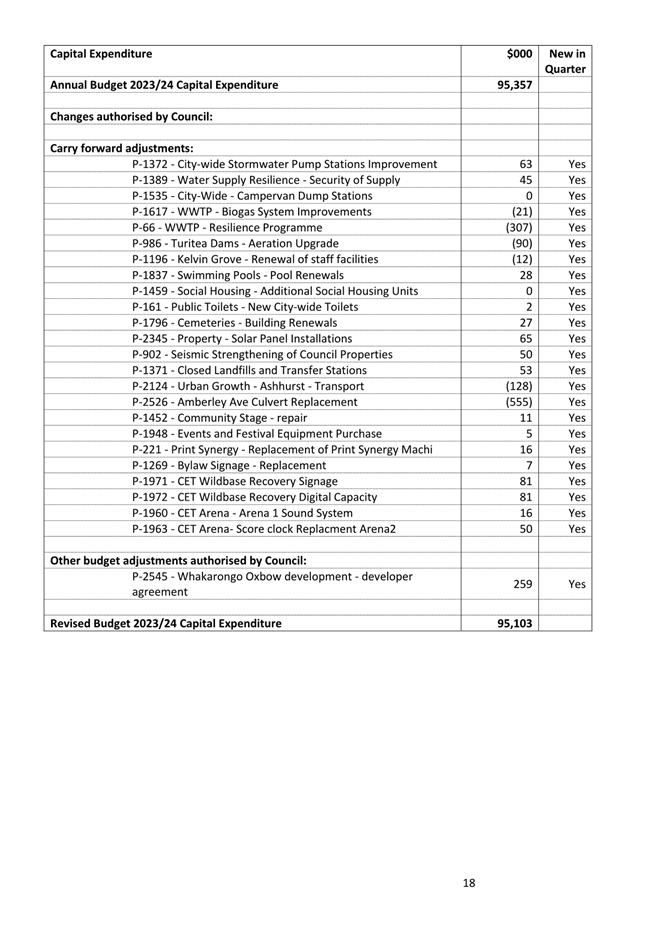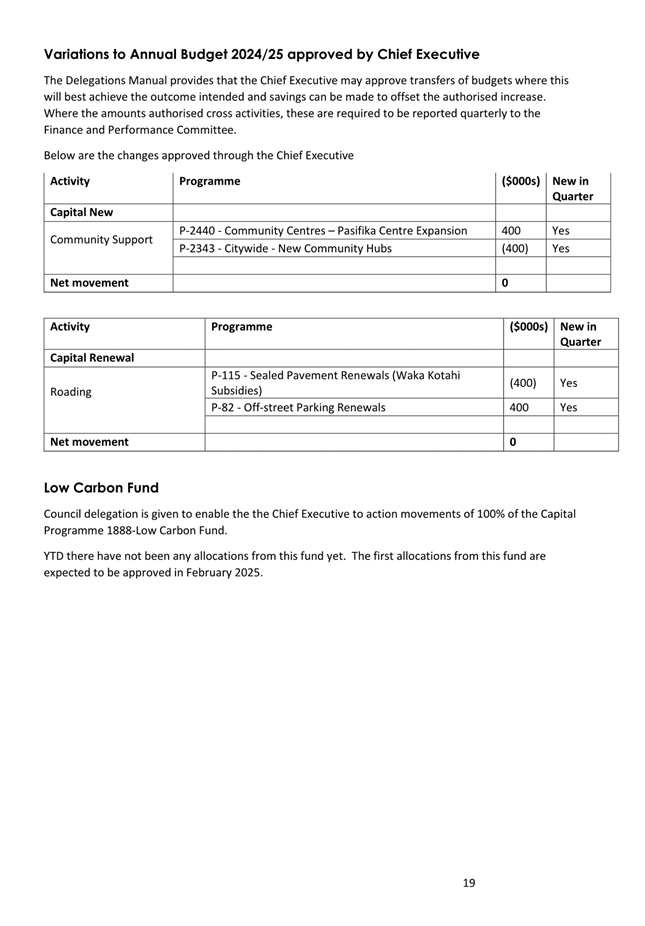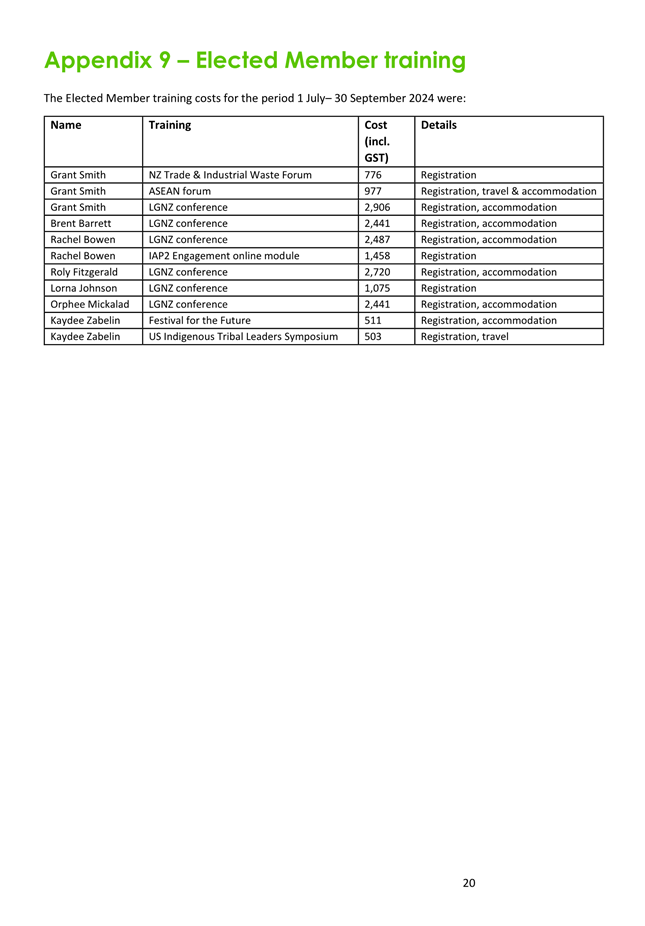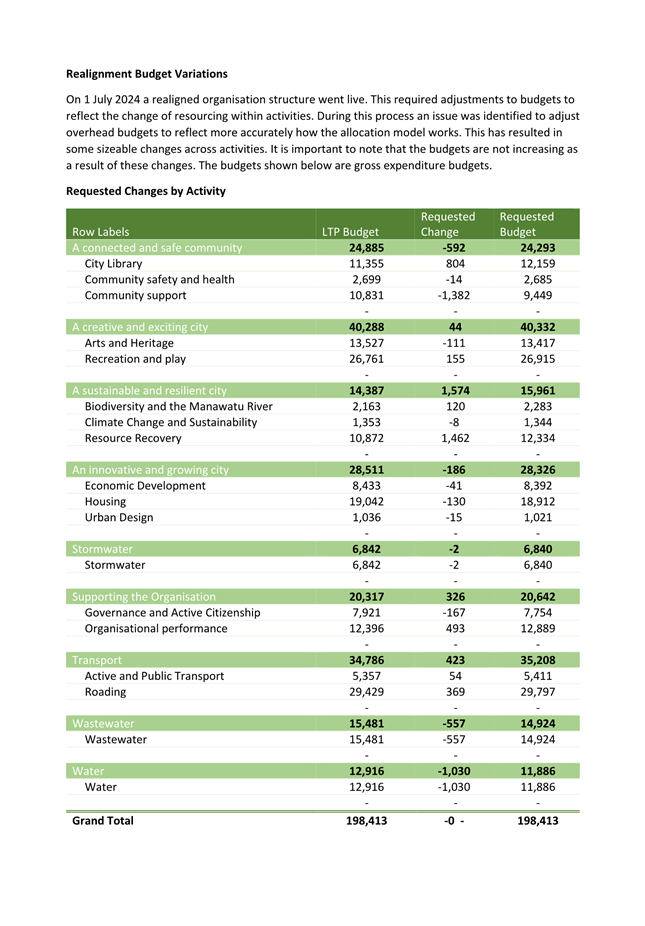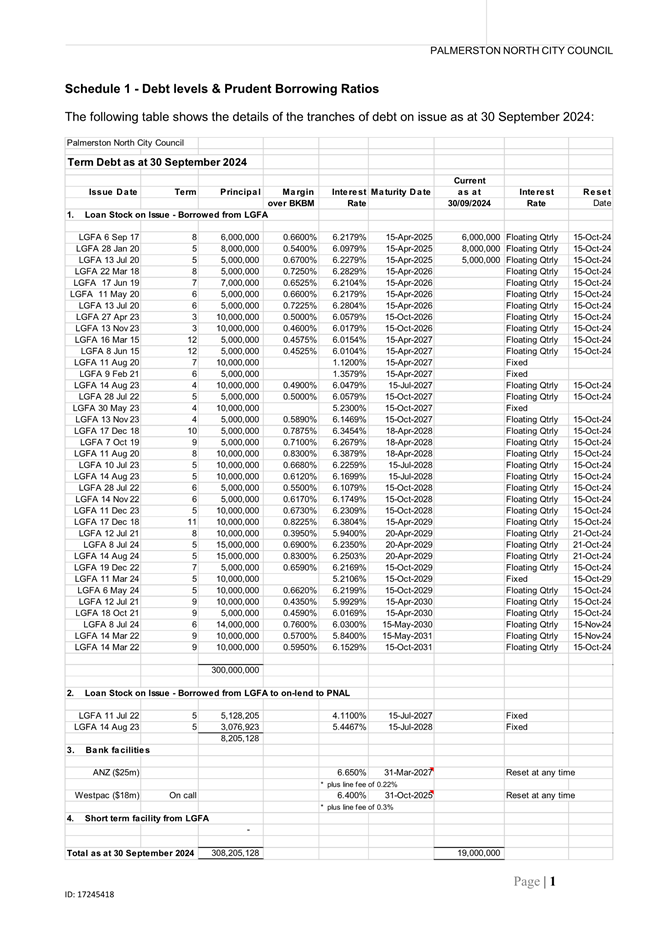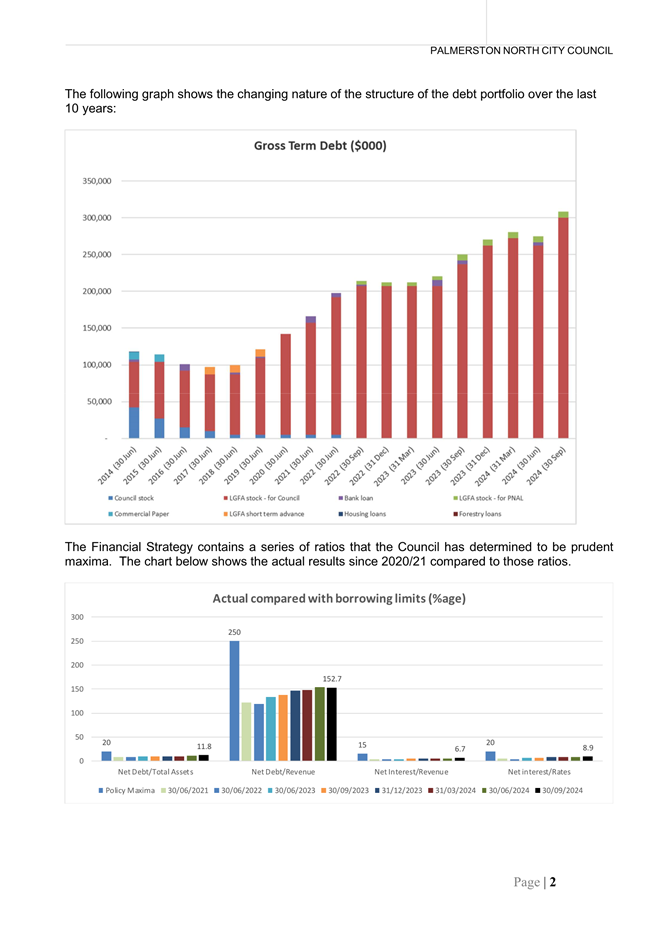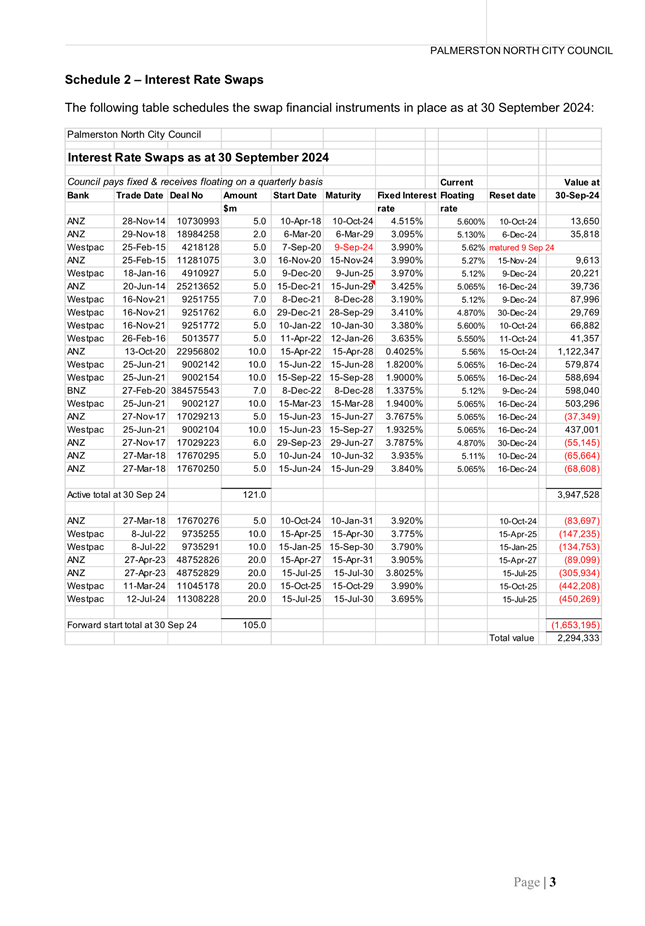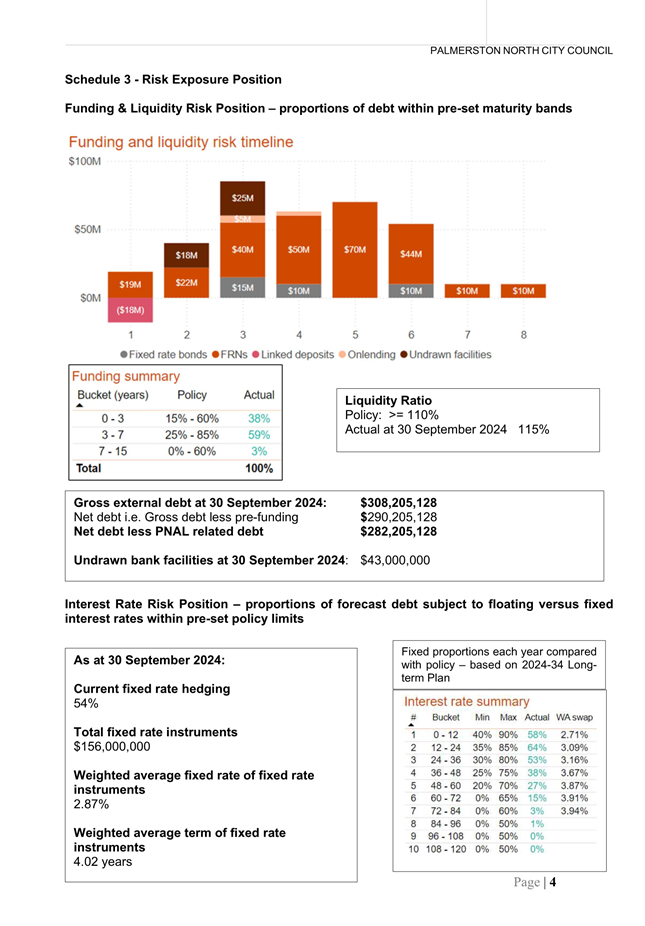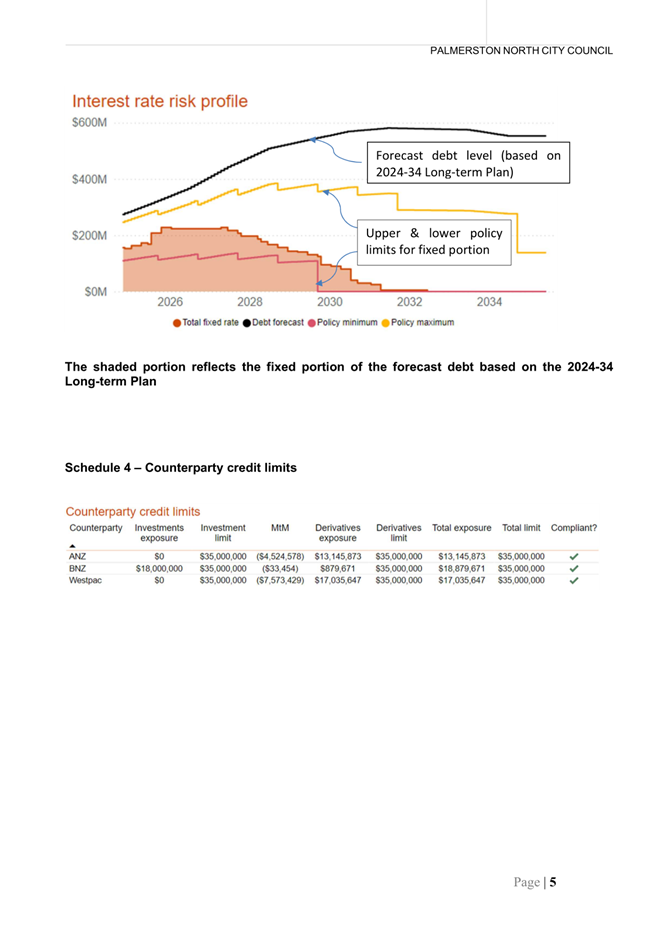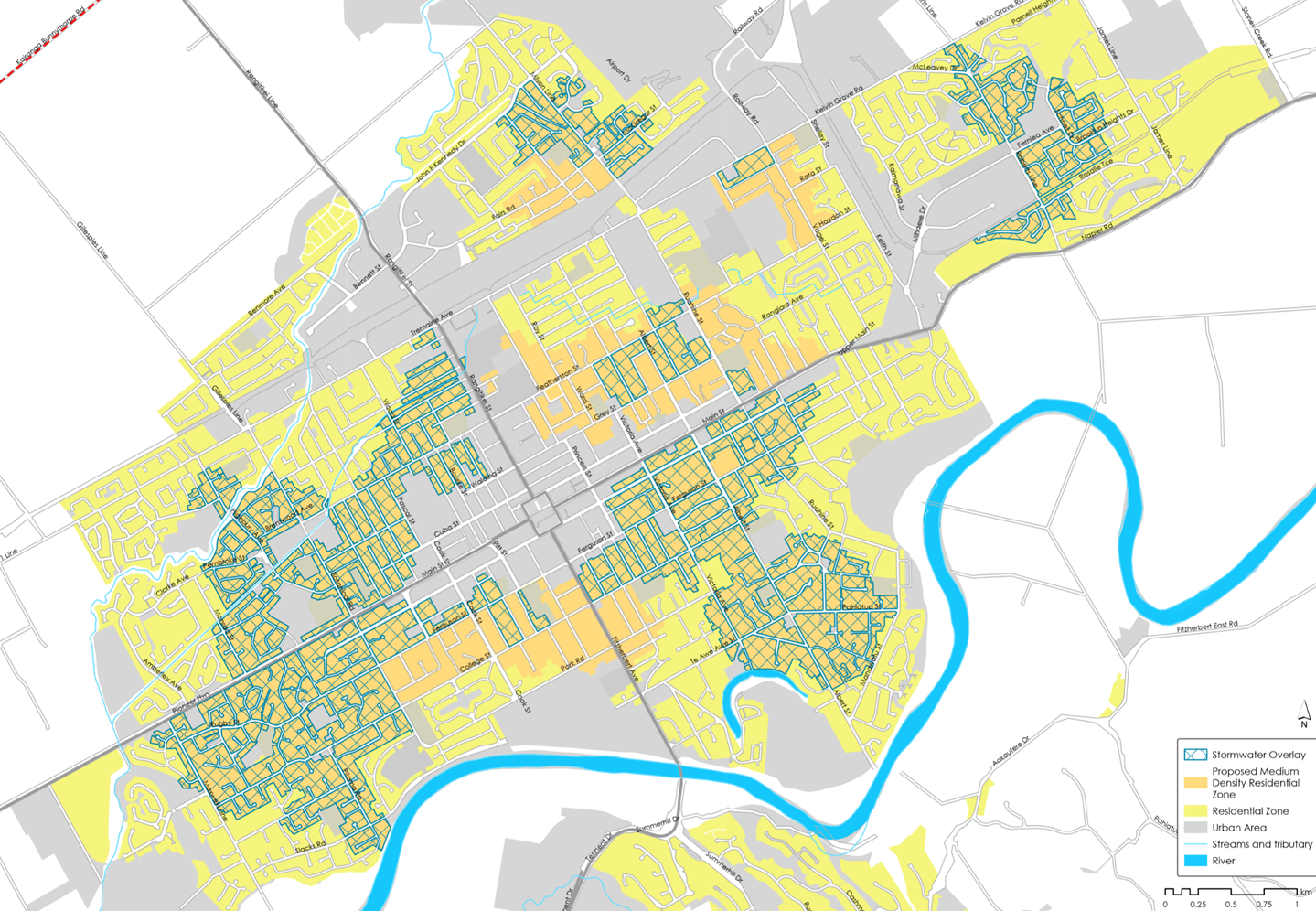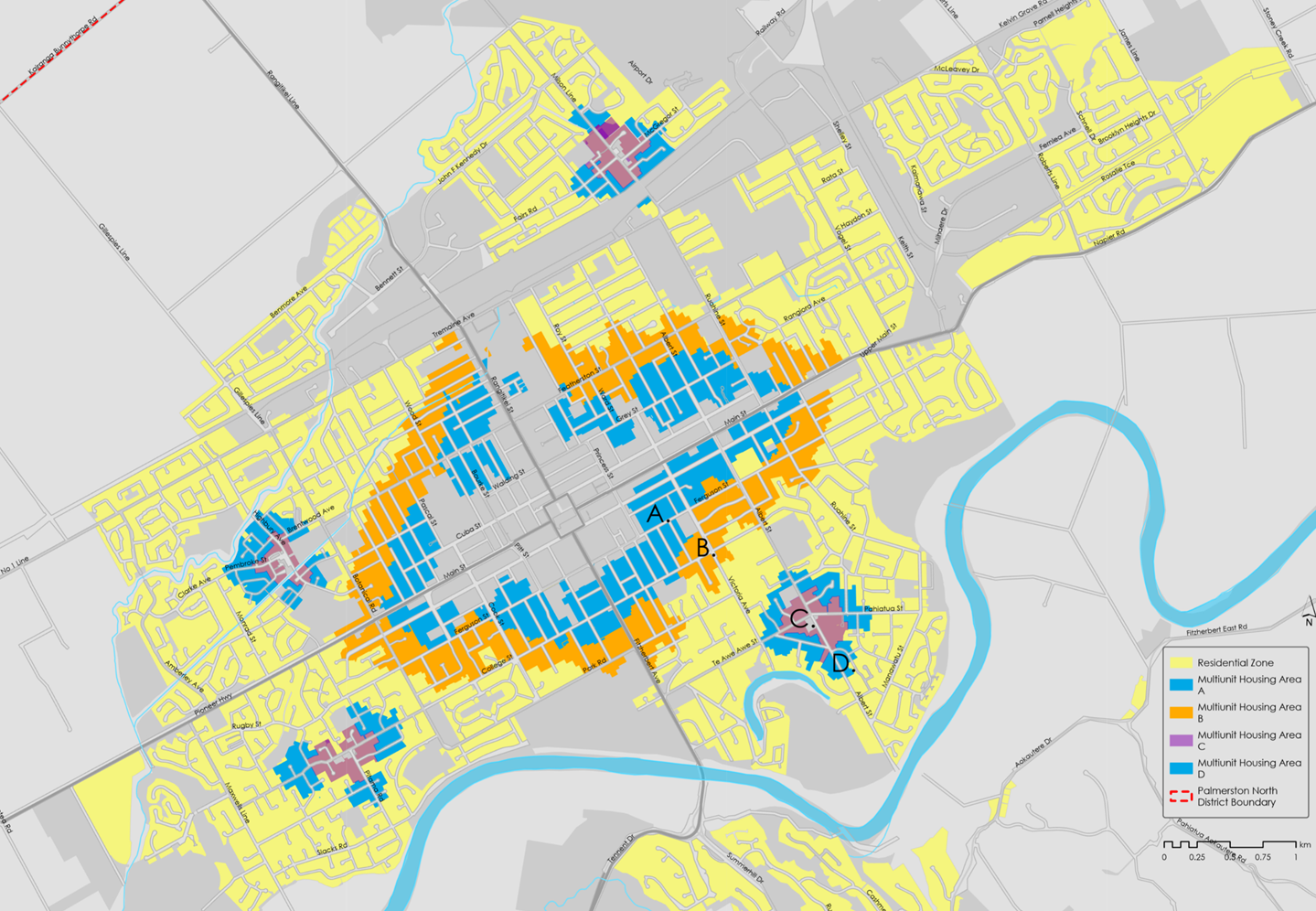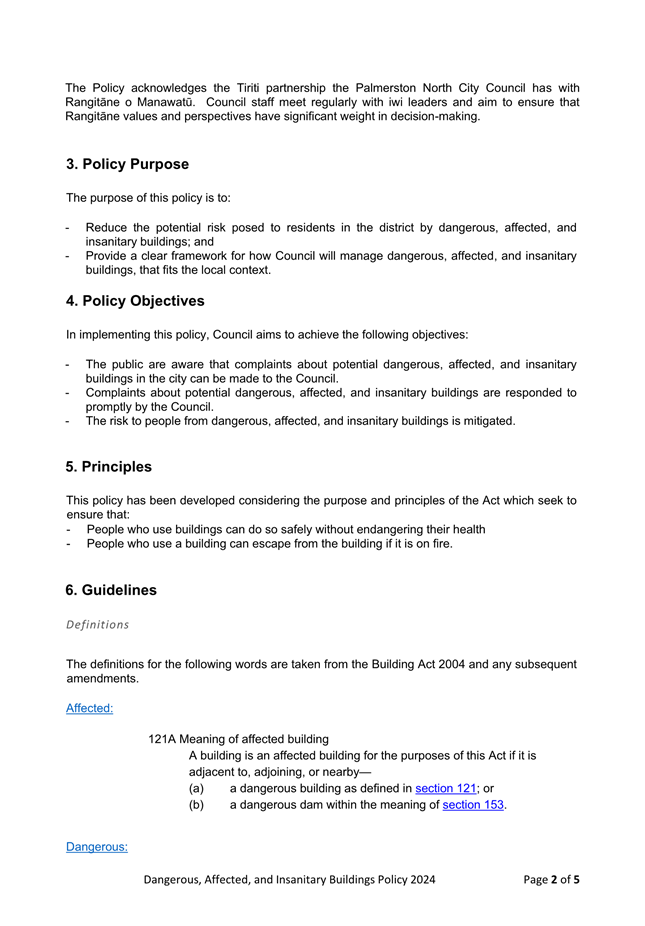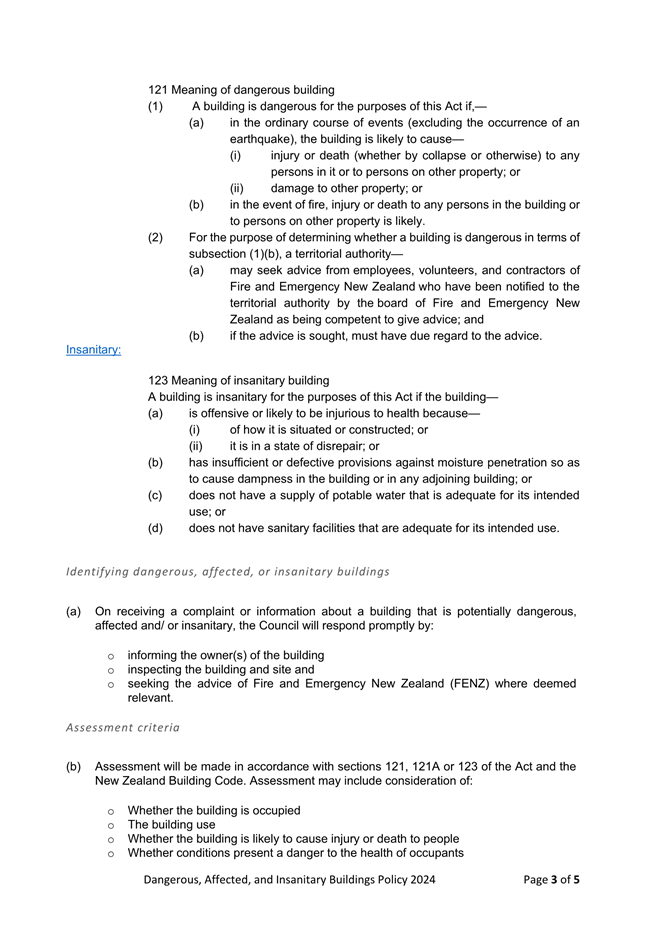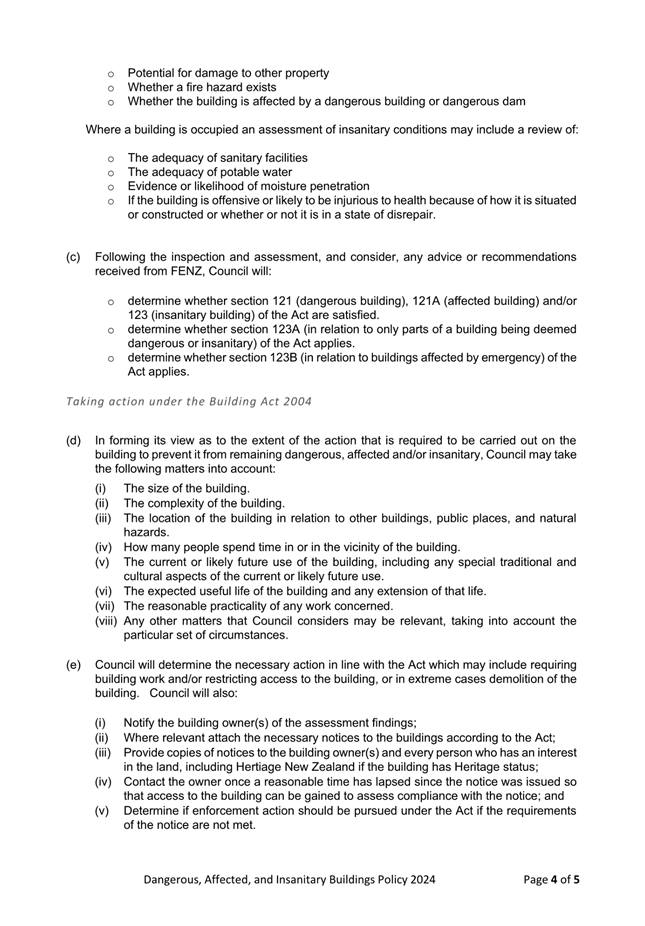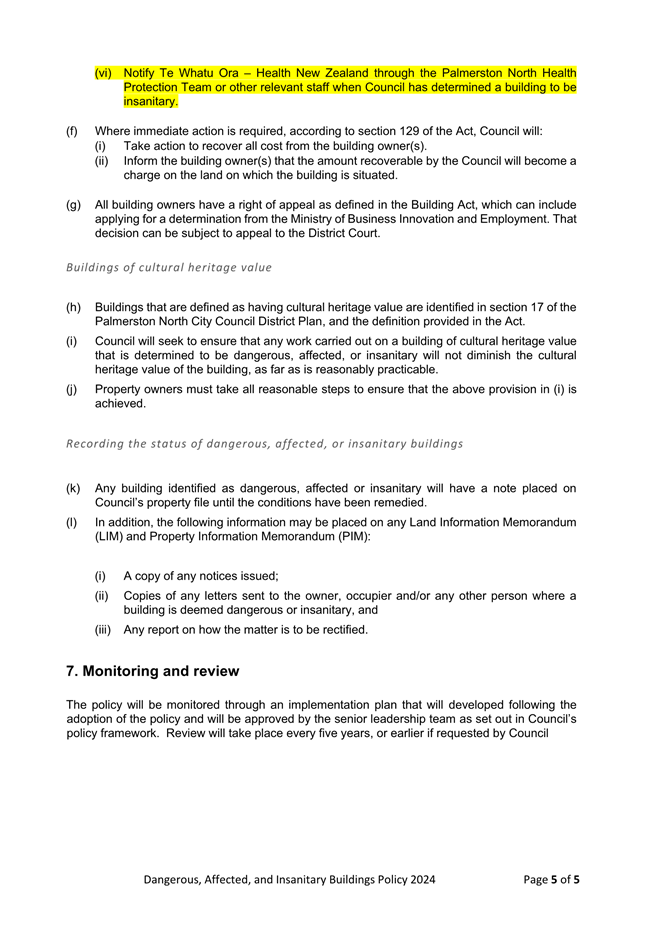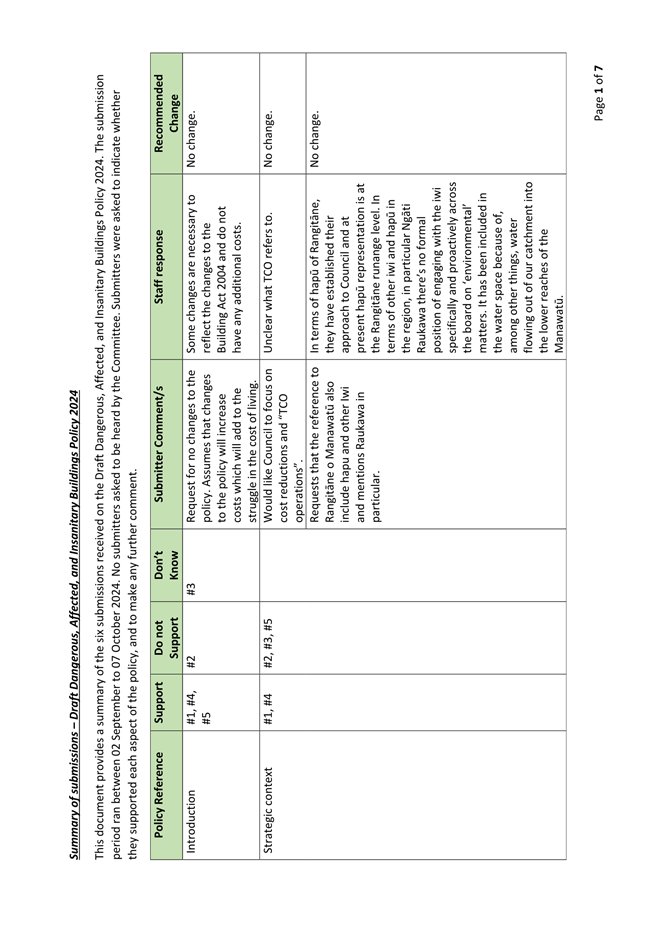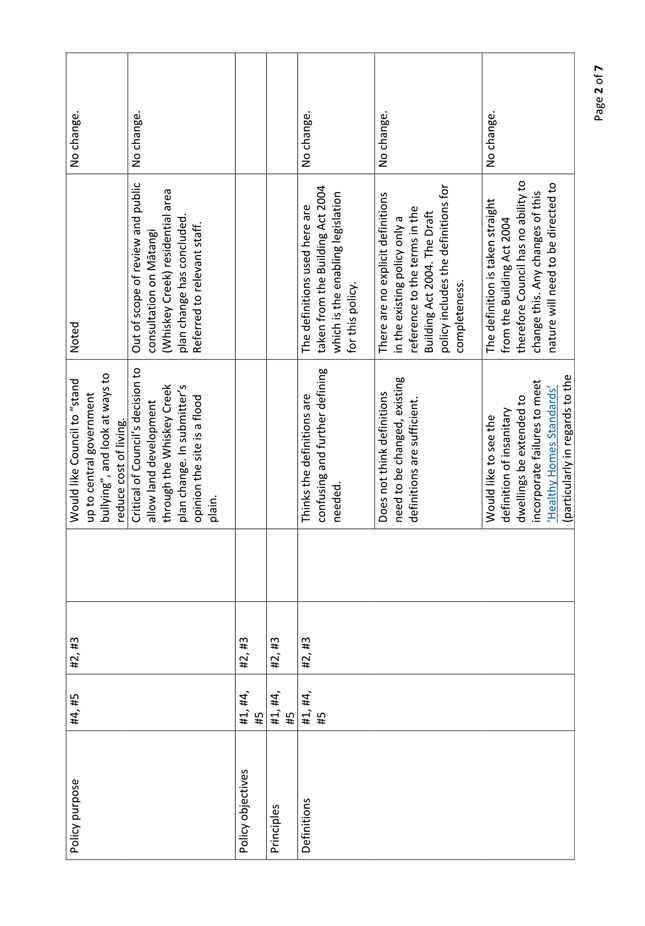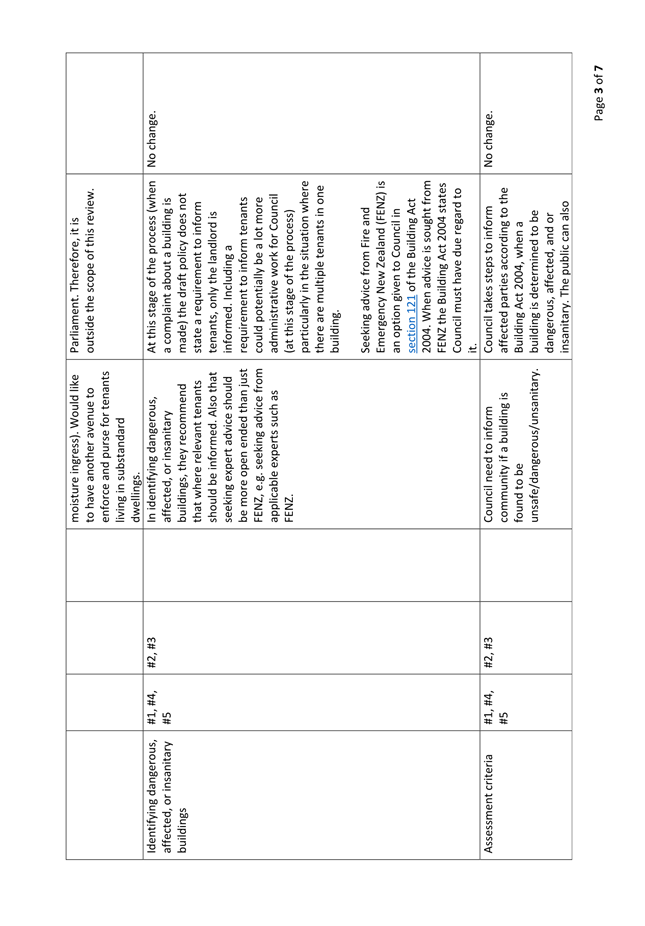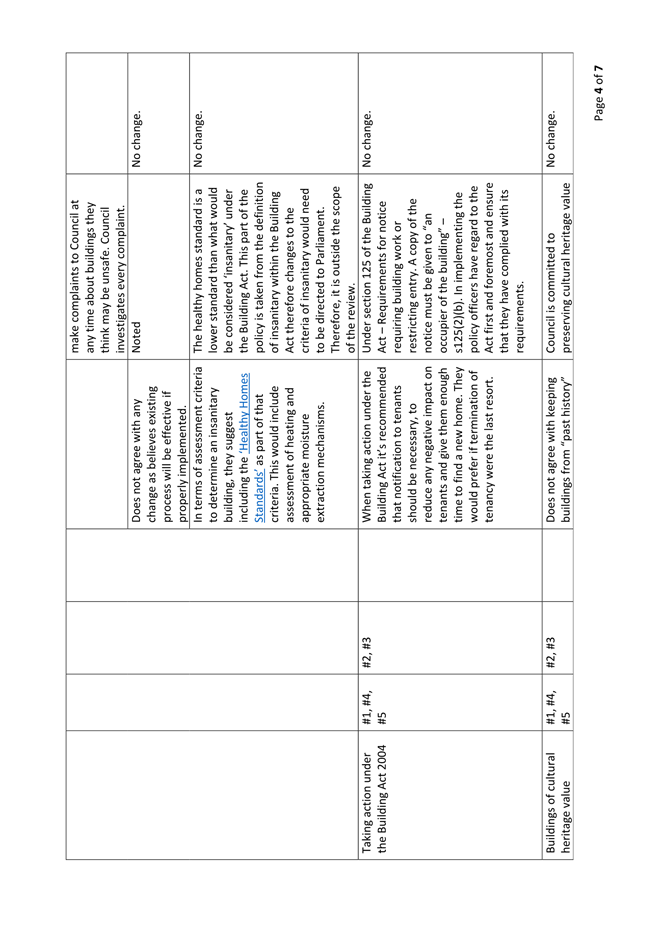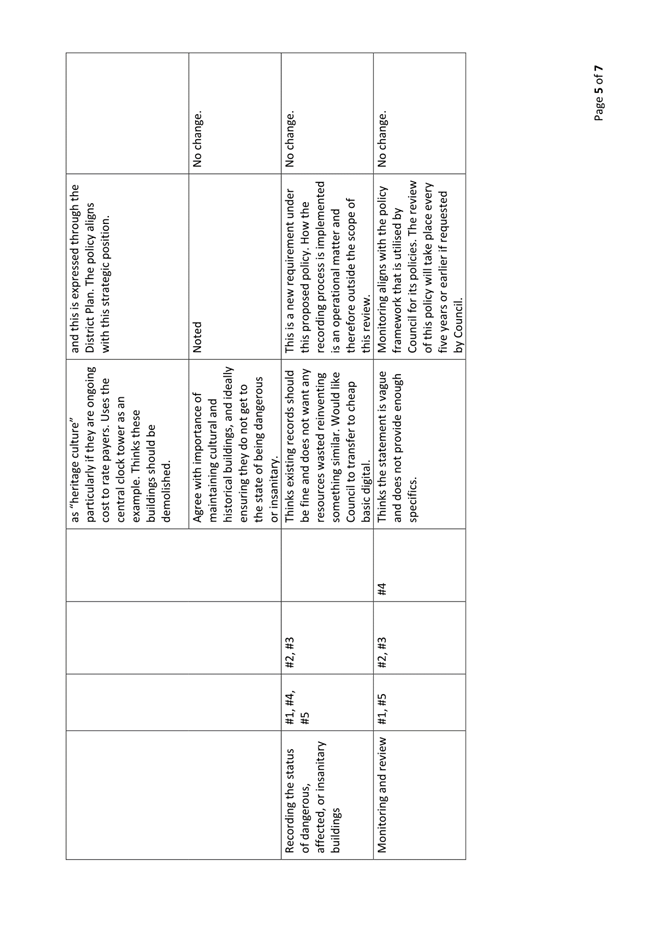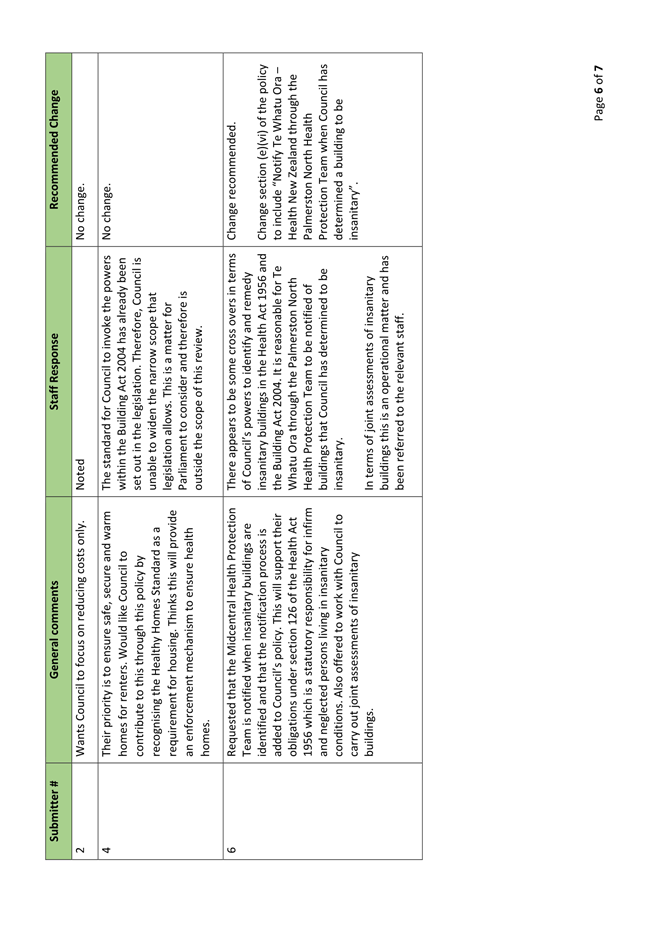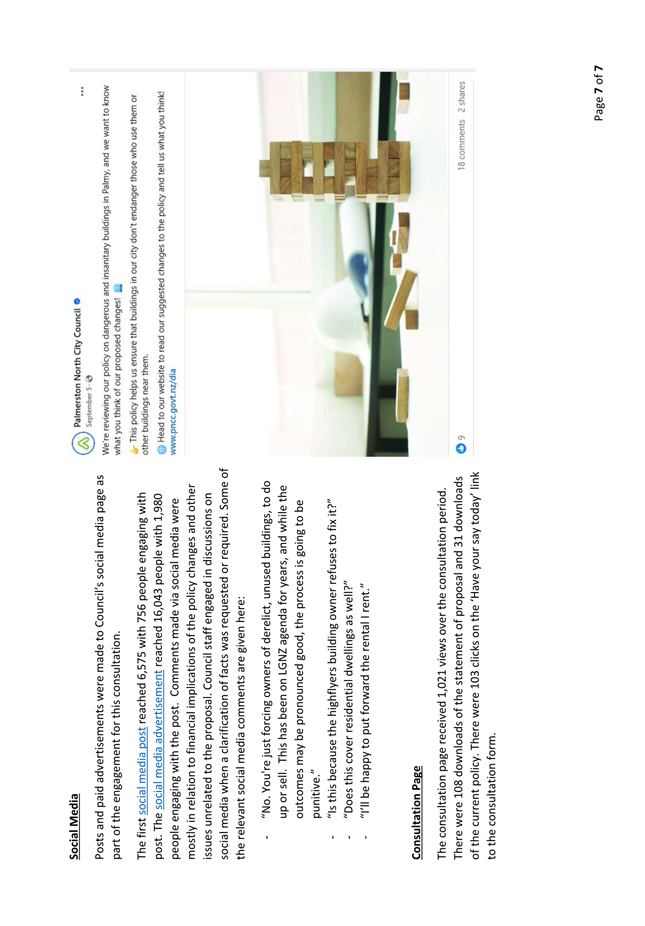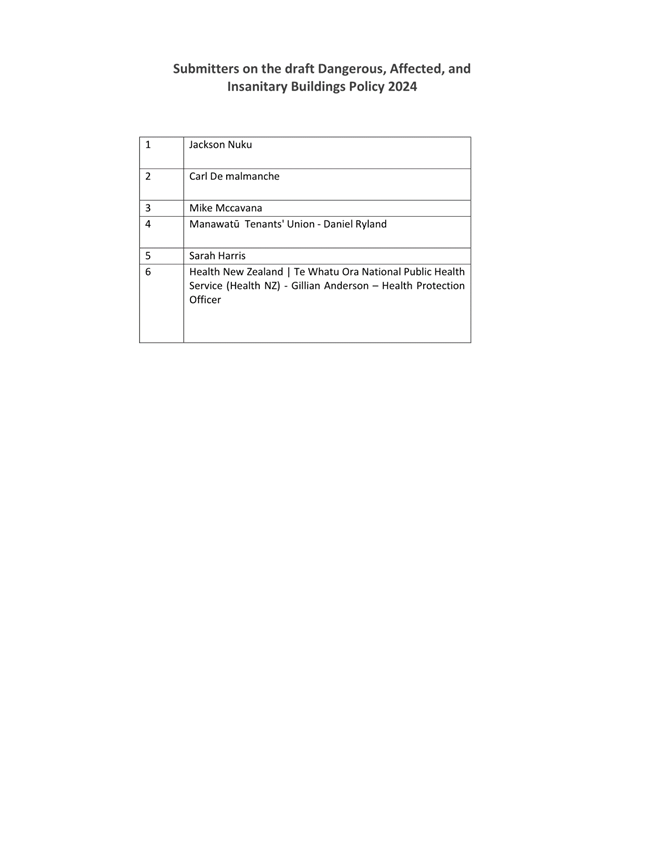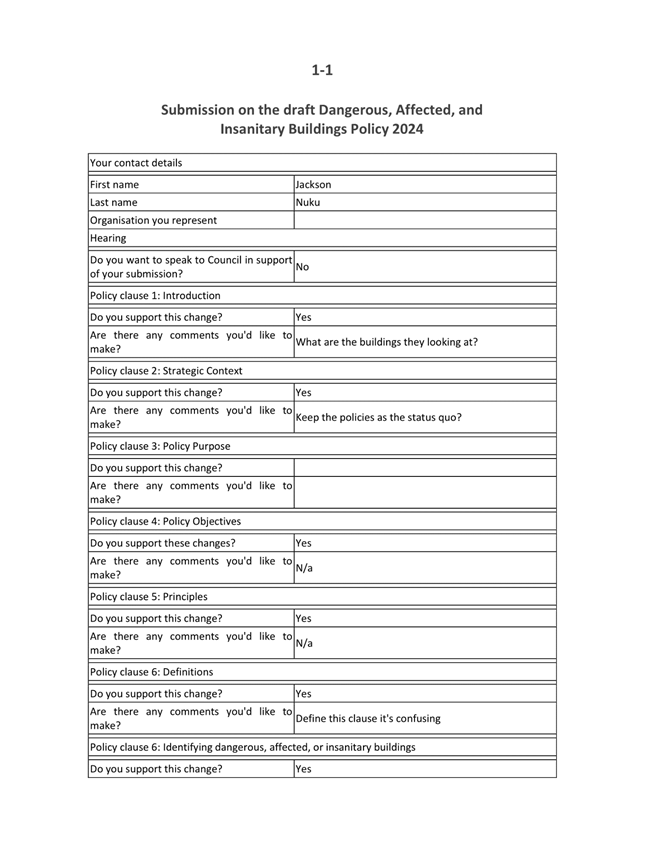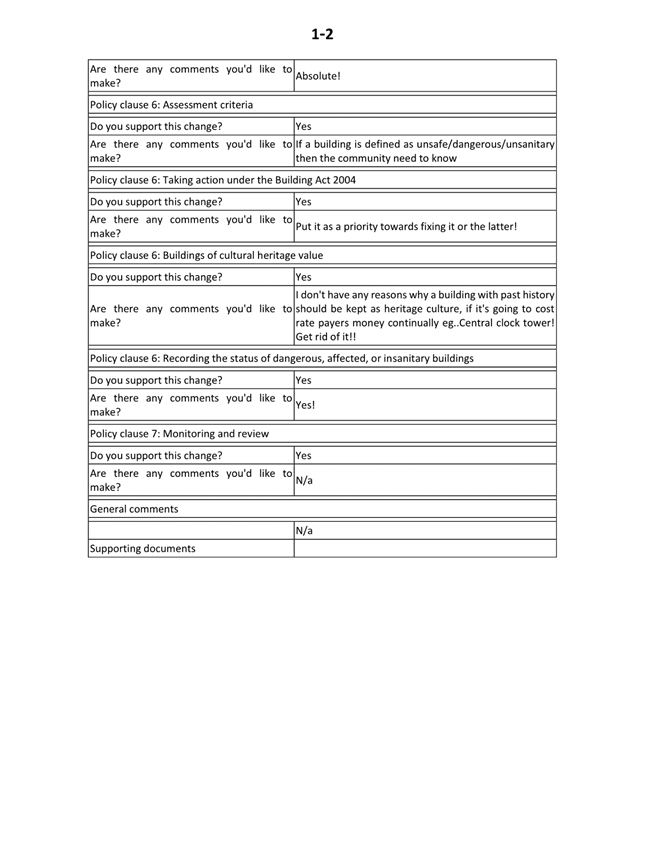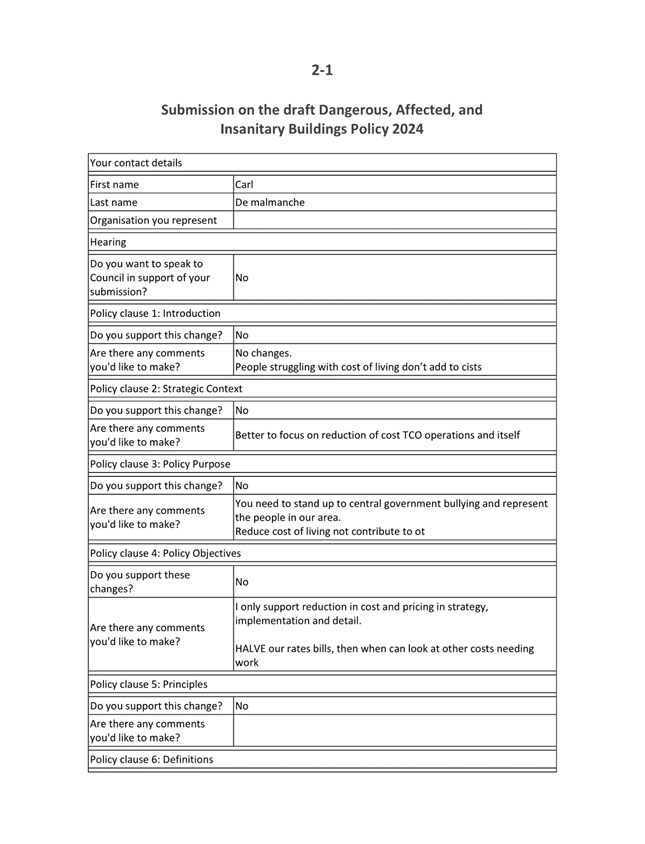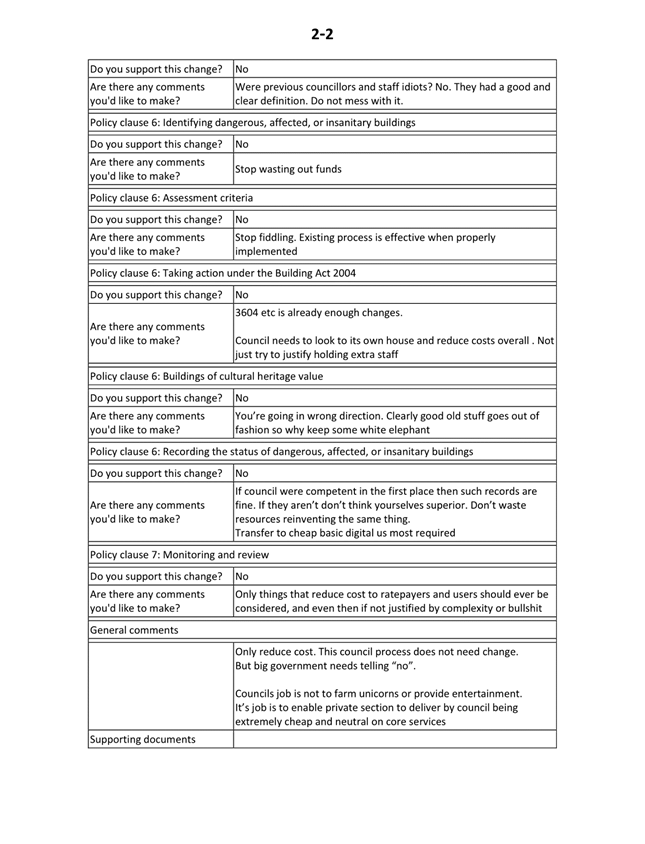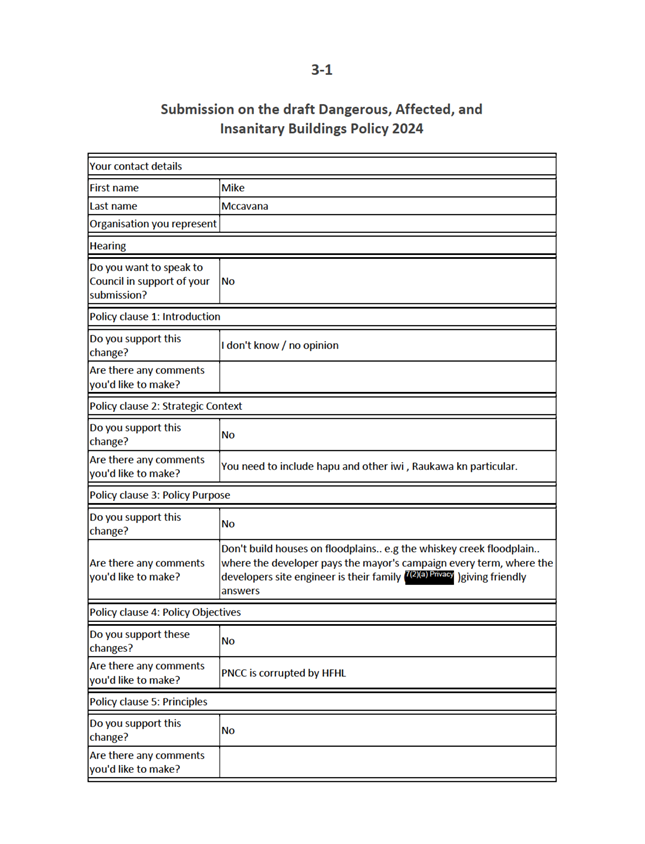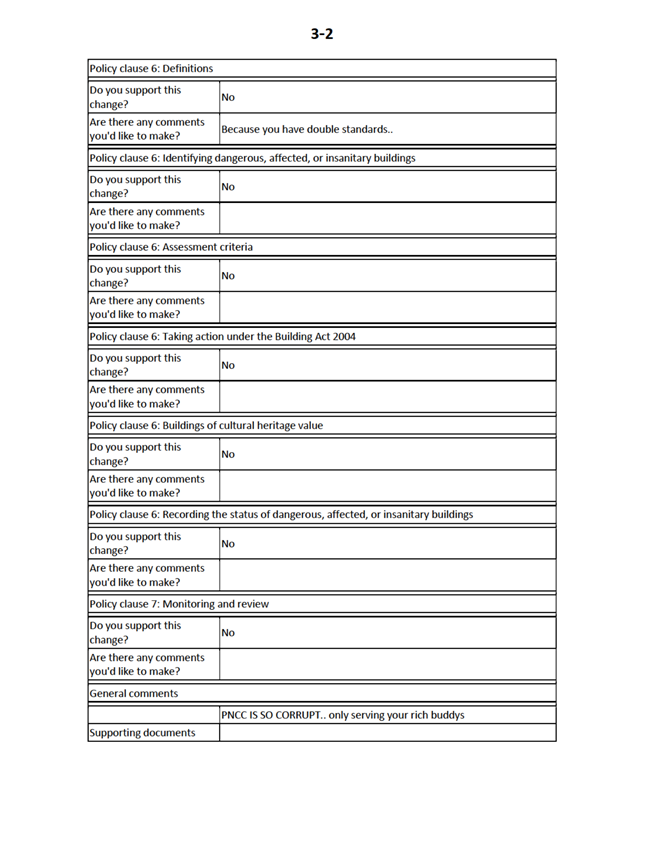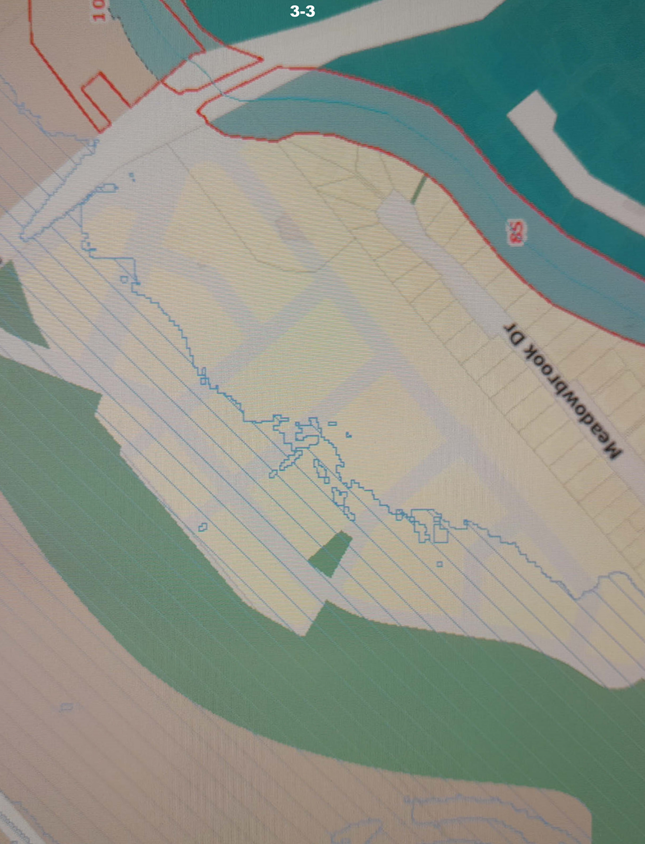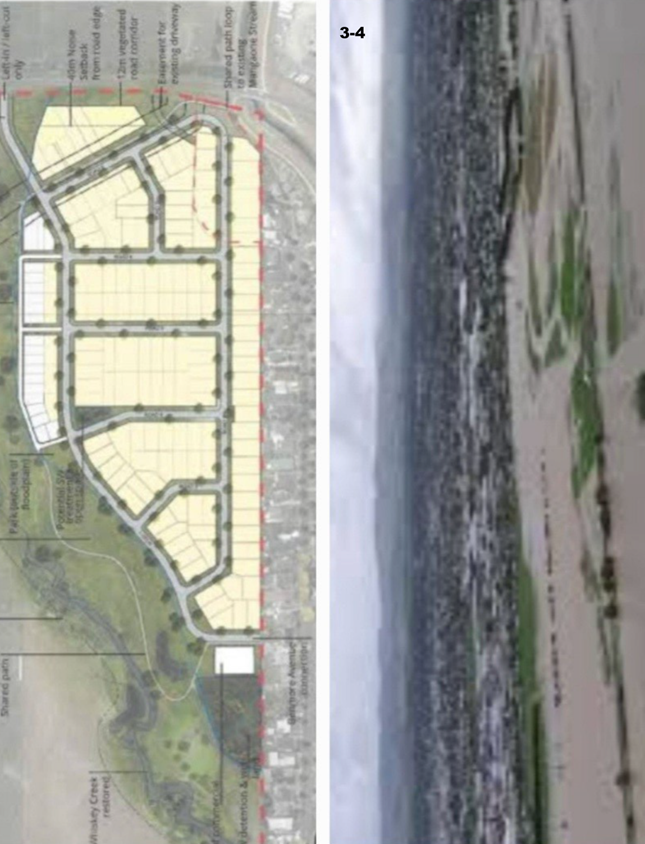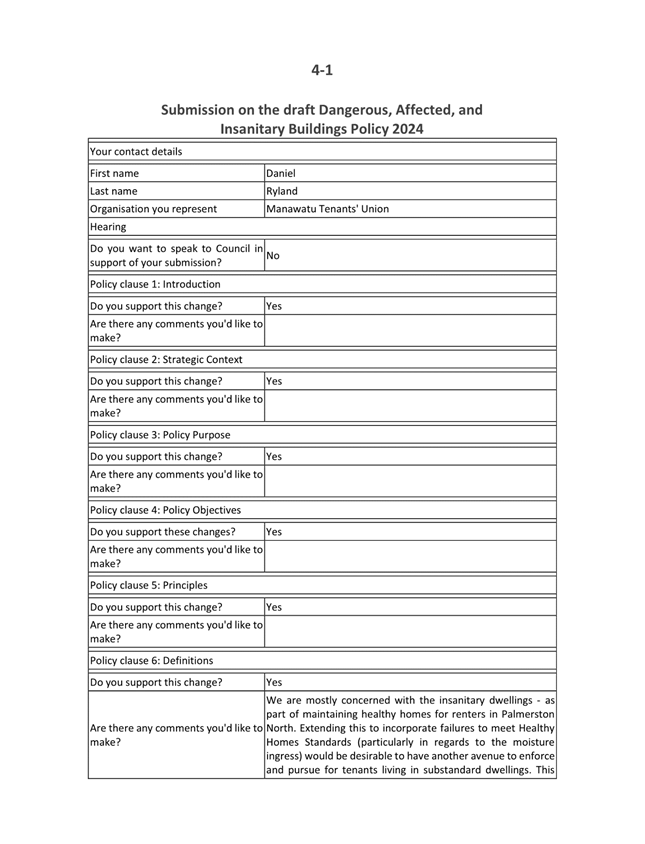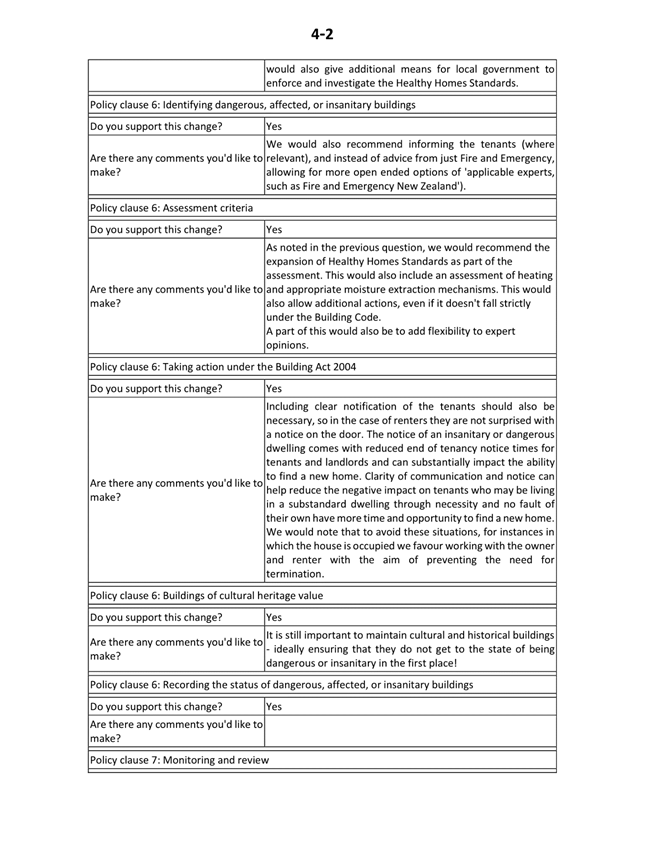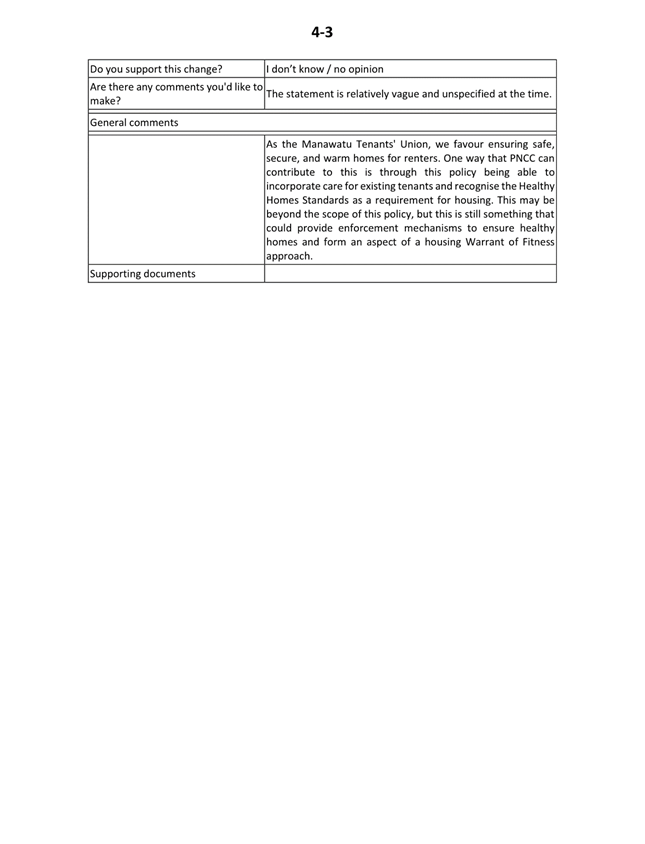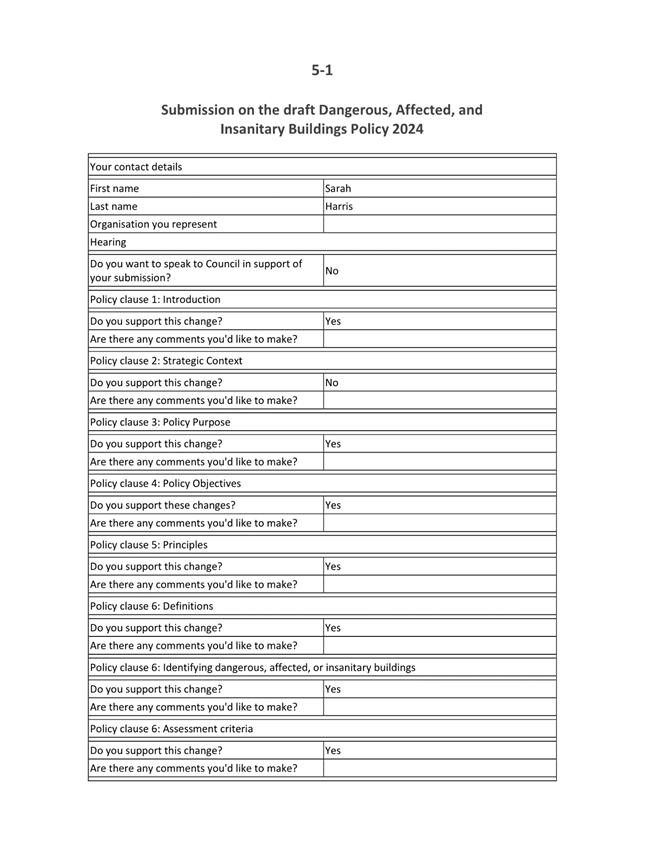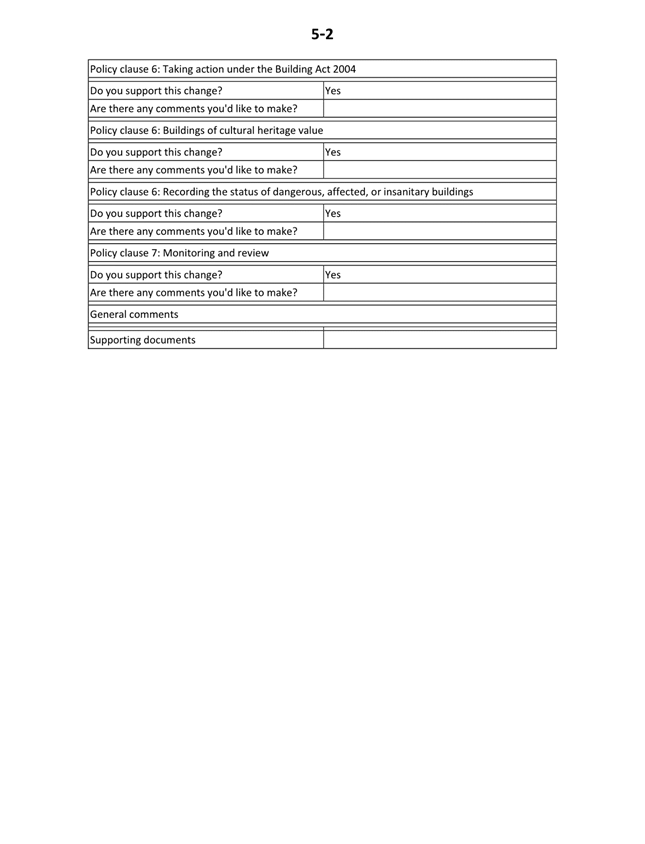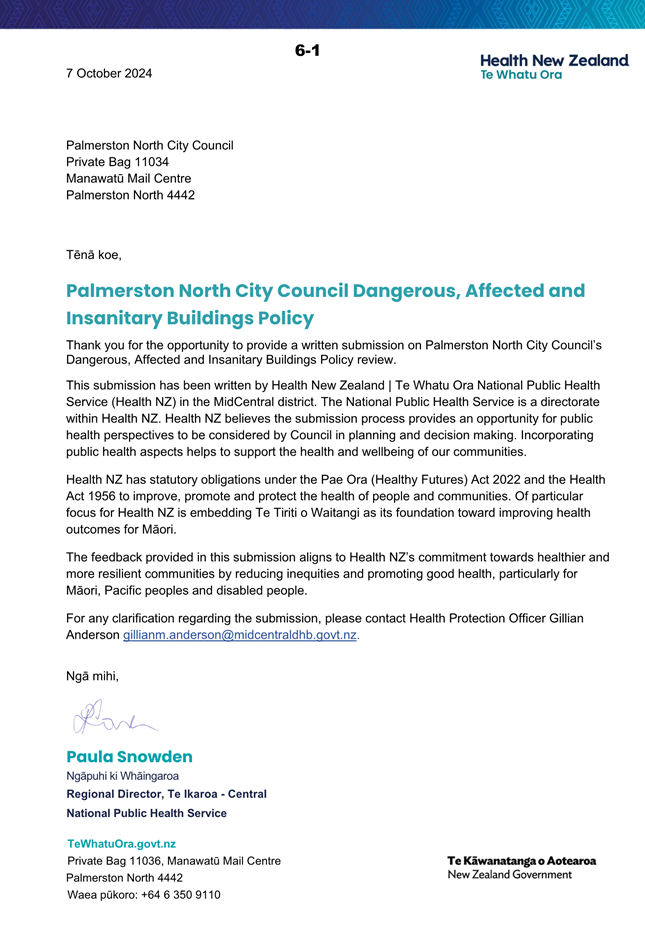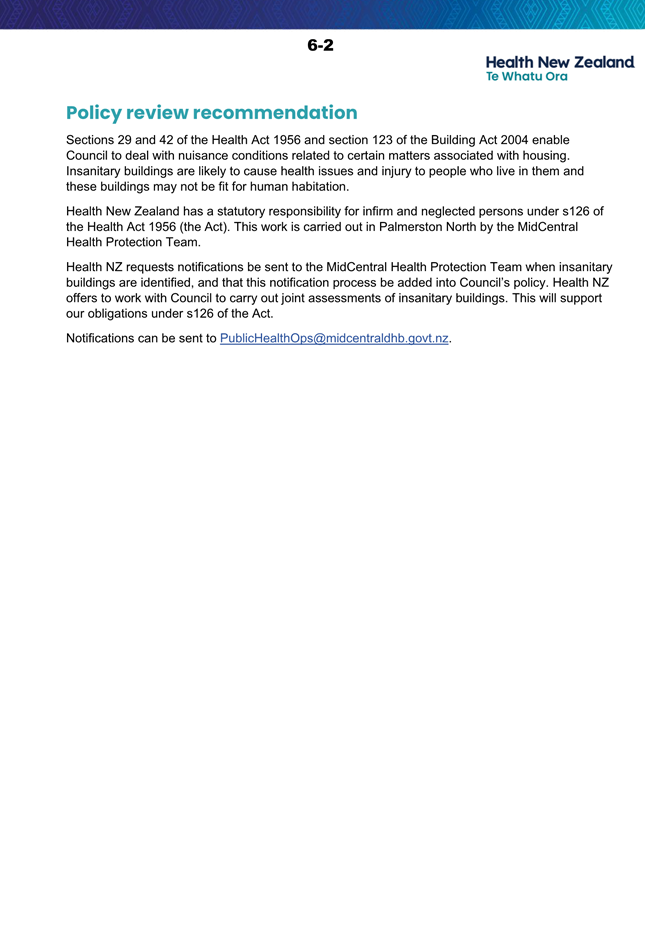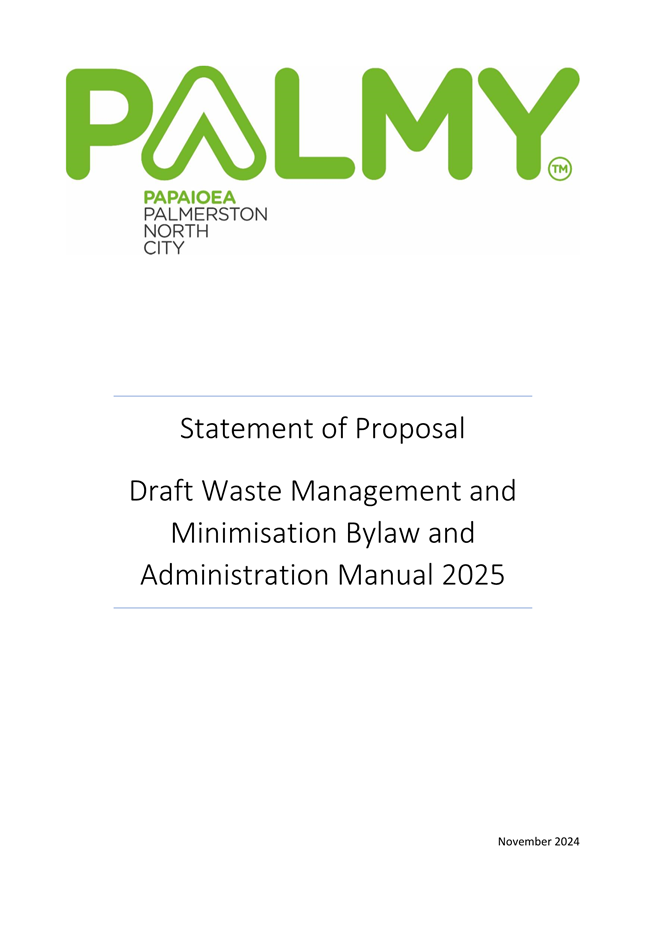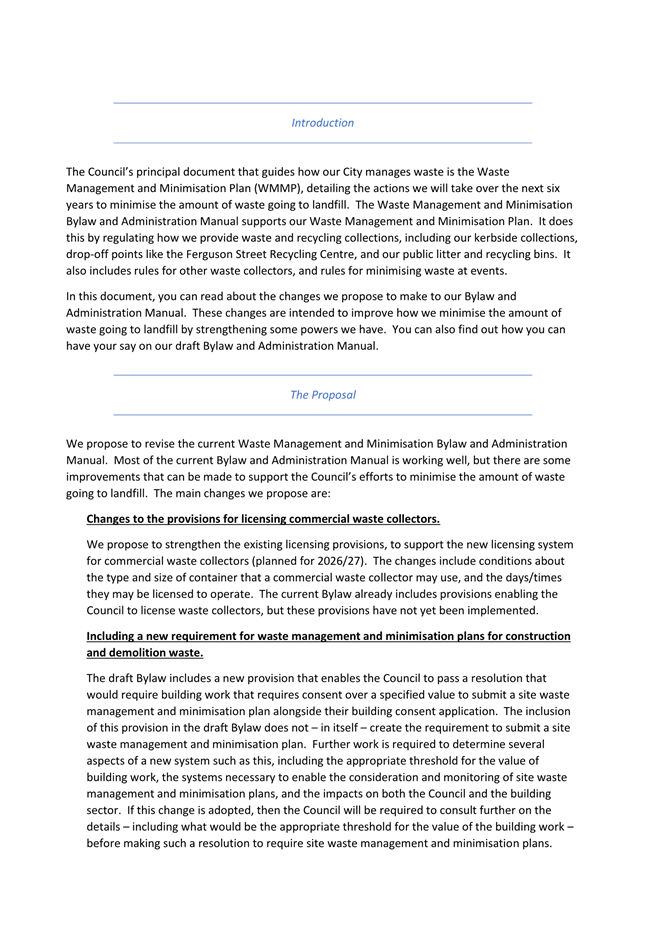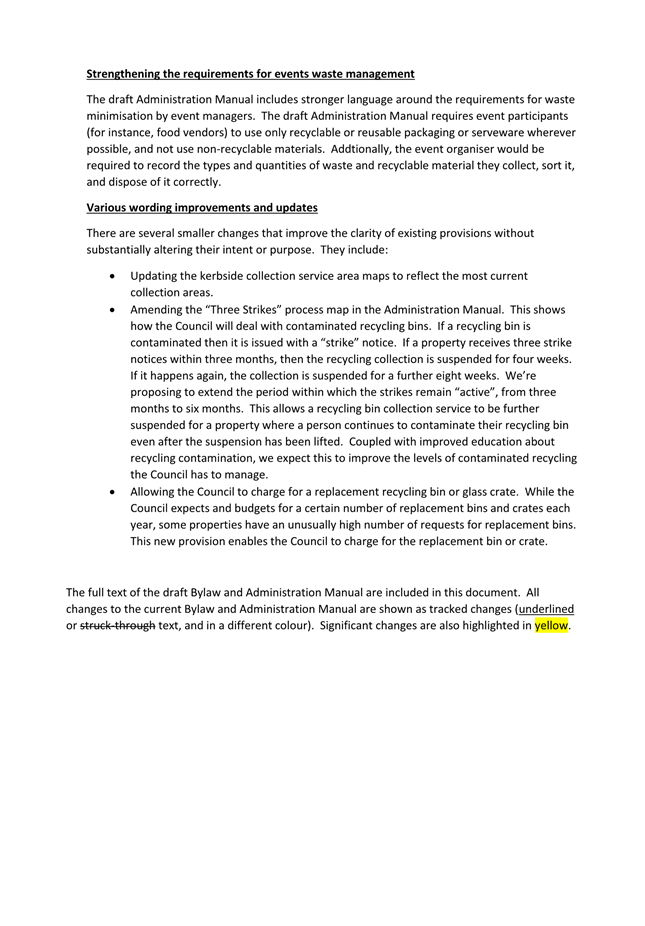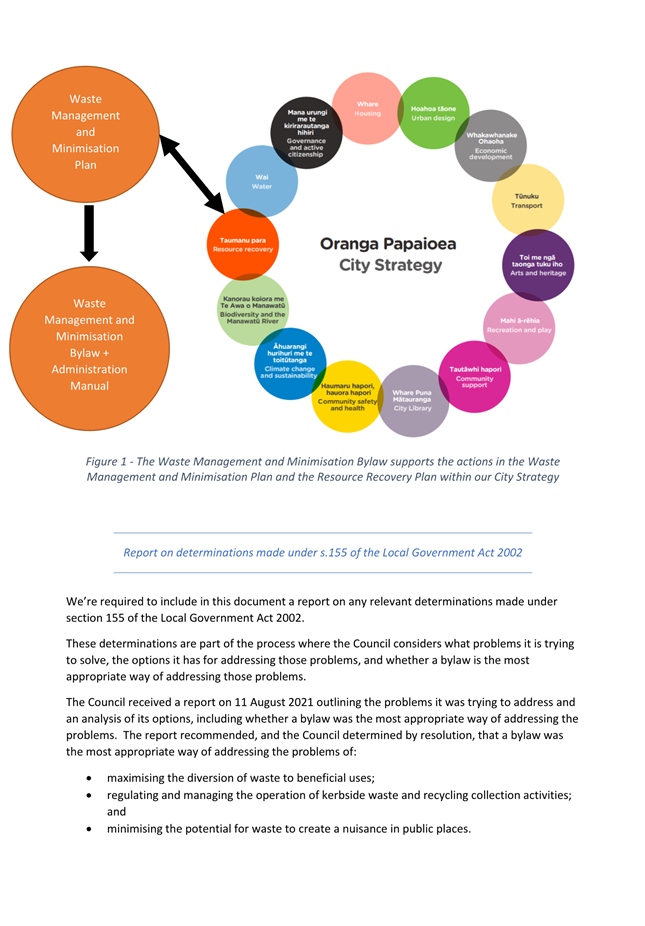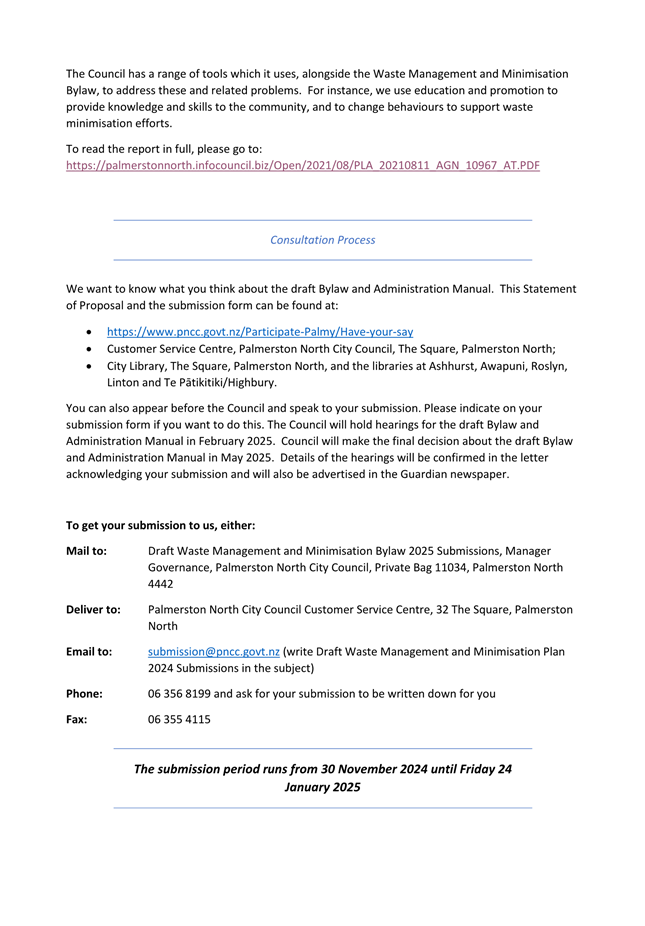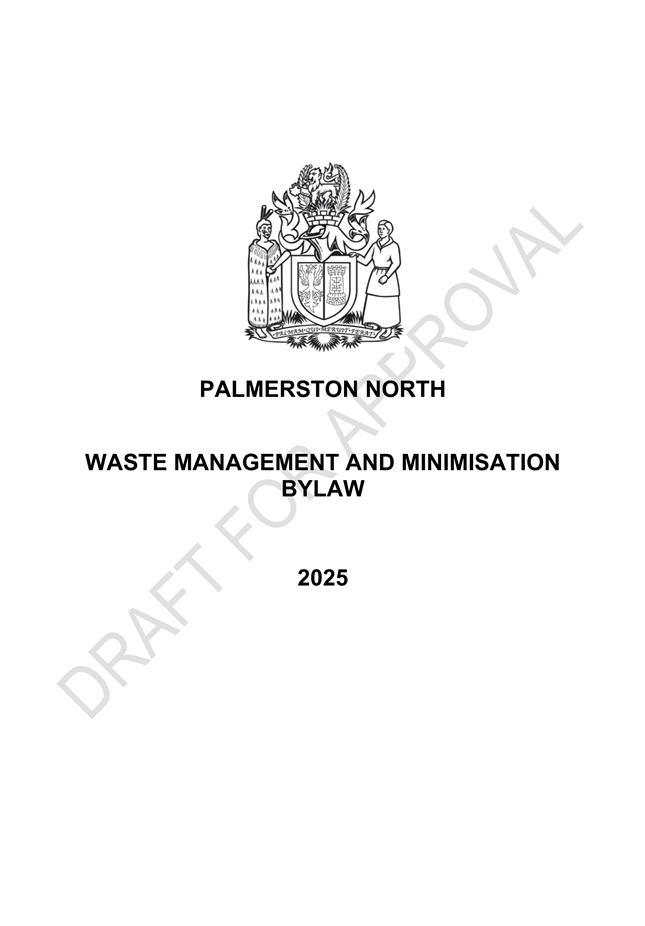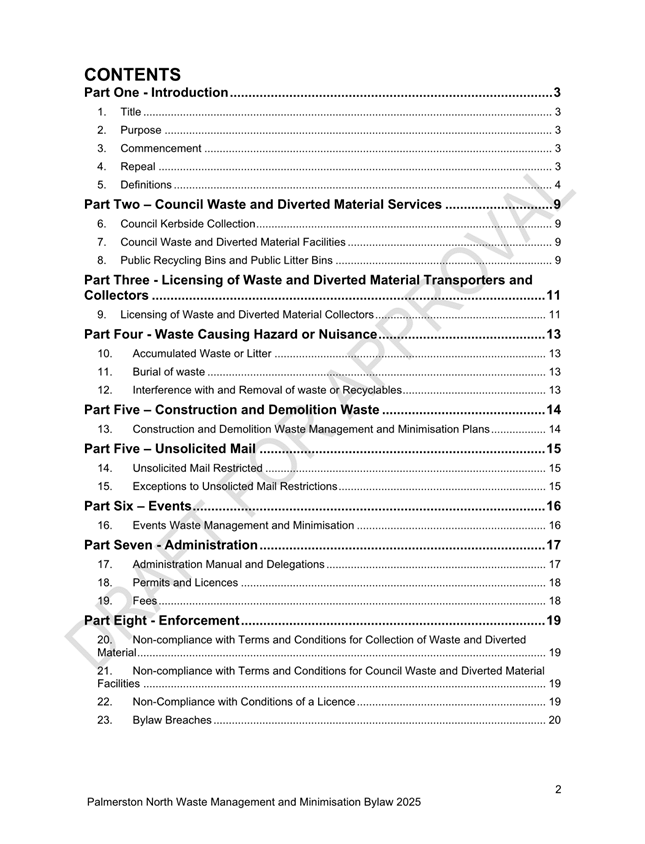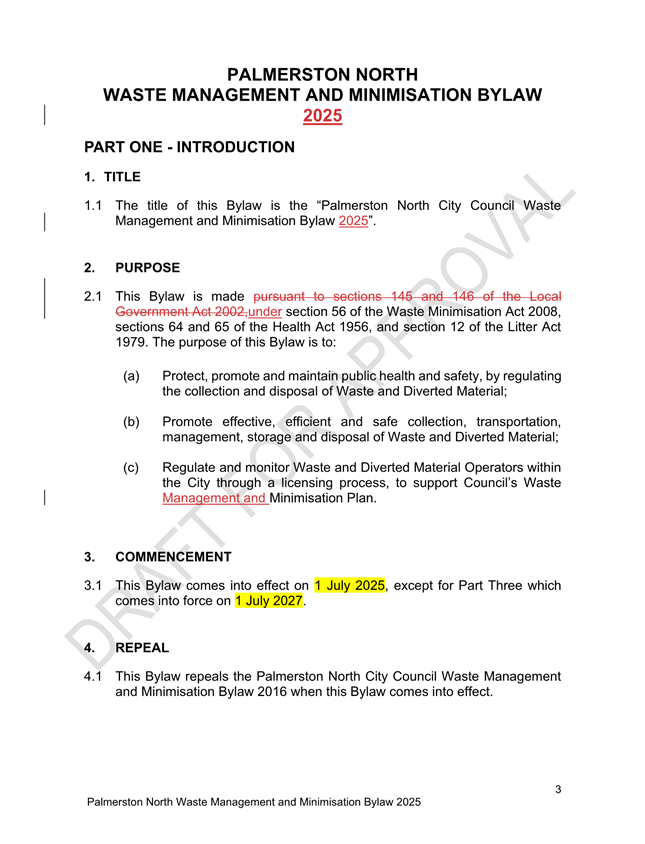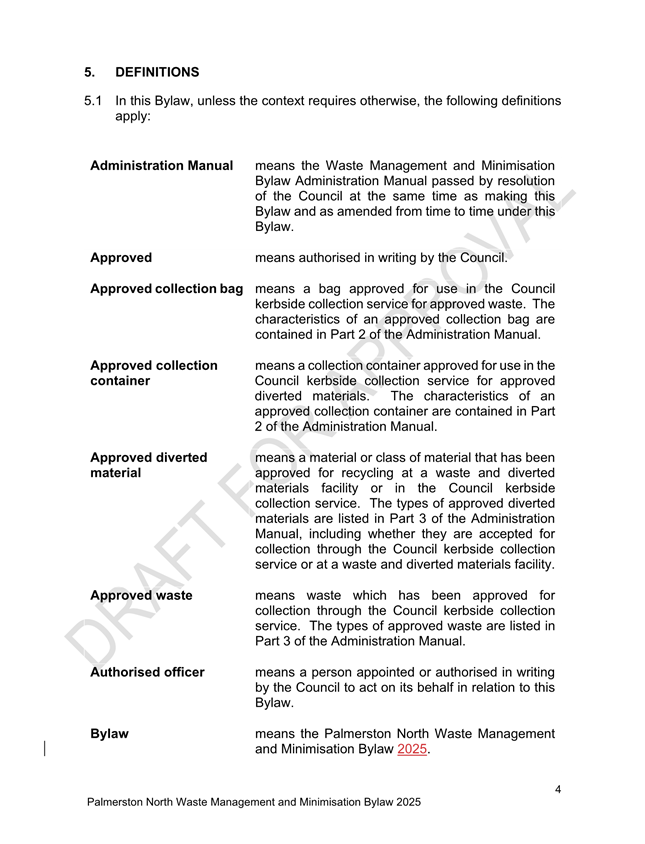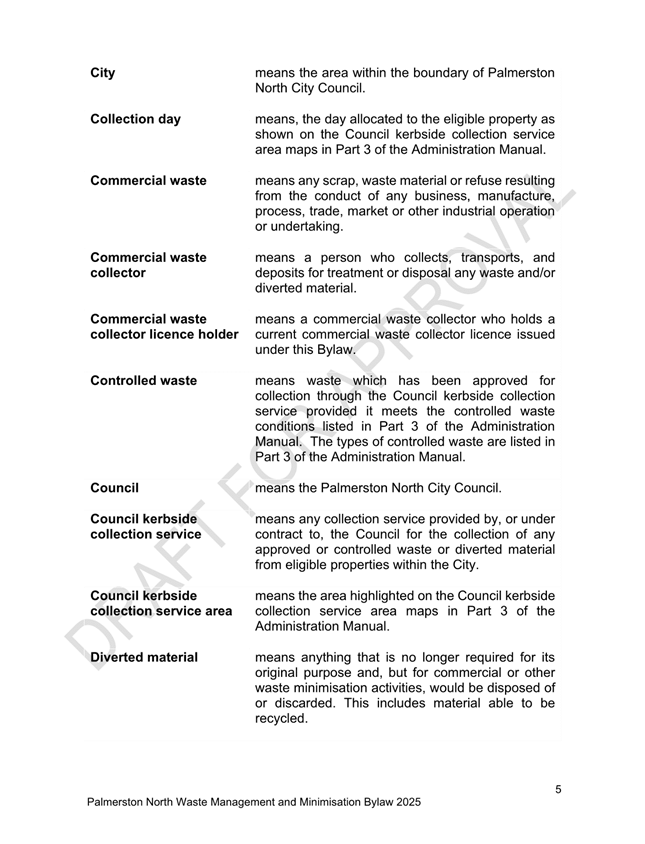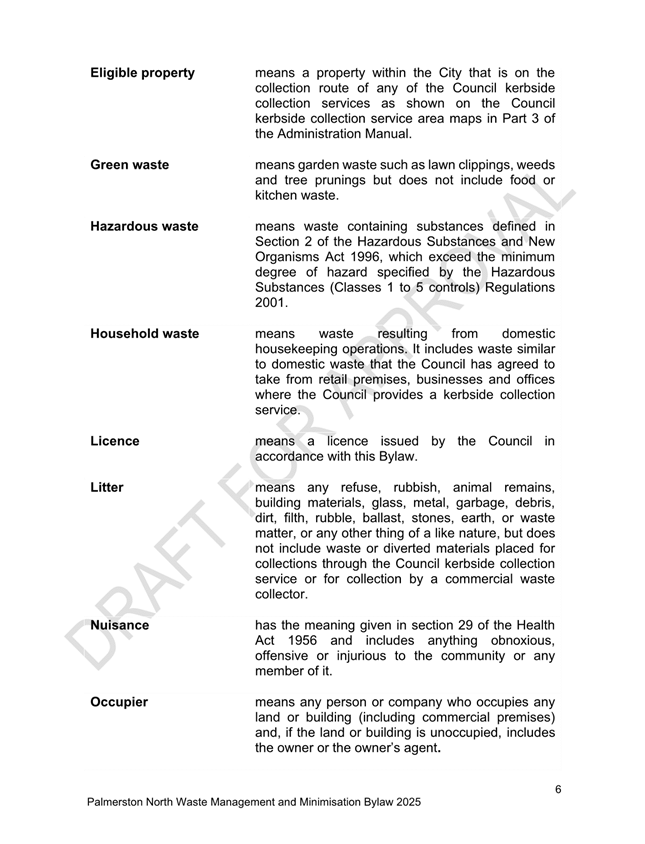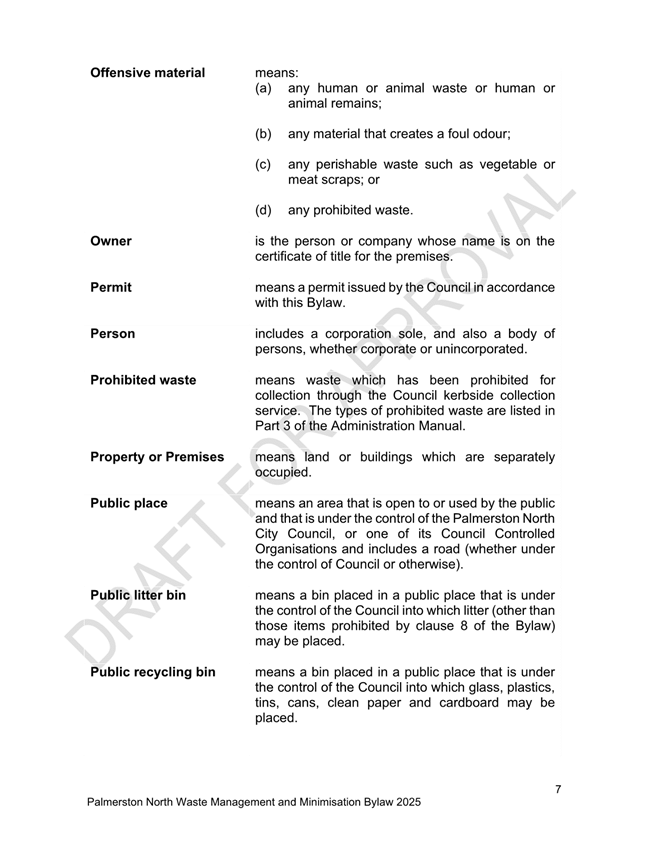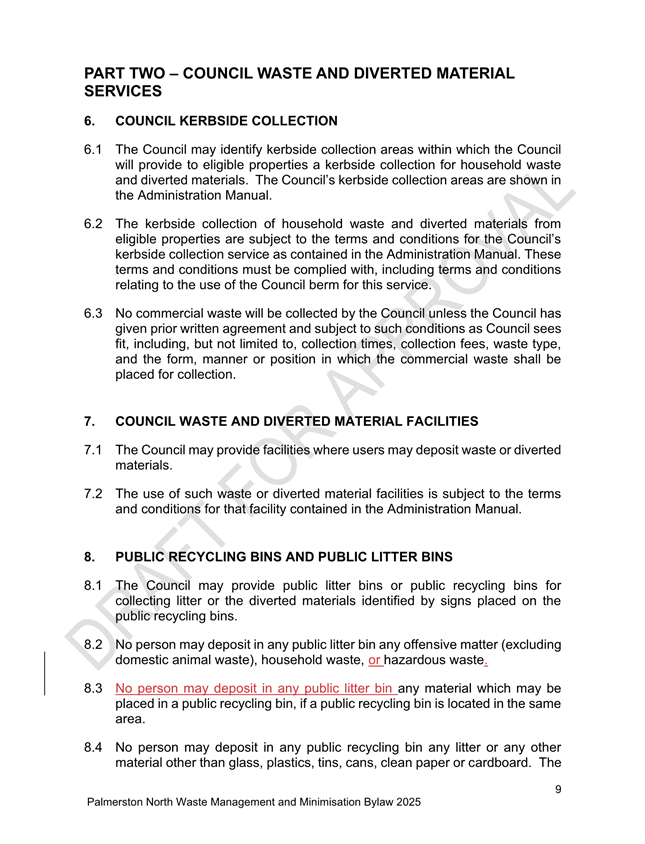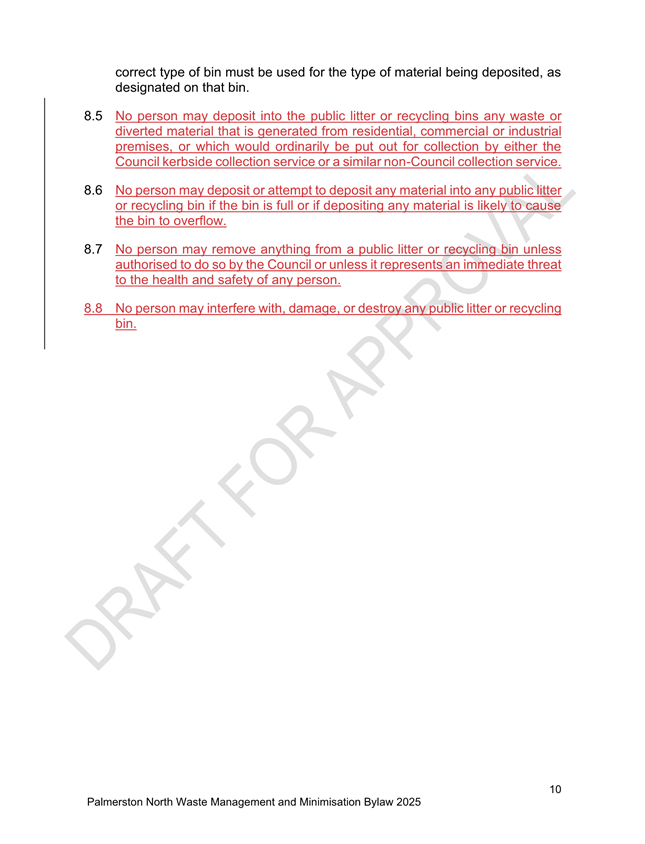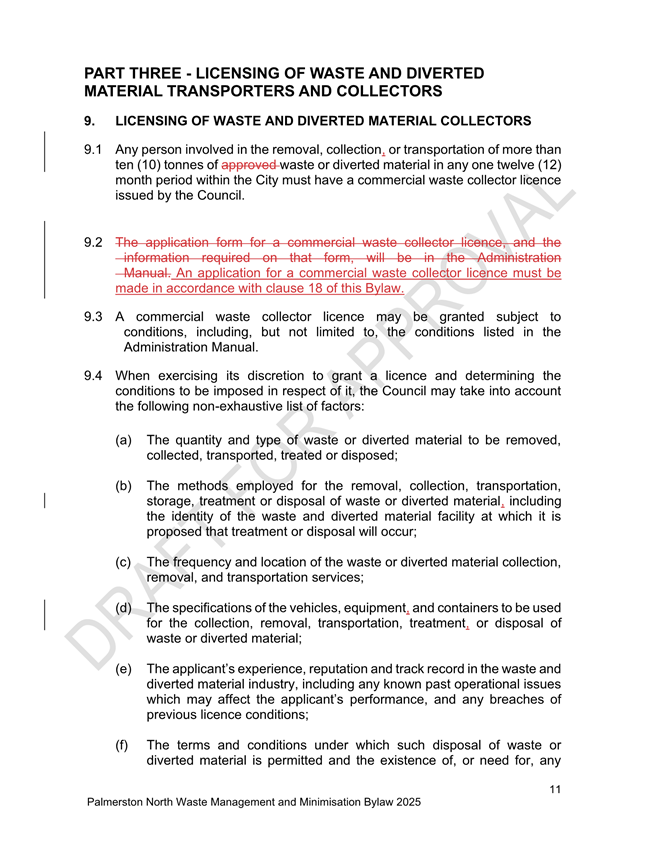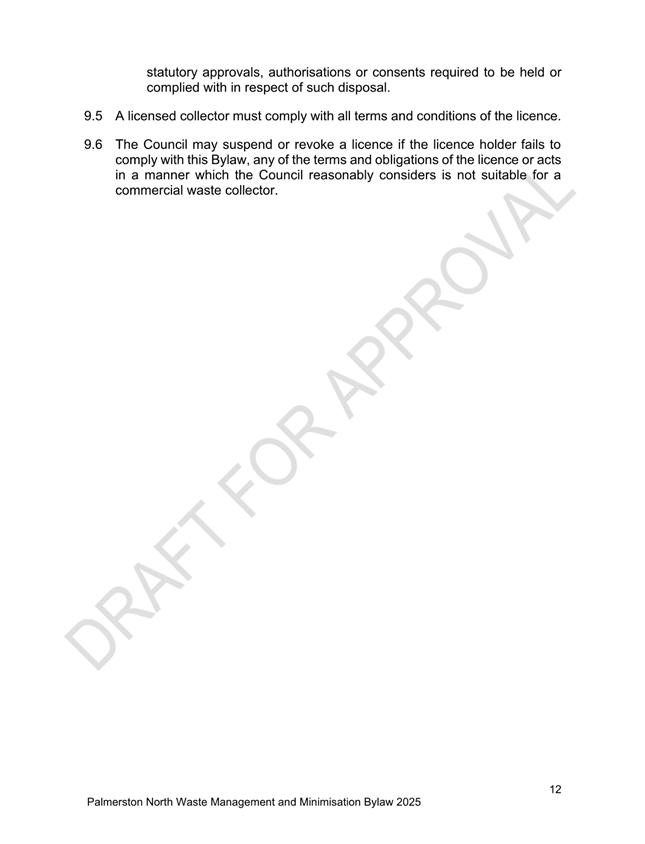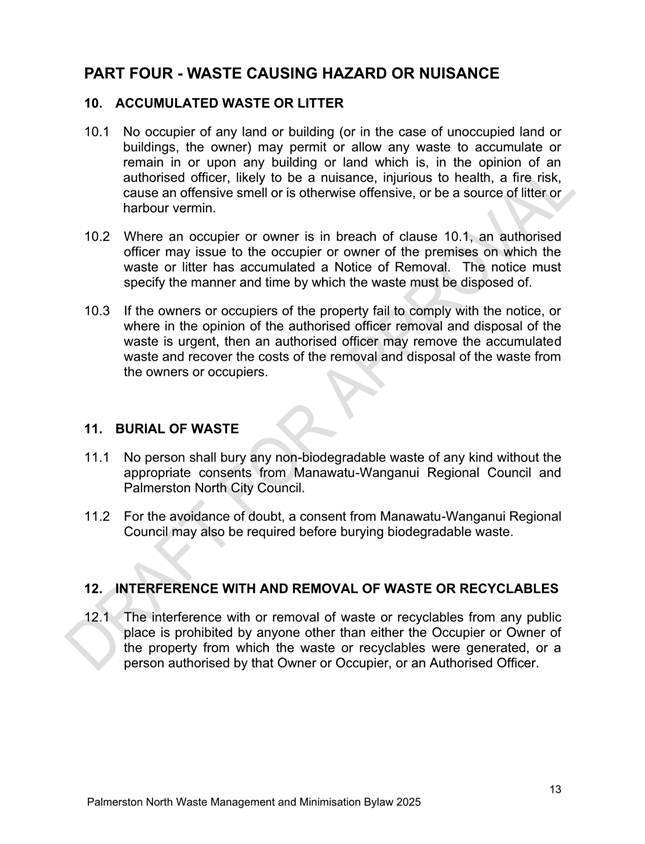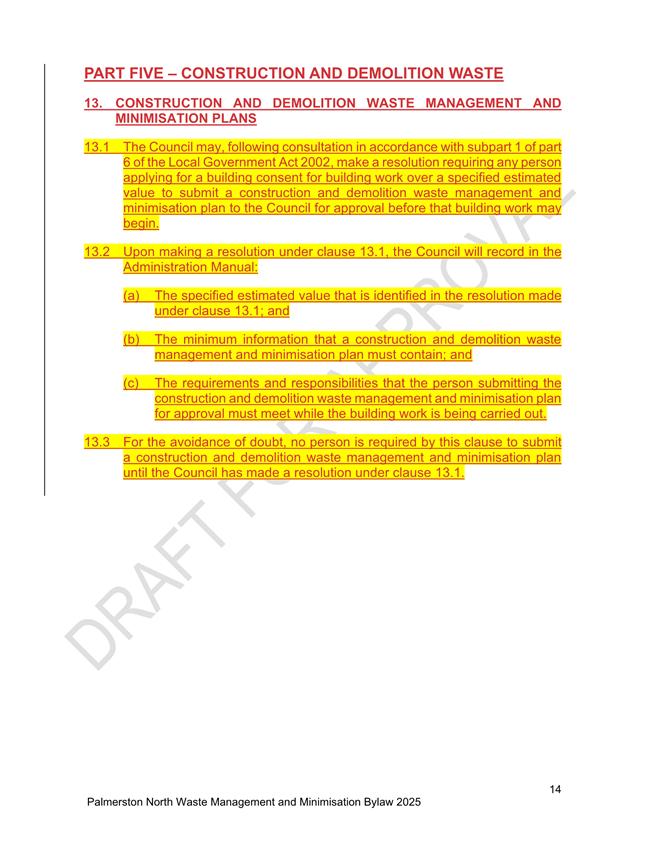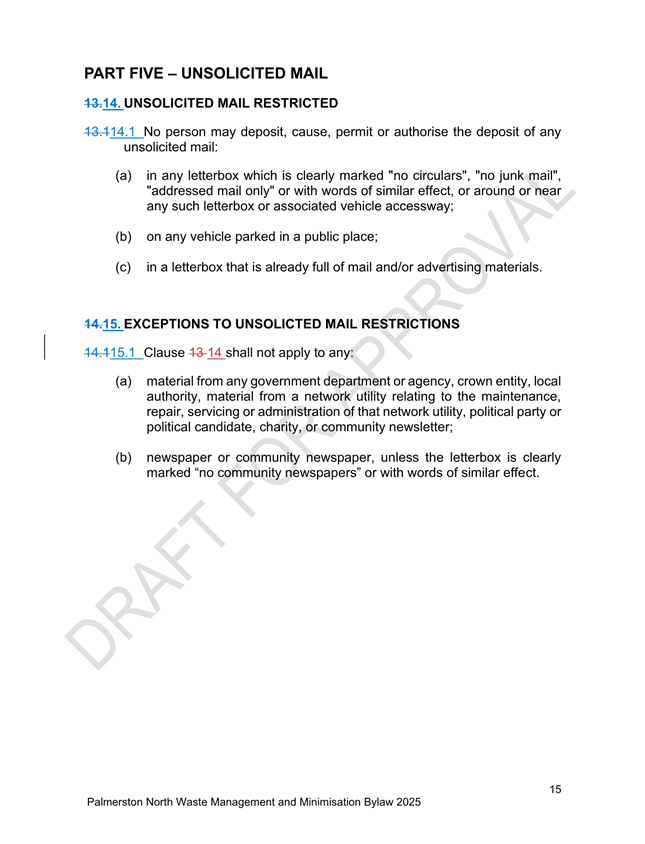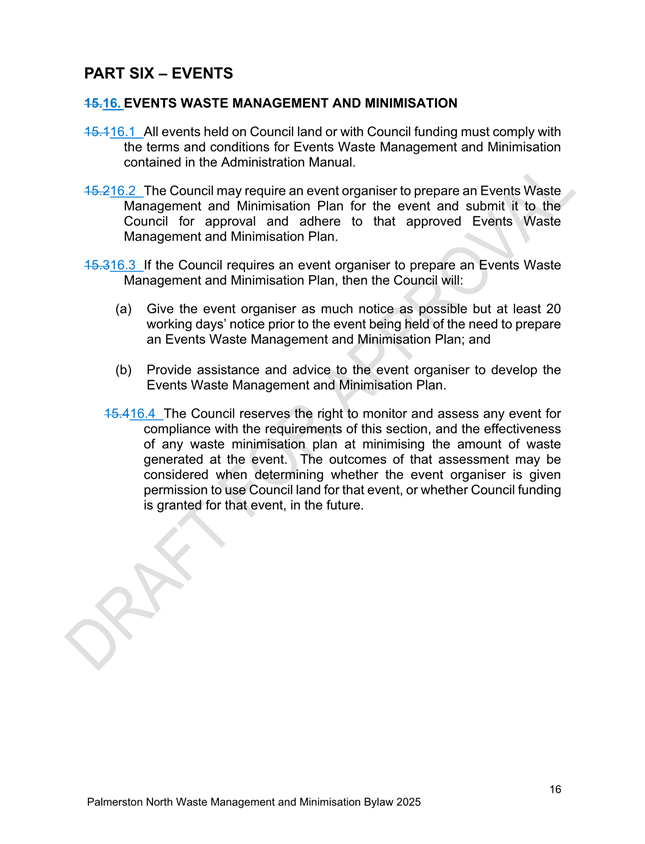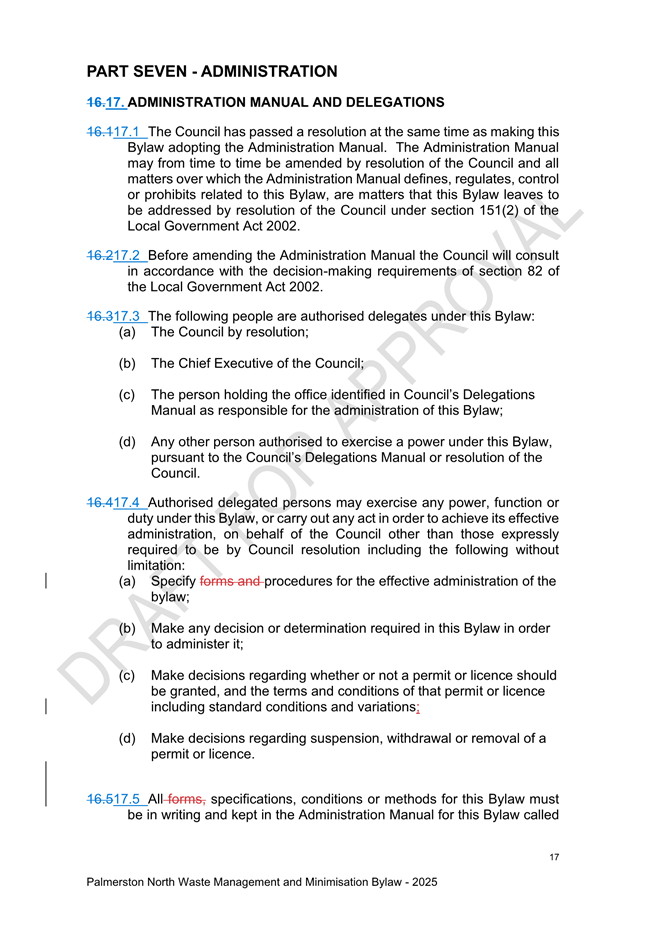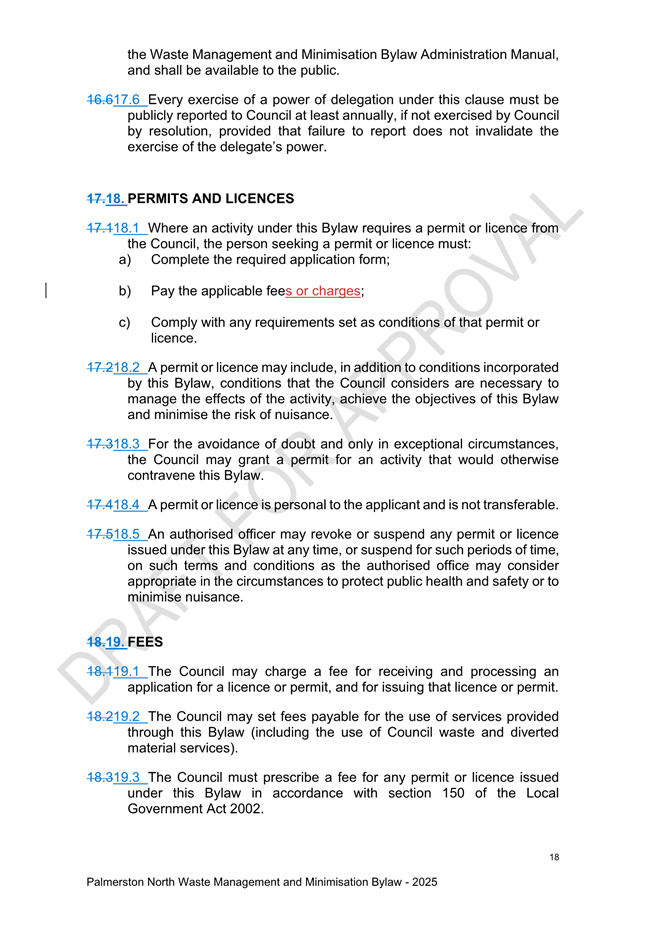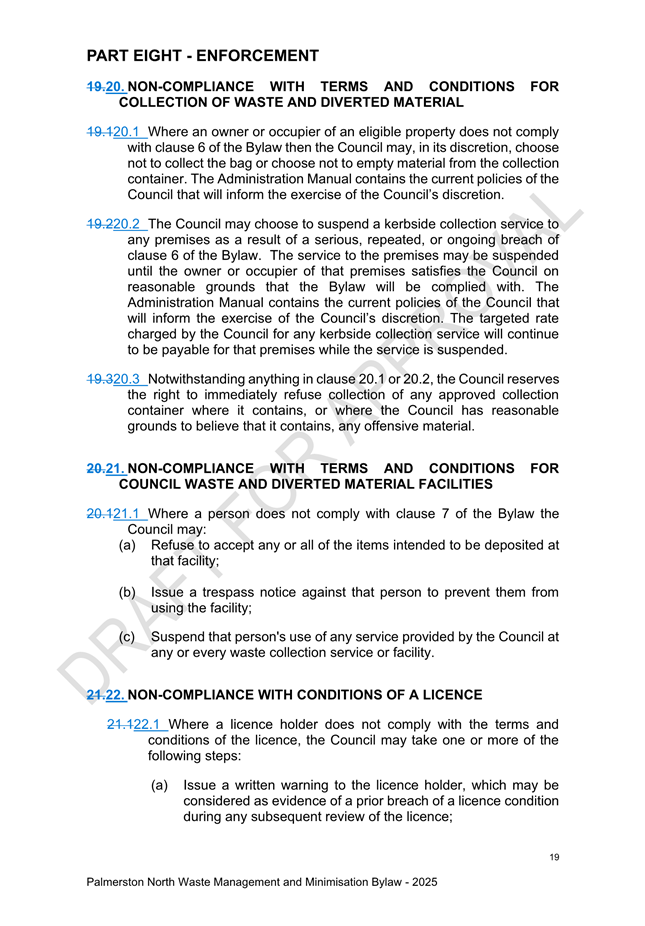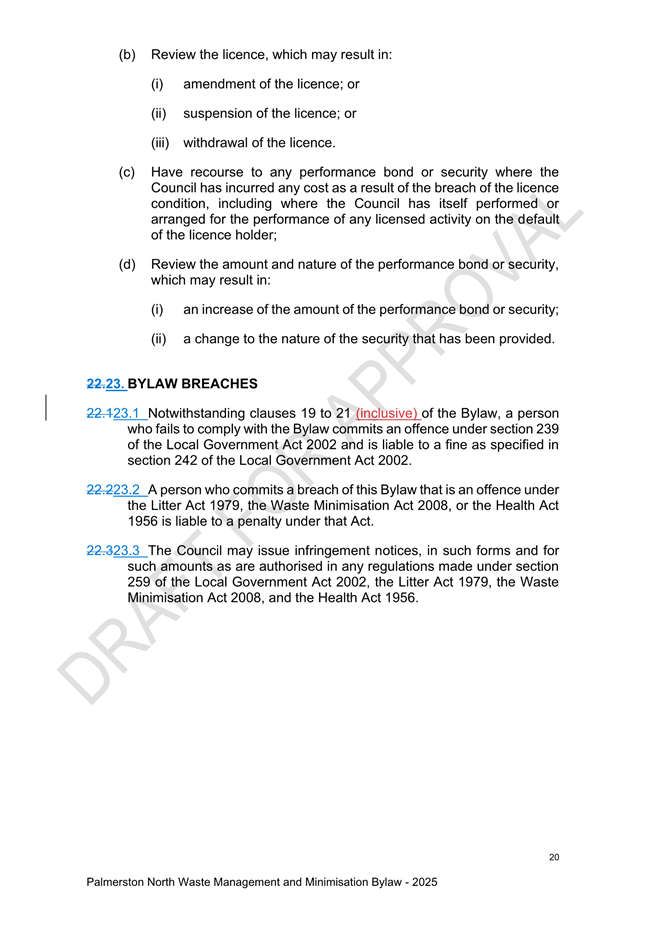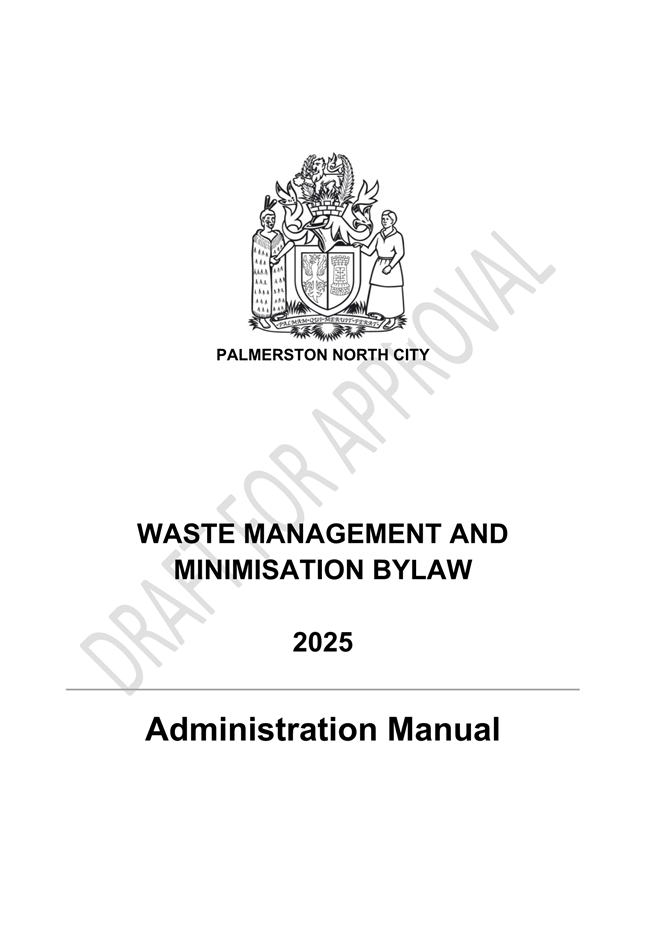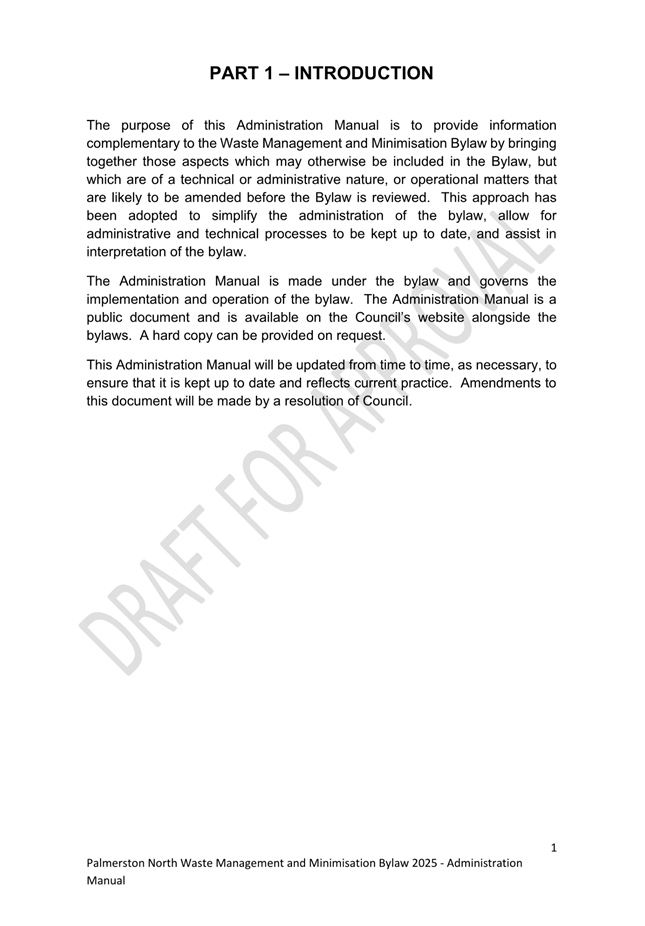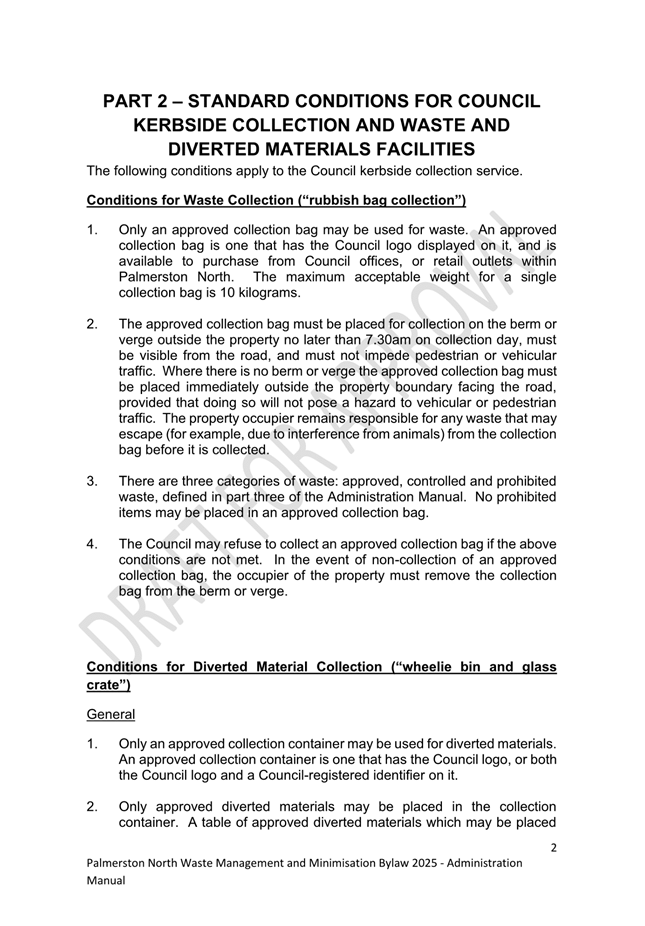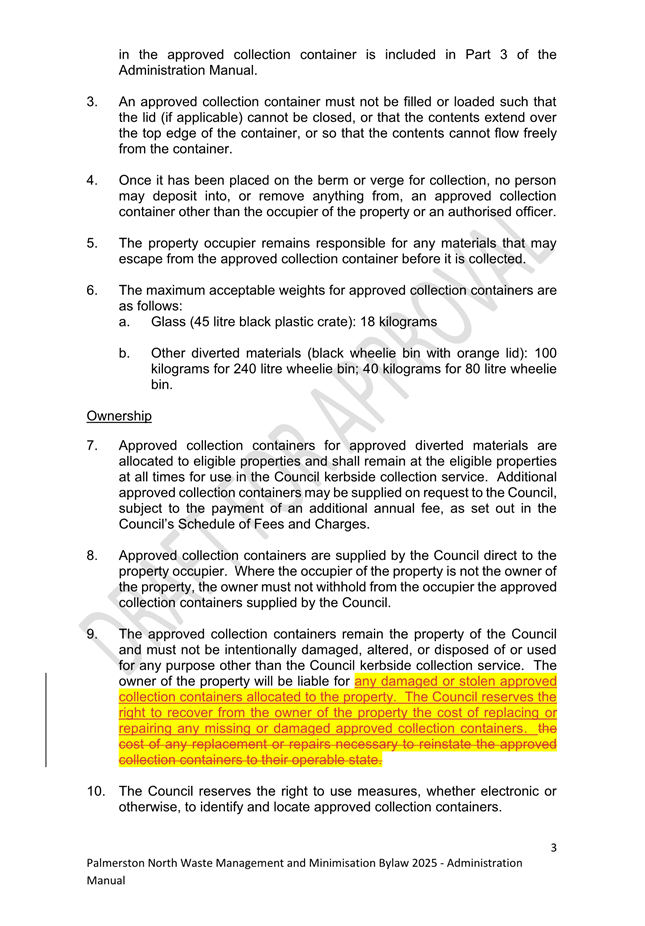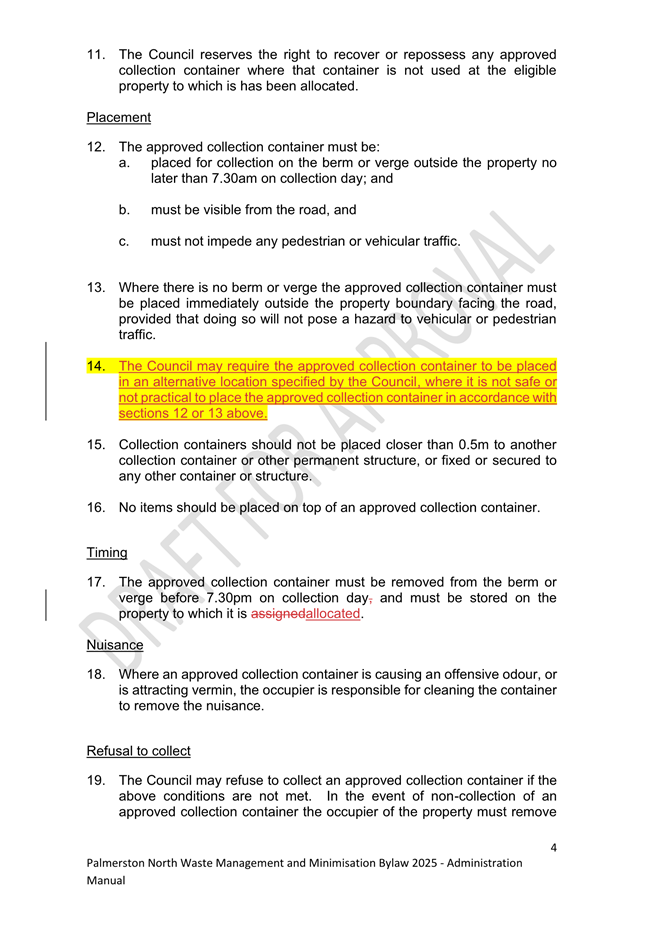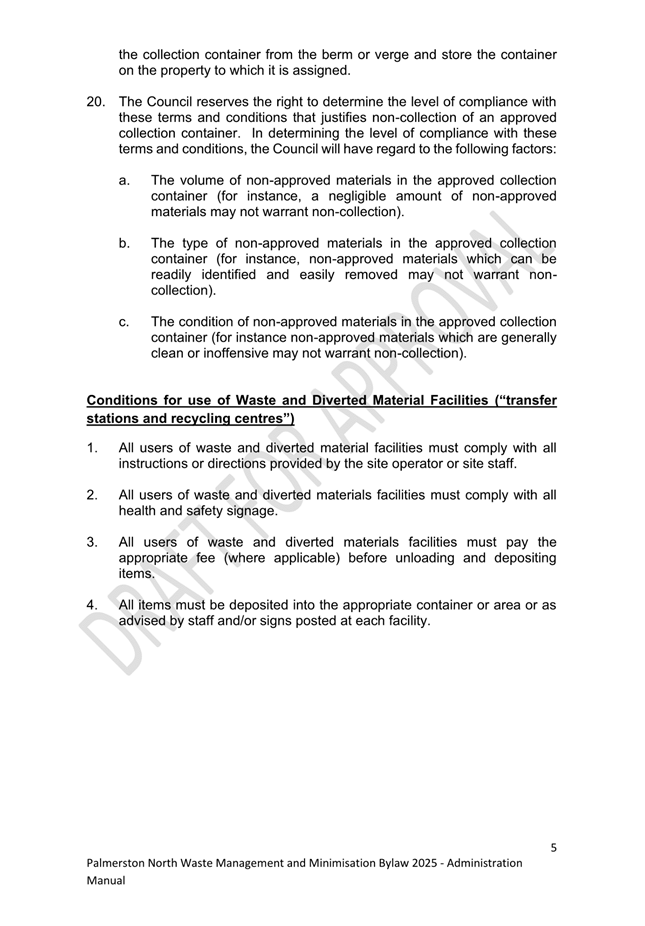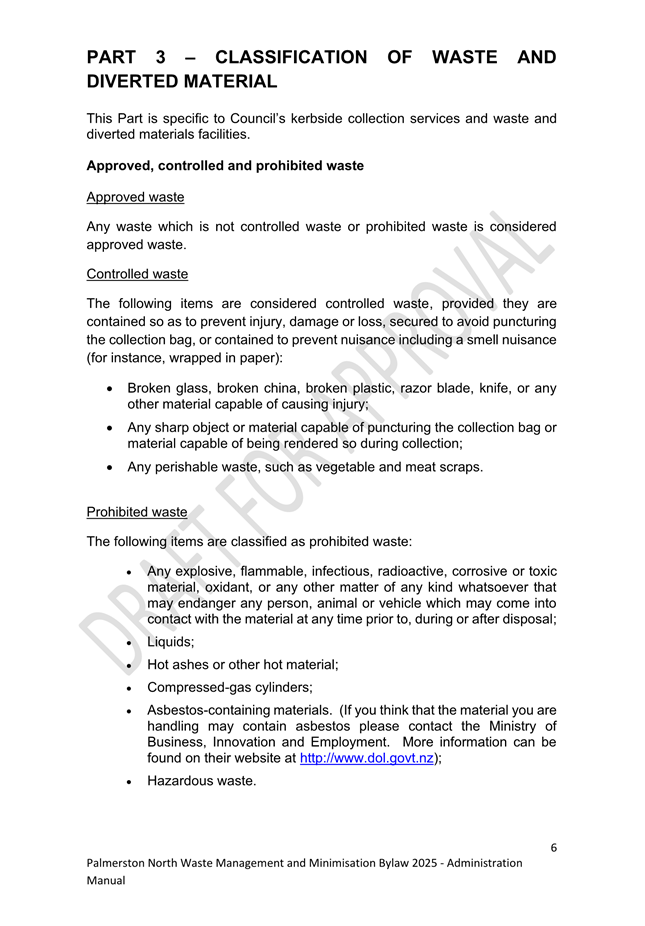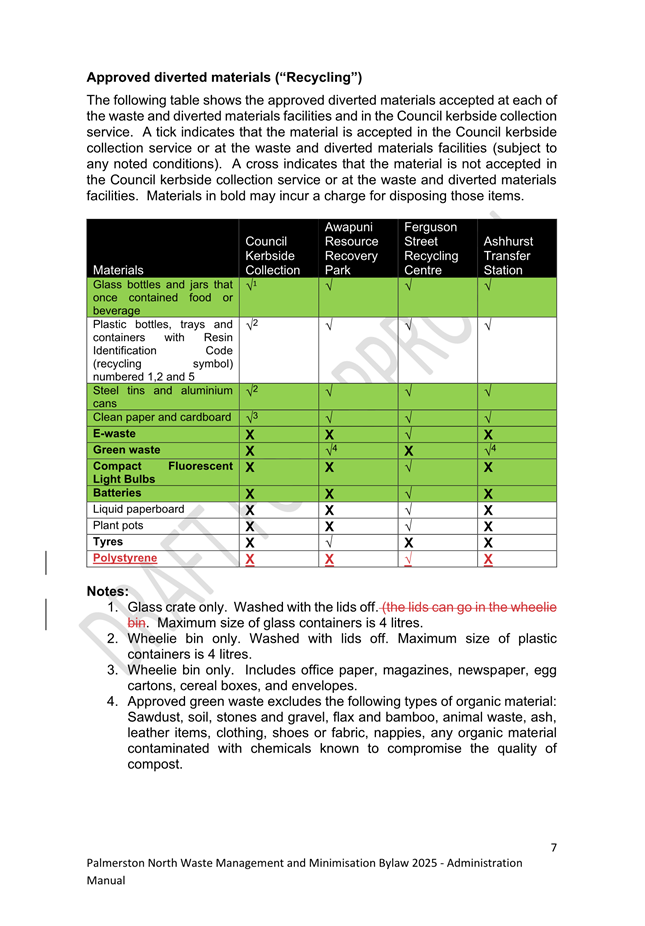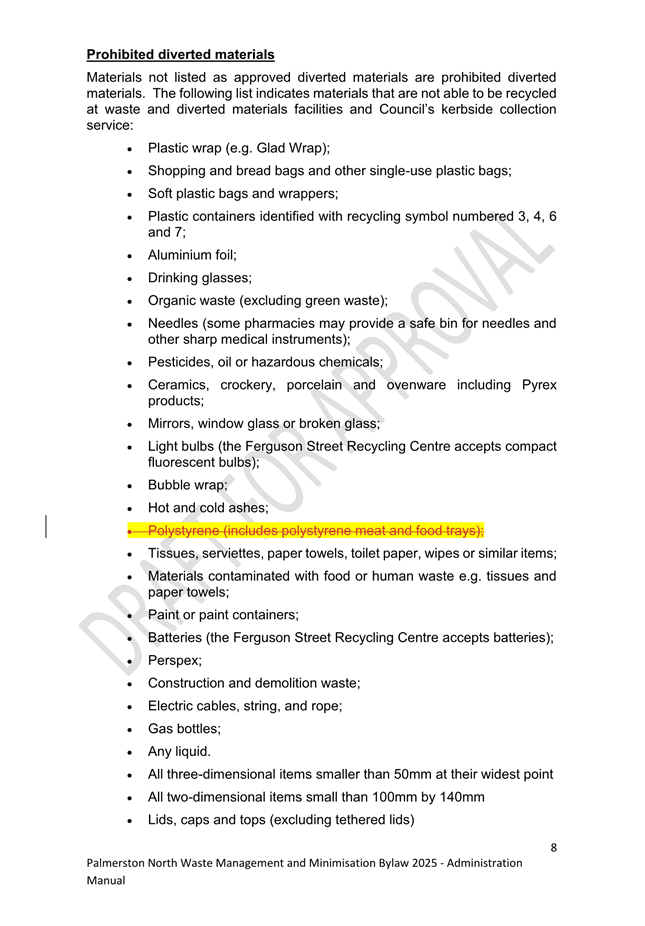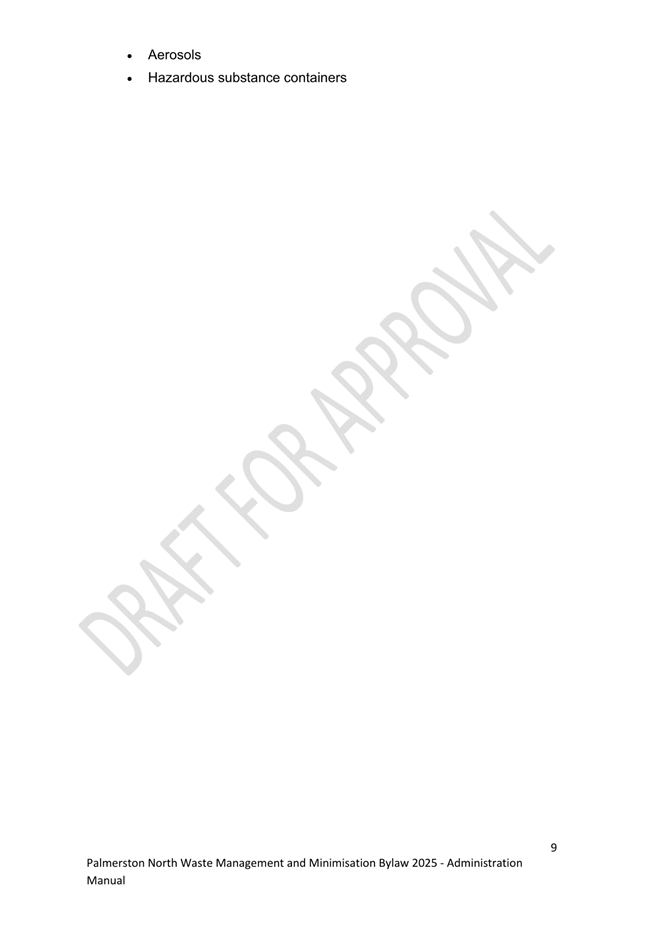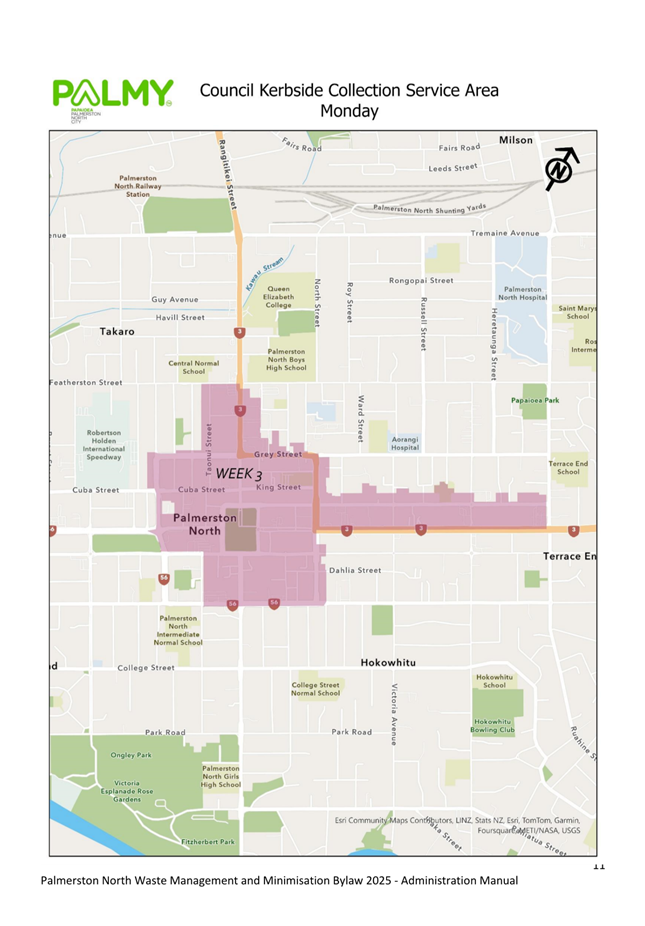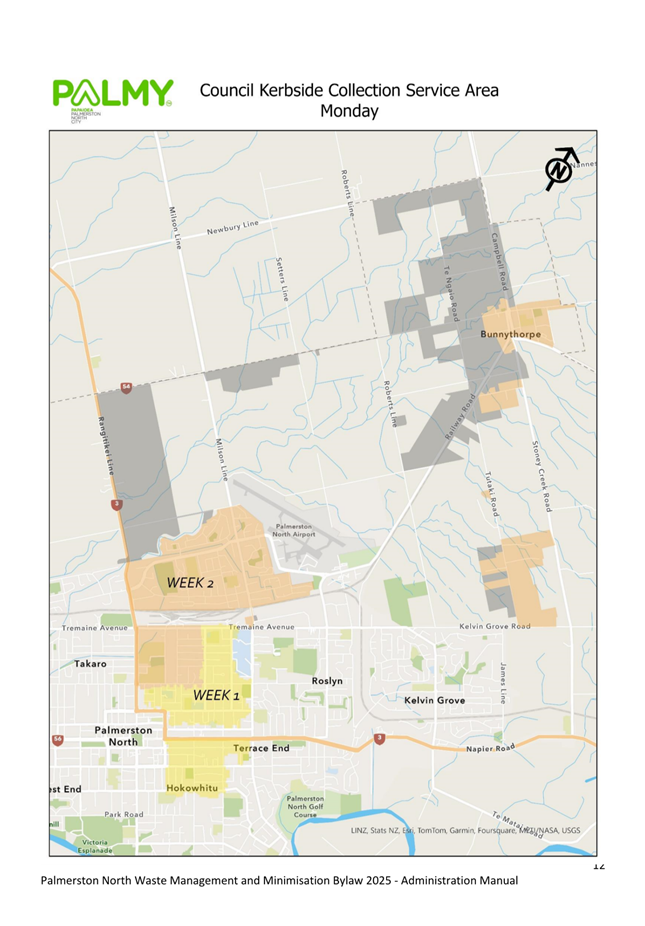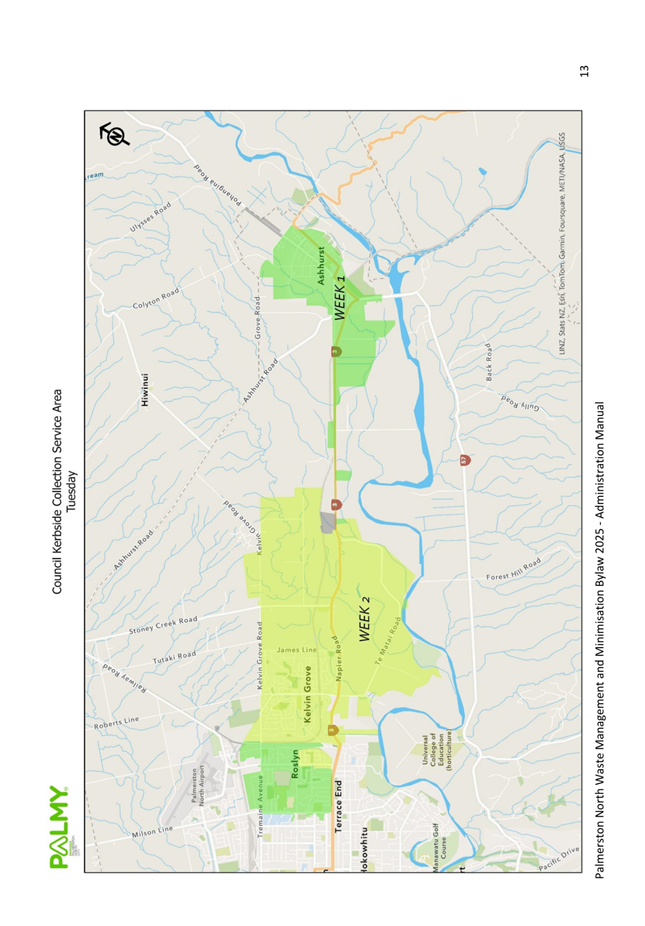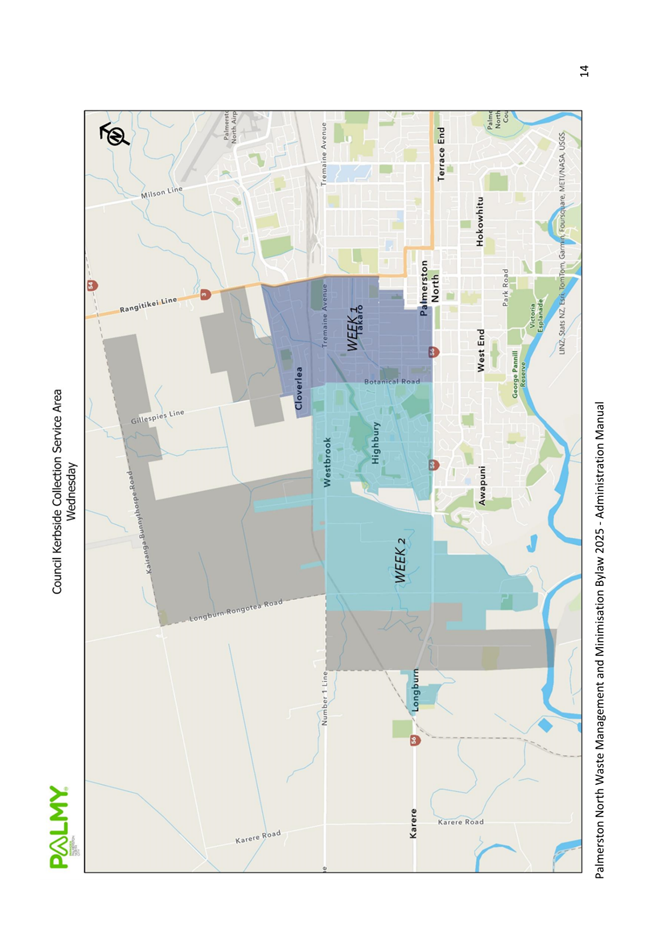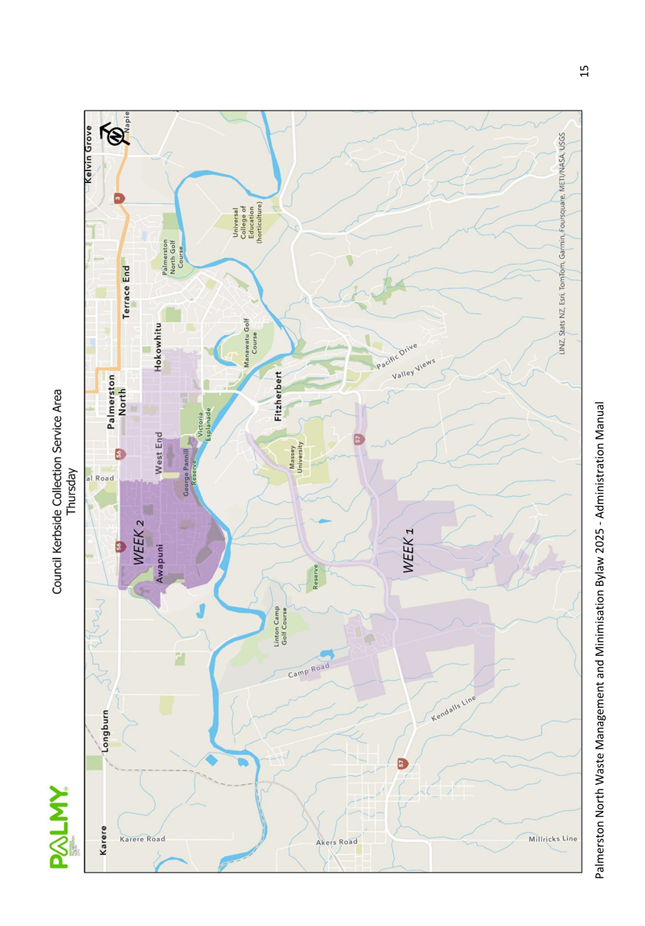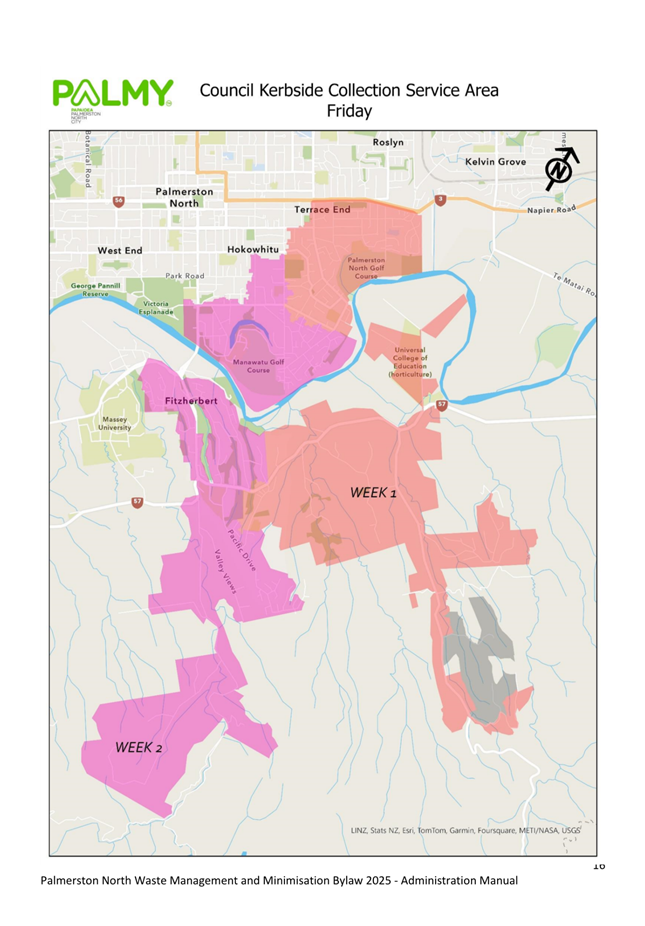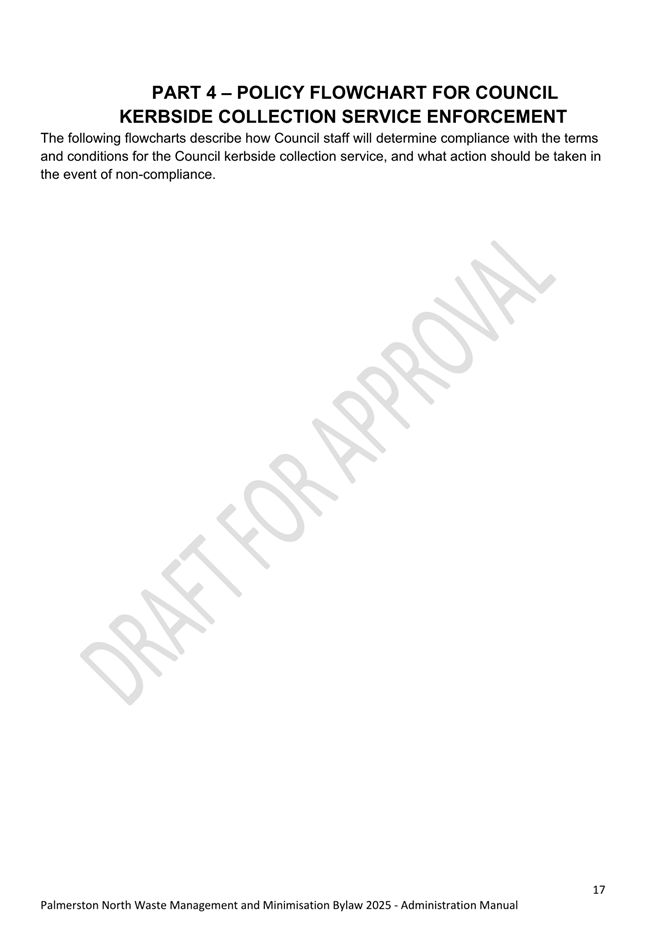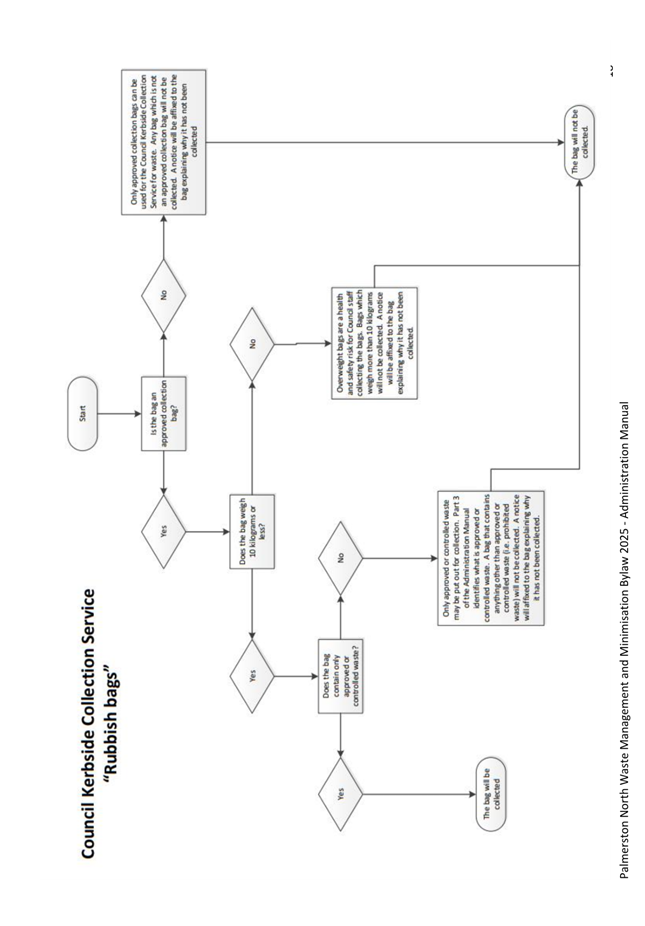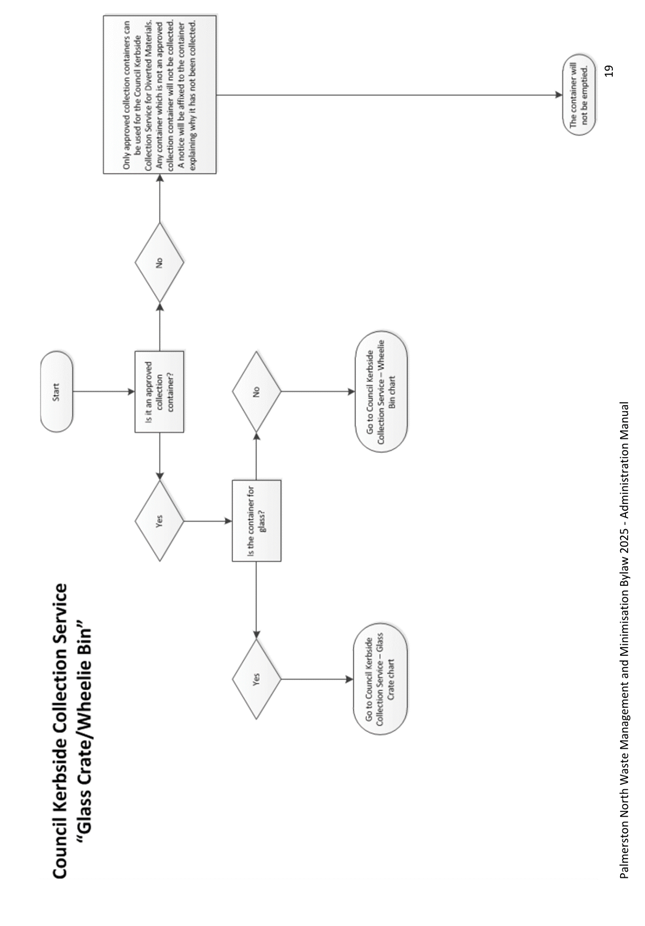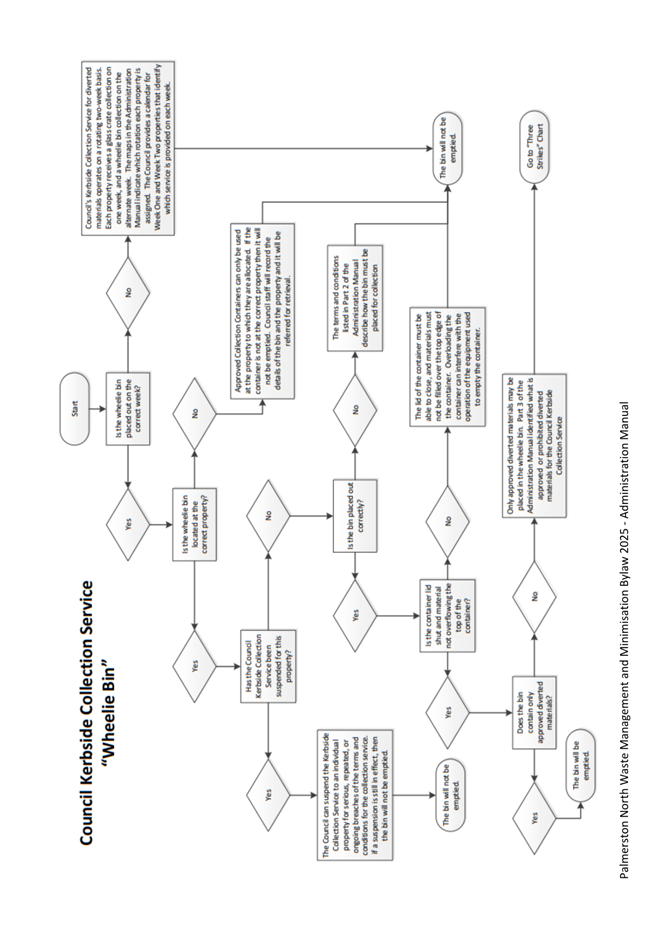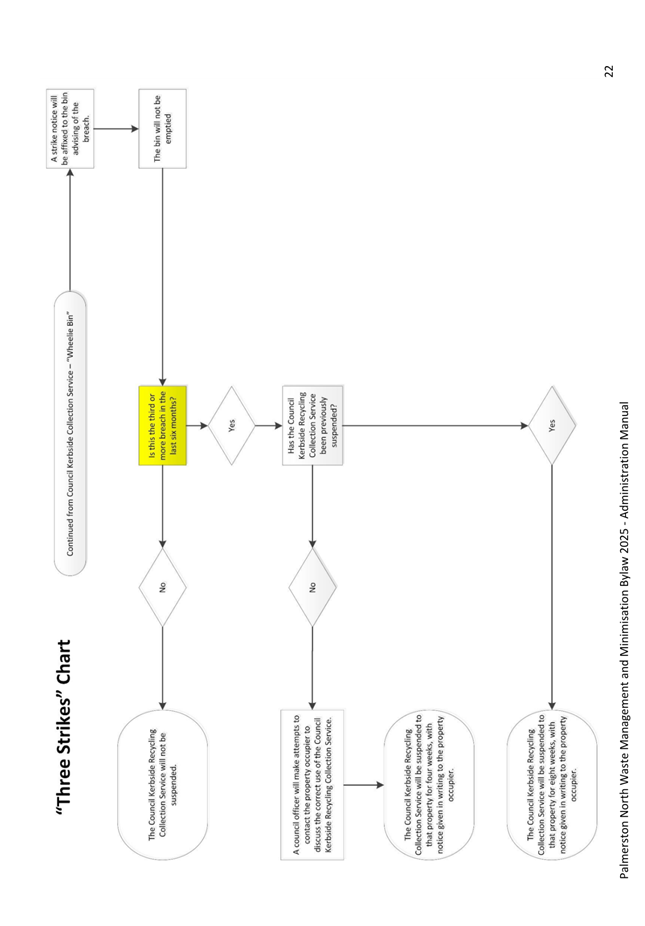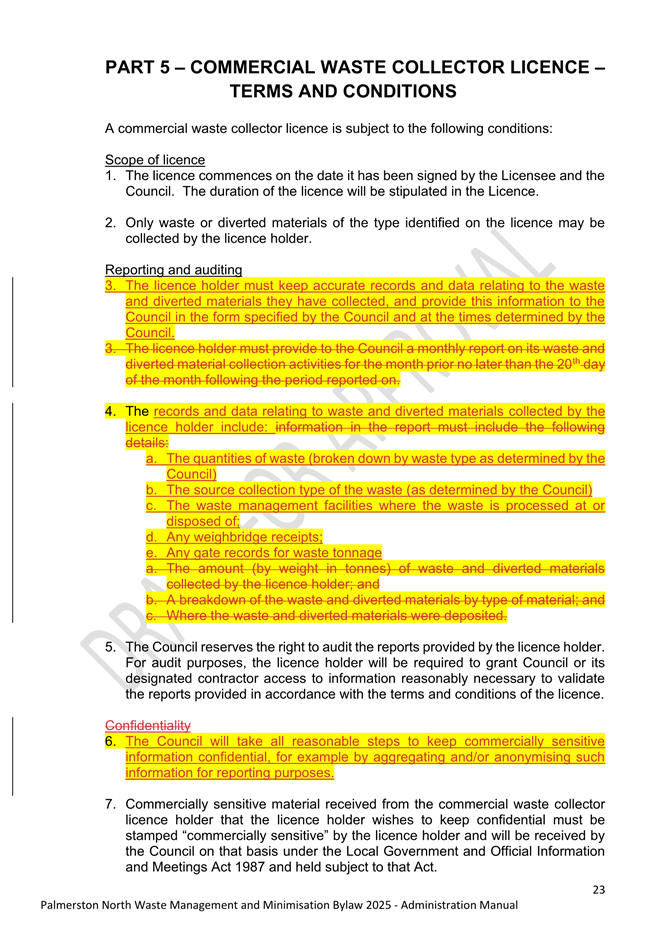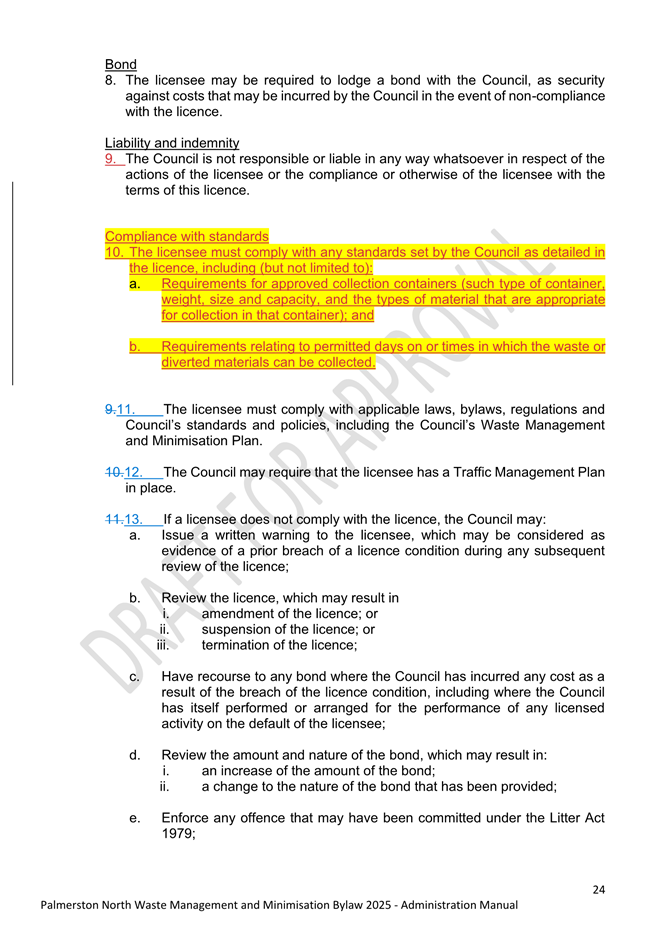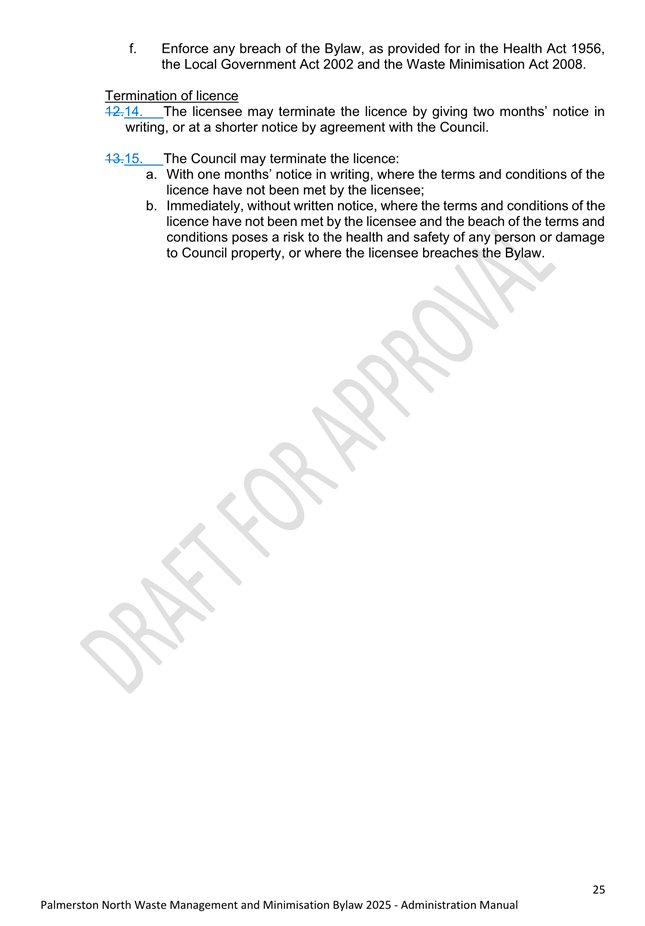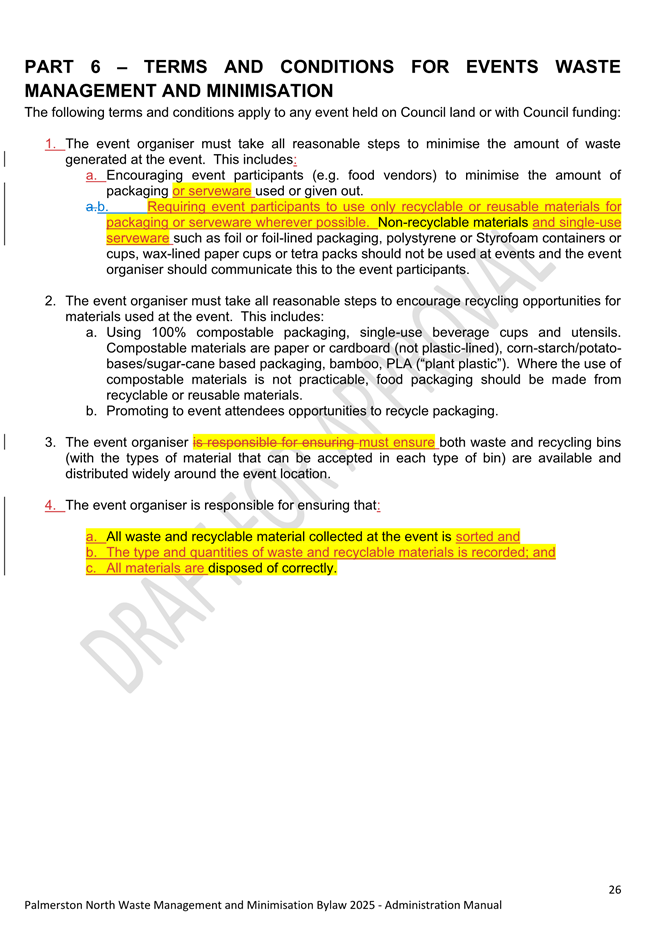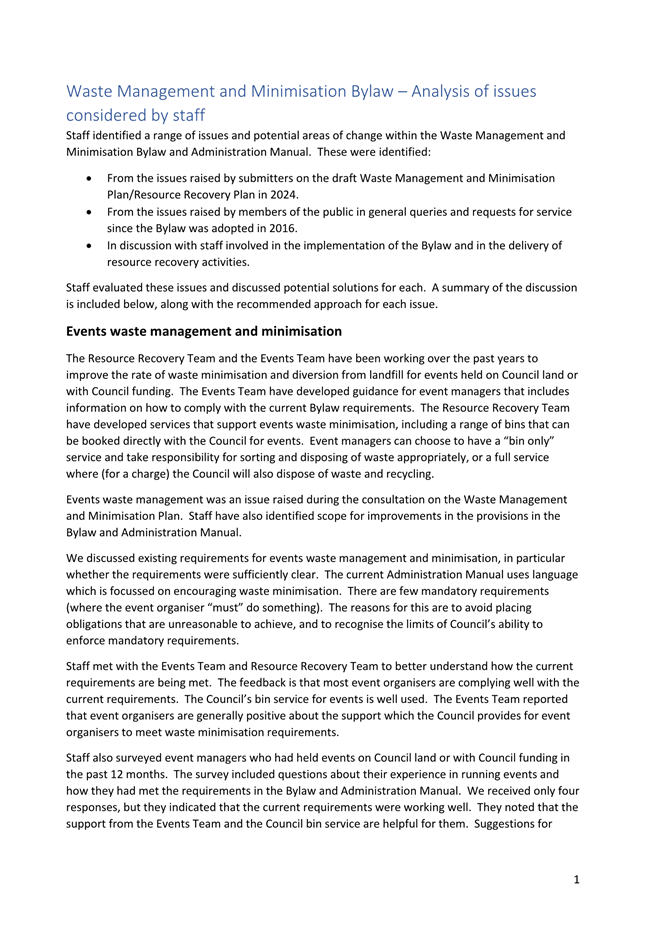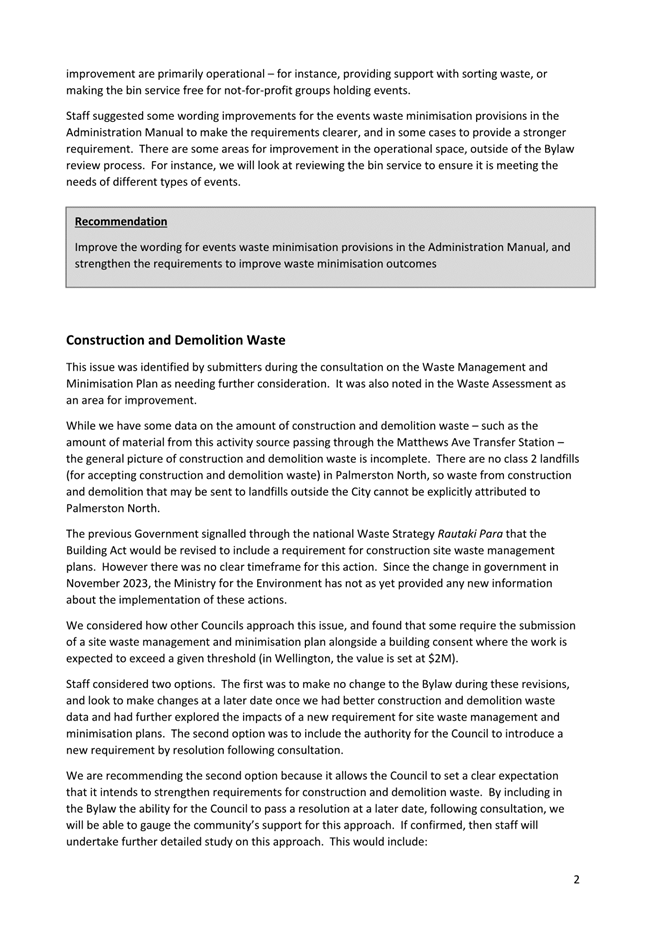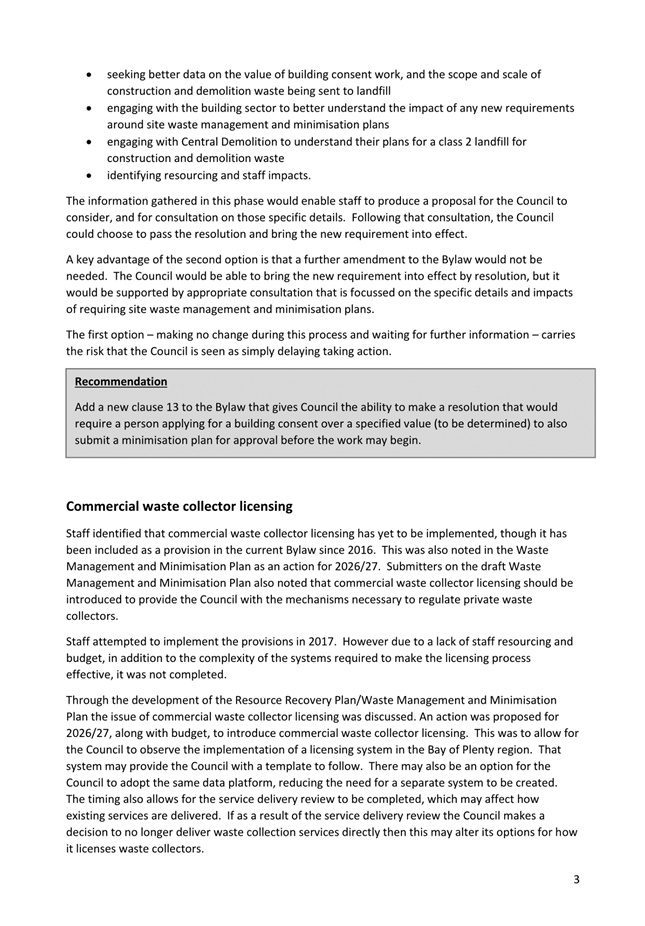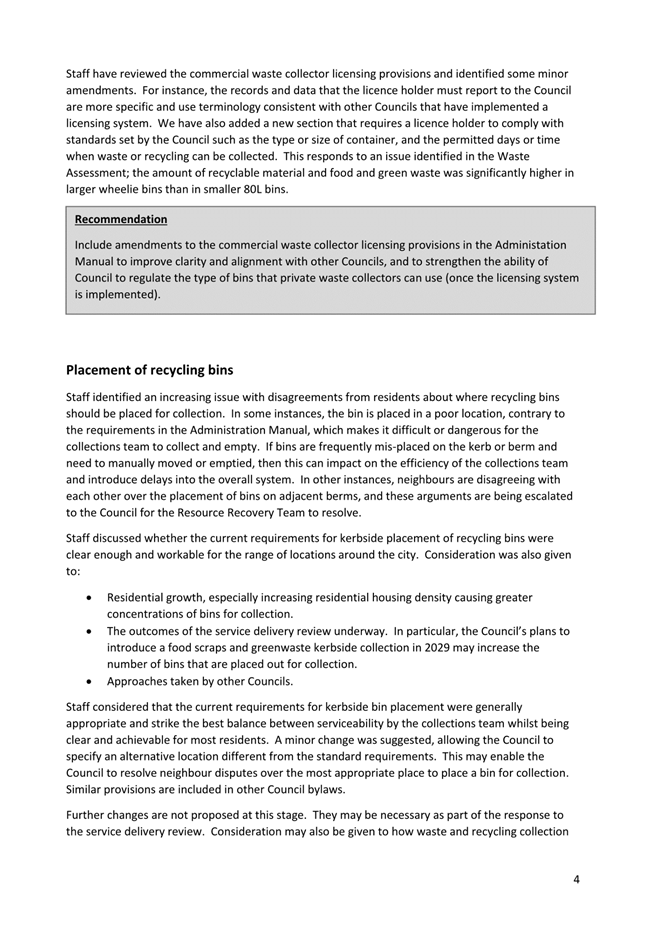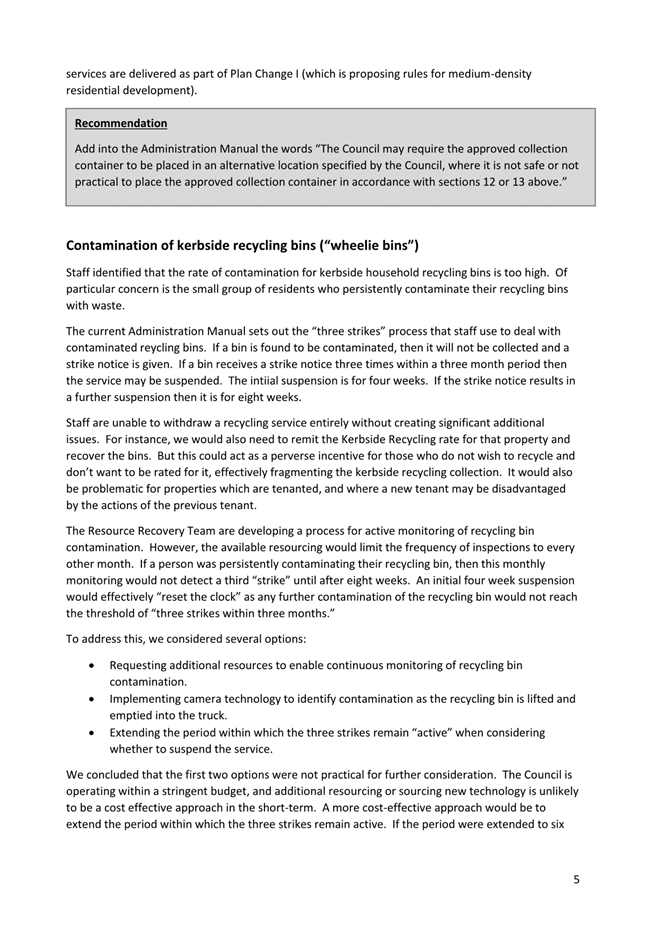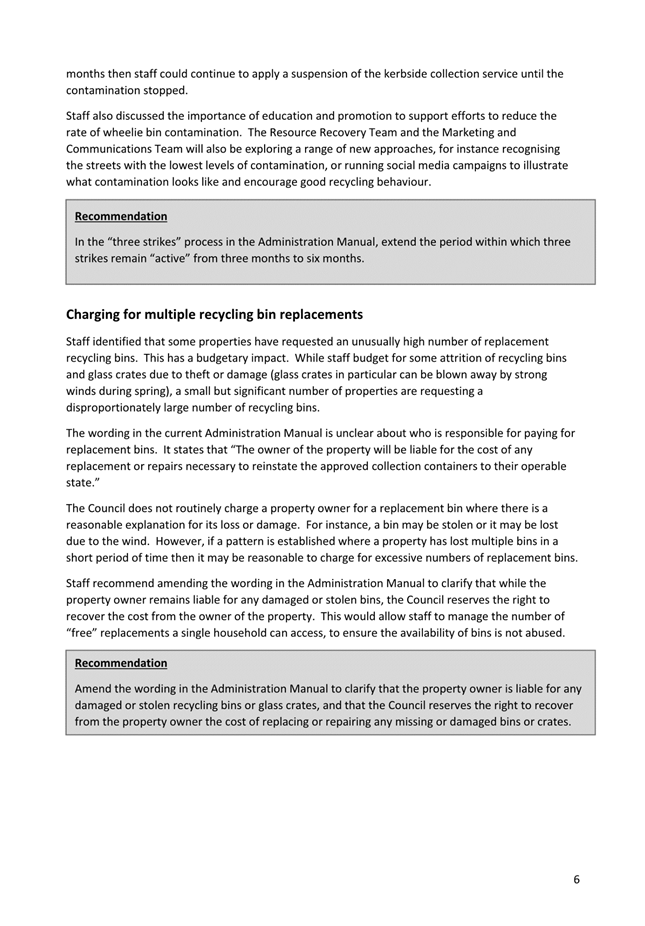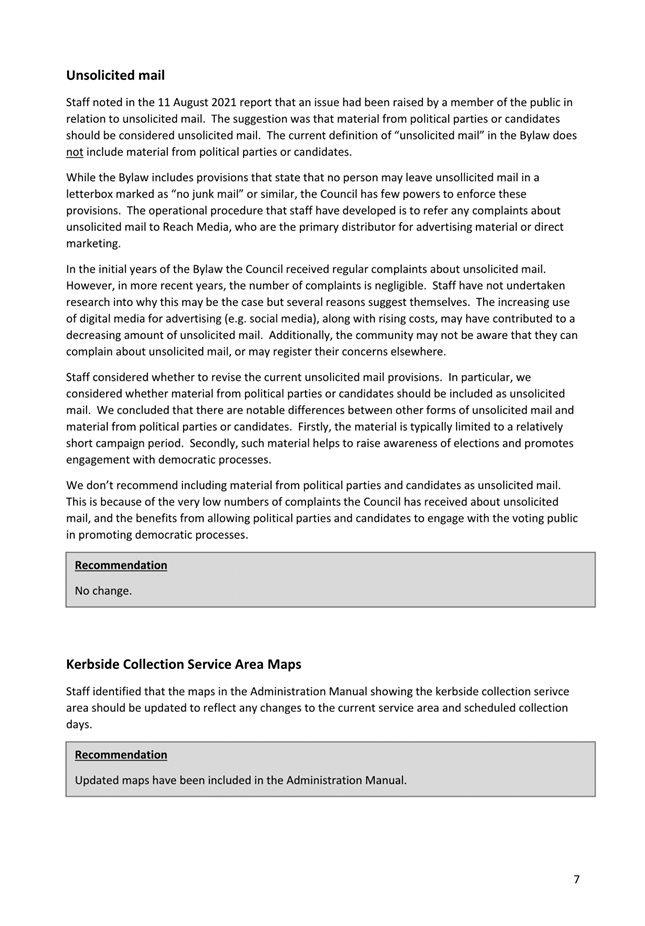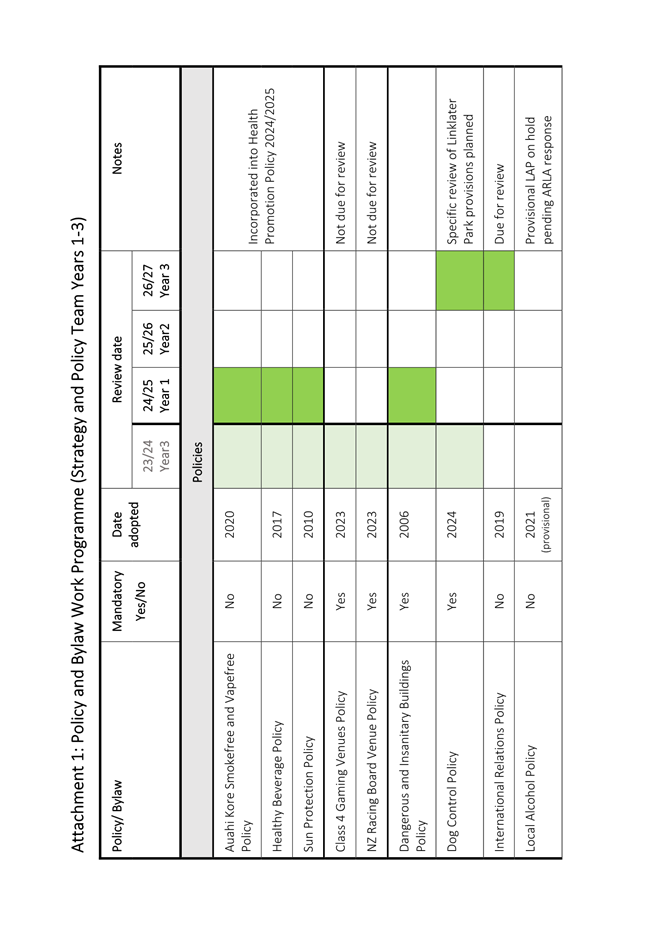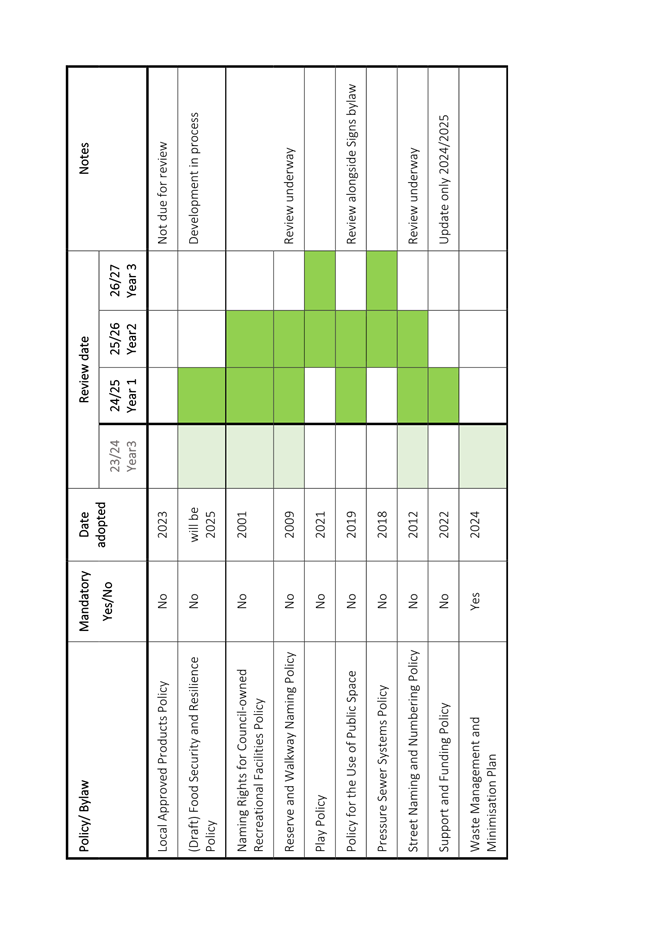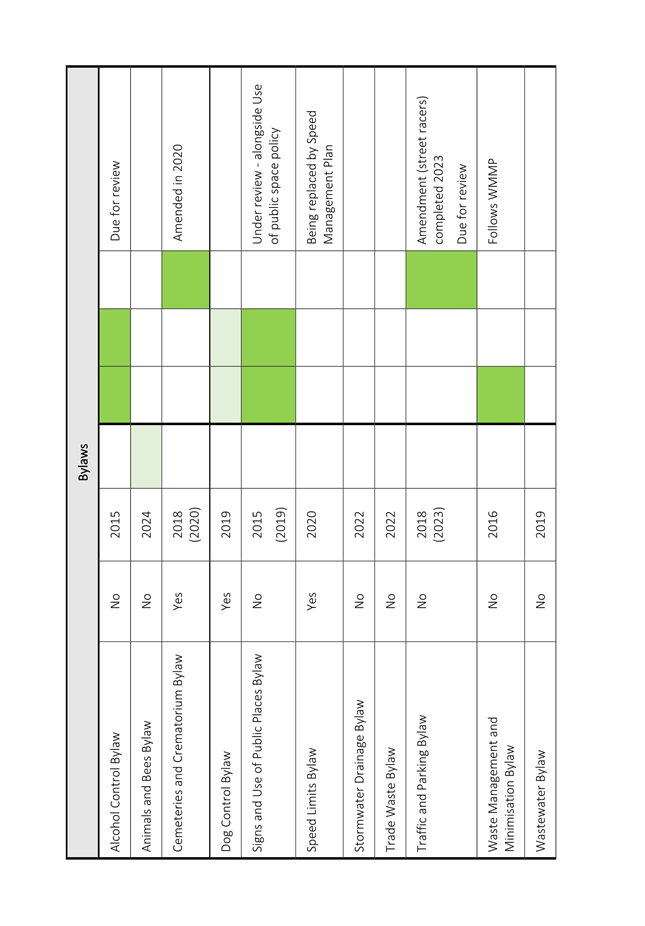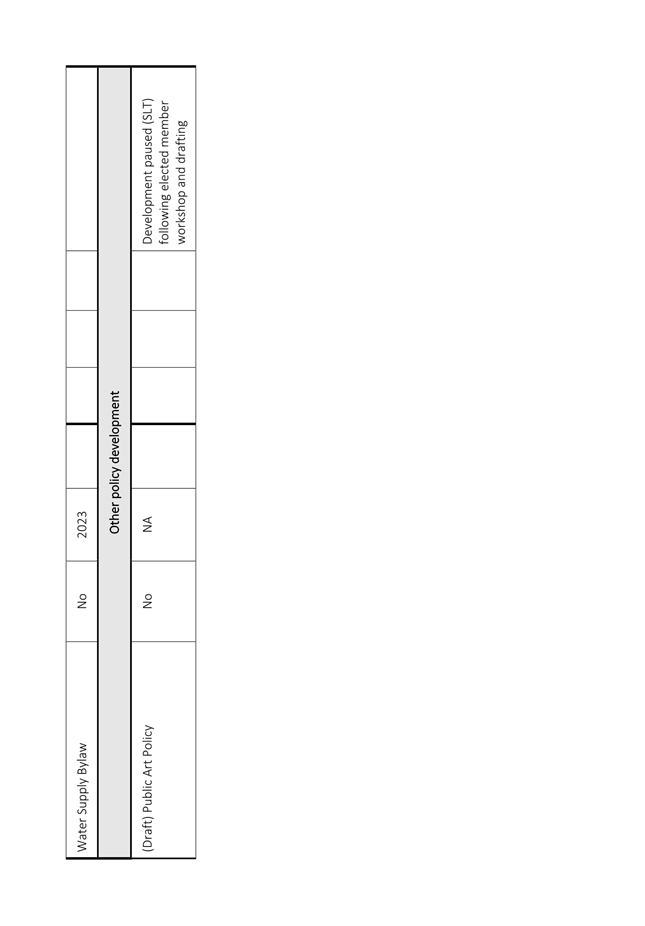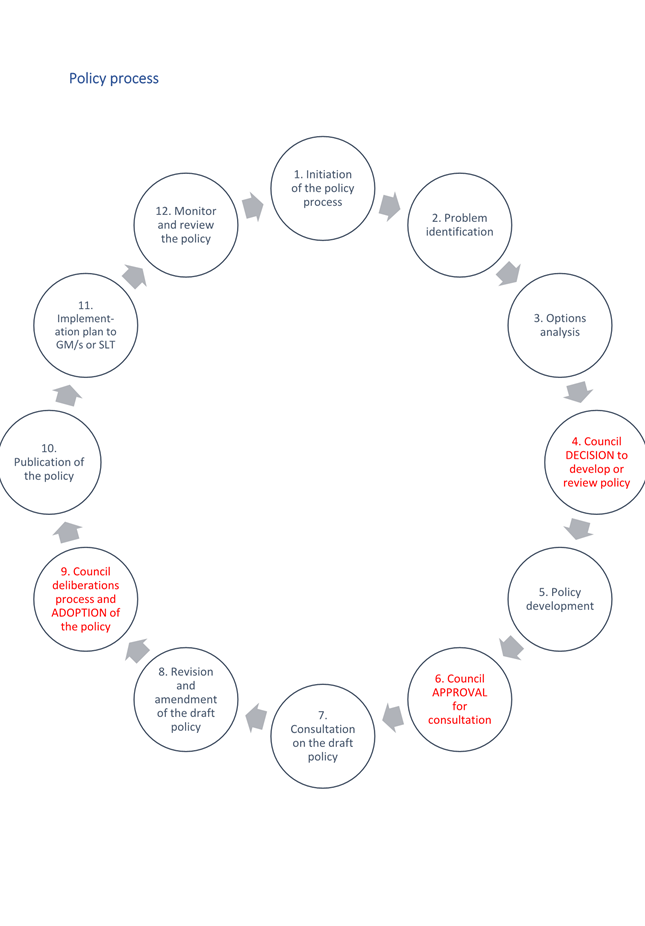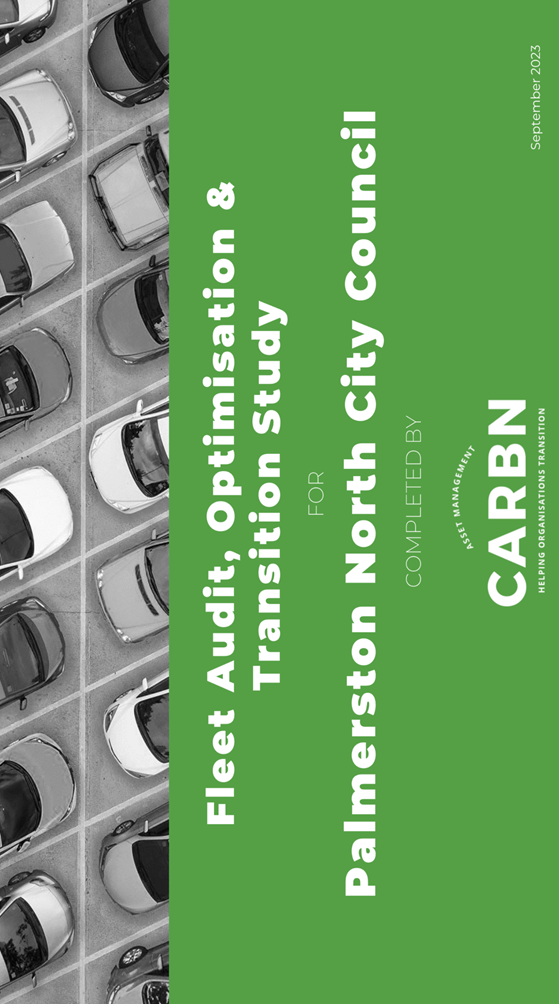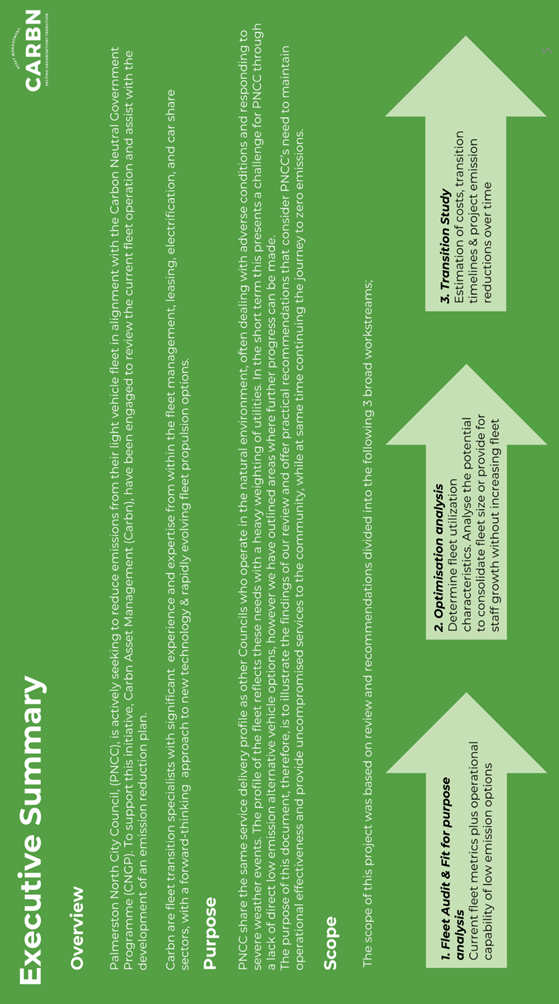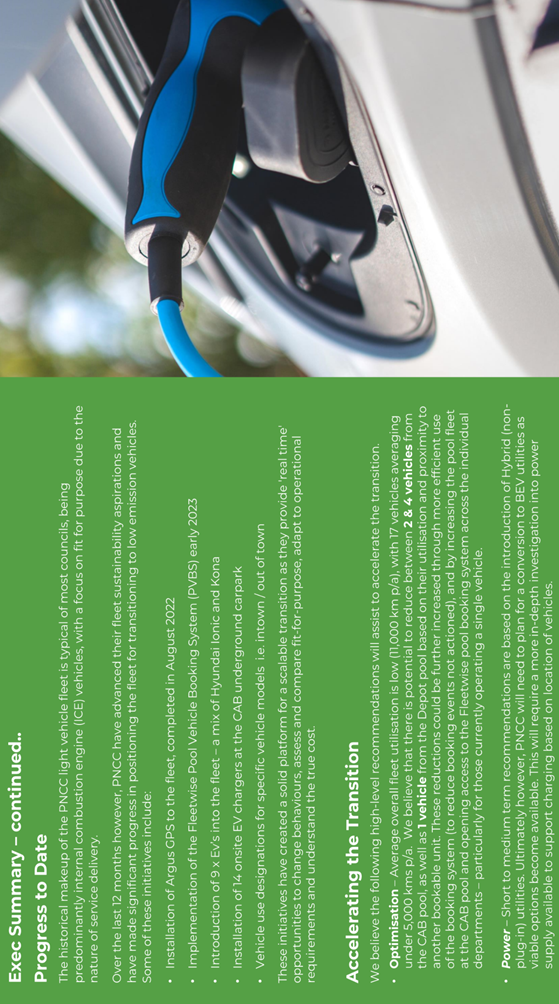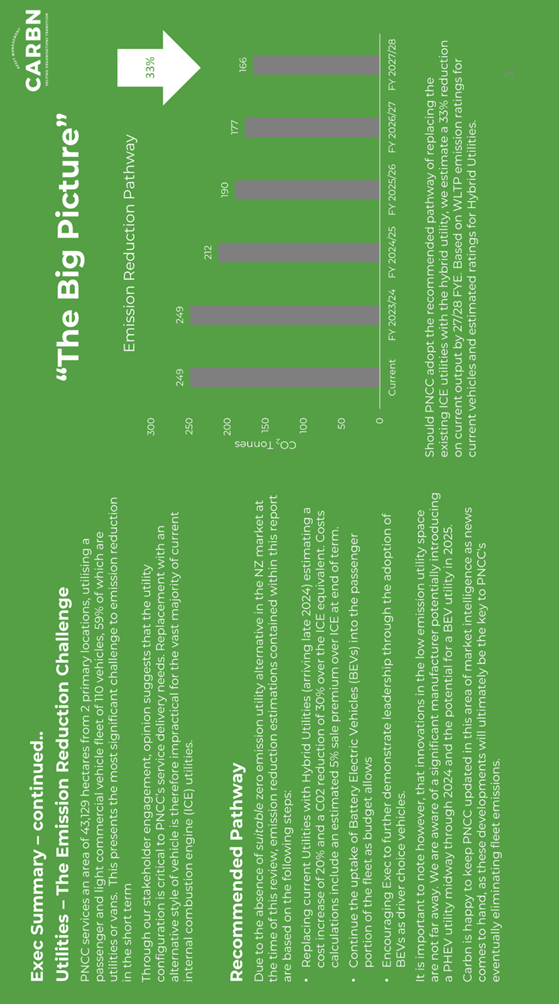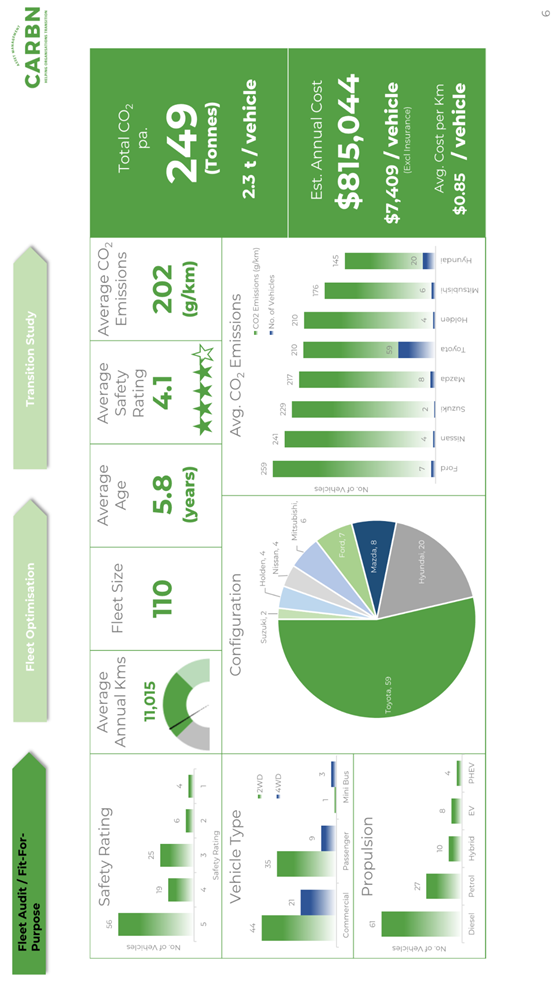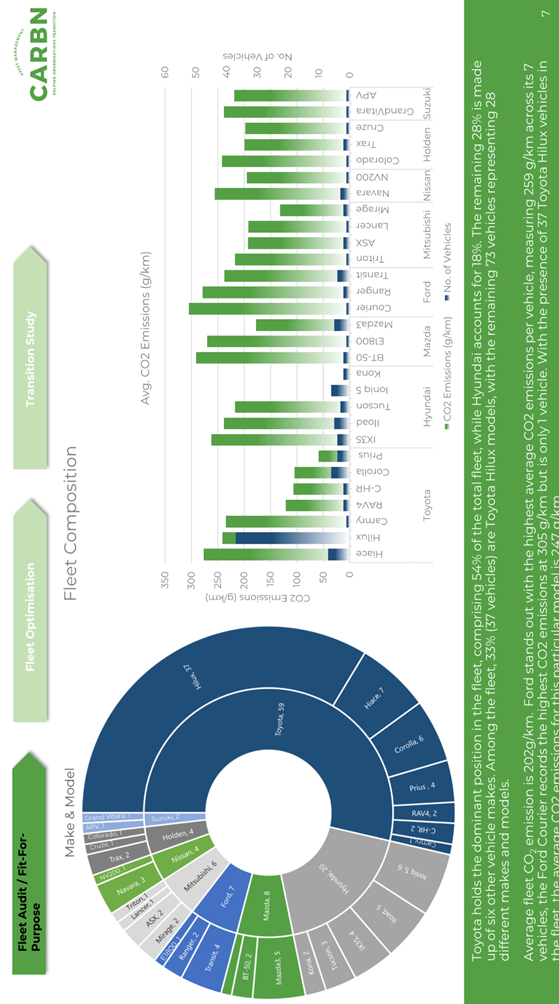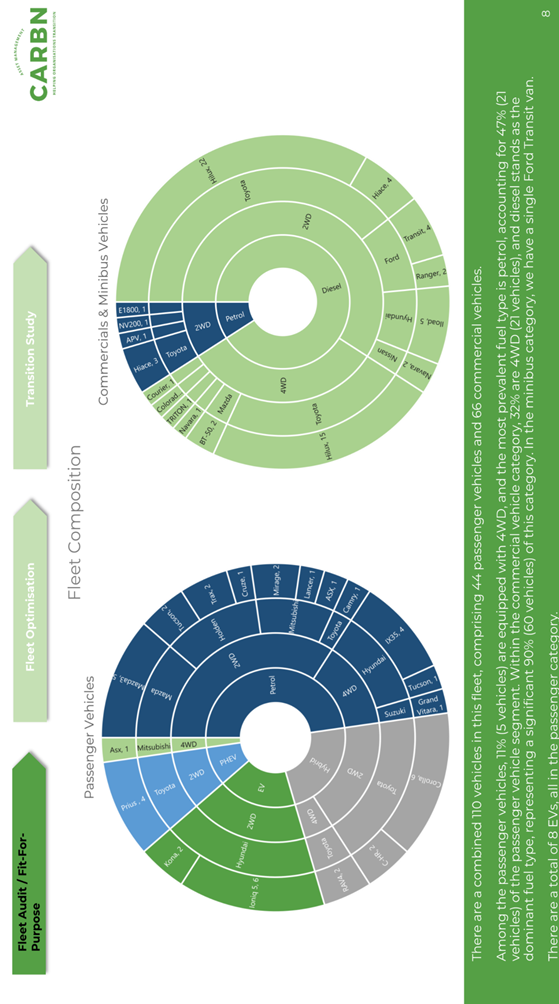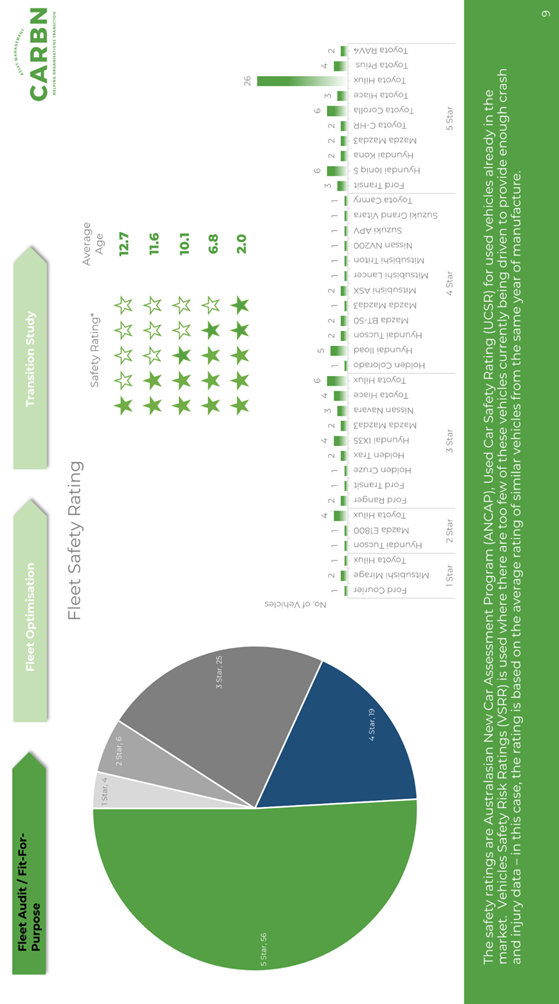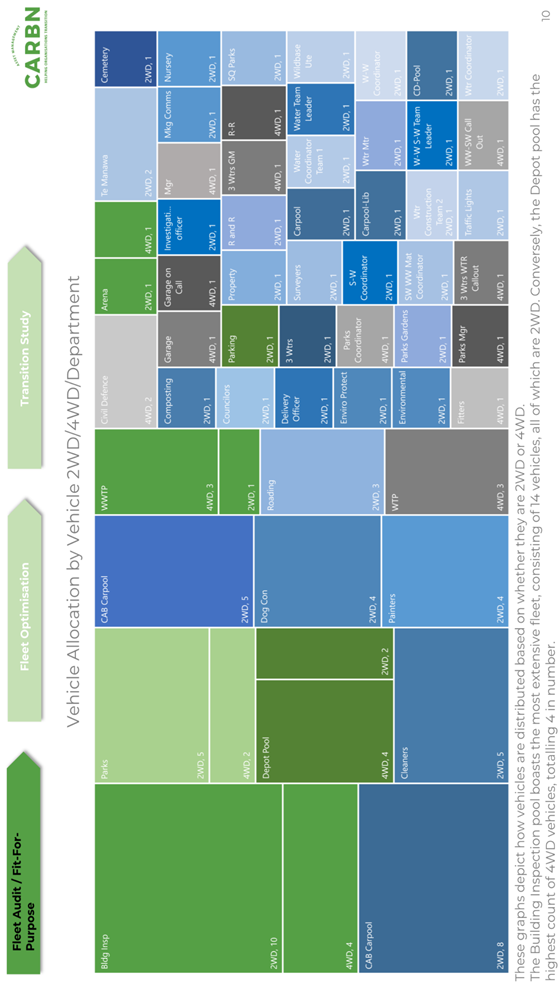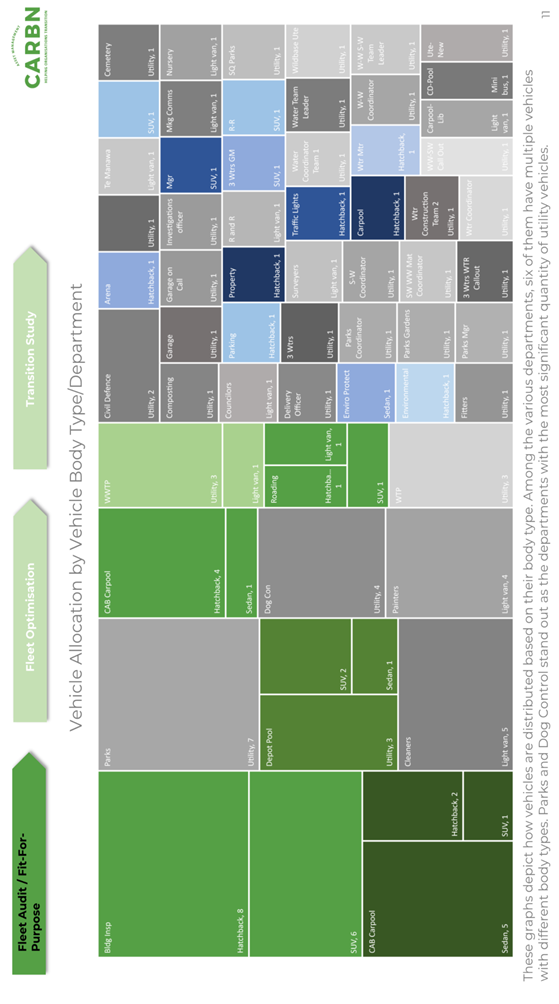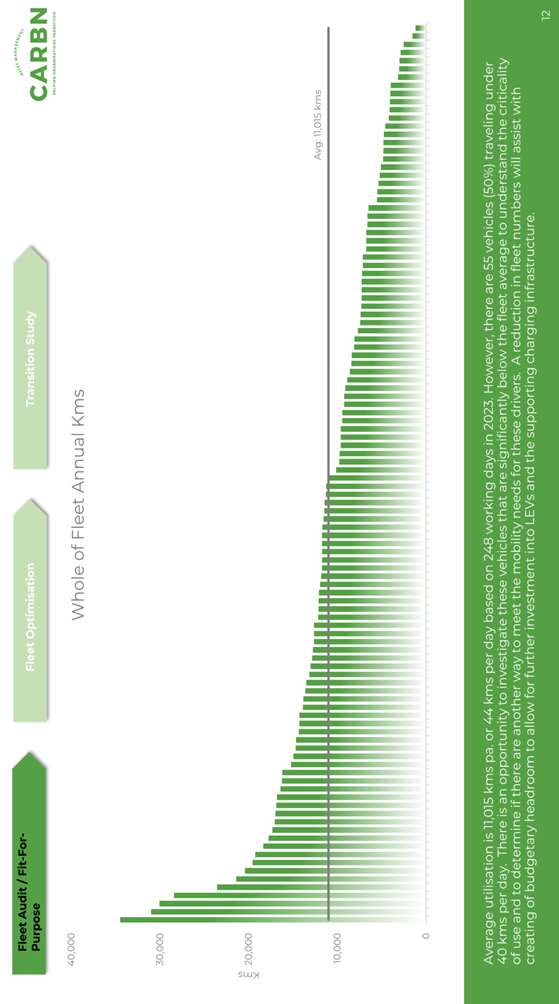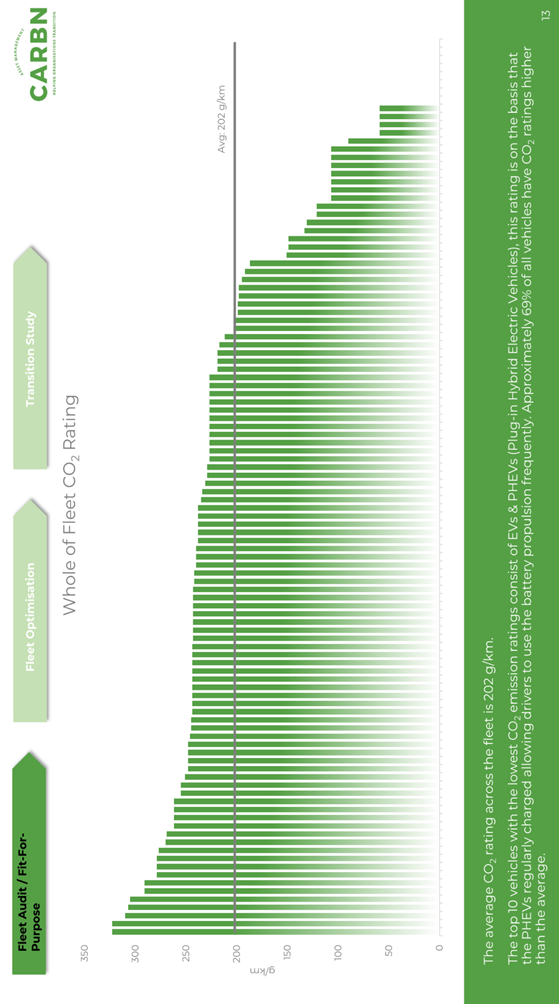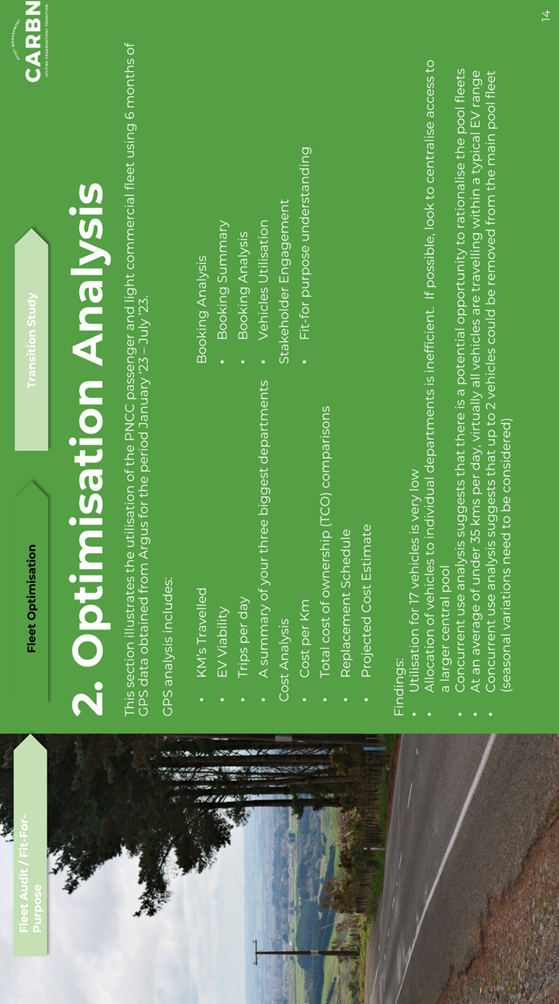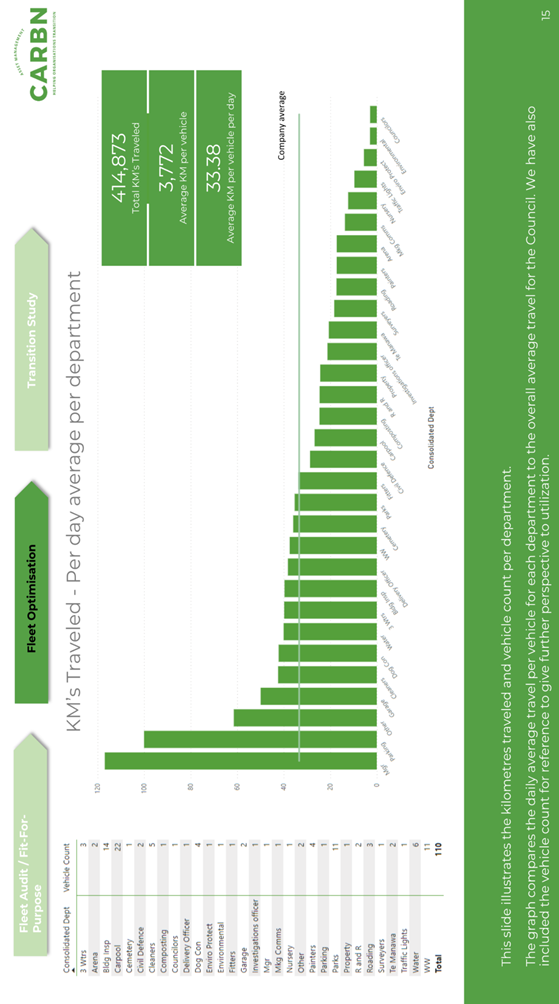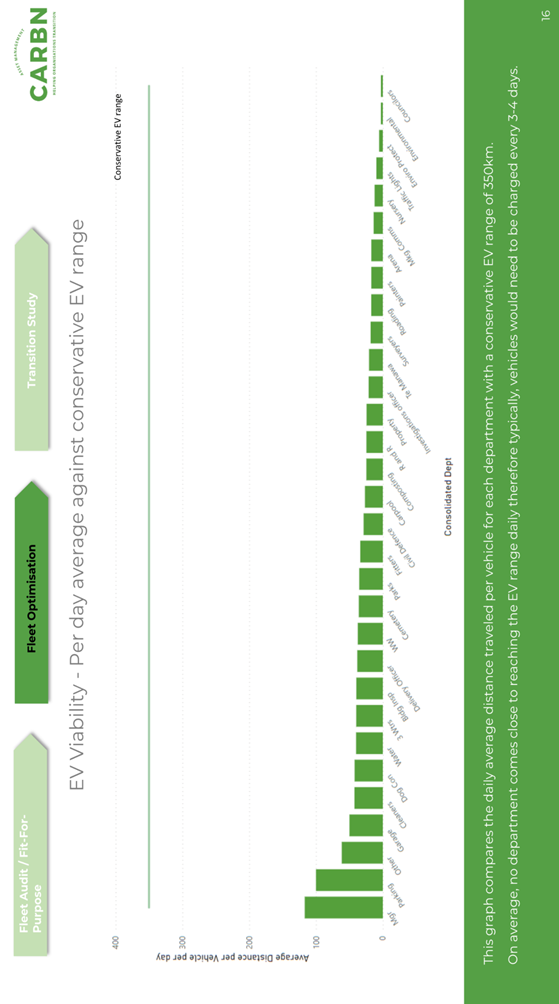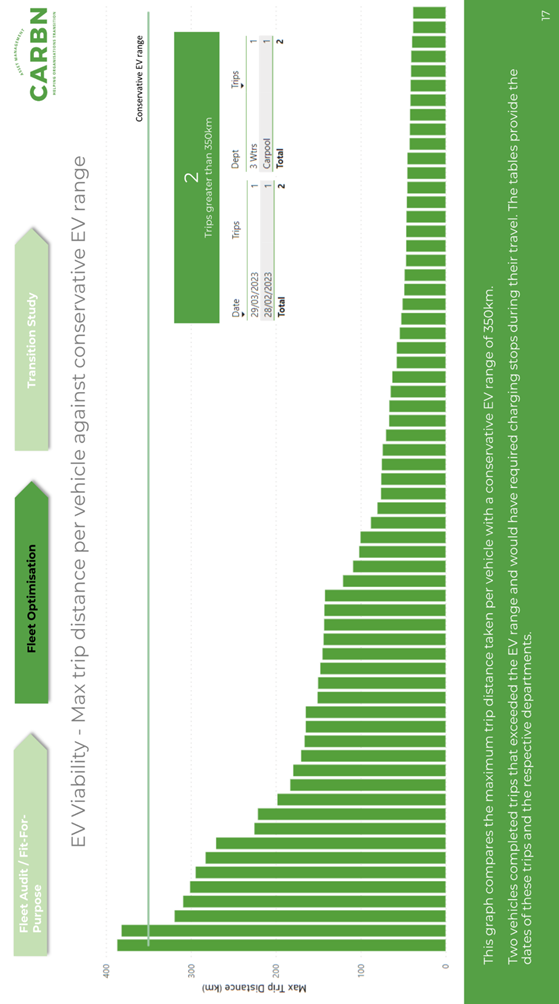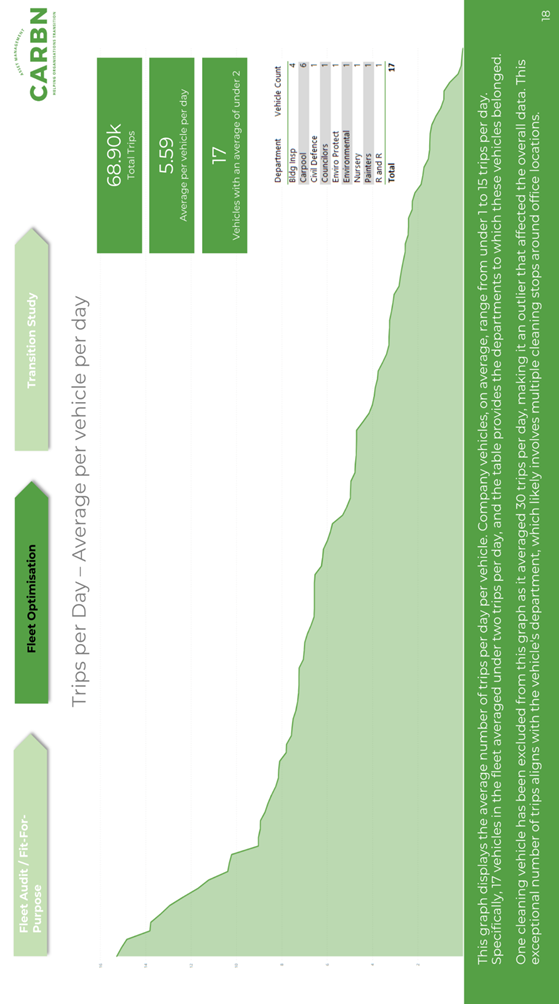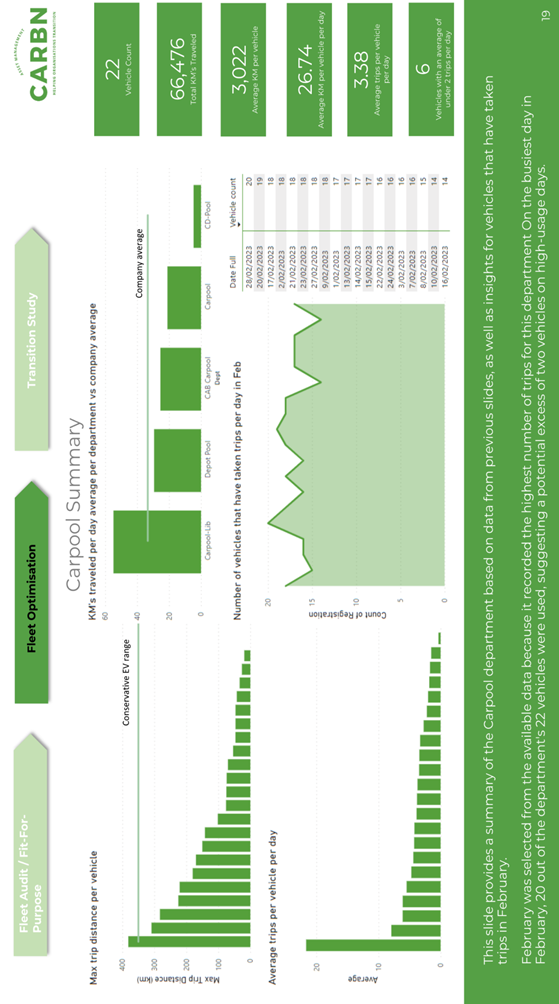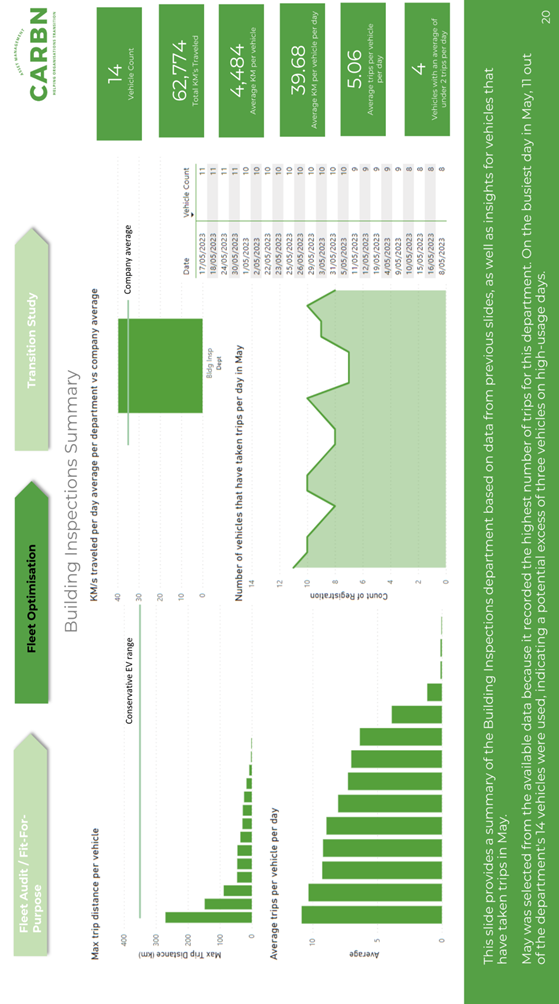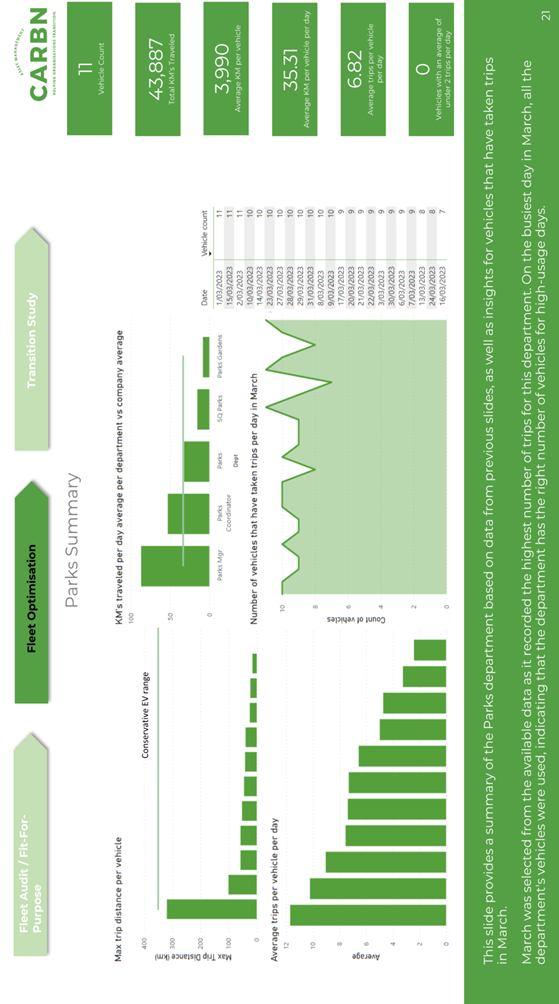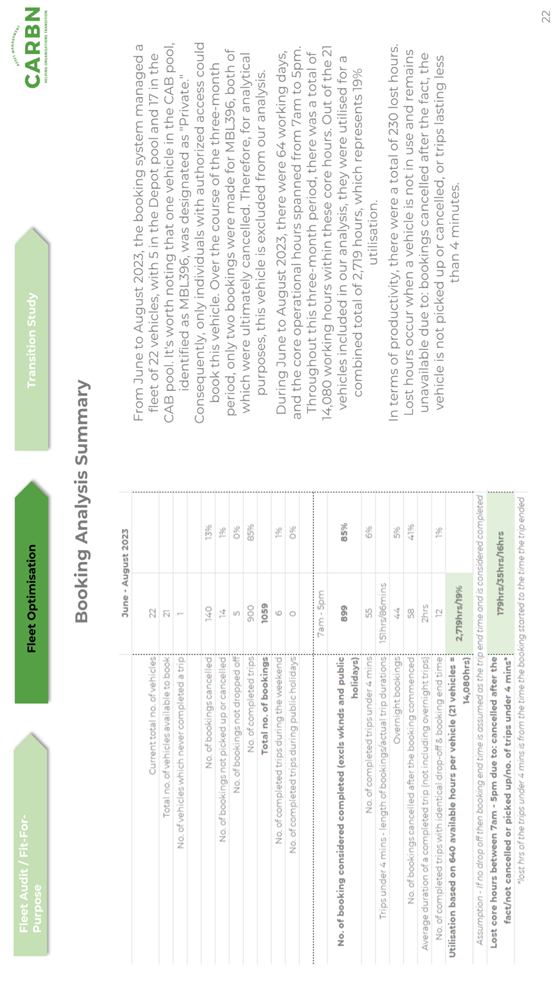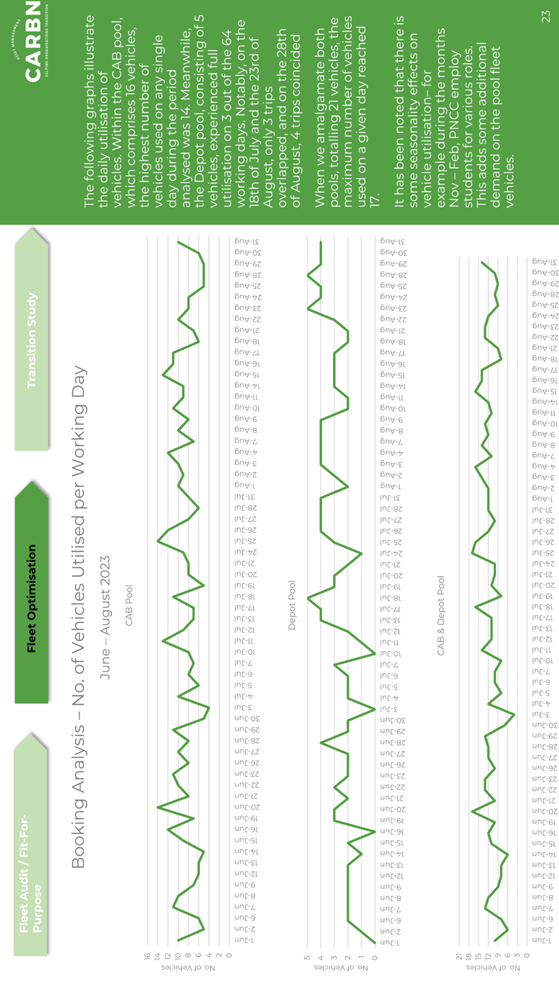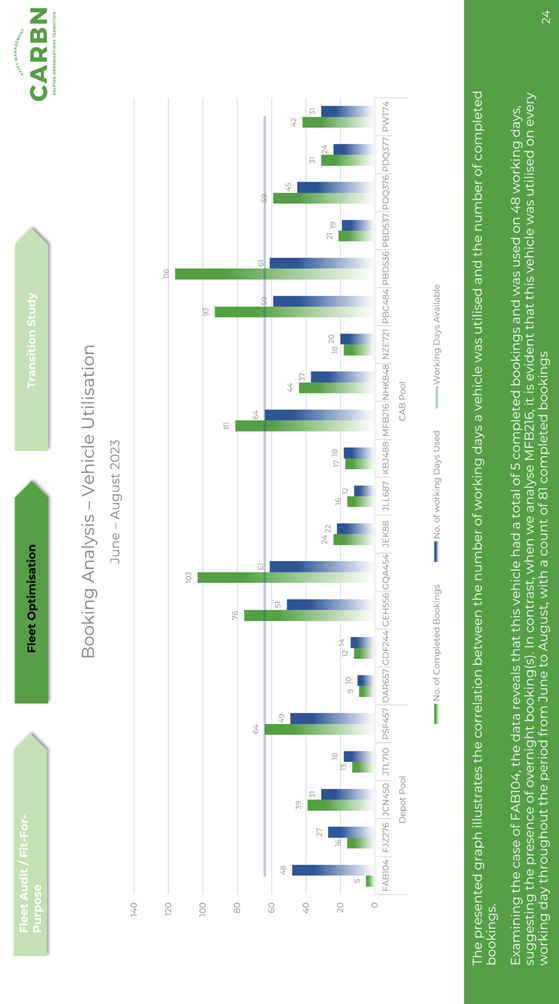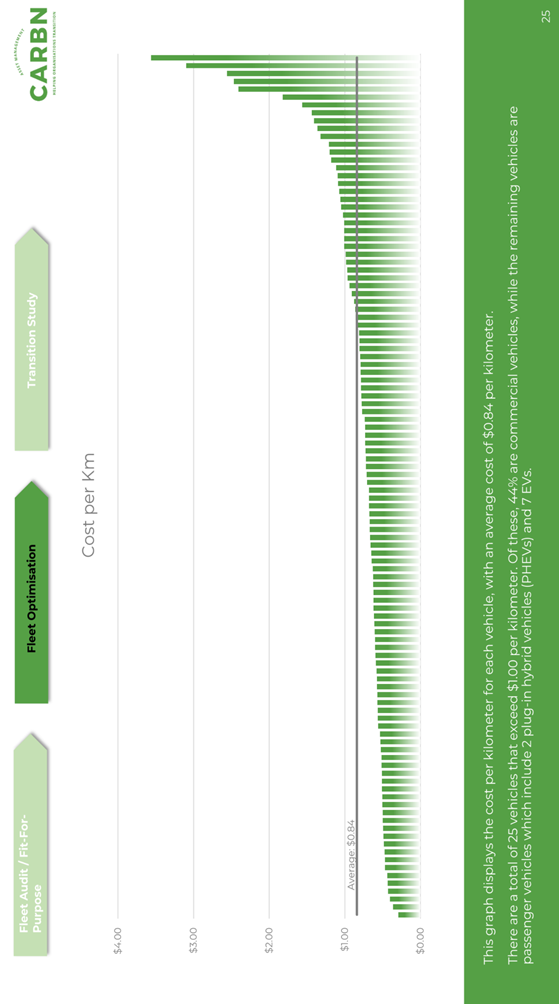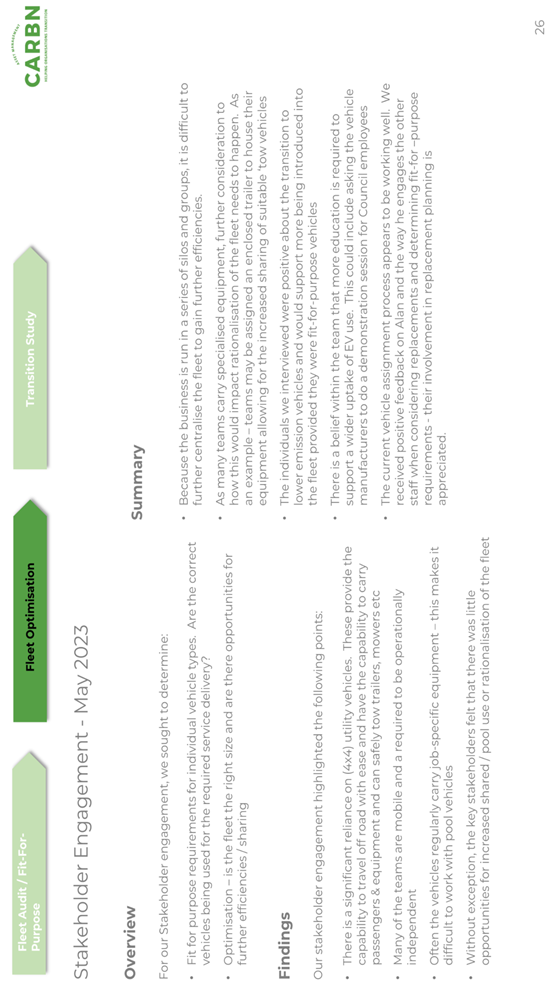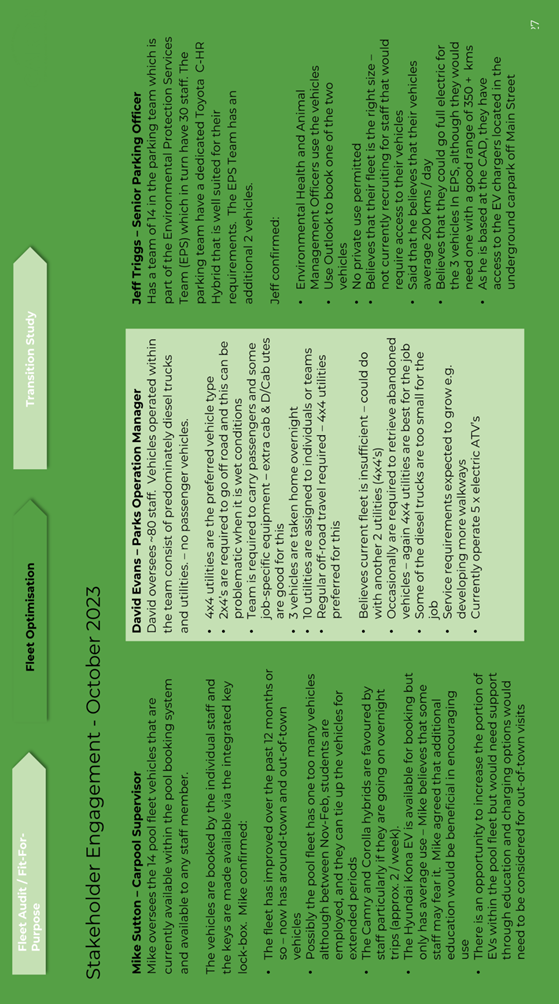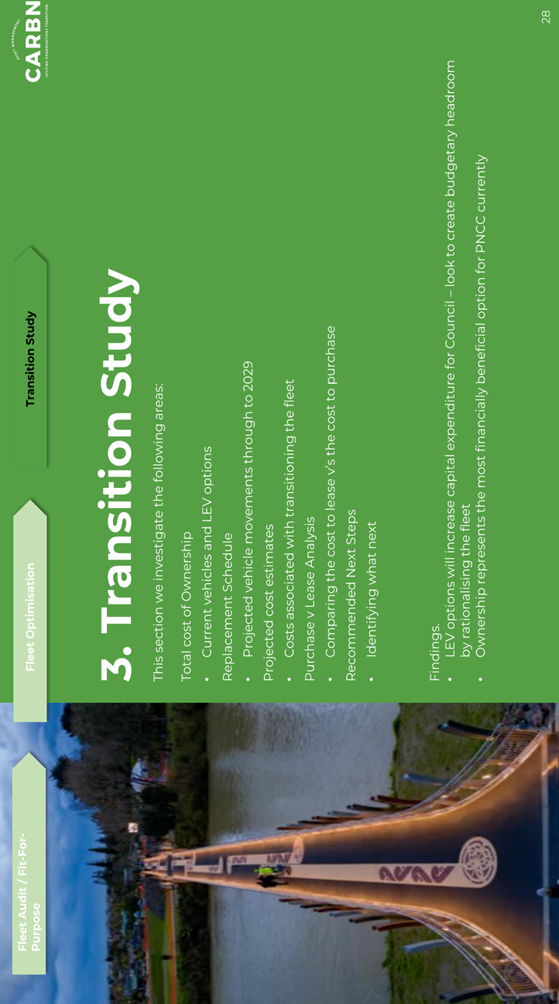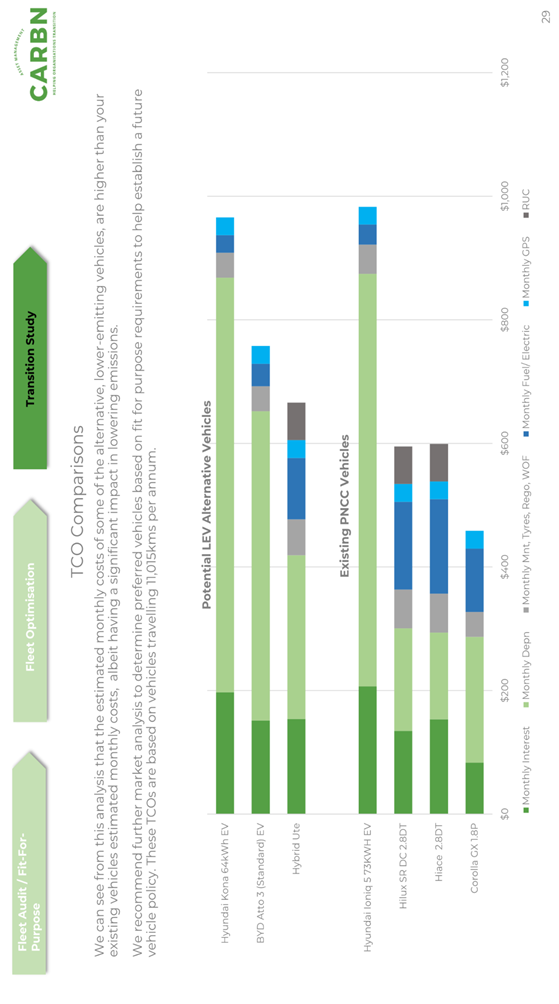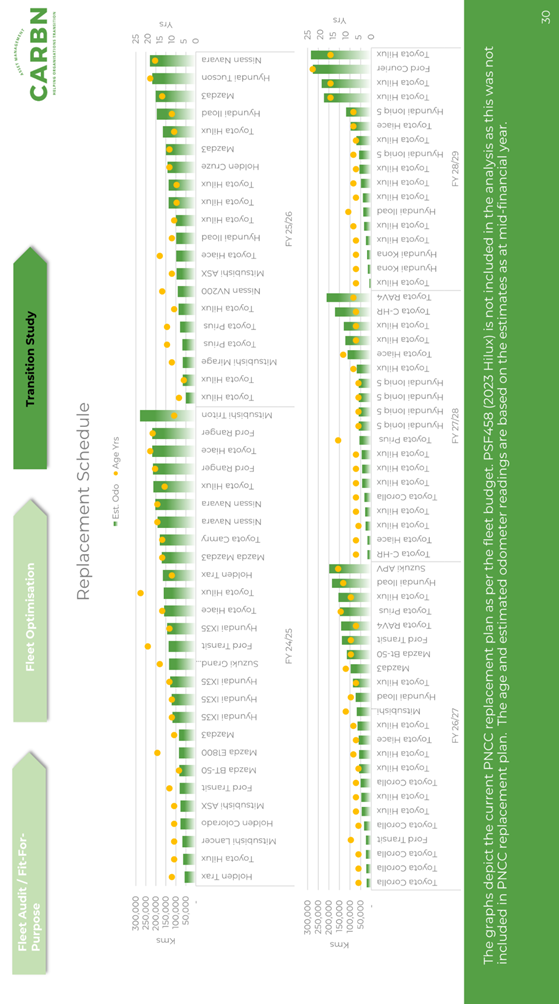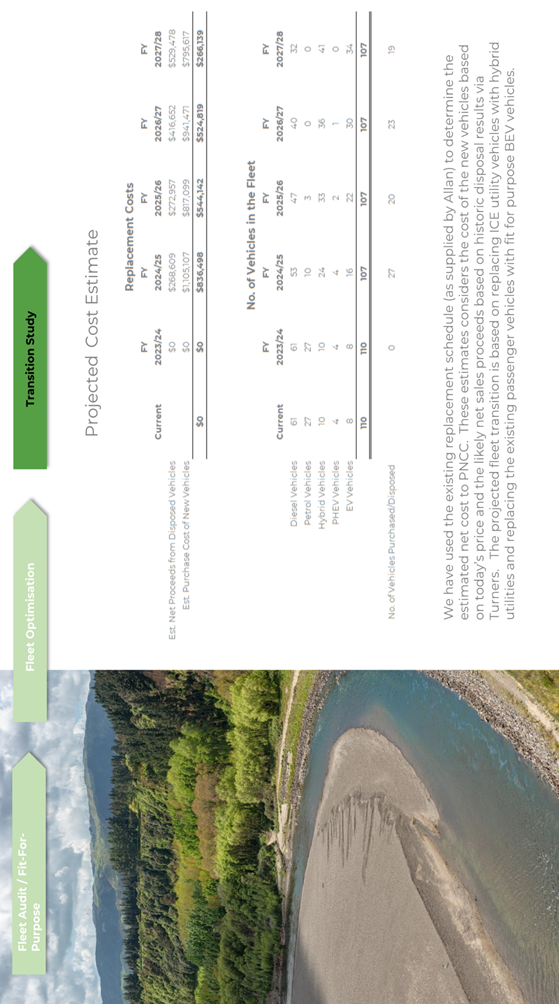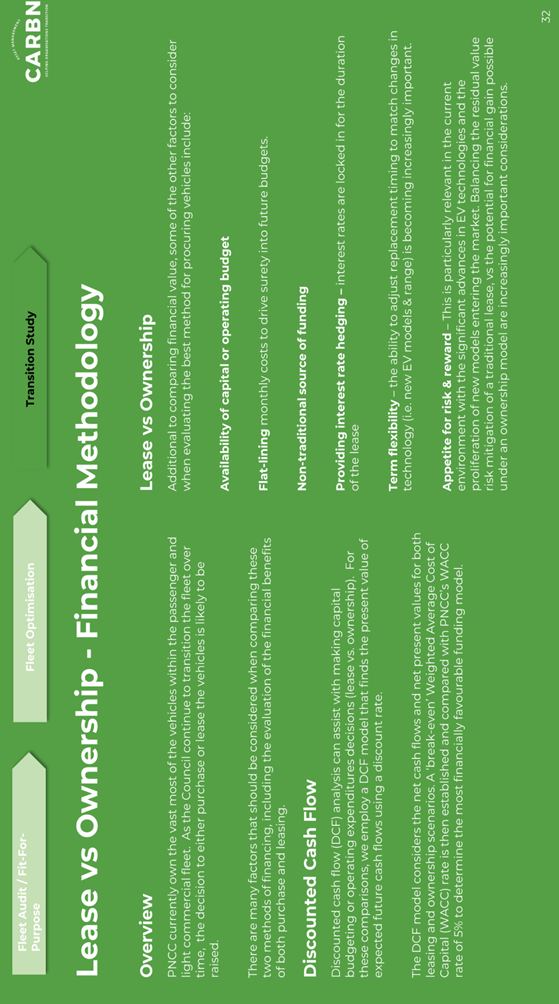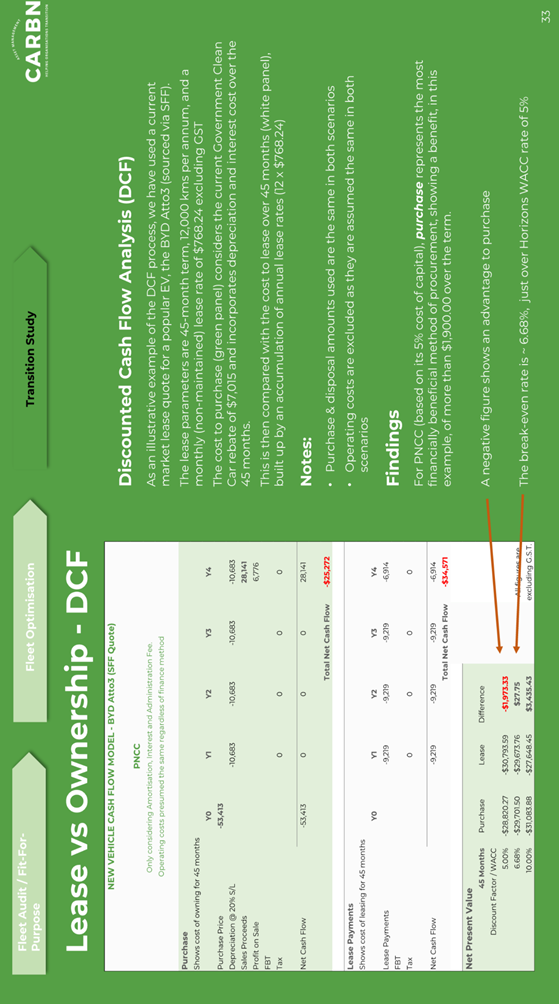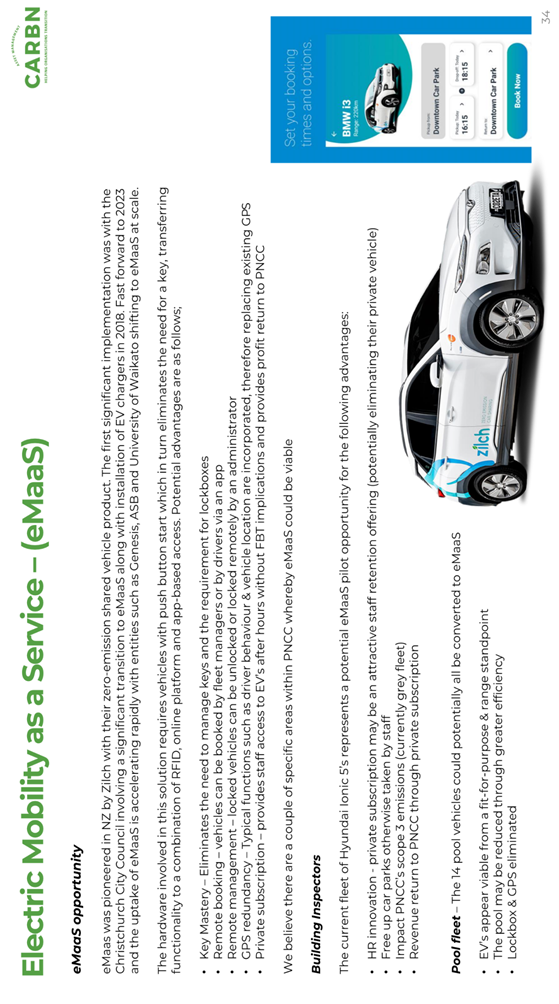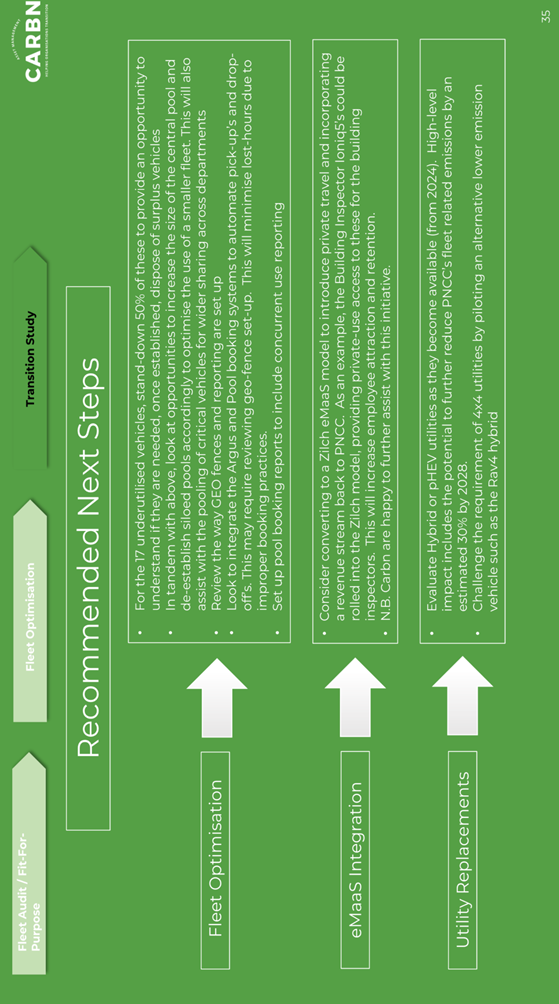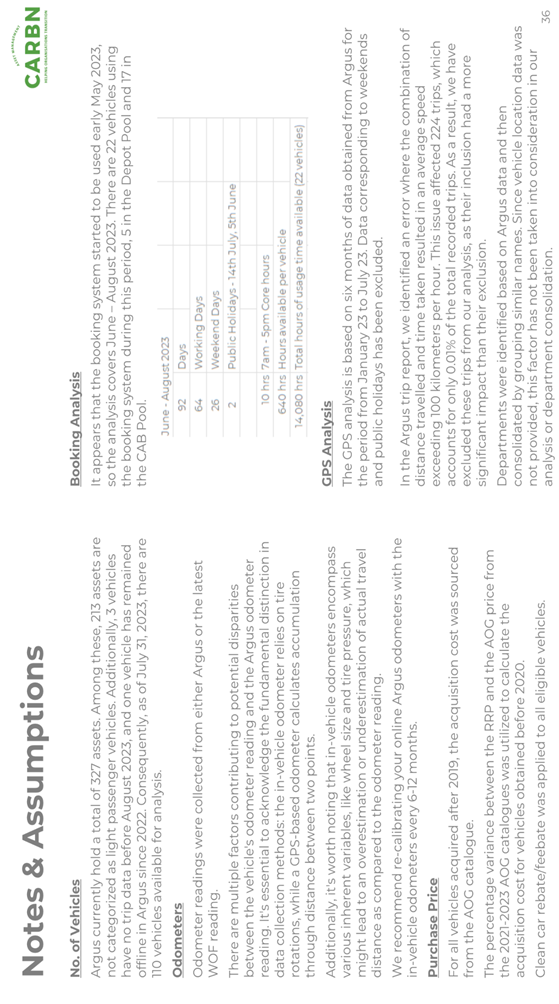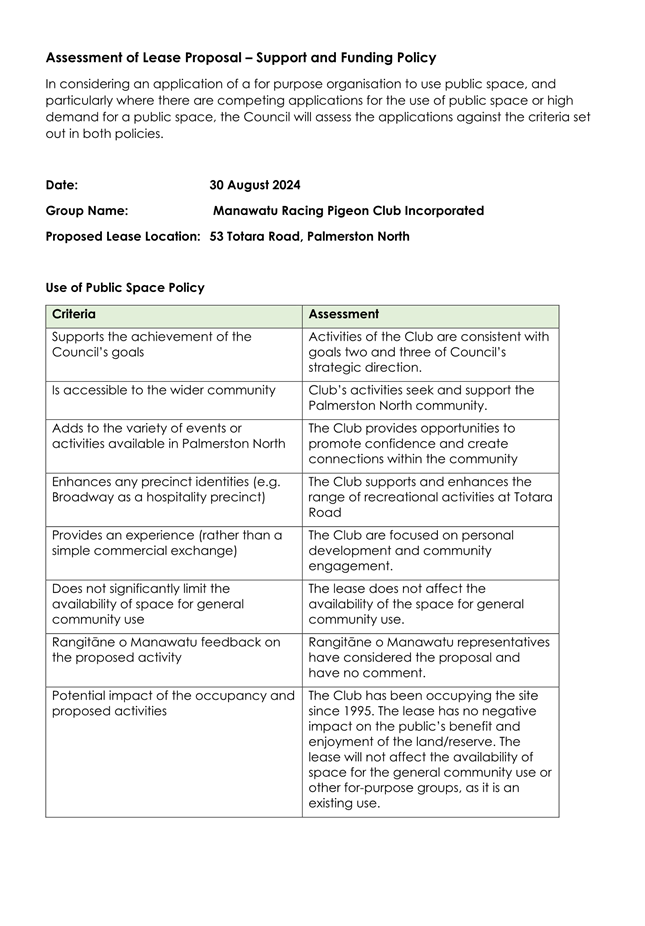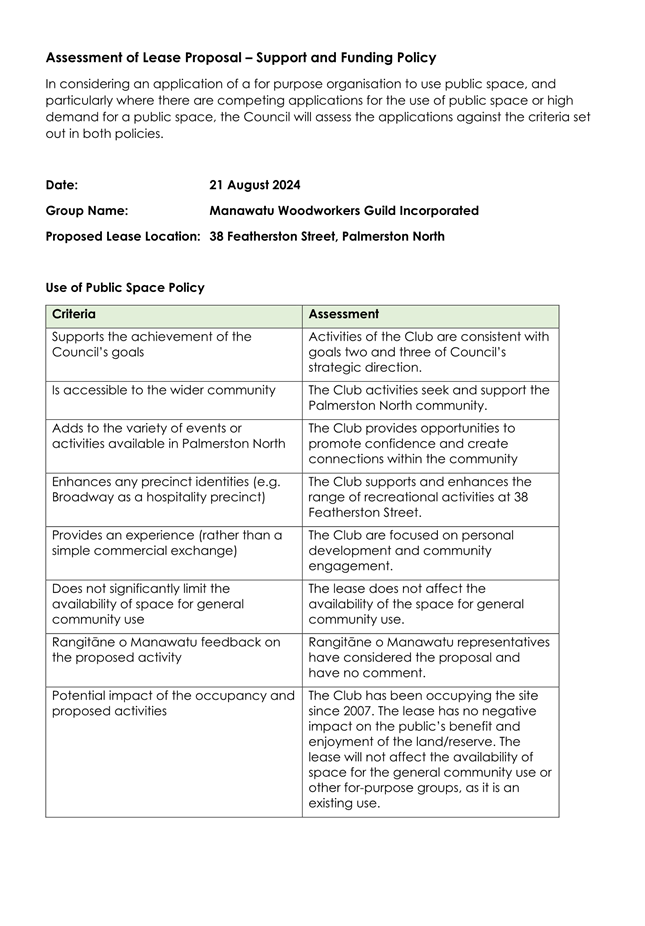Strategy & Finance Committee
|
Vaughan
Dennison (Chair)
|
|
Karen
Naylor (Deputy Chair)
|
|
Grant
Smith (The Mayor)
|
|
Mark
Arnott
|
Lorna
Johnson
|
|
Brent
Barrett
|
Orphée
Mickalad
|
|
Lew
Findlay (QSM)
|
William
Wood
|
|
Patrick
Handcock (ONZM)
|
Kaydee
Zabelin
|
|
Leonie
Hapeta
|
|
Strategy & Finance
Committee MEETING
13 November 2024
Order of Business
1. Karakia Timatanga
2. Apologies
3. Notification
of Additional Items
Pursuant to Sections 46A(7) and
46A(7A) of the Local Government Official Information and Meetings Act 1987, to
receive the Chairperson’s explanation that specified item(s), which do
not appear on the Agenda of this meeting and/or the meeting to be held with the
public excluded, will be discussed.
Any additions in accordance with
Section 46A(7) must be approved by resolution with an explanation as to why
they cannot be delayed until a future meeting.
Any additions in accordance with
Section 46A(7A) may be received or referred to a subsequent meeting for further
discussion. No resolution, decision or recommendation can be made in
respect of a minor item.
4. Declarations
of Interest (if any)
Members are reminded of their duty
to give a general notice of any interest of items to be considered on this
agenda and the need to declare these interests.
5. Public
Comment
To receive comments from members of
the public on matters specified on this Agenda or, if time permits, on other
Committee matters.
(NOTE: If
the Committee wishes to consider or discuss any issue raised that is not
specified on the Agenda, other than to receive the comment made or refer it to
the Chief Executive, then a resolution will need to be made.)
6. Confirmation
of Minutes Page 7
That the minutes of the Strategy & Finance Committee
meeting of 14 August 2024 Part I Public be confirmed as a true and correct
record.
7. Quarterly
Performance and Financial Report - period ending 30 September 2024 Page 15
Memorandum, presented by Scott Mancer, Manager -
Finance and John Aitken, Manager - Project Management Office.
8. Treasury
Report - quarter ending 30 September 2024 Page 81
Memorandum, presented by Steve Paterson, Manager -
Financial Strategy.
9. Local
Water Done Well Funding Reallocation Page 93
Report, presented by Scott Mancer, Manager - Finance
and Julie Keane, Transition Manager.
10. Palmerston North
City District Plan: Proposed Plan Change I - Increasing Housing Supply and
Choice Page 99
Memorandum, presented by Jono Ferguson-Pye, City
Planning Manager and Sarah Jenkin, Consultant Planner.
11. Elected Member
Expenditure 2023/24 Page 113
Memorandum, presented by Scott Mancer, Manager -
Finance.
12. Deliberations -
Draft Dangerous, Affected, and Insanitary Buildings Policy 2024 Page 119
Report, presented by Lili Kato, Policy Analyst.
13. Draft Waste
Management and Minimisation Bylaw - approval for consultation Page 157
Report, presented by Peter Ridge, Senior Policy
Analyst.
14. Policy and bylaw
work programme 2024-2027 Page 229
Memorandum, presented by Julie Macdonald, Manager
Strategy and Policy.
15. Small vehicle fleet
ownership and long-term lease investigation results Page 241
Memorandum, presented by Cameron McKay, General Manager
Corporate Services.
16. Public Notification
of a Community Occupancy Lease to Manawatū Racing Pigeon Club Incorporated Page 285
Report, presented by Bill Carswell, Manager Property
and Resource Recovery.
17. Public Notification
of a Community Occupancy Lease to Manawatū Woodworkers Guild Incorporated Page 295
Report, presented by Bill Carswell, Manager Property
and Resource Recovery.
18. 916 Tremaine Avenue
(part of Vautier Park) - Proposal to grant lease of Council land to Red Sox
Sports Club Incorporated Page 307
Memorandum, presented by Bill Carswell, Manager
Property and Resource Recovery.
19. 65 Totara Road -
Proposal to grant lease of Council land to Manawatū Amateur Radio Society
Branch 20 NZ Art Incorporated Page 311
Memorandum, presented by Bill Carswell, Manager
Property and Resource Recovery.
20. Committee Work
Schedule Page 315
21. Karakia
Whakamutunga
22. Exclusion of Public
|
|
To be
moved:
“That the public be excluded from the
following parts of the proceedings of this meeting listed in the table below.
The general subject of each matter to be considered
while the public is excluded, the reason for passing this resolution in
relation to each matter, and the specific grounds under Section 48(1) of the
Local Government Official Information and Meetings Act 1987 for the passing
of this resolution are as follows:
|
General subject of each matter to be
considered
|
Reason for passing this resolution in
relation to each matter
|
Ground(s) under Section 48(1) for
passing this resolution
|
|
|
|
|
|
|
|
|
|
This resolution is made in reliance on Section
48(1)(a) of the Local Government Official Information and Meetings Act 1987
and the particular interest or interests protected by Section 6 or Section 7
of that Act which would be prejudiced by the holding of the whole or the
relevant part of the proceedings of the meeting in public as stated in the
above table.
Also that the persons listed below be permitted to
remain after the public has been excluded for the reasons stated.
[Add Third Parties], because of their knowledge and ability to assist the
meeting in speaking to their report/s [or other matters as specified] and
answering questions, noting that such person/s will be present at the meeting
only for the items that relate to their respective report/s [or matters as
specified].
|
Palmerston North
City Council
Minutes of
the Strategy & Finance Committee Meeting Part I Public, held in the Council
Chamber, First Floor, Civic Administration Building, 32 The Square, Palmerston
North on 14 August 2024, commencing at 9.00am.
|
Members
Present:
|
Councillor Vaughan Dennison (in the
Chair), The Mayor (Grant Smith) and Councillors Karen Naylor, Mark Arnott,
Brent Barrett, Lew Findlay, Leonie Hapeta, Lorna Johnson, Orphée
Mickalad, William Wood and Kaydee Zabelin.
|
|
Non Members:
|
Councillors Rachel Bowen, Debi
Marshall-Lobb and Billy Meehan.
|
|
Apologies:
|
Councillors Pat Handcock and Leonie
Hapeta (early departure).
|
Councillor Leonie Hapeta left the meeting
at 10.05am during consideration of clause 36.
She returned to the meeting at 10.08am
during consideration of clause 37. She left the
meeting at 11.34am during consideration of clause 39. She was not present
for clauses 36 and 39 to 45 inclusive.
Councillor Rachel Bowen left the meeting
at 10.56am during consideration of clause 37. She was not present for
clauses 37 to 45 inclusive.
The Mayor (Grant Smith) was not
present when the meeting resumed at 11.17am. He was not present for
clauses 38 to 45 inclusive.
|
|
Karakia
Timatanga
|
|
|
Councillor
Kaydee Zabelin opened the meeting with karakia.
|
|
33-24
|
Apologies
|
|
|
Moved Vaughan Dennison, seconded Karen Naylor.
The
COMMITTEE RESOLVED
1. That
the Committee receive the apologies.
|
|
|
Clause 33-24 above was carried 14 votes to 0, the voting being as
follows:
For:
The Mayor (Grant Smith) and
Councillors Vaughan Dennison, Karen Naylor, Mark Arnott, Brent Barrett, Lew
Findlay, Leonie Hapeta, Lorna Johnson, Orphée Mickalad, William Wood,
Kaydee Zabelin, Debi Marshall-Lobb, Rachel Bowen and Billy Meehan.
|
|
34-24
|
Confirmation
of Minutes
|
|
|
Moved
Vaughan Dennison, seconded Karen Naylor.
The COMMITTEE RESOLVED
1. That the
minutes of the Strategy & Finance Committee meeting of 8 May 2024 Part I
Public and Part II Confidential be confirmed as a true and correct record.
|
|
|
Clause 34-24 above was
carried 13 votes to 0, with 1 abstention, the voting being as follows:
For:
The Mayor (Grant Smith) and
Councillors Vaughan Dennison, Karen Naylor, Mark Arnott, Brent Barrett, Lew
Findlay, Leonie Hapeta, Lorna Johnson, Orphée Mickalad, William Wood,
Kaydee Zabelin, Debi Marshall-Lobb and Rachel Bowen.
Abstained:
Councillor Billy Meehan.
|
|
35-24
|
Quarterly
Performance and Financial Report - period ending 30 June 2024
Memorandum, presented by
Scott Mancer, Manager - Finance and John Aitken, Manager – Project
Management Office.
|
|
|
Moved
Vaughan Dennison, seconded Karen Naylor.
The COMMITTEE RESOLVED
1. That the
Committee receive the memorandum titled ‘Quarterly Performance and
Financial Report – period ending 30 June 2024’, and related
attachments, presented on 14 August 2024.
2. That the
Committee note that $1.2M of prior year capital expenditure relating to
planning, design and tendering work for the CAB Strengthening Project was
written off to expenses in FY2024 due to decisions made through the Long-Term
Plan 2024-2034 process.
The COMMITTEE RECOMMENDS
3. That Council
approve the adjustments to carry forward values, including adjustments to
Better off Funding, per the carry forward report (Attachment 6 to the
‘Quarterly Performance and Financial Report – period ending 30
June 2024’, presented to the Strategy & Finance Committee on 14
August 2024).
4. That Council
amend section 5.4.1 of the Delegation Manual to read:
5.4.1 (d) applies except for the Low Carbon fund,
where
(e) the Chief
Executive may allocate up to 100% of the Low Carbon Fund programme budget in
any financial year, either alone or in total: to any Activity, whether
Capital New or Capital Renewal.
|
|
|
Clause 35-24 above was
carried 14 votes to 0, the voting being as follows:
For:
The Mayor (Grant Smith) and
Councillors Vaughan Dennison, Karen Naylor, Mark Arnott, Brent Barrett, Lew
Findlay, Leonie Hapeta, Lorna Johnson, Orphée Mickalad, William Wood,
Kaydee Zabelin, Debi Marshall-Lobb, Rachel Bowen and Billy Meehan.
|
|
36-24
|
Treasury
Report - year ending 30 June 2024
Memorandum, presented by
Steve Paterson, Manager - Financial Strategy.
Councillor Leonie Hapeta
left the meeting at 10:05am.
|
|
|
Moved
Vaughan Dennison, seconded Karen Naylor.
The COMMITTEE RESOLVED
1. That the
Committee note the performance of Council’s treasury activity for the
year ending 30 June 2024.
|
|
|
Clause 36-24 above was
carried 13 votes to 0, the voting being as follows:
For:
The Mayor (Grant Smith) and
Councillors Vaughan Dennison, Karen Naylor, Mark Arnott, Brent Barrett, Lew
Findlay, Lorna Johnson, Orphée Mickalad, William Wood, Kaydee Zabelin,
Debi Marshall-Lobb, Rachel Bowen and Billy Meehan.
|
|
37-24
|
City
Planning Priorities and 3-Year Work Programme
Memorandum, presented by Jono
Ferguson-Pye, City Planning Manager.
Councillor Leonie Hapeta
returned to the meeting at 10:08am.
Councillor Rachel Bowen
left the meeting at 10:56am.
|
|
|
Moved
Vaughan Dennison, seconded Karen Naylor.
The COMMITTEE RESOLVED
1. That the
Committee receive the memorandum titled ‘City Planning Priorities and
3-Year Work Programme’ presented to the Strategy & Finance
Committee on 14 August 2024.
|
|
|
Clause 37-24 above was
carried 13 votes to 0, the voting being as follows:
For:
The Mayor (Grant Smith) and
Councillors Vaughan Dennison, Karen Naylor, Mark Arnott, Brent Barrett, Lew
Findlay, Leonie Hapeta, Lorna Johnson, Orphée Mickalad, William Wood,
Kaydee Zabelin, Debi Marshall-Lobb and Billy Meehan.
|
The
meeting adjourned at 11.00am.
The
meeting resumed at 11.17am.
The
Mayor (Grant Smith) was not present when the meeting resumed.
|
38-24
|
Palmerston North City
District Plan: Proposed Plan Change E: Roxburgh Residential Area
Memorandum, presented by Jono
Ferguson-Pye, City Planning Manager and Andrea Harris, Technical Principal -
Planning, WSP.
|
|
|
Moved
Vaughan Dennison, seconded Karen Naylor.
The COMMITTEE RESOLVED
1. That the
Committee approve the Palmerston North City District Plan: Proposed Plan
Change E – Roxburgh Residential Area (Attachment 1) for public
notification under clause 5, schedule 1 of the Resource Management Act 1991.
2. That the Chief
Executive prepare a public consultation document for part of the Council
owned land at 22 Roxburgh Crescent to be classified as Recreation Reserve,
and the balance part to be classified as Local Purpose (Road) Reserve,
pursuant to section 14 of the Reserves Act 1977, and for this consultation to
be undertaken in parallel with the public notification of the Palmerston
North City District Plan: Proposed Plan Change E – Roxburgh Residential
Area.
|
|
|
Clause 38-24 above was
carried 12 votes to 0, the voting being as follows:
For:
Councillors Vaughan
Dennison, Karen Naylor, Mark Arnott, Brent Barrett, Lew Findlay, Lorna
Johnson, Orphée Mickalad, William Wood, Kaydee Zabelin, Debi
Marshall-Lobb, Rachel Bowen and Billy Meehan.
|
|
39-24
|
Statutory review of the Signs
and Use of Public Places Bylaw 2015 (s155 LGA determination report) and
initiation of the review of the Policy for the Use of Public Space 2019
Memorandum, presented by
Ann-Marie Mori, Policy Analyst and Stacey Solomon, Policy Analyst.
Councillor Leonie Hapeta
left the meeting at 11:34am.
|
|
|
Moved
Vaughan Dennison, seconded Karen Naylor.
The COMMITTEE RESOLVED
1. That the
Strategy & Finance Committee receive the findings in the
‘Palmerston North Signs and Use of Public Places Bylaw 2015 Review -
Section 155 Determination Report’ included as Attachment 1 to this
report.
2. For the purpose
of meeting the requirements of s.155(1) of the Local Government Act 2002
(LGA), the Committee agree:
a) the
perceived problem is that the shared use of Council-controlled public places
in Palmerston North can create health, safety, nuisance, and accessibility
issues;
b) a bylaw response is
the most appropriate way to address the perceived problem; and
c) that
the statutory review of the Palmerston North Signs and Use of Public Places
Bylaw 2015 required by s.155(1) of the LGA is complete.
3. That the Chief
Executive prepare further advice for the Committee on amending the current
Bylaw for consultation approval, including the determinations needed to meet
the requirements of s.155(2) (a) and (b) of the LGA.
4. That the
Committee note the initial stages of the Policy for the Use of Public Space
2019 review will be done alongside the review of the Palmerston North Signs
and Use of Public Places Bylaw 2015.
|
|
|
Clause 39-24 above was
carried 11 votes to 0, the voting being as follows:
For:
Councillors Vaughan
Dennison, Karen Naylor, Mark Arnott, Brent Barrett, Lew Findlay, Lorna
Johnson, Orphée Mickalad, William Wood, Kaydee Zabelin, Debi
Marshall-Lobb and Billy Meehan.
|
|
40-24
|
Approval to consult on the
draft Dangerous, Affected, and Insanitary Buildings Policy 2024
Report, presented by Lili
Kato, Policy Analyst.
|
|
|
Moved
Vaughan Dennison, seconded Karen Naylor.
The COMMITTEE RESOLVED
1. That Council
approve the draft Dangerous, Affected, and Insanitary Buildings Policy for
consultation (included in Attachment 1: Statement of Proposal – Draft
Dangerous, Affected, and Insanitary Buildings Policy 2024).
|
|
|
Clause 40-24 above was
carried 10 votes to 0, the voting being as follows:
For:
Councillors Vaughan
Dennison, Karen Naylor, Mark Arnott, Brent Barrett, Lew Findlay, Lorna
Johnson, William Wood, Kaydee Zabelin, Debi Marshall-Lobb and Billy Meehan.
Note:
Councillor Orphee Mickalad did not vote.
|
|
41-24
|
Reserve
Declarations and Classifications
Report, presented by Aaron
Phillips, Activities Manager Parks.
The Officer amended the
recommendations to exclude Roxburgh Crescent
Reserve from the reserves listed in Appendix 1.
|
|
|
Moved
Vaughan Dennison, seconded Karen Naylor.
The COMMITTEE RECOMMENDS
1. That Council
propose to declare all land parcels contained in Appendix 1: Reserves for
Declaration and Classifications and identified in Column 5, excluding
Roxburgh Crescent Reserve under Section 14 of the Reserves Act 1977, to be
reserves.
2. That Council
propose to classify all reserves and land parcels identified in Column 5 of
the table contained in Appendix 1: Reserves for Declaration and
Classifications, under Section 14 of the Reserves Act 1977, excluding
Roxburgh Crescent Reserve to be classified as per the classifications
contained in Column 3.
3. That Council
propose to classify all reserves and land parcels identified in Column 6 of
the table contained in Appendix 1: Reserves for Declaration and
Classifications, under Section 16 of the Reserves Act 1977, to be
classified as per the classifications contained in Column 3.
4. That Council
propose to re-classify the three land parcels of Pari Reserve identified in
Column 7 of the table contained in Appendix 1: Reserves for Declaration
and Classifications, under Section 24 of the Reserves Act 1977, from
Recreation to Local Purpose: Stormwater.
The COMMITTEE RESOLVED
5. That the
Committee note that the proposals contained within recommendations 1-4 above
are subject to a Section 119 and Section 120 Reserves Act 1977 consultation
process with the community; and all submitters will be offered the
opportunity to speak to their submissions as per Section 120.
6. That the Chief
Executive report back on the results of the Section 119 and Section 120
consultation with recommendations.
|
|
|
Clause 41-24 above was
carried 11 votes to 0, the voting being as follows:
For:
Councillors Vaughan
Dennison, Karen Naylor, Mark Arnott, Brent Barrett, Lew Findlay, Lorna
Johnson, Orphée Mickalad, William Wood, Kaydee Zabelin, Debi
Marshall-Lobb and Billy Meehan.
|
|
42-24
|
Whakarongo
Land Swap - Consultation Submissions Summary
Memorandum, presented by
Bryce Hosking, Manager - Property and Resource Recovery, and Perene Green,
Property Officer.
|
|
|
Moved
Vaughan Dennison, seconded Karen Naylor.
The COMMITTEE RECOMMENDS
1. That Council
proceed with the land swap with Summerset Villages (Kelvin Grove) Limited
within the Whakarongo Growth Area as agreed by Council 1 May 2024, noting no
submissions were received from consultation under the Reserve Act 1977.
|
|
|
Clause 42-24 above was
carried 11 votes to 0, the voting being as follows:
For:
Councillors Vaughan
Dennison, Karen Naylor, Mark Arnott, Brent Barrett, Lew Findlay, Lorna
Johnson, Orphée Mickalad, William Wood, Kaydee Zabelin, Debi
Marshall-Lobb and Billy Meehan.
|
|
43-24
|
Public Notification of a Community Occupancy Lease to
Manawatū Amateur Radio Society Branch 20 NZ Art Incorporated
Public Notification
of a Community Occupancy Lease to Red Sox Sports Club Incorporated
Reports, presented by Bryce
Hosking, Group Manager Property and Resource Recovery and Perene Green,
Property Officer.
Items 15 and 16 were taken
together.
|
|
|
Moved
Vaughan Dennison, seconded Karen Naylor.
The COMMITTEE RESOLVED
1. That the
Committee continue to support Manawatū Amateur Radio Society Branch 20
NZ Art Incorporated by notifying the public of its intention to grant
community occupancy of Council land at 65 Totara Road, Palmerston North in
accordance with the Support and Funding Policy 2022.
2. That the
Committee note the land affected by the community occupancy of Manawatū
Amateur Radio Society Branch 20 NZ Art Incorporated is described as Lot DP
26198.
3. That the
Committee continue to support Red Sox Sports Club Incorporated by notifying
the public of its intention to grant community occupancy of Council land at
916 Tremaine Avenue (part of Vautier Park), Palmerston North in accordance
with the Support and Funding Policy 2022 and Section 54 of the Reserves Act
1977.
4. That the
Committee note the land affected by the community occupancy of Red Sox Sports
Club is described as Part Section 249 TN of Palmerston North.
|
|
|
Clause 43-24 above was
carried 11 votes to 0, the voting being as follows:
For:
Councillors Vaughan
Dennison, Karen Naylor, Mark Arnott, Brent Barrett, Lew Findlay, Lorna
Johnson, Orphée Mickalad, William Wood, Kaydee Zabelin, Debi
Marshall-Lobb and Billy Meehan.
|
|
44-24
|
Ongley Park - Proposal to grant a lease on Council land
to Rose Gardens Croquet Club Incorporated
Ongley Park - Proposal to grant a lease on Council land
to Manawatu Cricket Incorporated
Memorandums, presented by
Bryce Hosking, Group Manager Property and Resource Recovery and Perene Green,
Property Officer.
Items 17 and 18 were taken
together.
|
|
|
Moved
Vaughan Dennison, seconded Karen Naylor.
The COMMITTEE RESOLVED
1. That the
Committee grant a lease of the land at Ongley Park, Palmerston North as part
of Lot 2 DP 77988 to Rose Gardens Croquet Club Incorporated in accordance
with the Support and Funding Policy 2022.
2. That the
Committee grant a lease of the land and part building at Ongley Park,
Palmerston North as part of Section 248 Town of Palmerston North, WN16B/1168
to Manawatū Cricket Incorporated, in accordance with Council’s
Support and Funding Policy and Section 54 of the Reserves Act 1977.
|
|
|
Clause 44-24 above was
carried 11 votes to 0, the voting being as follows:
For:
Councillors Vaughan
Dennison, Karen Naylor, Mark Arnott, Brent Barrett, Lew Findlay, Lorna
Johnson, Orphée Mickalad, William Wood, Kaydee Zabelin, Debi
Marshall-Lobb and Billy Meehan.
|
|
45-24
|
Committee
Work Schedule
|
|
|
Moved
Vaughan Dennison, seconded Karen Naylor.
The COMMITTEE RESOLVED
1. That the
Committee receive its Work Schedule dated August 2024.
|
|
|
Clause 45-24 above was
carried 11 votes to 0, the voting being as follows:
For:
Councillors Vaughan
Dennison, Karen Naylor, Mark Arnott, Brent Barrett, Lew Findlay, Lorna
Johnson, Orphée Mickalad, William Wood, Kaydee Zabelin, Debi
Marshall-Lobb and Billy Meehan.
|
|
|
Karakia
Whakamutunga
|
|
|
Councillor
Kaydee Zabelin closed the meeting with karakia.
|
The meeting
finished at 12.12pm.
Confirmed 13 November 2024
Chair
Memorandum
TO: Strategy
& Finance Committee
MEETING DATE: 13
November 2024
TITLE: Quarterly
Performance and Financial Report - period ending 30 September 2024
Presented
By: Scott
Mancer, Manager - Finance and John Aitken, Manager - Project Management Office
APPROVED BY: Cameron
McKay, General Manager Corporate Services
RECOMMENDATION TO STRATEGY &
FINANCE COMMITTEE
1. That the
Committee receive the memorandum titled ‘Quarterly Performance and
Financial Report – period ending 30 September 2024’, and related
attachments, presented to the Strategy & Finance Committee on 13 November
2024.
RECOMMENDATION TO COUNCIL
2. That Council
approve the adjustments to activities due to an internal realignment per
Attachment 4 - Realignment Budget Variations.
1. ISSUE
To provide an update on the
performance and financial achievements of the Council for the period ending 30
September 2024.
2. BACKGROUND
Details of operating and financial
performance are included in the attached report, with further information
provided through the appendices to the report.
3. Realignment budget variations & associated
update overhead adjustments
3.1 The
Chief Executive implemented a new organisational structure from 1 July 2024. As
those changes impacted where teams reside, this has had implications for the
overhead distribution model. At the time of the Long-Term Plan adoption
(including the overhead model), we were yet to quantify the level of change
required.
3.2 One
of the biggest changes has been as a result of the fleet usage not correctly
allocating to the users of the fleet. As such, the biggest change proposed is
to correctly allocate the fleet usage to one of the biggest users, Resource Recovery.
3.3 There
have been some other minor changes as a result of the new Corporate Services
Group and where in the calculation order the associated Divisions are
processed.
3.4 There
is no increase to the budget as part of this proposal. The changes proposed are
all to reallocate across the activities to fairly reflect the costs each
activity is incurring.
3.5 If
these changes are not processed from a budget position, there will be variances
generated each month that will require the explanation of Officers.
3.6 The
Chief Executive’s Financial Delegation for altering budgets relies on the
activity budget to be correctly set. A consequence of this not being done
correctly is that more items would require Council approval, resulting in
further delays to progressing work, pending the approval of Council before
Officers could enact decisions.
4. NEXT STEPS
The December 2024 results will
be presented to Strategy & Finance Committee.
5. Compliance and administration
|
Does the Council have delegated authority
to decide?
|
Yes
|
|
Are the decisions significant?
|
No
|
|
If they are significant do they
affect land or a body of water?
|
No
|
|
Can this decision only be made
through a 10 Year Plan?
|
No
|
|
Does this decision require
consultation through the Special Consultative procedure?
|
No
|
|
Is there funding in the current
Annual Plan for these actions?
|
No
|
|
Are the recommendations
inconsistent with any of Council’s policies or plans?
|
No
|
|
The recommendations contribute
to:
All of Council’s Goals.
|
|
The
recommendations contribute to the achievement of objectives
in:
(Not
Applicable)
(Not Applicable)
The objective is: to enable
Council to exercise governance by reviewing financial performance and
operating performance and provide accountability for these to the public.
|
|
Contribution to strategic
direction and to social, economic, environmental and cultural well-being
|
As above.
|
|
|
|
Attachments
|
1.
|
Quarterly
Performance and Financial Report - period ending 30 September 2024 ⇩ 
|
|
|
2.
|
Quarterly
Report - Appendix 1 ⇩ 
|
|
|
3.
|
Quarterly
Report - Appendices 2-9 ⇩ 
|
|
|
4.
|
Attachment
4 - Realignment Budget Changes ⇩ 
|
|

Memorandum
TO: Strategy
& Finance Committee
MEETING DATE: 13
November 2024
TITLE: Treasury
Report - quarter ending 30 September 2024
Presented
By: Steve
Paterson, Manager - Financial Strategy
APPROVED BY: Cameron
McKay, General Manager Corporate Services
RECOMMENDATION TO Strategy & Finance Committee
1. That the
Committee note the performance of Council’s treasury activity for the
quarter ending 30 September 2024.
1. ISSUE
1.1 To
provide an update on the Council’s treasury activity for the quarter
ending 30 September 2024.
2. BACKGROUND
2.1 The
Council’s Long-term Plan 2024-34 forecast additional debt of $53.3m would
need to be raised during the 2024/25 year to fund the $62.4m of new capital
expenditure programmes (including assumed carry forwards from 2023/24).
On 26 June 2024 Council authorised the Chief Executive to borrow up to an
additional $54m for its purposes during 2024/25.
2.2 Council’s
Financial Strategy (adopted 26 June 2024) contains the following ratios which
the Council has determined to be prudent maxima:
· Net debt as
a percentage of total assets not exceeding 20%
· Net debt as
a percentage of total revenue not exceeding 250%
· Net interest
as a percentage of total revenue not exceeding 15%
· Net
interest as a percentage of annual rates income not exceeding 20%
2.3 The
Treasury Policy (embracing the Liability Management and Investment Policy), an
updated version of which was adopted by the Council on 14 February 2024, also
contains a number of other criteria regarding debt management.
3. PERFORMANCE
3.1 Following
the annual review published on 7 May 2024 Council’s S&P Global
Rating’s credit rating remained unchanged at AA / A-1.
3.2 Schedule
1 attached shows the details of Council’s debt as at 30
September 2024. Debt levels were within the policy parameters outlined in
section 2 of this report.
3.3 The
summarised term debt movements are shown in the following table:
|
|
LTP Budget for year #1 (2024/25)
$000
|
Actual – 3 months (2024/25)
$000
|
|
Debt balance at 1 July
2024:
· Core Council
debt
· Debt on behalf
of PNAL
Plus new debt #2
Less debt repayments #2
|
256.1
0
53.3
0
|
267.0
8.0
44.0
(10.8)
|
|
Closing gross debt
balance
Comprising:
Bank advance (on call)
LGFA stock
|
309.4
|
308.2
0
308.2
|
|
Less:
Deposits held for debt
repayment #3
Sum advanced to PN
Airport Ltd
|
0
0
|
(18.0)
(8.0)
|
|
Net Council related
term debt
|
$309.4
|
$282.2
|
#1 The
Council’s LTP does not currently include the debt related to PNAL
#2 A
portion of the Council’s debt is drawn on a daily basis – daily
drawdowns and repayments are not included in these figures but the net draw or
repayment for the year to date is shown as part of new debt or debt repayment
as appropriate.
#3 To
ensure there were sufficient funds on hand to meet outgoings in a period of
uncertain cashflows a term loan of $15m was raised in mid-August. As at 30
September $12.7m of this was held on short-term investment. If this was
taken into account, then the net Council related debt was effectively $269.5m
as at 30 September.
3.4 Gross
debt at 30 September 2024 was $308.2m compared with $275m at 1 July
2024.
3.5 The
debt raised in the three months to 30 September is explained further in the
following table:
|
|
Position
as at 1 July 2024 $m
|
Position
as at 30 September 2024 $m
|
Change
YTD $m
|
|
Gross
debt
Less
portion relating to PNAL
|
275.0
(8.0)
|
308.2
(8.0)
|
33.2
0
|
|
Gross
debt relating to Council
Less
term deposit held to repay maturing debt
|
267.0
(6.0)
|
300.2
(18.0)
|
33.2
(12.0)
|
|
Net
Council related debt
|
261.0
|
282.2
|
21.2
|
This shows net additional term debt of $33.2m was raised
during the three months. This compares with the authorised total sum for
the year of $54m mentioned in clause 2.1. $29m was raised on 8 July with
$19m of this being to fund debt maturing in April 2025. $18m of this has
been placed on term deposit in the meantime.
3.6 A
10-year history of the gross & net debt is shown in the following graph:
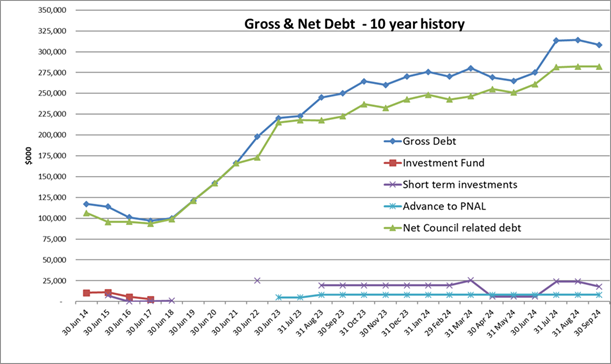
3.7 Actual
finance costs incurred by the Council depend on the actual debt levels and the
interest rate. During the three months gross finance costs (including
interest, line fees and the effects of payments relating to swaps) amounted to
$3.67m compared with the budget for the year of $14.52m.
3.8 $271k
of this expense relates to $19m raised on 8 July 2024 to prefund debt maturing
on 15 April 2025. This was offset by unbudgeted interest income of $265k
received from short term investment of $18m. A further $93k of this
expense relates to the $8m of loans raised on behalf of Palmerston North
Airport Limited (PNAL) and this was offset by $99k received from PNAL for the
advance.
3.9 Deducting
interest income from the gross interest expense of $3.67m means a net interest
expense for the quarter of $3.09m compared with the annual budget of $14.16
m.
3.10 The
effective weighted average interest rate for the year to date is 4.8% compared
with the budgetary assumption of 5%.
3.11 The
Council has entered financial instruments related to its debt portfolio
utilising swap trading lines established with Westpac, ANZ and BNZ. The
details of these are shown in Schedule 2 attached.
The value of these instruments is measured in terms of its
‘mark-to-market’, i.e. the difference between the value at which
the interest rate was fixed and the current market value of the
transaction. Each of these transactions was valued at the date they were
fixed and again at the reporting date. Financial reporting standards
require the movement in values to be recorded through the Council’s
Statement of Comprehensive Income (Profit & Loss Account). They have
been revalued as at 30 September 2024. The latest valuation is an asset
of $2.29m compared with an asset of $9.35m as at 30 June 2024. The
reduction in asset value of $7.06m is a consequence of reducing market interest
rates.
3.12 The
Council’s Treasury Policy contains guidelines regarding the measurement
of treasury risk as follows:
· Funding and
liquidity risk is managed by the Council maintaining a pre-set portion of its
debt in a range of maturity periods, e.g. < 3 years, 3 - 7 years, 7 years
+.
· Interest
rate risk is managed by the Council maintaining the ratio of debt that is
subject to floating versus fixed interest rates within pre-set limits.
3.13 The
position compared to the policy is illustrated in the graphs in Schedule 3 attached.
3.14 The
funding and liquidity risk position can be summarised as follows:
· Council’s
liquid position complies with policy.
· Since 1 July
2024 $44m of term debt has been raised and $4.8m of bank debt and $6m of term
debt ha ns been repaid.
3.15 The
interest rate risk position describes the portion of the overall forecast debt
that is fixed versus floating and can be summarised as follows:
· There is
significant uncertainty about forecast levels of future debt – this very
much depends on a number of factors including future Council decisions on the
proposed capital expenditure programme, the future structure for the provision
of three waters and the extent of external funding able to be organised from
other arrangements.
· Policy
compliance at 30 September 2024 is based on the debt forecasts in the adopted
Long-term Plan.
3.16 The
Treasury Policy also contains requirements in relation to counterparty credit
risk – this relates to investments and financial risk management
instruments. A new $20m forward start swap agreement was entered on 12
July fixing interest rates for this sum at 3.695% from 2025 to 2030.
The position as at 30 September 2024 is shown in Schedule
4 attached.
3.17 Council’s
credit lines with the banks include a $18m three-year credit facility with
Westpac Bank (maturing 31 October 2025) and a revolving $25m three-year
facility with ANZ Bank (maturing 31 March 2027).
4. CONCLUSION AND NEXT STEPS
4.1 Gross
finance costs for the quarter to 30 September (including interest, line fees
and the effect of swaps) was $3.67m compared with budget for the year of
$14.52m. The net finance cost (after considering the interest income from
term investments and the advance to Palmerston North Airport Ltd) is $3.09m
compared with the budget for the year of $14.16m.
4.2 In
conjunction with Council’s treasury advisors hedging instruments are
regularly reviewed in an effort to ensure the instruments are being utilised to
best advantage as market conditions change. The level of hedging cover is
also reviewed as the forecasts of future debt levels are revised.
4.3 Council’s
borrowing strategy is continually reviewed, in conjunction with Council’s
treasury advisors, to ensure best advantage is taken of Council’s quality
credit rating.
4.4 A
further performance report will be provided after the December 2024 quarter.
5. Compliance and administration
|
Does the Committee have
delegated authority to decide?
|
Yes
|
|
Are the decisions significant?
|
No
|
|
If they are significant do they
affect land or a body of water?
|
No
|
|
Can this decision only be made
through a 10 Year Plan?
|
No
|
|
Does this decision require
consultation through the Special Consultative procedure?
|
No
|
|
Is there funding in the current
Annual Plan for these actions?
|
Yes
|
|
Are the recommendations
inconsistent with any of Council’s policies or plans?
|
No
|
|
Contribution to strategic
direction and to social, economic, environmental and cultural well-being
|
Managing the Council’s
treasury activity is a fundamental component of day to day administration of
the Council.
|
|
|
|
Attachments
|
1.
|
Schedules
1 to 4 ⇩ 
|
|
REPORT
TO: Strategy
& Finance Committee
MEETING DATE: 13
November 2024
TITLE: Local
Water Done Well Funding Reallocation
PRESENTED BY: Scott
Mancer, Manager - Finance and Julie Keane, Transition Manager
APPROVED BY: Cameron
McKay, General Manager Corporate Services
RECOMMENDATION(S)
TO Council
1. That Council
approve the reallocation of $928,503 DIA funding for Better Off Funding from
Programme 1054 – Ashhurst Water Quality Improvements to Local Water Done
Well Transition Support in the Wastewater operating budget, subject to DIA
approval.
2. That Council
note that the capital expenditure budget for programme 1054 was reduced at the
Council meeting on 6 November 2024.
3. That Council
increase the Wastewater operating budget for both revenue and expenditure by
$306,672 in the 2024/25 Financial Year for Transition Support.
4. That Council
refer to the Annual Budget process a revenue and expenditure budget of $621,831
for Transition Support for the 2025/26 Financial Year.
5. That Council
agree that $928,503 will be spent across the 2024/25 and 2025/26 Financial
Years and that any unspent funding in 2024/25 will be adjusted via carry
forwards at 30 June 2025.
1. BackGround
1.1 The
previous Government of New Zealand was undertaking a reform programme for
‘Three Waters’ (drinking water, wastewater and stormwater) service
delivery for communities. Under this reform programme the Department of
Internal Affairs (DIA) provided ‘Council Transition Support’ to
local authorities under the Three Waters Transition Funding Agreement to the
value of $825,000 (Tranche 1). This was to offset the additional costs
Council would incur from supporting the establishment and transition of
activities to the proposed ‘Water Services Entities’.
1.2 The
current Coalition Government of New Zealand repealed the previous
Government’s water services legislation in February 2024. The
Minister of Local Government has outlined the Coalition Government’s plan
to implement a new programme, Local Water Done Well, through two further pieces
of legislation.
1.3 This
change placed unspent funds and yet to be claimed funds in limbo.
Subsequently, the Government agreed these funds would transfer to its new
programme and DIA contacted Councils to advise how any unspent Transition
Support Funding would be transferred. A new ‘Local Water Done Well
Support’ Agreement was issued to Council in May 2024 (value $412,500
– Tranche 2) making the unclaimed funds under the previous Three Waters
Transition Support Funding Agreement available to Council to support Local
Water Done Well activities.
1.4 In
addition to the request to redirect Transition Funding, the DIA wrote to
Councils in April 2024 to advise the Cabinet had directed them to work in
partnership with CIP and Councils to:
· Review
the status of current Better Off projects, including expenditure incurred to
date and currently committed expenditure; and
· Identify,
by mutual agreement, if any opportunities existed for Council to redirect
unspent Better Off Funding to increase investment in water infrastructure or to
help establish new water services delivery organization.
1.5 PN
City Council’s Better Off Funding agreement totalled $8.16M of which
$1.52M had been spent to 31 December 2023, leaving a balance of $6.64M to
consider for redirection. Council made this decision as part of the Long-term
Plan (LTP) Deliberations at the meeting of 29 May 2024 (95.5-24).
1.6 Programme
1054 is currently receiving the Better Off Funding, as reallocated in the LTP.
In the current year, Officers have conducted a thorough procurement and tender
process, signing a contract that firmly establishes the costs for the planned
work. This has resulted in savings of $928,503 to be reallocated.
2. forecast expenditure to 30 June 2024
2.1 For
transition funding to date, Council has received $1,237,500 (Tranche 1 and 2)
from Central Government. At 30 June 2024, Council had spent $941,865. From 1
July 2024, there was funding available for use towards transition support
totalling $295,634.
2.2 A
budget forecast for 2024/25, including actuals from July – September and
assumptions from October to June, has been prepared taking into consideration
the requirements necessary to deliver the full work package based on best
available information at this time. Table 1 below shows the Total Cost Basis
which calculates the overall total cost of the project, taking into account the
remaining transition funding available from DIA as at 1 July 2024.
Table
1: Total Cost
|
Total Cost Basis
|
|
Opening Balance
|
$295,634
|
|
PN City Council Internal Costs
|
($478,852)
|
|
External Costs
|
($602,306)
|
|
Total Costs
|
($1,081,158)
|
|
Forecasted Total Budget
Shortfall
|
($785,524)
|
2.3 Internal
PN City Council costs relate to staff time that is already funded as part of
Council Budgets, meaning the actual outstanding funding required is limited to
those for external service providers only. External costs are for services
including:
· Programme
management
· Specialist
advice
· Backfilling
of staff where required
2.4 Table
2 below shows the External Costs only:
Table
2: External Cost Only
|
External Cost Basis
|
|
Opening Balance
|
$295,634
|
|
External Costs
|
($602,306)
|
|
Forecasted Total Budget
Shortfall
|
($306,672)
|
2.5 Under
the External Costs shown in Table 2, it is expected that the last of the DIA
Transition Support funding will be fully used by January 2025 and that the
shortfall will need to be funded to continue the transition programme.
2.6 Transition
Support is likely to increase through the 2025/26 Financial Year to meet the
demands of the Local Water Done Well programme and deliver upon any Council
direction that is given.
2.7 The
available funding from savings in the current year will be greater than what is
required for transition support in 2024/25 Financial Year and it is intended
that any funding not used for transition support in 2024/25 will be required
for transition support in 2025/26.
3. Conclusion
3.1 Officers
believe that transferring the surplus Better Off Funding from programme 1054
– Ashhurst Water Quality Improvements to fund transition costs in the
current year is the best use of the available funding from DIA and is in line
with the guidance outlined in 1.4 of this report.
4. Next actions
4.1 Officers
will seek approval from DIA to reallocate the funding from a capital project to
Transition Support.
4.2 Officers
will confirm actual year spend and forecasts as soon as practical, to inform
the Annual Budget 2025/26 process.
5. Compliance and administration
|
Does the Committee have
delegated authority to decide?
|
Yes
|
|
Are the decisions significant?
|
No
|
|
If they are significant do they
affect land or a body of water?
|
No
|
|
Can this decision only be made
through a 10 Year Plan?
|
No
|
|
Does this decision require
consultation through the Special Consultative procedure?
|
No
|
|
Is there funding in the current
Annual Plan for these objectives?
|
No
|
|
Are the recommendations
inconsistent with any of Council’s policies or plans?
|
No
|
|
The recommendations contribute
to:
(Not Applicable)
(Not Applicable)
|
|
The
recommendations contribute to the achievement of objective/objectives
in:
14.
Mahere mana urungi, kirirarautanga hihiri
14. Governance and Active
Citizenship Plan
The objective is: Gather and use
data to inform decision making and council activities
|
|
Contribution to strategic
direction and to social, economic, environmental and cultural well-being
|
Contribution to
Council’s Strategic Direction regarding transparent financial decision
making.
|
|
|
|
Attachments
Nil
Memorandum
TO: Strategy
& Finance Committee
MEETING DATE: 13
November 2024
TITLE: Palmerston
North City District Plan: Proposed Plan Change I - Increasing Housing Supply
and Choice
Presented
By: Jono
Ferguson-Pye, City Planning Manager and Sarah Jenkin, Consultant Planner
APPROVED BY: David
Murphy, General Manager Strategic Planning
RECOMMENDATIONS TO
Strategy & Finance Committee
1. That
the Committee approve for public consultation Palmerston North
City District Plan: Proposed
Plan Change I – Increasing Housing Supply and Choice (Attachment 4),
under clause 5, schedule 1 of the Resource Management Act 1991.
1. INTRODUCTION
1.1 The
purpose of this memorandum is to seek approval for Palmerston North City
District Plan: Proposed Plan Change I – Increasing Housing Supply and
Choice (PC:I) to proceed to public notification.
1.2 PC:I
has been prepared to ensure it gives effect to the National Policy Statement
for Urban Development (NPS-UD 2020) and the 2023 Housing and Business Needs
Assessment (HBA) by providing options for different housing typologies through
the District Plan.
1.3 PC:I
proposes to rezone 815 hectares of the existing Residential Zone to create a
Medium Density Residential Zone (MRZ).[1]
PC:I also seeks to rezone 17
Summerhays Street, the Huia Street Reserve (Pt Lot 1 DP545 and PT Lot 2 DP545
only, being the part not used by the Manawatū Lawn Tennis Club) and
216-218 Ferguson Street to MRZ.[2]
1.4 Consistent with the approach outlined in
the City Planning Priorities and 3-Year Work Programme report presented to
the Strategy & Finance Committee on 14 August 2024, the new planning
framework for the MRZ simplifies the process for medium density development
compared to the current Multi-Unit Housing Area (MUHA) District Plan
provisions.
1.5 PC:I
forms part of the response to the issues raised by the development community
regarding the complexity of urban design assessment required by the current
MUHA provisions. The 14 August 2024 City Planning Priorities and 3-Year Work
Programme report outlines the broader response to these issues.
1.6 The
primary purpose of PC:I is to enable medium density housing by rezoning part of
the Residential Zone to create a MRZ in those parts of the city which:
· Accessibility:
have good accessibility between housing, jobs, education, neighbourhood
centres, community services, natural spaces, open spaces, public transport and
active transport;
· Density,
Form, Amenity and Safety: support a range of densities and forms in the
plan change area with a good level of both onsite and offsite amenity and
safety outcomes;
· Climate
Change: support reductions in greenhouse gas emissions and are resilient to
the likely current and future effects of climate change;
· Stormwater:
mitigate increased stormwater discharges as a result of intensification;
· Adjoining
Properties: mitigate the effects of medium density residential development
on adjoining properties and sites of significance; and
· Respond
to Constraints: respond to the surrounding environment’s land uses
and site constraints, in particular those areas that abut significant
infrastructure or have infrastructure and natural hazard constraints that need
to be addressed.
1.7 Replacement
of Multi Unit Housing Areas: MUHA areas A & B (Central-City) and
MUHA Areas C & D (at Awapuni, Highbury, Hokowhitu & Milson) will be
replaced by the proposed MRZ.[3]
1.8 The
MUHA areas at Napier Road, Hokowhitu Lagoon, Matangi, and Aokautere will remain
and be subject to the existing provisions of the Operative District Plan (ODP).
1.9 Providing
for Papakāinga: Papakāinga is being enabled as a
permitted activity subject to meeting the MRZ development standards.
1.10 Responding
to Stormwater Constraint: PC:I will enable medium density
housing across those parts of the city which are not impacted by existing
stormwater constraints and provide for medium density housing across those
parts of the city where site-specific mitigation for flooding and stormwater is
likely to be required, through the introduction of a Stormwater Overlay.[4]
1.11 The
Stormwater Overlay is informed by the PC:I Stormwater Servicing Assessment
(SSA)[5].
The SSA identifies areas that may be at risk from flood hazard and is not
intended for site-specific assessments.
1.12 The PC:I
trigger for site specific stormwater assessment is when a consent application
is made for subdivision or development for a site located within the Stormwater
Overlay.
1.13 Housing
Choice and Supply: enabling medium density housing means
enabling the construction of different types of houses (stand-alone, terraced
housing and apartments) to provide a wider variety of housing sizes (1, 2 and
3-bed+) and tenures across a broader range of property sizes. This is
consistent with Council’s projections for infill development identified
as part of the HBA completed in 2023 (and updated in March 2024).
1.14 The scope
of the plan change excludes:
· Zoning
new greenfield growth areas outside the existing Residential Zone.
· Enabling
as a ‘permitted activity’ residential intensification in those
parts of the existing Residential Zone which are currently impacted by
flooding, and stormwater capacity and management constraints.
· A
review of engineering standards applicable to new development (Engineering
Standards for Land Development).
· Residential
Zone land at Aokautere, Ashhurst, Longburn and Bunnythorpe.
· Amendments
to give effect to the National Policy Statement for Indigenous Biodiversity Part
3, subpart 2 and Clause 3.24 (in relation to Significant Natural Areas).
2. BACKGROUND
2.1 The
Need to provide for Growth: Palmerston North is experiencing
strong population growth. The most recent population growth estimates in the
2024 Future Development Strategy (FDS) predict that the population will
increase from ~94,500 people (2023) to ~117,700 people by 2054 – a change
of nearly 25%. More people living in Palmerston North means a need for
more housing. Over the next 30 years, an additional 9,884 homes are required to
support the growing population.
2.2 PC:I
responds to the Council’s obligations under the NPS-UD to:
· enable
greater density, housing choice, and supply;
· make
planning decisions that contribute to well-functioning urban environments; and
· take
into account the urban development values and aspirations of Rangitāne o
Manawatū as articulated in FDS.
2.3 Providing
for Greater Supply and Choice of Housing will be Contested: Over
the next 10-15 years, Palmerston North will transition from a large provincial
centre to a small metropolitan city. PC:I will play a role in this transition
by enabling a greater variety and density of homes, while also ensuring a
well-functioning urban environment and improved accessibility between housing,
jobs, community services, open spaces, and public and active transport.
2.4 PC:I
signals future change to the form and function of the urban environment as we
transition to a small metropolitan city. Consequently, PC:I will be highly
contested. Some submitters may feel PC:I introduces too much change too
quickly, while others may see it as an opportunity for more homes in areas with
better accessibility to housing, jobs, community services, open spaces, and
public and active transport.
2.5 The
participatory principles of the District Plan change process under the RMA
emphasise public involvement and transparency in decision-making. These
principles ensure the community has a voice in shaping local planning outcomes.
The RMA process will provide an opportunity for our community to respond to and
shape PC:I through public notification, submissions, further submissions, and
hearings.
2.6 It
is noted changes were made to PC:I in response to consultation on draft
development standards in September and November - December 2022. In particular,
PC:I now provides for up to 3 dwellings as a permitted activity rather than 6
dwellings, as initially proposed in 2022.
2.7 A
Balanced Approach: PC:I seeks to deliver increased housing
supply and choice, while providing for built form outcomes that are appropriate
for the City. As a Tier 2 Council under the NPS-UD, PC:I has adopted some of
the core elements required of Tier 1 councils, such as providing for up to 3
dwellings as a permitted activity, building coverage, and building height.
2.8 PC:I
has also been customised to respond to local needs. The plan change aims to
avoid some of the negative outcomes associated with Tier 1 requirements in the
areas of height relation to boundary, setbacks, and outdoor living areas.
2.9 PC:I
introduces additional requirements to address the needs of the City, in particular
the management of stormwater quality and quantity.
2.10 Rate
of Change Over Time: While PC:I is proposing to rezone approximately
815 hectares of Residential Zone land to MRZ, the rate of uptake and change to
residential amenity and character across the City will be incremental over
time.
2.11 The 2023
HBA predicts that 142 new dwellings will be needed annually to meet the demand
from projected population growth for residential intensification over the next
30 years. Whilst PC:I will not provide all the capacity needed to meet this
predicted demand, based on historic building consent data, development in the
MRZ could provide at least 56 dwellings per year.
2.12 Other
intensification and brownfield residential development opportunities identified
in the FDS will need to be investigated in the future to help provide
additional capacity. Other development opportunities include Massey University,
the Business Zones (city centre), the Civic and Cultural Precinct project and
remaining historical industrial sites, e.g. Featherston Street adjacent to the
Hoffman Kiln. The scheduled wider review of the Residential Zone will also
provide opportunities to explore planning techniques to further increase
capacity.
2.13 Streamlined
Planning Approach: Currently, the District Plan manages medium density
housing development through the MUHA provisions. The development community has
raised issues about the complexity of urban design assessment required by the
MUHA provisions.
2.14 The
planning framework developed for the MRZ simplifies the process for medium
density development within the new Zone by enabling up to 3 units as a
permitted activity outside the Stormwater Overlay and putting in place a
simplified path for land use consent when development exceeds this threshold.
2.15 By way of
example, the built form and design for 4 or more dwellings in the MRZ will be
assessed against 7 matters in one policy rather than 27 assessment criteria
contained in the MUHA planning provisions.
2.16 The
Stormwater Overlay introduces additional planning controls on MRZ development
that are specific to stormwater effects only, i.e. the balance of the planning
assessment in these areas will be the same as development located outside of
the Stormwater Overlay.
2.17 Albert
Street Depot: The underlying zoning of the Albert Street Depot
is Residential Zone. Because the site meets the NPS-UD accessibility
requirements relating to open greenspace, local business areas, schools and
public transport, it is proposed to be zoned to MRZ. Given the current public
works designation at this location, this change does not affect Council’s
ability to continue to use the site as a depot.
2.18 Summerhays
Street: Council approved (Resolution 134-21) the future use of 17
Summerhays Street for housing development on 3 November 2021.
2.19 Huia
Street Reserve: Council approved (Resolution 123-20) the future use of the Huia
Street Reserve for housing development on 14 October 2020.
3. Consultation
3.1 The
Council has undertaken the following consultation:
· Clause
3 (RMA) consultation (November – 7 December 2022). Feedback was
received from Horizons Regional Council, Kainga Ora, KiwiRail and the Ministry
of Education.
· Phase
one - Pre-engagement (28 September – 19 October 2022) – invited the
community to provide feedback. The Council received 291 feedback forms and
approximately 435 comments on PN City Council Facebook posts were made.
· Phase
two – formal pre-consultation (9 November – 7 December 2022) -
the draft District Plan section and zone extent were published and feedback
sought from the community on the extent, proposed standards and any other
relevant matters. The Council received 388 feedback forms, 18 emails/letters,
and 890 Facebook comments. The Council ran two drop-in sessions which were
attended by approximately 200 people.
· FDS
(26 March – 5 May 2024) – as part of preparing the FDS, the Council
sought feedback on several options for meeting the demand for housing, business
and industrial growth over the next 30 years, including an option focused on
intensification. Council received 138 submissions. The housing growth locations
identified in the FDS included the Huia Street and Summerhays recreation
reserves.
· Information
about PC:I has also been available on the website since September 2022.
· Rangitāne
o Manawatū have also been consulted throughout the process going back to
2019.
· Pursuant
to Clause 4(A) of the RMA, a copy of draft PC:I and supporting information was
provided to Tanenuiarangi Manawatū Incorporated (as Rangitāne o
Manawatū’s mandated iwi authority) on 4 September 2024, followed by
a workshop on 4 October 2024.
· PC:I
has been developed in partnership with Rangitāne and their feedback (via
Tanenuiarangi Manawatū Incorporated) influences the proposed
provisions.
3.2 The
above work meets our consultation obligations under Clauses 3 and 4A of the
Resource Management Act 1991.
4. Key Changes
4.1 The
key changes proposed by PC:I include the following:
· The rezoning
of 815ha of Residential Zone land to MRZ. This
represents approximately 32% of the existing Residential Zone land in the City.
· The
new planning framework for the MRZ simplifies the process for medium density
development compared to the current MUHA District Plan provisions. This change
directly responds to concerns raised by the development community.
· The rezoning
of 17 Summerhays Street, the Huia Street Reserve (Pt Lot 1 DP545 and PT Lot 2
DP545, being the part not used by the Manawatū Lawn Tennis Club), the
Albert Street Depot and 216-218 Ferguson Street to MRZ.
· The
identification of a Stormwater Overlay over 624ha (75%) of the MRZ.
· Within
the MRZ (for properties outside the Stormwater Overlay) up to three dwellings
will be a permitted activity (not needing a resource consent) subject to
compliance with standards.
· Developers
of properties within the Stormwater Overlay will require resource consent and
will be required to provide a stormwater assessment to identify the extent and
effects of flood and/or overland stormwater flow hazards and any required
mitigation.
· Developers
of properties proposing four or more dwellings on a site will require a
resource consent.
· Enabling
Papakāinga as a permitted activity.
5. NEXT STEPS
5.1 Notify
PC:I for submissions under the Resource Management Act 1991.
5.2 Officers
are planning to commence citywide notification of PC:I on 19 November 2024. The
notification period will extend beyond the required minimum 20 working day
period, continuing until 4 February 2025.
6. Compliance and administration
|
Does the Committee have
delegated authority to decide?
If Yes quote relevant clause(s)
from Delegations Manual (4.6)
|
Yes
|
|
Are the decisions significant?
|
No
|
|
If they are significant, do they
affect land or a body of water?
|
No
|
|
Can this decision only be made
through a 10 Year Plan?
|
No
|
|
Does this decision require
consultation through the Special Consultative procedure?
|
No
|
|
Is there funding in the current
Annual Plan for these actions?
|
Yes
|
|
Are the recommendations
inconsistent with any of Council’s policies or plans?
|
No
|
|
The recommendations contribute
to:
Whāinga 1: He tāone auaha, he tāone
tiputipu
Goal 1: An innovative and
growing city
|
|
The
recommendations contribute to the achievement of objective/objectives in
the:
15.
Mahere whare
15. Housing Plan
The objectives are:
· Implement the
National Policy Statement on Urban Development Capacity
· Rezone part of
the Residential Zone to Medium Density Residential.
|
|
Contribution to strategic
direction and to social, economic, environmental and cultural well-being
|
Proposed PC:I will assist
Council in meeting its obligations to ensure there is sufficient development
capacity to meet projected demand, which will assist with improving housing
affordability and being responsive to growth.
|
|
|
|
Attachments
|
1.
|
Attachment
1: MRZ and Stormwater Overlay ⇩ 
|
|
|
2.
|
Attachment
2: Sites Proposed for Rezoning to MRZ ⇩ 
|
|
|
3.
|
Attachment
3: Existing Residential Zone and MUHA ⇩ 
|
|
|
4.
|
Attachment
4: PC:I Planning Provisions, Section 32 Report and Supporting Technical
Assessments (attached separately) 
|
|
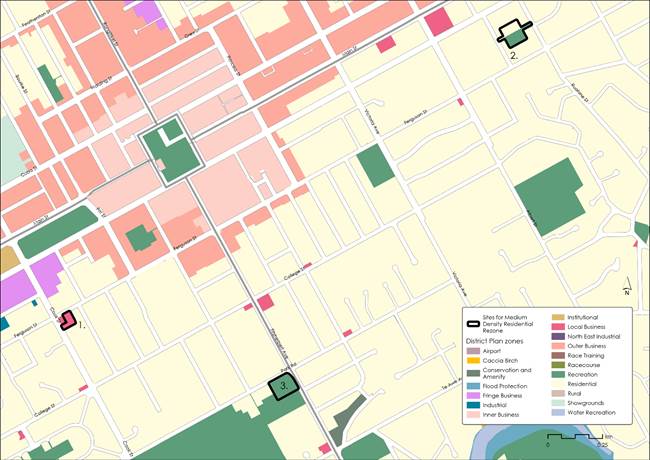
Memorandum
TO: Strategy
& Finance Committee
MEETING DATE: 13
November 2024
TITLE: Elected
Member Expenditure 2023/24
Presented
By: Scott
Mancer, Manager - Finance
APPROVED BY: Cameron
McKay, General Manager Corporate Services
RECOMMENDATION(S)
TO Strategy & Finance
Committee
1. That the
Committee receive the memorandum titled ‘Elected Member Expenditure
2023/2024’, presented to the Strategy & Finance Committee on 13
November 2024.
1. ISSUE
1.1 This
report is presented annually in accordance with the Elected Member Expenses
Policy. Section 10 states: ‘Reporting of Expenses: All expenses
(including the cost of taxis) claimed by Elected Members are to be reported
annually to the Strategy & Finance Committee (or equivalent committee).
This will include all discretionary expenditure of the Mayor and Deputy Mayor,
including credit card expenses.’
1.2 This
report covers the financial year from 1 July 2023 to 30 June 2024.
2. BACKGROUND
2.1 At
its meeting of 16 November 2022, Council gave delegation to the Chair of the
Strategy & Finance Committee or the Chair of Risk & Assurance Committee
to approve expenses, including credit card transactions incurred by the Mayor.
Credit card expenses are approved retrospectively.
2.2 Furthermore,
the expenditure reported here is subject to audit undertaken by Audit NZ
through the audit of the annual report. Their scope includes reviewing the
effectiveness and efficiency, and testing for a lack of probity or financial
prudence. Findings are then reported to the Risk & Assurance Committee. At
the time of writing the report, Officers had just completed the audit for the
2023/24 financial year and the close out meeting, including the Management
Letter with findings, had not yet been received.
2.3 This
report, therefore, adds a level of good practice by providing a summary of the
expenses of the Mayor and Deputy Mayor to the Strategy & Finance Committee
in a regular and timely manner.
3. EXPENDITURE
3.1 In
Table 1 below is a summary of relevant expenditure from the Mayoral Office,
Mayor’s Discretionary, Mayor’s Relief Fund and Elected Member
Support. The Mayoral Office budget includes items for Citizenship Ceremonies
and Civic Awards. The summary presents only the controllable expenditure for
these budget lines for the 2023/24 financial year.
3.2 Uncontrollable
expenditure includes overheads and internal staff time.
3.3 Table
1 includes expenditure from Tables 2 and 3. It also includes only some
expenditure from Tables 4 and 5, as some expenditure is covered from other
budgets such as Governance, Events or International Relations when Elected
Members are on official Council business.
3.4 Even
though expenditure items are over budget in Tables 2 and 3, overall expenditure
has remained under budget. Overall total controllable expenditure was $181k
versus a budget of $199k for the year.
Table 1: Comparative
totals for the previous three financial years
|
Financial
year
|
Total controllable expenditure
|
Budget
|
|
2021/22
|
90,685
|
156,216
|
|
2022/23
|
145,142
|
160,125
|
|
2023/24
|
181,323
|
199,200
|
Table 2: Mayor’s
Office budgets (sensitive expenditure only)
|
|
23/24 Actual
|
23/24 Budget
|
22/23 Actual
|
|
Hospitality
|
45,799
|
24,700
|
22,451
|
|
Training
|
2,327
|
8,700
|
6,650
|
|
Travel
and Accommodation
|
32,397
|
23,600
|
27,595
|
|
Gifts
|
5,628
|
Not separately budgeted
|
6,490
|
|
Taxi
Charges
|
3,247
|
Not separately budgeted
|
3,597
|
|
SUB - TOTAL
|
$89,398
|
$57,000
|
$66,784
|
|
Other
Expenses*
|
$91,925
|
$145,400
|
$78,358
|
|
GRAND TOTAL
|
$181,323
|
$199,200
|
$145,142
|
* Other Expenses includes items
related to the running of the Mayor’s Office activity and covers
expenditure items like consultancy, media support, venue hire (Citizenship/Civic
Awards/Duke of Ed. Awards, etc.) as well as discretionary fund grants and
donations
Table 3: Discretionary
Fund budgets (Mayor)
|
|
23/24 Actual
|
23/24 Budget
|
22/23 Actual
|
|
Mayoral
Discretionary Fund
|
13,379
|
11,400
|
16,458
|
|
Mayoral
Relief Fund
|
4,458
|
1,100
|
8,292
|
|
(Donations
received)
|
(8,648)
|
-
|
(3,352)
|
|
TOTAL
|
$9,189
|
$12,500
|
$21,398
|
4. Sensitive expenditure
4.1 Tables
4 and 5 provide a summary of the sensitive expenditure as the policy for both
non-credit card and credit card transactions respectively.
Table
4: Sensitive expenditure (by Mayor, Deputy Mayor) excluding credit card
transactions
|
|
GRANT SMITH
|
DEBI MARSHALL-LOBB
|
|
Hospitality
|
44,670
|
-
|
|
Travel
and accommodation
|
24,868
|
45
|
|
Training
|
2,327
|
-
|
|
Gifts
|
8,953
|
-
|
|
Internet
|
-
|
-
|
|
Taxi
Charges
|
3,247
|
-
|
|
TOTAL
|
$84,066
|
$45
|
Table 5: Credit card
(by Mayor, Deputy Mayor)
|
|
GRANT SMITH
|
DEBI MARSHALL-LOBB
|
|
Hospitality
|
9,305
|
-
|
|
Travel
and accommodation
|
5,950
|
-
|
|
Gifts
|
5,818
|
-
|
|
Training
|
1,166
|
-
|
|
TOTAL
|
$22,239
|
-
|
5. expense claims
5.1 Below
is a summary of all expense claims made by all Elected Members. There is an
overlap with expenses stated in tables above.
Table 6: Reimbursements
(all Elected Members)
|
|
Travel & Accomodation
|
Hospitality
|
Internet/Phone
|
TaXI Charges
|
Total
|
|
Kaydee
Zabelin
|
442
|
-
|
-
|
-
|
$442
|
|
Orphée
Mickalad
|
1,902
|
-
|
-
|
-
|
$1,902
|
|
Patrick
Handcock
|
1,162
|
-
|
-
|
-
|
$1,162
|
|
Rachel
Bowen
|
998
|
-
|
-
|
-
|
$998
|
|
Roly
Fitzgerald
|
936
|
-
|
-
|
-
|
$936
|
|
William
Wood
|
45
|
-
|
-
|
-
|
$45
|
Table 7: Elected
Member taxi use – invoiced to Council
|
|
TaXI Charges
|
|
Orphée
Mickalad
|
$185
|
|
Patrick
Handcock
|
$237
|
|
Rachel
Bowen
|
$277
|
|
Roly
Fitzgerald
|
$131
|
|
William
Wood
|
$124
|
6. NEXT STEPS
Annual reporting to the
Committee will continue next year.
7. Compliance and administration
|
Does the Committee have
delegated authority to decide?
|
Yes
|
|
Are the decisions significant?
|
No
|
|
If they are significant do they
affect land or a body of water?
|
No
|
|
Can this decision only be made
through a 10 Year Plan?
|
No
|
|
Does this decision require
consultation through the Special Consultative procedure?
|
No
|
|
Is there funding in the current
Annual Plan for these actions?
|
No
|
|
Are the recommendations
inconsistent with any of Council’s policies or plans?
|
No
|
|
The recommendations contribute
to: N/A
|
|
The
recommendations contribute to the achievement of objective/objectives
in:
14.
Mahere mana urungi, kirirarautanga hihiri
14. Governance and Active
Citizenship Plan
|
|
Contribution to strategic
direction and to social, economic, environmental and cultural well-being
|
Open and transparent
governance contributes to trust and reputation of the Council.
|
|
|
|
Attachments
NIL
Report
TO: Strategy
& Finance Committee
MEETING DATE: 13
November 2024
TITLE: Deliberations
- Draft Dangerous, Affected, and Insanitary Buildings Policy 2024
PRESENTED BY: Lili
Kato, Policy Analyst
APPROVED BY: David
Murphy, General Manager Strategic Planning
RECOMMENDATION TO STRATEGY &
FINANCE COMMITTEE
1. That the
Committee receive the submissions relating to the Draft Dangerous, Affected,
and Insanitary Buildings Policy 2024 (Attachment 3).
RECOMMENDATIONS TO Council
2. That Council
adopt the Dangerous, Affected, and Insanitary Buildings Policy 2024 (Attachment
1).
3. That Council
rescind the Dangerous and Insanitary Buildings Policy 2006.
Summary of options analysis for the
deliberations on the draft dangerous, affected, and insanitary buildings policy
|
Problem
or Opportunity
|
Community consultation on the
Draft Dangerous, Affected, and Insanitary Buildings Policy 2024 has
concluded. Community views have been gathered and analysed and further
changes proposed to the draft Policy.
The Committee can recommend
Council either adopt the Policy (Attachment 1) or not adopt the Policy.
|
|
OPTION 1:
|
Recommend that Council adopt
the Dangerous, Affected, and Insanitary Buildings Policy 2024
This option is recommended.
|
|
Community
Views
|
Different views on the proposal
have been shared by members of the community – some in favour, some not
in favour. Six submissions were received and the majority were in support of
the proposed changes to the Policy. We note that the scope of this Policy is
very narrow (as determined by legislation) and we did not expect wide
community interest.
|
|
Benefits
|
Adopting the draft Policy means
that current best practice is able to be incorporated into a Policy that has
not been reviewed since it was adopted in 2006. Council will also fulfil a
statutory obligation to update the Policy to include ‘affected
buildings’.
|
|
Risks
|
None identified.
|
|
Financial
|
None identified.
|
|
OPTION 2:
|
Recommend that Council does
not adopt the Dangerous, Affected, and Insanitary Buildings Policy 2024
This option is not recommended.
|
|
Community
Views
|
Two submissions received by
Council from individuals on the draft Policy supported not making the
proposed changes. Option 2 supports those submitters. We note that the scope
of this Policy is very narrow (as determined by legislation) and we did not
expect wide community interest.
|
|
Benefits
|
None identified.
|
|
Risks
|
Council will not comply with the
obligation to update the Policy to include ‘affected buildings’.
Council will therefore be unable to invoke powers to identify and remedy
these buildings.
|
|
Financial
|
None identified.
|
Rationale for the recommendations
1. Overview of the problem or opportunity
1.1 Community
consultation on the Draft Dangerous, Affected, and Insanitary Buildings Policy
2024 has concluded.
1.2 Council
received 6 submissions to its proposal, and none of the submitters chose to
speak in support of their submission.
1.3 The
Committee should now deliberate. For the purposes of deliberation, this report
and its attachments provide analysis and advice, and outline any recommended
changes to the Policy in response to submissions received.
1.4 Following
deliberation, the Committee may recommend Council adopt the Policy.
2. Background and previous council decisions
2.1 In
2006 Council adopted the Dangerous and Insanitary Buildings Policy. The
Buildings Act 2004 section 132(4) requires Council to review the Policy within
five years of its adoption. However, failure to review within this timeframe
does not render it ineffective as stipulated in section 132(5) of the Act. This
is the first review of the Policy since its adoption.
2.2 On
14 August 2024, the Strategy & Finance Committee[6] considered the draft
Dangerous, Affected, and Insanitary Buildings Policy 2024 and approved it for
public consultation.
2.3 The
written submission period was open from 02 September until 07 October 2024.
2.4 We
note that the scope of this Policy is very narrow (as determined by
legislation) and we did not expect wide community interest.
3. Description of options
3.1 The
Committee has two options.
Option 1: Recommend Council adopt the Policy.
Option 2: Not recommend Council adopt the Policy.
3.2 Advice
on each of these options is elaborated on in section 4 of this report.
4. Analysis of options
Option 1: Recommend
Council adopt the Policy
4.1 Council
has consulted the community on its proposed changes to the Policy.
4.2 Of
the 6 written submissions received on the draft Policy, 2 were opposed to the
proposed Policy. The remaining 4 submissions were generally supportive, with
some suggestions for changes to the Policy.
4.3 Attachment
2 provides a breakdown of the 6 submissions received. All changes which were
consulted on are recommended for adoption, with additional changes made in
response to a submission received. There are also some additional minor changes
to the strategic context recommended that were omitted from the draft.
Submissions opposing
proposed Policy
4.4 The
main theme for one submitter who was opposed to the Policy was in relation to
cutting costs. The submitter assumed that changes to the Policy would amount to
increasing costs, particularly in rates. There are no financial implications in
the proposed changes to this Policy.
4.5 The
other submitter who was opposed to the proposed Policy expressed concerns in
relation to the Mātangi (Whiskey Creek) residential area private plan
change. The submitter claims that the area is a flood plain. These concerns were
outside the scope of the review and have been directed to the relevant staff to
follow up.
Submissions in support of
proposed Policy
4.6 The
remaining 4 submissions (2 from individuals and 2 from organisations) were
supportive of the Policy overall. The submission from the Manawatū
Tenants’ Union was supportive of the proposed Policy but did seek changes
to incorporate the ‘Healthy Homes Standard’[7] as another mechanism to
hold landlords to account. This change was not accepted because the
definitions of dangerous, affected and insanitary buildings are set out in the
Building Act 2004, which is what the Policy enforces. Therefore, it is not
within Council’s mandate to extend these definitions to incorporate the
Healthy Homes Standard. Changes of this nature can only be made by Parliament.
4.7 We
note that the Community Committee resolved on 23 October to recommend a broader
resolution in support of the Healthy Homes Standard to Council.
4.8 The
submission from Te Whatu Ora – Health New Zealand was also supportive of
the Policy. They sought to include one change to the draft Policy, in regard to
Te Whatu Ora being notified by Council when they have determined a building to
be ‘insanitary’ under the Building Act 2004. This change is
accepted and is included in the proposed Policy.
Recommended changes to the
Policy
4.9 Following
public consultation the recommended changes include:
Changes to Section 2 - Strategic Context
· Changing
the format of this section to align with other Council policies.
· Adding
goal one, two and the relevant outcomes that this Policy will contribute to.
These goals and outcomes were not included in the draft Policy. The exact
wording proposed is:
“The Policy contributes to Whāinga 1: He tāone
auaha, he tāone tiputipu - Goal 1: An innovative and growing city, and
specifically to the following outcome, where we want our communities to have:
o A city that fosters pride, and supports
the aspirations of people and communities
The Policy contributes to Whāinga 2: He tāone whakaihiihi,
tapatapahi ana - Goal 2: A creative and exciting city, and specifically to the
following outcome, where we want our communities to have:
o Our unique heritage preserved and
promoted.”
· Deleting
the reference to the Community Safety and Health Plan. The reference to
this Plan is redundant because reference to Goal 3 and the relevant outcomes
which encompass this Plan is already included. The following wording is deleted
from the proposed Policy:
“The
Policy contributes to
fulfilling the Mahere haumaru hapori, hauora hapori - Community Safety and
Health Plan to make Palmerston North a healthy city, where our community is
safe and feels safe.”
Changes to Section 6 (e) – Taking action under
the Building Act 2004
· Adding
a requirement to notify Te Whatu Ora – Health New Zealand when Council
have determined a building to be insanitary. The exact wording:
“(vi) Notify Te
Whatu Ora – Health New Zealand through the Palmerston North Health
Protection Team or other relevant staff when Council has determined a building
to be insanitary.”
Option 2: Not recommend Council
adopt the Policy
4.10 Option 2
stops the current process. Unless further instruction is provided by the
Committee to staff, no additional work will be completed.
4.11 If Option
2 proceeded, the current Policy will remain in force. Council will be
non-compliant with the statutory obligation to update the Policy to include
‘affected buildings’.
5. Outline of community engagement process
5.1 Council
completed early engagement and formal consultation with the community as
required under section
132(1) of the Building Act 2004. Partners and stakeholders, the community
more widely, and other interested parties were invited to make a submission on
the proposals during the consultation period.
5.2 Printed
copies of the Statement of Proposal, which included hardcopy submission forms,
were made available from the Customer Service Centre and all Council
libraries. A consultation page that explained the proposal of Council and
information about how people could get in touch, including an online submission
form, was published on the Council’s website.
5.3 Consultation
information was also shared through Council’s social media channels,
Build Palmy email newsletter, and also a postal letter to over 1000 commercial
building owners and occupiers.
6. Conclusion
6.1 Council
consulted with the community on proposed changes to the Dangerous, Affected,
and Insanitary Buildings Policy. Through submissions, the community responded
to the proposal, indicating reasons they supported the proposal (or specific
aspects of it), why they did not support the proposal, and requested Council
consider further changes.
6.2 Following
an analysis of the submissions, one further change to the Policy is proposed,
along with minor changes to the strategic context that were omitted from the
initial draft.
6.3 The
report recommends that the draft Dangerous, Affected, and Insanitary Buildings
Policy 2024 is adopted (Attachment 1).
6.4 If
adopted the Policy will be effective from the date of adoption.
7. Next actions
7.1 Once
adopted Council will provide a copy of the Policy to the Chief Executive of the
Ministry of Business, Innovation and Employment as required by section
132 (3) of the Building Act 2004.
7.2 The
community will be notified that the Policy has come into effect on the date of
adoption.
7.3 Public
notices will be placed, and submitters will be contacted and advised of the
outcome of the consultation process. The Policy will be published on
Council’s website, with physical copies available in the Customer Service
Centre.
8. Compliance and administration
|
Does the Committee have delegated
authority to decide?
|
No
|
|
Are the decisions significant?
|
No
|
|
If they are significant do they
affect land or a body of water?
|
No
|
|
Can this decision only be made
through a 10 Year Plan?
|
No
|
|
Does this decision require
consultation through the Special Consultative procedure?
|
Yes
|
|
Is there funding in the current
Annual Plan for these objectives?
|
Yes
|
|
Are the recommendations
inconsistent with any of Council’s policies or plans?
|
No
|
|
The recommendations primarily
contribute to:
Whāinga 3: He hapori tūhonohono, he hapori
haumaru
Goal 3: A connected and safe
community
|
|
The
recommendations contribute to the achievement of objective/objectives
in:
9.
Mahere haumaru hapori, hauora hapori
9. Community Safety and
Health Plan
The objective is: Assess and
manage risks arising from dangerous and insanitary city buildings.
|
|
Contribution to strategic
direction and to social, economic, environmental and cultural well-being
|
The Dangerous, Affected and
Insanitary Buildings Policy ensures that Council can have a pragmatic and
agile response to identifying and remedying buildings that may endanger the
people who use them and surrounding property in Palmerston North.
|
|
|
|
Attachments
|
1.
|
Dangerous,
Affected, and Insanitary Buildings Policy 2024 ⇩ 
|
|
|
2.
|
Summary
of Submissions - Draft Dangerous, Affected, and Insanitary Buildings Policy
2024 ⇩ 
|
|
|
3.
|
Submissions
- Draft Dangerous, Affected, and Insanitary Buildings Policy 2024 ⇩ 
|
|
Report
TO: Strategy
& Finance Committee
MEETING DATE: 13
November 2024
TITLE: Draft
Waste Management and Minimisation Bylaw - approval for consultation
PRESENTED BY: Peter
Ridge, Senior Policy Analyst
APPROVED BY: David
Murphy, General Manager Strategic Planning
RECOMMENDATION(S)
TO Strategy & Finance
Committee
1. That the
Committee agree for public consultation the draft Waste Management and
Minimisation Bylaw and Administration Manual (as shown in Attachment 1).
Summary of options analysis for Draft Waste Management and
Minimisation Bylaw - approval for consultation
|
Problem
or Opportunity
|
Council decided in August 2021 to
produce a revised Waste Management and Minimisation Bylaw for public
consultation. Following the adoption of the Waste Management and
Minimisation Plan earlier this year, the opportunity is for the Committee to
agree for consultation the draft Bylaw and Administration Manual and seek the
views of the community on the proposed changes.
|
|
OPTION 1:
|
Agree the draft Waste
Management and Minimisation Bylaw and Administration Manual for public
consultation
|
|
Community
Views
|
Staff have undertaken some early
engagement to get initial feedback on the proposed changes. The Council
also received valuable feedback on many of the same issues via the
consultation on the Waste Management and Minimisation Plan earlier this year.
|
|
Benefits
|
Public consultation allows the
Council to receive input from the community so that it can understand the
community’s views before it makes a decision.
|
|
Risks
|
There are no particular risks
identified for this option.
|
|
Financial
|
There are no significant
financial issues. Public consultation on the draft Bylaw and
Administration Manual will be met from within existing budgets.
|
|
OPTION 2:
|
Do not agree the draft Waste
Management and Minimisation Bylaw and Administration Manual for public
consultation
|
|
Community
Views
|
Staff have undertaken some early
engagement to get initial feedback on the proposed changes. The Council
also received valuable feedback on many of the same issues via the
consultation on the Waste Management and Minimisation Plan earlier this year.
|
|
Benefits
|
There are no benefits identified
for this option.
|
|
Risks
|
Not consulting on a revised Bylaw
and Administration Manual and leaving the existing Bylaw unchanged would be
inconsistent with the decision of Council in August 2021 to develop a revised
Bylaw for consultation. It would also be inconsistent with the strategic
direction that Council has signalled through the Waste Management and
Minimisation Plan.
|
|
Financial
|
There are no financial
considerations for this option.
|
Rationale for the recommendations
1. Overview of the problem or opportunity
1.1 In
August 2021 the Council made determinations under S155 that a bylaw was the
most appropriate means of addressing the perceived problem and agreed to
develop a revised bylaw. Two other pieces of work were completed in
advance of revising the Waste Management and Minimisation Bylaw:
· A report to the Sustainability Committee in June 2023 providing an
overview of regulatory and service provision options to minimise waste to
landfill;
· The development of
the Resource Recovery Plan and Waste Management and Minimisation Plan (WMMP),
as part of the Long-Term Plan 2024/34.
1.2 With
the conclusion of that work, and the adoption of the WMMP in 2024, we have now
prepared a revised Waste Management and Minimisation Bylaw for
consultation. The opportunity is for the Committee to approve this draft
Bylaw for consultation and seek the views of the community on the proposed
changes.
2. Background and previous council decisions
2.1 The
current Waste Management and Minimisation Bylaw (and Administration Manual)
were first adopted in 2016. Both documents have been amended over the
past 8 years.
2.2 Under
the Local Government Act 2002 (the Act) a bylaw must be reviewed within 5 years
of its adoption. In this context, the review process requires the Council
to reconsider whether a bylaw is the most appropriate way of addressing the
perceived problem. If the Council considers that a bylaw remains the most
appropriate way of addressing the perceived problem, then it must make that
determination under S155 of the Act. On 11 August 2021, the Council
received a report that set out the matters for reconsideration, and resolved
that:
“a bylaw is the most appropriate way of
addressing the perceived problems of maximising the diversion of waste to
beneficial uses; regulating and managing the operation of kerbside waste and
recycling collection activities; and minimising the potential for waste to
create a nuisance in public places.”
3. Description of options
3.1 There
are two main options for the Committee to consider.
Option 1: Agree the draft Waste Management and
Minimisation Bylaw and Administration Manual for public consultation
3.1.1 This option
would enable the Council to consult the community on the proposed changes in
the draft Bylaw and Administration Manual and take the community’s views
into consideration before making a final decision about whether to adopt the
Bylaw.
3.1.2 Staff
identified a range of issues and potential areas of change within the Waste
Management and Minimisation Bylaw and Administration Manual. These were
identified:
· from the issues raised by submitters on the draft Waste Management
and Minimisation Plan/Resource Recovery Plan in 2024;
· from the issues raised by members of the public in general queries
and requests for service since the Bylaw was adopted in 2016;
· in discussion with
staff involved in the implementation of the Bylaw and in the delivery of
resource recovery activities.
3.1.3 The potential areas of change that staff explored were:
· Events waste management and minimisation;
· Construction and demolition waste;
· Commercial waste collector licensing;
· Kerbside recycling bins (placement, contamination, and replacement
costs);
· Unsolicited mail;
· Maps showing the kerbside collection service area; and
· Polystyrene
collection.
3.1.4 Staff evaluated these issues and explored potential solutions for
each. Attachment 2 includes a summary of the discussion and analysis of
these issues. This analysis informed the proposed changes to the draft
Bylaw and Administration Manual, as outlined below:
Licensing commercial waste collectors
· The current Bylaw
includes provisions to license waste collectors, however these
provisions have not been implemented to date. There are significant
complexities involved in developing the necessary systems to implement this
provision, and more resources will be needed.
· The
WMMP 2024 includes an action (with budget) to license
waste collectors in 2026/27. The proposed changes in the draft Bylaw and
Administration Manual expand the scope of conditions that may be applied to
commercial waste collectors, including the type and size of container they may
use, and the days/times they may be licensed to operate. The details of
how these conditions would be applied will be determined through the licensing
system that is planned to be developed in 2026/27.
Construction and demolition waste
· The draft Bylaw
includes a new provision that provides a means for requiring site waste
management and minimisation plans. These plans would set out how
construction and demolition waste is managed and require builders and
demolition teams to include processes for minimising the amount of waste that
goes to landfill.
· The new provision
would give Council the ability to pass a resolution requiring site waste
management and minimisation plans to be submitted alongside a building consent
application. This would apply only for building work requiring consent
over a specified threshold.
· The
inclusion of this provision in the draft Bylaw does not – in itself
– create the requirement to submit a site waste management and
minimisation plan. If this provision is adopted, then staff will
undertake further work to determine a new system, including considering:
o the appropriate threshold for
the value of building work;
o the systems necessary to
enable the consideration;
o monitoring of site waste
management and minimisation plans; and
o the
impacts on both the Council and the building sector.
· There are many
details about this approach which are not yet known. For instance, we
don’t know what an appropriate threshold is to set for the value of
building work. We don’t know what the impact would be on the
building sector. We don’t know what impact such a system would have
on existing Council services, specifically the Building Services team and the
Resource Recovery team, and whether further resources would be required.
Before the Council made a resolution using this new provision we would need to
do further work to evaluate the impact on Council resources and the building
sector and be confident that it would not create unintended consequences.
· The
provisions proposed for the draft Bylaw include a requirement for the Council
to consult further before making a resolution to require site waste management
and minimisation plans. If the Council was not satisfied with the impacts
of this provision, it would not be obliged to make a resolution bringing the
new requirements into effect. The ability to do so in future would remain.
Events waste management
· The
draft Administration Manual includes stronger language around the requirements
for waste minimisation by event managers. The draft Administration Manual
Event requires participants to use only recyclable or reusable packaging or
serveware wherever possible, and not use non-recyclable materials.
Addtionally, the event organiser would be required to record the types and
quantities of waste and recyclable material they collect, sort it, and dispose
of it correctly.
Various wording improvements and
updates
· The
kerbside collection service area maps have been updated to reflect the most
current collection areas. We have also amended the ‘Three
Strikes’ process map for dealing with contaminated recycling bins in the
draft Administration Manual. The period within which three strikes remain
‘active’ has increased from three months to six months. This
allows a recycling bin collection service to be further suspended for a property
where a person continues to contaminate their recycling bin even after the
initial suspension has been lifted. We also included a new provision that
allows the Council to charge for a replacement recycling bin or glass
crate. While the Council expects and budgets for a certain number of
replacement bins and crates each year, some properties have an unusually high
number of requests for replacement bins. This new provision enables the
Council to charge for the replacement bin or crate.
3.1.5 We were able to
undertake some early engagement on these proposed changes with identified
stakeholders.
· We met with the
coordinator for Environment Network Manawatū and outlined the scope of
proposed changes and the reasons for those proposals. This was a general
discussion of the matters covered by the Bylaw.
· We sent a survey
to event managers who had organised events on Council land or with Council
funding, to gauge the impact of existing requirements for events waste
management and minimisation. We received four responses. The
response rate was not sufficient to draw strong conclusions, but none of the
responses identified significant concerns with the current requirements for
events waste management.
· We extended an
invitation to businesses and organisations operating in the waste and recycling
sector to meet with us and discuss any concerns or observations about the
current Bylaw, or gaps that the Council could address. The opportunity
was not taken up.
· We
also drew on the submissions received on the Waste Management and Minimisation
Plan, which the Council consulted on earlier this year.
Option 2: Do not agree the draft Waste Management and
Minimisation Bylaw and Administration Manual for public consultation
3.1.6 This option
would halt the current process of revising the Bylaw, pending further decisions
by the Council. If no additional decisions were made, then the current
Bylaw and Administration Manual would remain in place.
4. Analysis of options
4.1 This
analysis of options considers the benefits and disadvantages for the two
options identified in section 3 above – the decision to approve the draft
Bylaw and Administration Manual for public consultation, or to not
consult. It does not however include discussion of the specific changes
included in the draft Bylaw and Administration Manual.
4.2 For
the discussion of the scope of changes we considered while drafting the Bylaw
and Administration Manual please refer to Attachment 2 to this
report. It sets out the areas we explored while drafting the Bylaw
and Administration Manual, along with any alternatives we considered and the
reasoning for the changes to the Bylaw and Administration Manual that we
recommend.
4.3 The
following analysis of options assumes that the suggested changes to the Bylaw
and Administration Manual proposed in Attachment 1 are generally supported by
the Committee. If the Committee wishes to make further or different
changes in the draft Bylaw or Administration Manual, then these changes can be
incorporated in the final document prior to consultation.
Option 1: Agree the draft Waste Management and
Minimisation Bylaw and Administration Manual for public consultation
4.4 Approving
the draft Bylaw and Administration Manual for public consultation has several
benefits. It allows the community to make its views known to Elected
Members, so that those views can be considered as part of the Council’s
decision-making process. A broad public consultation process gives the
Council the chance to set out the changes it is proposing to make and seek
input from the community that can identify improvements not identified by
staff. It can also identify gaps in the scope of proposed changes and
suggest alternatives that we may not have considered. Public consultation
gives the Council the opportunity to make the best possible decision.
4.5 Public
consultation also ensures good communication with key stakeholders and the
general community about the direction that the Council is intending to
take. For instance, with the proposed changes to the draft Bylaw and
Administration Manual, the Council can signal its intention to move forward
with licensing commercial waste collectors. Similarly, by including a new
requirement for building consent applicants to submit a site waste management
and minimisation plan for work over a specified threshold, the Council can
signal how it intends to improve the rate of diversion of construction and
demolition waste from landfill.
4.6 There
are no identified disadvantages to public consultation. The changes we
are proposing to make in the draft Bylaw and Administration Manual are aligned
to the Waste Management and Minimisation Plan. However if the community
strongly disagrees with the proposed changes, then the public consultation
process provides the community with the opportunity to make its views
known. Council then has the chance to revisit its proposals following
consultation if submissions indicate significant concerns with those
proposals.
Option 2: Do not agree the draft Waste Management and
Minimisation Bylaw and Administration Manual for public consultation
4.7 If
the Committee is not satisfied with the proposed changes included in the draft
Bylaw and Administration Manual, then option 2 is appropriate. Such a
decision allows the Committee to request staff to do further work or revisit
specific parts of the proposal.
4.8 If
the Committee chooses option 2 but does not want any further work to be done on
the Waste Management and Minimisation Bylaw, then the current Bylaw will remain
in effect. However, this decision would be inconsistent with the decision
that the Planning & Strategy Committee made on 11 August 2021:
24.4-21
“That the Chief Executive be instructed to
draft a revised Waste Management and Minimisation Bylaw which addresses the
perceived problems of maximising the diversion of waste to beneficial uses;
regulating and managing the operation of kerbside waste and recycling
collection activities; and minimising the potential for waste to create a
nuisance in public places.”
The Council would need to resolve the inconsistency by
rescinding the earlier decision.
4.9 Considering
the benefits and disadvantages of both options, staff recommend that option 1
– agree the draft Waste Management and Minimisation Bylaw and
Administration Manual for public consultation – is the appropriate
decision. In addition to the clear benefits that consultation offers, the
proposed revisions to the draft Bylaw are consistent with the direction that
the Council signalled through the adoption of the Waste Management and
Minimisation Plan in June 2024. Furthermore, the community views expressed
through the consultation on the WMMP earlier this year showed community support
for that direction.
4.10 If the
Committee is in favour of consulting on the draft Bylaw and Administration
Manual but wishes to make further or different changes to the documents before
consultation, then this can be accommodated. Minor changes or improvement
may be able to be incorporated by resolutions of the Committee. More
substantial revisions or further work may require staff to bring a revised
version of the documents back to the Committee for further consideration.
5. Conclusion
5.1 The
recommendation is to agree the draft Bylaw and Administration Manual for public
consultation. This will provide the opportunity to articulate the
proposed changes the Council is considering, and give the community, along with
key stakeholders, the opportunity to make their views known to the Council
before a final decision is made. There are no significant disadvantages
to this recommendation.
5.2 If
the Committee would like to include other or different changes in the draft
Bylaw or Administration Manual then these could be incorporated by a resolution
of the Committee. If substantial re-working of the draft Bylaw or
Administration Manual is required, then it would be appropriate for staff to
bring a revised set of documents to a subsequent meeting of the Committee for
approval for consultation.
6. Next actions
6.1 We
expect to begin public consultation on 30 November, with the written submission
period closing on 24 January 2025. The longer written consultation period
accounts for the Christmas/New Year break.
7. Outline of community engagement process
7.1 A
consultation plan has been developed and will be implemented.
Consultation will include:
· Making the
Statement of Proposal (which includes the draft Bylaw and Administration
Manual) widely available;
· Direct contact
with partners and identified stakeholders and interested groups and
organisations. We will also include those who made a submission on the
draft WMMP earlier in 2024.
· Discussion
of the draft Bylaw and Administration Manual with our iwi and mana whenua
partners.
7.2 Following
the written consultation period, we expect to hold hearing of oral submissions
at the Committee’s February meeting.
7.3 A
report with advice on the issues raised by submitters will be presented to the
Committee’s May meeting. This will allow the final Bylaw and
Administration Manual to be adopted by June 2025.
Compliance and administration
|
Does the Committee have
delegated authority to decide?
|
Yes
|
|
Are the decisions significant?
|
No
|
|
If they are significant do they
affect land or a body of water?
|
No
|
|
Can this decision only be made
through a 10 Year Plan?
|
No
|
|
Does this decision require
consultation through the Special Consultative procedure?
|
No
|
|
Is there funding in the current
Annual Plan for these actions?
|
Yes
|
|
Are the recommendations
inconsistent with any of Council’s policies or plans?
|
No
|
|
The recommendations contribute
to:
Whāinga 4: He tāone toitū, he tāone
manawaroa
Goal 4: A sustainable and
resilient city
|
|
The
recommendations contribute to the achievement of objective/objectives
in:
12.
Mahere taumanu para
12. Resource Recovery Plan
The objective is: Provide waste
collection services, including kerbside collection, the Ashhurst Transfer
Station, and public space rubbish bins; provide recycling collection
services, including kerbside recycling, drop-off centres and public space
recycling bins; promote waste reduction; divert waste from landfill.
|
|
Contribution to strategic
direction and to social, economic, environmental and cultural well-being
|
The Waste Management and
Minimisation Bylaw supports almost all of the objectives of Mahere taumanu
para/Resource Recovery Plan. It provides the regulatory basis for
implementing the range of waste management and minimisation activities that
Council delivers. Revisions that bring improvements to the Bylaw and
Administration Manual help Council to achieve its objectives in the resource
recovery activity.
|
|
|
|
Attachments
|
1.
|
Statement
of Proposal - Draft Waste Management and Minimisation Bylaw 2025 ⇩ 
|
|
|
2.
|
Waste
Management and Minimisation Bylaw 2025 - Analysis of Issues Considered by
Staff ⇩ 
|
|
Memorandum
TO: Strategy
& Finance Committee
MEETING DATE: 13
November 2024
TITLE: Policy
and bylaw work programme 2024-2027
Presented
By: Julie
Macdonald, Manager Strategy and Policy
APPROVED BY: David
Murphy, General Manager Strategic Planning
RECOMMENDATION(S)
TO Strategy & Finance
Committee
1. That the
Committee receive the report titled ‘Policy and bylaw work programme 2024-2027’,
presented to the Strategy & Finance Committee on 13 November 2024.
1. Purpose
of this memo
The purpose of this memo is to
inform Elected Members about the proposed policy and bylaw programme (within
the scope of the Strategy and Policy Team) for the next three years.
2. BACKGROUND
Role of the Strategy and
Policy Team
This team of 6.8 FTEs has four
main functions:
|
Function
|
Activities include:
|
|
1. Gathering,
analysing and presenting data and research to inform decision-making
|
· The City Dashboards
· Quarterly Economic reporting
· Population projections
· Recreation needs assessments
· Residents’ Survey
· Economic analysis for planning
projects
|
|
2. Working
with Elected Members and the community to develop the Long-Term Plan
strategic direction
|
· Research
and engagement
· Drafting
of strategic documents (the City Strategy and plans)
|
|
3. Contributing
to service delivery
|
· Managing
the Sport Manawatū contract
· Convening the
Smokefree Auahi Reference Group
· Supporting
the implementation of He rā ki tua and sports facility proposals
· Advising
operational areas of Council on policy implementation
|
|
4. Developing
and reviewing policies and bylaws
|
See Attachment 1 for the current
policy and bylaw work programme.
|
This fourth team function, to
develop and review policies and bylaws, is the subject of this memo.
Policy Framework
In 2020 a review was completed
by the Business Assurance Team. The outcomes of this review included the
recommendation to develop a policy framework to articulate the roles and
responsibilities for Council-adopted policies (which includes bylaws). In
February 2022 the then Executive Leadership Team (now Senior Leadership Team,
SLT) approved the Policy Framework. A summary diagram of the policy process is
Attachment 2.
One of the responsibilities of
the Strategy and Policy Team is to implement the Policy Framework when
developing and reviewing policies and bylaws. This team also has a role in
supporting other teams to successfully implement a sound policy process when
developing or reviewing policies that are the responsibility of those areas of
Council. These include the City Shaping Team (e.g. Earthquake Prone Buildings
Policy, Development Contributions Policy) and the Finance Team (e.g.
Procurement Policy). The Framework requires that each policy adopted by Council
has an implementation plan approved by SLT.
What is policy?
Simply put, a policy is a
statement of ideas or principles that commit the decision-maker to a course of
action. A policy is typically a response to a problem.
Figure 1 from the Policy
Framework provides an illustration of the different roles policy can have in
our organisation:
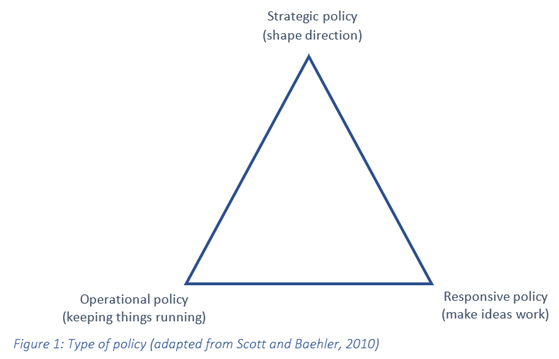
The scope of the Policy
Framework is policies that are publicly consulted on and adopted by Council, as
illustrated in Figure 2, below. This excludes the myriad of guidelines that
assist our organisation to deliver on Council’s direction to operate
effectively (such as policies for staff, or operational guidelines). Those
things sit more appropriately within the oversight of management rather than
the governance arm of Council.
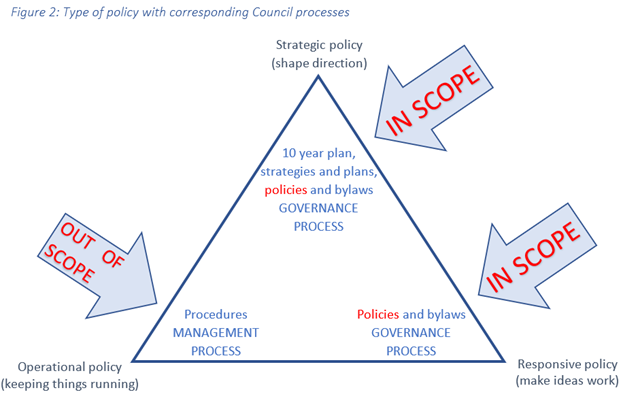
Scope of this report
Development of the overarching
strategic direction of Council (the second function of the team, listed above)
is within scope of the ‘Strategic policy’ part of Figures 1 and 2.
However, the vision, goals, outcomes, plans, and objectives adopted by Council
are outside of the scope of this report. These important policy elements may be
the subject of a further report once planning for the next LTP is underway.
3. policy
and bylaw Work programme
Efforts to reinforce the
Policy Framework approach
For some years now we have
endeavoured to provide Elected Members with consistent and early advice on the
options available to respond to an identified policy problem. We hope this
approach provides Elected Members with the advice they need to make informed
decisions. There is always a variety of options available to Council, including
(depending on the issue) a simple resolution, a policy or bylaw process, or a
request for further information. Notable successes with this ‘early
advice’ approach include the amendment to the Traffic and Parking Bylaw
in response to issues about street racing, and advice informing the draft Food
Security and Resilience Policy.
SLT has also made efforts to
reinforce the Policy Framework by requiring approval of implementation plans
that follow the adoption of any policy or bylaw. Council receives regular
reports on the implementation of some policies (such as the Play Policy and the
Waste Management and Minimisation Plan), however for the most part this
monitoring is the responsibility of SLT.
Work programme for 2024/2025
– 2026/2027
The development and review of
11 of Council’s 41 policies sit outside the work programme of the
Strategy and Policy Team. These are the:
· Governance
policies (Appointment of Directors, Code of Conduct, Elected Members’
Development and Training, Local Government Statement)
· Planning policies
(Business Improvement District, Development Contributions, Earthquake Prone
Buildings, Vegetation Framework)
· Finance
policies (Procurement, Rates Remission and Postponement, Treasury)
Responsibility for development
and review of the remaining 30 policies sits with the Strategy and Policy Team.
Attachment 1 describes the Team’s policy and bylaw work programme
developed in response to the 2024-2034 LTP.
The Strategy and Policy Team
does not have consultancy resources to complete its work, unless explicitly
allocated by Council for a particular purpose (e.g. the indoor courts study).
This means that there is continual prioritising of staff resources as different
issues arise in Council and the community. Not all work can be easily
anticipated, and in the past several years there have been some new pieces of
work requested by Council that impact on the delivery of the work programme.
One of the ways we have sought
to be more efficient in the use of our resources is to find common ground
amongst previously-adopted policies to enable combining or at least the
parallel review processes. For example, three different policies are in the
process of being combined into the new Health Promotion Policy. Similarly, we
are reviewing the Policy for the Use of Public Space alongside the broader Signs
and Use of Public Places Bylaw. These two policy documents have some common
issues, and it makes sense to discuss these with the community as a wider
policy problem.
Uncertainties with specific
projects
At present it is difficult to
include the following projects in the work programme with any degree of
certainty.
- Speed
Management Plan development
Council has done considerable
work to develop a Speed Management Plan following the previous
Government’s change to the process for setting speed limits. The new
Speed Limits Rule is now published, and staff are reviewing the Rule to
identify the impacts for Council.
- Local Alcohol
Policy
Options for continuing this
work were considered in a Part 2 report to the Community Development Committee
in October 2024. The decision made by Council on this matter could impact on
the Team’s other planned work.
4. conclusion
The Policy Framework is
gradually becoming embedded in the Council organisation. Policy advice to
Council consistently references the stages of policy development, and SLT
endorses policy implementation plans as they are developed by policy ‘owners’
throughout the organisation. We anticipate that these measures will contribute
to a growing confidence for Elected Members and the community that policy is
being developed, reviewed, and implemented appropriately.
As we move through this first
three years of the LTP, there are bound to be new policy questions, or
Government decisions that impact on decisions able to be made by Council. In
these instances we will provide advice to Council about the potential for
revisions to the agreed work programme and the impact of any changes made.
5. Compliance
and administration
|
Does the Committee have
delegated authority to decide?
|
Yes
|
|
Are the decisions significant?
|
No
|
|
If they are significant do they
affect land or a body of water?
|
No
|
|
Can this decision only be made
through a 10 Year Plan?
|
No
|
|
Does this decision require
consultation through the Special Consultative procedure?
|
No
|
|
Is there funding in the current
Annual Plan for these objectives?
|
Yes
|
|
Are the recommendations
inconsistent with any of Council’s policies or plans?
|
No
|
|
The recommendations contribute
to:
All four Council strategic
goals.
|
|
The
recommendations contribute to the achievement of objective/objectives
in:
14.
Mahere mana urungi, kirirarautanga hihiri
14. Governance and Active
Citizenship Plan
The objective is: ‘Base
our decisions on sound information and advice’ and ‘Provide clear
and accessible information and opportunities for community input into Council
decisions’ and ‘Oversee Council operations and communicate
outcomes and decisions to our communities’.
|
|
Contribution to strategic
direction and to social, economic, environmental and cultural well-being
|
Council operations are guided
by a series of Council-adopted policies and bylaws. Ensuring that these
documents are developed and reviewed appropriately contributes to the
Governance and active citizenship plan objectives.
|
|
|
|
Attachments
|
1.
|
Policy
and bylaw work programme ⇩ 
|
|
|
2.
|
Policy
Framework process diagram ⇩ 
|
|
Memorandum
TO: Strategy
& Finance Committee
MEETING DATE: 13
November 2024
TITLE: Small
vehicle fleet ownership and long-term lease investigation results
Presented
By: Cameron
McKay, General Manager Corporate Services
APPROVED BY: Waid
Crockett, Chief Executive
RECOMMENDATION(S)
TO Strategy & Finance
Committee
1. That the
Committee note the advice that Council continues to own its own small vehicle
fleet.
1. ISSUE
1.1 Council
resolved in November 2023 (193.3-23) to investigate options to transition out of small vehicle fleet ownership
and long-term lease, with a view to utilisation of a carshare or similar
services from Financial Year 2027 onwards.
1.2 This memorandum summarises that
investigation.
2. BACKGROUND
Council small vehicle fleet
2.1 The
current fleet is made up of 173 vehicles, of which 45 are classified as
passenger vehicles, 64 as heavy and 64 as commercial vehicles. Passenger
vehicles can then be further categorised according to the table below.
Table 1: Small vehicle
breakdown
|
Vehicle type
|
Senior
Leadership Team/ Mayor
|
Kitted
with specific work-related equipment
|
Located
at remote sites
|
Pool
vehicles based at Central Administration Building
|
Pool
vehicles based at Depot
|
|
Number of vehicles
|
6
|
18
|
3
|
14
|
4
|
2.2 The
focus of the memorandum is the 18 pool vehicles which Officers consider are
suitable for the operation of a Movement as a Service (MaaS) type solution. The
remaining small fleet has not been included as they are kitted with specialised
equipment or used in a manner not suitable for a MaaS solution.
3. OPTIONS-
DEFINITIONS
Continued ownership model
Council purchasing, operating and selling passenger
vehicles for organisational use. Efficiency savings may be possible with
hybrid/electric options or fleet rationalisation.
Lease
Transition away from ownership to a lease option with
vehicles owned by a third party who would take responsibility for purchasing,
maintenance and disposal of passenger vehicles. Operational costs would remain
the same.
Movement as a Service (MaaS)
Transition to a MaaS or
on-demand service where vehicles would be made available to staff on an
‘as needed’ basis through subscription to a specific service, most
likely through a mobile phone app. Ownership costs would be eliminated in
exchange for a reduction in ease of access and increased operational costs.
There is potential for co-benefits depending on the details of the service
selected.
4. OPTIONS-
DISCUSSION
Lease vs. ownership
4.1 A
comparison of four-year lease costs carried out by Carbn Asset Management (as
at September 2023; see Attachment 1), taking into account depreciation
considerations against lease payments, found that vehicle ownership is
approximately $2000 cheaper than an equivalent lease arrangement per vehicle.
Due to Council being able to access All of Government pricing, savings would increase
by a further $850 per vehicle (based on BYD Atto 3 passenger vehicle).
4.2 Outside
of the purchase price savings, other factors have been considered by Officers:
Pros
• A
fixed term lease arrangement eliminates unknowns around future sales price,
cost fluctuations and interest rates/depreciation.
• Replacements
can be timed to take advantage of new or emerging technology (assuming this is
available in the lease market).
o There is potential to consider a mixed ownership model,
where the organisation would take on a portion of the lease whilst a staff
member would take on the remainder.
Cons
• Costs
are transferred from debt funded CAPEX to rate funded OPEX for new vehicles.
Renewals are rates funded over 3 years, however Council would lose the benefit
of being able to stretch the renewal interval if desired.
• Loss
of control of costs and possible termination costs if the fleet size needs to
shrink.
• Lease
pricing misses the opportunity to access the benefits of All of Government
pricing when purchasing vehicles.
• Lease
pricing takes into account financing costs whereas Council has much lower borrowing
rates than lease companies are likely to achieve.
• Relies
on the ongoing viability of the service provider.
• Leased
vehicles often have mileage restrictions, leading to fees if exceeded, and
where usage is lower than contracted, the lease company benefits on the resale
value of the vehicle.
• Modifications
to the vehicle are generally not permitted.
MaaS vs. ownership
4.3 In
this option, providers such as Mevo and Zilch could be encouraged into the city
through the agreement of a contract with Council and other local
organisations/businesses. They would then provide access to a fleet of electric
vehicles through a mobile phone app in a similar way to the e-scooters
currently in operation in the City.
4.4 In
the 12-month period ending 31 July 2024, the 18 passenger vehicles in the pool
fleet were in operation (drive time) for 15,404 hours. Fleet operational costs
include fuel Road User Charges, servicing etc. as well as the cost of vehicle
purchase spread across a 4-year period. Total fleet (current hybrid fleet)
operational costs have been equated to $124,763 per year.
4.5 The
table below compares operational costs against Mevo and Zilch subscriptions for
18 vehicles per annum. It should be noted that both Mevo and Zilch services
charge for a variety of issues including cleaning costs, cancellation costs,
access card replacement, failure to plug in a car on return, etc. This has been
assumed at $50 per vehicle per year for the purposes of this calculation. It is
also worth noting that the MaaS providers have a minimum hourly usage charge of
1 hour, whereas the base usage of the current fleet in 2023/24 was actual hours
used, rather than hourly rounding.
Table 2: Annual
operational costs comparison
|
Vehicle Type
|
Ownership
|
Lease
|
Mevo Subscribe
|
Mevo Hourly
|
Zilch
|
|
BYD Atto3
|
$ 124,763
|
$ 186,462
|
$ 253,458
|
$ 369,705
|
$ 257,274
|
|
Variance against Ownership
|
0
|
+ $ 61,669
|
+ $ 128,695
|
+ $ 244,942
|
+ $ 132,511
|
4.6 In
addition to operational cost savings, other factors have been considered by
Officers:
Pros
• Eliminates
the need to own and manage passenger vehicles, notably pool cars.
• Provides
an incentive to reduce mileage travelled by staff.
• Reduces
carbon emissions by rapidly transitioning to an all-electric fleet.
• Potentially
provides a new service to city residents and visitors as vehicles will be
publicly available.
• Encourages
other organisations and businesses to take up MaaS options.
• Allows staff access to vehicles (at their own expense)
without incurring fringe benefit tax.
Cons
• May
lead to cars not being available when desired leading to a reduction in
response times and could have an impact in emergencies and a stricter booking
and collection requirement.
• Available
vehicles may not be located at appropriate location between work sites for ease
of access.
• The
Mevo and Zilch subscribed options are only available between the hours of 6am
and 5pm Monday to Friday.
• May
require the establishment of a new system in Palmerston North potentially
including creation of a ‘hub’ where vehicles will be based when not
in use.
• Would
require a behaviour change programme including staff training and a period of
user support.
• Increased
administrative burden, including providing a support service to users.
• Potential
for fines due to breach of terms and conditions.
• Relies
on the ongoing viability of the service provider.
5. SUMMARY
ANALYSIS
5.1 Fleet
ownership by the organisation remains more advantageous financially and
non-financially than other lease or carshare options.
5.2 Officers
recommend that the organisation retains the current ownership model and
continues to progress electrifying the fleet where practical to minimise
emissions and reduce annual operating costs.
6. NEXT
STEPS
6.1 The
Fleet and Supply Team will focus on maximising utilisation of the fleet by
exploring additional pooling of vehicles to optimise the size of the fleet.
This could result in a reduction of capital costs.
6.2 The
Fleet and Supply team will continue to explore options to minimise carbon
emissions and potential operating savings, such as new alternate fuel options,
and monitor any future opportunities as they emerge, such as the potential of
Micro vehicles.
7. Compliance
and administration
|
Does the Committee have
delegated authority to decide?
|
Yes
|
|
Are the decisions significant?
|
No
|
|
If they are significant do they
affect land or a body of water?
|
No
|
|
Can this decision only be made
through a 10 Year Plan?
|
No
|
|
Does this decision require
consultation through the Special Consultative procedure?
|
No
|
|
Is there funding in the current
Annual Plan for these objectives?
|
Yes
|
|
Are the recommendations
inconsistent with any of Council’s policies or plans?
|
No
|
|
The recommendations contribute
to:
Whāinga 4: He tāone
toitū, he tāone manawaroa
Goal 4: A sustainable and
resilient city
|
|
The
recommendations contribute to the achievement of objective/objectives
in:
10.
Mahere āhuarangi hurihuri, toitūtanga
10. Climate Change and
Sustainability Plan
The objective is: Reduce the production
of greenhouse gases from Council activities
|
|
Contribution to strategic
direction and to social, economic, environmental and cultural well-being
|
Ongoing review of our
practices ensures effective and efficient government.
|
|
|
|
Attachments
|
1.
|
Commissioned
Fleet Audit, Optimisation and Transition Study (Carbn Asset Management) ⇩ 
|
|
REPORT
TO: Strategy
& Finance Committee
MEETING DATE: 13
November 2024
TITLE: Public
Notification of a Community Occupancy Lease to Manawatū Racing Pigeon Club
Incorporated
PRESENTED BY: Bill
Carswell, Manager Property and Resource Recovery
APPROVED BY: Chris
Dyhrberg, General Manager Infrastructure
RECOMMENDATION(S)
TO Strategy & Finance
Committee
1. That the
Committee continue to support Manawatū Racing Pigeon Club Incorporated by
notifying the public of its intention to grant community occupancy of Council
land at 53 Totara Road, Palmerston North in accordance with the Support and
Funding Policy 2022.
2. That the
Committee note the land affected by the community occupancy of Manawatū
Racing Pigeon Club Incorporated is described as Part Lot 2 DP 2003.
Summary of options analysis for Public Notification of a Community Occupancy
Lease to Manawatū Racing Pigeon Club Incorporated
|
Problem
or Opportunity
|
The Racing Pigeon Club has
requested support from Council by granting community occupancy through a new
lease agreement.
This report seeks Council’s
approval to commence the public notification process for the preferred option
(Option 1) in accordance with the Support and Funding Policy 2022.
|
|
OPTION 1:
|
Notify the public of
Council’s intention to continue supporting the Club by granting
occupancy via a lease under the Support and Funding Policy of the site being
53 Totara Road
|
|
Community
Views
|
· Community
views will be sought during the public notification period.
|
|
Benefits
|
· The
community views, along with any objections received, will be considered to
inform the decision.
· Council
can continue supporting and developing the relationship with the Club and
enable them to continue their activities.
|
|
Risks
|
· There
is a reputational risk where other community organisations may feel aggrieved
that they have not been given the opportunity to lease the land. This risk
can be mitigated through the transparent submission process.
|
|
Financial
|
· The
costs of public notification will be minor.
· Council
will receive the annual rent of $150.00 plus GST.
|
|
OPTION 2:
|
Do not
notify the public of the preferred option (intention to support through a
lease) which would effectively end the Club’s occupancy of Council land
|
|
Community
Views
|
· Community
views to inform the Council’s decision on the Club’s proposed
occupancy will not be sought.
|
|
Benefits
|
· Should
the lease end, and the Club be requested to vacate the premises, the Support
and Funding Policy provides a process for Council to explore alternative use
options of the land prior to potentially seeking an alternative occupant.
This allows for a strategic view of land use when an arrangement ends.
· Under
the current lease, at the expiration of the lease, Council has the option to
purchase the Club’s buildings and improvements within three months of
the date of expiration at a price agreement between both parties.
|
|
Risks
|
· There
is a reputational risk that Council may be criticised for not supporting the
activities of the Club, especially given they are established on the site.
This risk cannot be mitigated.
· There
is a further reputational risk where Council may be criticised for placing a
financial burden on the Club after asking them to vacate. If Council wishes
to proceed with this option, the Club will be required to vacate the land
and, unless agreed otherwise, remove all assets, and return the land to its
original state at their cost. Whilst this is set out in the lease conditions,
that will not mitigate the reputational risk caused from perception.
|
|
Financial
|
· Council
would no longer receive the existing annual rent of $150.00 plus GST.
· Council
staff time would be required to assist in the process of the removal of
improvements.
|
Rationale for the recommendations
1. Overview of the problem or opportunity
1.1 The
Club was formed over 44 years ago and have been occupying the site since 1995,
to promote and provide the opportunity for any interested persons to
participate in the sport of Racing Pigeons.
1.2 The
Club has recently become an incorporated society and wishes to enter into a new
lease agreement, to remove the personal liability from its two committee
members, currently listed as the leaseholders, and to meet the requirements of
the Support and Funding Policy.
1.3 Council
only leases the land to the Club. The Club owns all improvements within the
lease area.
1.4 Under
the Council’s Support and Funding Policy, if a for-purpose organisation
requests a new lease for the occupancy of Council land at the end of their
agreed term, the proposal is to be publicly advertised to seek feedback from
the public.
1.5 This
report seeks Council’s approval to commence the public notification
process in accordance with the Support and Funding Policy, noting that this is
the first step in the process, and only seeks approval for consultation.
1.6 The
final decision to lease to the Club will be brought to the Strategy &
Finance Committee in a subsequent report which will discuss any feedback
received.
2. The proposal
2.1 The
proposed lease area is approximately 271m2 as outlined in Figure 1
below.
2.2 If
the land lease is granted the proposed annual rental is $150.00 plus GST. This
is consistent with the framework in Council’s Support and Funding Policy.
2.3 The
proposed term would be for five (5) years, with one right of renewal for a
further five (5) years.
2.4 If
a new lease is commenced, the use of the site will remain the same.
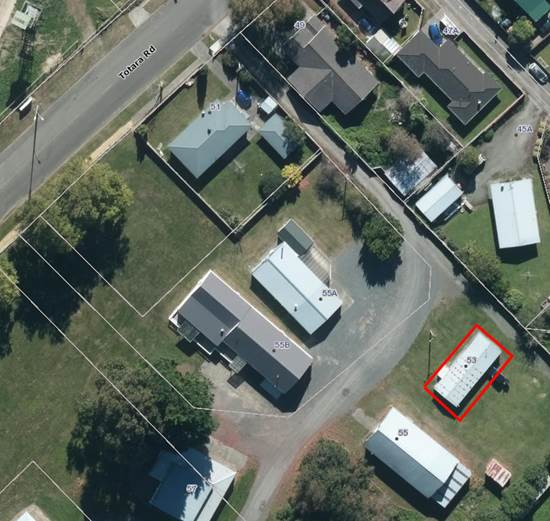
Figure1: Proposed leased area
2.5 The
proposed 10-year term structure, made up of two 5-year terms, is consistent
with the standard lease terms entered on Council land. This tenure has been
discussed with, and agreed to, by the proposed tenant. If Council wishes to
grant a longer term, then direction will need to be given to do so.
3. assessment of proposal under the support and
funding policy
3.1 The
Support and Funding Policy provides a framework for how Council will deliver
support and funding to groups, organisations, and individuals to achieve the
vision of the city. One form of support within the Policy is to enable
for-purpose groups to occupy Council-owned property at community rental rates.
3.2 All
for-purpose groups expressing an interest in occupying Council-owned property,
either for a new occupancy or renewal of an existing occupancy, must make an
application. The application is then assessed by Council Officers to ensure
that firstly they meet the Policy’s eligibility criteria before
proceeding any further.
3.3 Further
assessment considerations are outlined in the Policy. In broad terms, the
assessment covers three main areas:
· The Policy for the
Use of Public Space – guidelines relevant to the application.
· Reserves Act 1977
– including consideration of the values and purpose of the reserve and
the impacts on the public use of the reserve.
· Impact
on the locality and park operations.
A copy of the assessment is attached as Attachment 1.
3.4 In
summary, following the assessment against the Policy, Council Officers conclude
that the Club meets all criteria required.
4. Giving effect to the principles of the treaty
of waitangi
4.1 Rangitāne
o Manawatū representatives have considered the proposal; Rangitāne
are comfortable with this proposal and happy for it to proceed.
5. Description and analysis of options
Option 1: Notify the public of Council’s intention
to continue supporting the Club by granting occupancy via a lease under the
Support and Funding Policy of the site being 55 Totara Road
5.1 This
is the preferred option.
5.2 Council
will seek feedback on continuing to support the Club through the process
outlined in the Support and Funding Policy.
5.3 After
considering feedback, Council can then decide to enter a formal lease with the
Club.
5.4 The
Club contributes to the community and shows strong alignment with
Council’s strategic direction. The Club adds to Council’s priority
to lease Council land and facilities to for-purpose organisations in line with
the Community Funding Policy.
Option 2: Do not notify the public of the preferred
option (intention to support through a lease) which would effectively end the
Club’s occupancy of Council land
5.5 The
impact of this option would mean that the opportunity to seek community
feedback on the Club’s continued occupancy of the site would not occur.
5.6 In
turn, this would mean that the lease would cease, and Council would follow the
process outlined in the Support and Funding Policy to determine the future use
of the land (refer 5.5.1(b)). The first step in this process is to carry out a
strategic options review.
5.7 The
implication of this option on the Club would mean that they would not be able
to continue leasing the site. Under the lease provisions, a decision would then
need to be made regarding the improvements owned by the Club.
5.8 This option poses the risk that Council will be perceived
as not supporting the activities of the Club.
6. Conclusion
6.1 The
proposal is consistent with the requirements of the Support and Funding Policy.
Continued occupancy will allow the Club to offer its activities to pigeon
racing enthusiasts and the community.
6.2 Public
notification on the continuing support will provide opportunities for
submissions and objections to be made before a decision is made, fulfilling the
requirements of the Support and Funding Policy 2022.
6.3 It
is recommended the Committee proceed with Option 1. The Society’s
activities contribute to outcomes to achieve Goal 2 of Council’s
strategic direction.
7. Next actions
7.1 Public
notification of the intention to grant the lease, seeking submissions and
objections.
7.2 Provide
the opportunity for any submitters that wish to be heard to speak to Council.
7.3 Consider
the objections and submissions and provide to Council on whether to accept,
modify or decline the lease proposal.
8. Outline of community engagement process
8.1 The
proposed consultation process meets the public notification requirements of the
Support and Funding Policy 2022 which includes a minimum of one-month period
advertised in the Manawatū Standard, Dominion Post and on the
Council website.
Compliance and administration
|
Does the Committee have
delegated authority to decide?
|
Yes
|
|
Are the decisions significant?
|
No
|
|
If they are significant do, they
affect land or a body of water?
|
No
|
|
Can this decision only be made
through a 10 Year Plan?
|
No
|
|
Does this decision require
consultation through the Special Consultative procedure?
|
No
|
|
Is there funding in the current
Annual Plan for these actions?
|
Yes
|
|
Are the recommendations
inconsistent with any of Council’s policies or plans?
|
No
|
|
The recommendations contribute
to:
Whāianga 3: He hapori
tūhonohono, he hapori haumaru
Goal 3: A Connected and
Safe Community
|
|
The recommendations contribute
to the achievement of objective/objectives in
6. Mahere rēhia
6. Recreation and Play Plan
The objective is: Administer the
Reserves Act 1977.
|
|
Contribution to strategic
direction and to social, economic, environmental, and cultural well-being
|
The recommendation is in line
with Council’s Support and Funding Policy which supports community
groups to deliver benefits contributing to the cultural, economic,
environmental, and social wellbeing of the city.
|
|
|
|
Attachments
|
1.
|
Assessment
of Lease Proposal ⇩ 
|
|
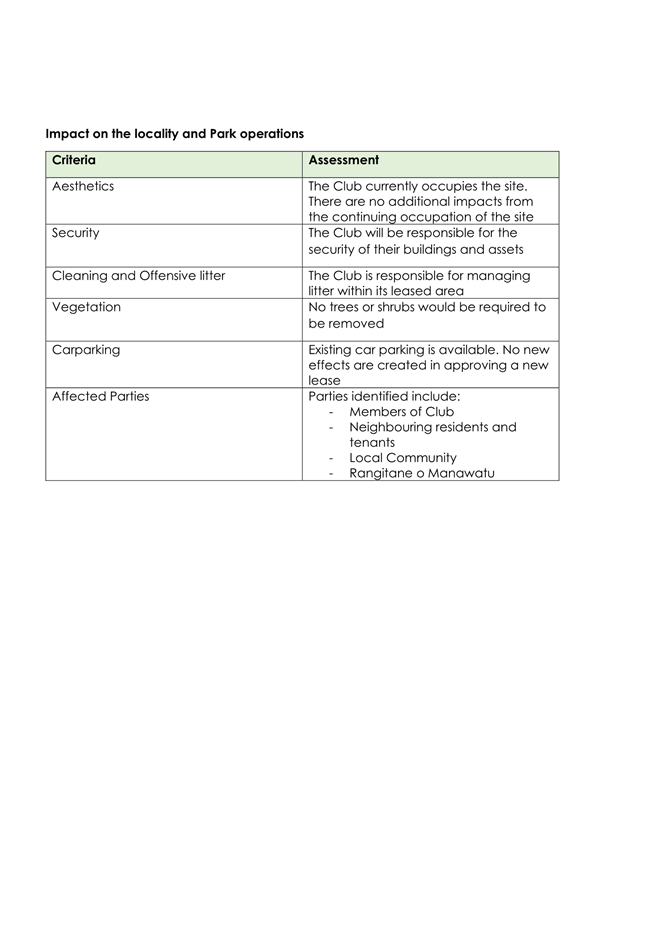
REPORT
TO: Strategy
& Finance Committee
MEETING DATE: 13
November 2024
TITLE: Public
Notification of a Community Occupancy Lease to Manawatū Woodworkers Guild Incorporated
PRESENTED BY: Bill
Carswell, Manager Property and Resource Recovery
APPROVED BY: Chris
Dyhrberg, General Manager Infrastructure
RECOMMENDATION(S)
TO Strategy & Finance
Committee
1. That the
Committee continue to support Manawatū Woodworkers Guild Incorporated by
notifying the public of its intention to grant community occupancy of Council
Land at 38 Featherston Street, Palmerston North in accordance with the Support
and Funding Policy 2022 and Section 54 of the Reserves Act 1977.
2. That the
Committee note the land affected by the community occupancy of Manawatū
Woodworkers Guild Incorporated is described as Part Lot 13 DP2938 and Lot 2
DP605123.
Summary of options analysis for Public Notification of a Community Occupancy
Lease to Manawatū Woodworkers Guild Incorporated
|
Problem
or Opportunity
|
The Woodworkers Guild has
requested support from Council by granting community occupancy through a new
lease agreement.
This report seeks Council’s
approval to commence the public notification process in accordance with the
Support and Funding Policy 2022 and Section 54 of the Reserves Act 1977.
|
|
OPTION 1:
|
Notify the public of
Council’s intention to continue supporting the Woodworkers Guild by
granting occupancy via a lease of the existing site at 38 Featherston Street
(next to the Takaro Sports Club)
|
|
Community
Views
|
· Community
views will be sought during the public notification period.
|
|
Benefits
|
· The
community views, along with any objections received, will be considered to
inform the decision.
· Council
can continue supporting and developing the relationship with the Club and
enable them to continue their activities.
|
|
Risks
|
· There
is a reputational risk where other community organisations may feel aggrieved
that they have not been given the opportunity to lease the land. This
risk can be mitigated through the transparent submission process.
|
|
Financial
|
· The
costs of public notification will be minor.
· Council
will receive the annual rent of $150.00 plus GST.
|
|
OPTION 2:
|
Do not
notify the public of the preferred option (intention to support through a
lease), which would effectively end the Woodworkers Guild's occupancy of
Council land
|
|
Community
Views
|
· Community
views to inform the Council’s decision on the Club’s proposed
occupancy will not be sought.
|
|
Benefits
|
· Should
the lease end, and the Club be requested to vacate the premises, the Support
and Funding Policy provides a process for Council to explore alternative use
options of the land prior to potentially seeking an alternative
occupant. This allows for a strategic view of land use when an arrangement
ends.
· Under
the current lease, at the expiration of the lease, Council has the option to
purchase the Club’s buildings and improvements within three months of
the date of expiration at a price agreed between both parties.
|
|
Risks
|
· There
is a reputational risk that Council may be criticised for not supporting the
activities of the Club, especially given they are established on the
site. This risk cannot be mitigated.
· There
is a further reputational risk where Council may be criticised for placing a
financial burden on the Club after asking them to vacate. If Council
wishes to proceed with this option, the Club will be required to vacate the
land and, unless agreed otherwise, remove all assets, and return the land to
its original state at their cost. Whilst this is set out in the lease
conditions, that will not mitigate the reputational risk caused from
perception.
|
|
Financial
|
· Council
would no longer receive the existing annual rent of $150.00 plus GST.
· Council
staff time would be required to assist in the process of the removal of
improvements.
|
Rationale for the recommendations
1. Overview of the problem or opportunity
1.1 The
Woodworkers Guild has been occupying Council land at 38 Featherston Street
since 2007. Their current lease is due to expire in 2027 and the Club
requests a new lease so it can continue to occupy the site.
1.2 Since
the Club has occupied Council land, the Club has developed the site to provide
opportunities for participation in woodworking activities.
1.3 Council
only leases the land to the Club. The Club owns all improvements within
the lease area.
1.4 Under
the Council’s Support and Funding Policy, if a for-purpose organisation
requests a new lease for the occupancy of Council land at the end of their agreed
term, the proposal is to be publicly advertised to seek feedback from the
public.
1.5 In
addition, as the leased land is reserve land, any new lease is also subject to
the requirements of the Reserves Act 1977, which also requires public
notification of Council’s intention to grant a new lease.
1.6 This
report seeks Council’s approval to commence the public notification
process in accordance with the Reserves Act 1977 and the Support and Funding
Policy, noting that this is the first step in the process, and only seeks
approval for consultation.
1.7 The
final decision to lease to the Club will be brought to the Strategy &
Finance Committee in a subsequent report, which will discuss any feedback
received.
2. The proposal
2.1 The
proposed lease area is approximately 539m2 as outlined in Figure 1
below.
2.2 If
the land lease is granted the proposed annual rental is $150.00 plus GST.
This is consistent with the framework in Council’s Support and Funding
Policy.
2.3 The
proposed term would be for five (5) years, with one right of renewal for a
further five (5) years.
2.4 If
a new lease is commenced, the current lease will be surrendered and a new lease
will be entered; the use of the site will remain the same.
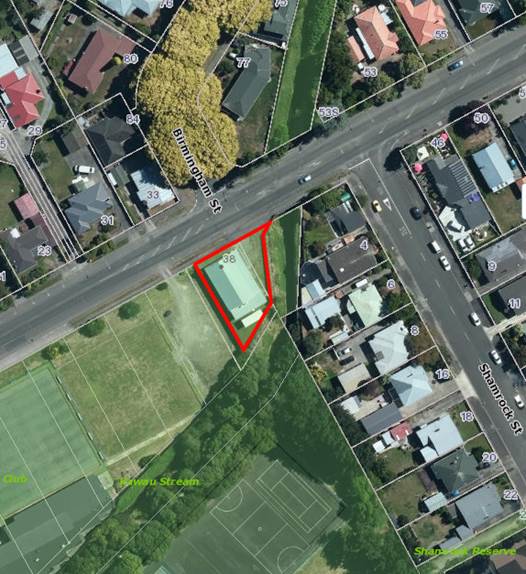
Figure 1: Proposed
leased area
2.5 The
proposed 10-year term structure, made up of two 5-year terms, is consistent
with the standard lease terms entered on Council land. This tenure has
been discussed with, and agreed to, by the proposed tenant. If Council
wishes to grant a longer term, then direction will need to be given to do so.
3. assessment of proposal under the support and
funding policy.
3.1 The
Support and Funding Policy provides a framework for how Council will deliver
support and funding to groups, organisations, and individuals to achieve the
vision of the city. One form of support within the Policy is to enable
for-purpose groups to occupy Council-owned property at community rental rates.
3.2 All
for-purpose groups expressing an interest in occupying Council-owned property,
either for a new occupancy or renewal of an existing occupancy, must make an
application. The application is then assessed by Council Officers to
ensure that firstly they meet the Policy’s eligibility criteria before
proceeding any further.
3.3 Further
assessment considerations are outlined in the Policy. In broad terms, the
assessment covers three main areas:
· The Policy for the
Use of Public Space – guidelines relevant to the application.
· Reserves Act 1977
– including consideration of the values and purpose of the reserve and
the impacts on the public use of the reserve.
· Impact
on the locality and park operations.
A copy of the assessment is attached as Attachment 1.
3.4 In
summary, following the assessment against the Policy, Council Officers conclude
that the Club meets all criteria required.
4. Leasing powers under the reserves act
4.1 In
addition to the Support and Funding Policy requirements, as the land is a
reserve held under the Reserves Act 1977, the leasing provisions also apply.
4.2 Section
54(1)(b) of the Reserves Act 1977 allows for an administering body to:
‘lease to any voluntary
organisation part of the reserve for the erection of stands, pavilions,
gymnasiums, and, subject to sections 44 and 45, other buildings and structures
associated with and necessary for the use of the reserve for outdoor sports,
games, or other recreational activities, … which lease shall be subject
to the further provisions set out in Schedule 1 relating to leases of
recreation reserves issued pursuant to this paragraph:
provided that a lease granted by the
administering body may, with the prior consent of the Minister given on the
ground that he or she considers it to be in the public interest, permit the
erection of buildings and structures for sports, games, or public recreation
not directly associated with outdoor recreation.’
4.3 ‘Necessary’
is not interpreted as requiring that all or even most visitors or users of the
reserve need/want to use the service or activity provided under the
lease. Reserves often have activities on them that only some of the
visitors to the reserve use. The balance of the reserve is available for
general use by the community.
4.4 The
proposal would see the continued use of part of the reserve by the Club.
The lease does not alter the current user experience or change the existing
capacity for other activities.
5. land Status
5.1 A
summary of the land status information is:
|
Title
|
Reserve
Status
|
Officer
Comment
|
|
Part Lot 13 DP2938 and Lot 2
DP605123
|
Recreation Reserve
|
Subject to the Reserves Act 1977
|
6. giving effect to the principles of the treaty
of waitangi
6.1 The
Reserves Act 1977 is subject to Section 4 of the Conservation Act and requires
that administering bodies under the Reserves Act 1977 give effect to the
principles of the Treaty of Waitangi.
6.2 Rangitāne
o Manawatū representatives have considered the proposal, Rangitāne
are comfortable with this proposal and happy for it to proceed.
7. Description of options
Option 1: Notify the public of Council’s intention
to continue supporting the Woodworkers Guild by granting occupancy via a lease
of the existing site at 38 Featherston Street
7.1 This
is the preferred option.
7.2 Council
will seek feedback on continuing to support the Club through the process
outlined in the Support and Funding Policy.
7.3 Council
must give people the opportunity to submit on the proposal and be heard before
deciding to grant a lease as per sections 119 and 120 of the Reserves Act 1977.
7.4 After
considering feedback, Council can then decide to enter a formal lease with the
Club.
7.5 The
Club contributes to the community and shows strong alignment with
Council’s strategic direction. The Club adds to Council’s priority
to ensure the use of all community recreation facilities is optimised.
Option 2: Do not notify the public of the preferred
option (intention to support through a lease) which would effectively end the
Woodworkers Guild occupancy of Council land
7.6 The
impact of this option would mean that the opportunity to seek community
feedback on the Club’s continued occupancy of the site would not occur.
7.7 In
turn, this would mean that the lease would cease, and Council would follow the
process outlined in the Support and Funding Policy to determine the future use
of the land (refer 5.5.1(b)). The first step in this process is to carry
out a strategic options review.
7.8 The
implication of this option on the Club would mean that they would not be able
to continue leasing the site. Under the lease provisions, a decision would then
need to be made regarding the improvements owned by the Club.
7.9 This
option poses the risk that Council will be perceived as not supporting the
activities of the Club that has occupied the site since 2007.
8. Conclusion
8.1 The
proposal is consistent with the requirements of the Support and Funding Policy.
Continued occupancy will allow the Club to offer its activities to the
community.
8.2 Public
notification on the continuing support will provide opportunities for submissions
and objections to be made before a decision is made, fulfilling the
requirements of the Support and Funding Policy 2022 and section 54 of the
Reserves Act 1977.
8.3 It
is recommended the Committee proceed with Option 1. The Club’s activities
contribute to outcomes to achieve Goal 3 of Council’s strategic
direction.
9. Next actions
9.1 Public
notification of the intention to grant the lease, seeking submissions and
objections.
9.2 Provide
the opportunity for any submitters that wish to be heard to speak to Council.
9.3 Consider
the objections and submissions and provide to Council on whether to accept,
modify or decline the lease proposal.
10. Outline of community engagement process
10.1 The
proposed consultation process meets the public notification requirements of the
Support and Funding Policy 2022 and the Reserves Act 1977 that requires a
minimum of one-month period advertised in the Manawatū Standard, Dominion
Post and on the Council website.
11. Compliance and administration
|
Does the Committee have
delegated authority to decide?
|
Yes
|
|
Are the decisions significant?
|
No
|
|
If they are significant do, they
affect land or a body of water?
|
No
|
|
Can this decision only be made
through a 10 Year Plan?
|
No
|
|
Does this decision require
consultation through the Special Consultative procedure?
|
No
|
|
Is there funding in the current
Annual Plan for these objectives?
|
Yes
|
|
Are the recommendations
inconsistent with any of Council’s policies or plans?
|
No
|
|
The recommendations contribute
to:
Whāinga 3: He hapori
tūhonohono, he hapori haumaru
Goal 3: A connected and safe
community
|
|
The
recommendations contribute to the achievement of objective/objectives
in:
6.
Mahere rēhia
6. Recreation and Play
Plan
The objective is: Administer the
Reserves Act 1977.
|
|
Contribution to strategic
direction and to social, economic, environmental, and cultural well-being
|
The recommendation is in line
with Council’s Support and Funding Policy which supports community
groups to deliver benefits contributing to the cultural, economic,
environmental, and social wellbeing of the city.
|
|
|
|
Attachments
|
1.
|
Assessment
of Lease Proposal ⇩ 
|
|
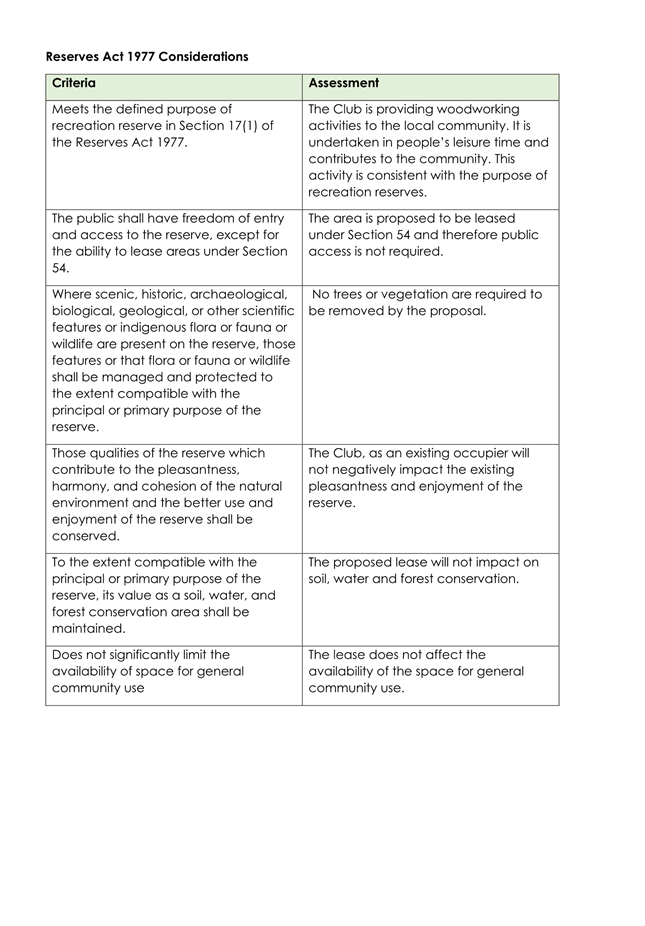
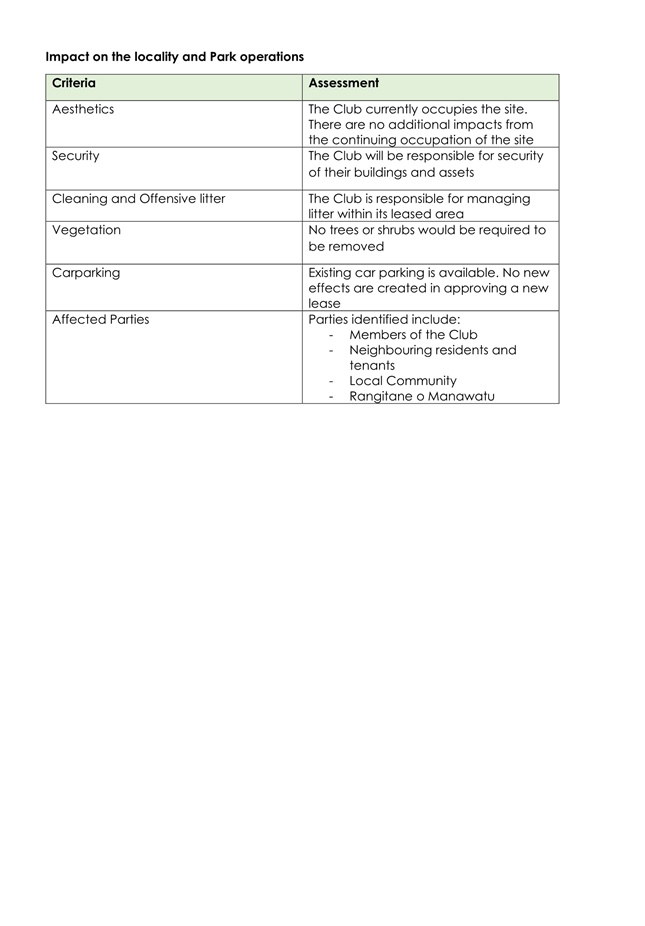
Memorandum
TO: Strategy
& Finance Committee
MEETING DATE: 13
November 2024
TITLE: 916
Tremaine Avenue (part of Vautier Park) - Proposal to grant lease of Council
land to Red Sox Sports Club Incorporated
Presented
By: Bill
Carswell, Manager Property and Resource Recovery
APPROVED BY: Chris
Dyhrberg, General Manager Infrastructure
RECOMMENDATION(S)
TO Strategy & Finance
Committee
1. That the
Strategy and Finance Committee grant a lease for the land at 916 Tremaine
Avenue (part of Vautier Park) Palmerston North described as Part
Section 249 TN of Palmerston North to Red Sox Sports Club
Incorporated, in accordance with section 54 of the Reserves Act 1977 and
Council’s Support and Funding Policy.
1. ISSUE
1.1 The
Club has occupied Council land at 916 Tremaine Avenue (part of Vautier Park)
since 1999. Their previous lease expired in 2019 and they have been operating
on a month-by-month lease since.
1.2 The
Club requested a new lease to continue operation. The land leased is subject to
the requirements of section 54 of the Reserves Act 1977 and Council’s
Support and Funding Policy 2022. These requirements include public notification
of Council’s intention to grant a new lease.
1.3 The
public notification process is now complete with no submissions received.
1.4 This
report seeks approval to grant a new lease to the Red Sox Sports Club
Incorporated in accordance with section 54 of the Reserves Act 1977 and
Council’s Support and Funding Policy.
2. BACKGROUND
2.1 A
report to the Strategy and Finance Committee on 14 August 2024 assessed the
proposal and as a result the Committee resolved:
1. That
the Committee continues to support Red Sox Sports Club Incorporated
by notifying the public of its intention to grant community occupancy
of Council land at 916 Tremaine Avenue (part of Vautier Park),
Palmerston North in accordance with the Support and Funding Policy
2022 and Section 54 of the Reserves Act 1977.
2. That
the Committee notes the land affected by the community occupancy
of Red Sox Sports Club is described as Part Section 249 TN of
Palmerston North.
2.2 Consultation
was completed in September 2024. No submissions were received.
2.3 If
entered the proposed lease will commence 1 April 2024 and will be for a term of
five (5) years, with two rights of renewal for a further five (5) years. The
rental is $150 + GST per annum.
3. Conclusion
3.1 Council
has been supporting the Club by granting occupancy of Council land since 1977.
3.2 Given
there were no objections to the new lease proposal and the requirements of the
Support and Funding Policy have been met, it is recommended that Council continue
to support the group and proceed with granting a new lease to the Club.
4. NEXT STEPS
4.1 A
new lease will be executed between Palmerston North City Council and the Red
Sox Sports Club Incorporated.
5. Compliance and administration
|
Does the Committee have
delegated authority to decide?
|
Yes
|
|
Are the decisions significant?
|
No
|
|
If they are significant do they
affect land or a body of water?
|
No
|
|
Can this decision only be made
through a 10 Year Plan?
|
No
|
|
Does this decision require
consultation through the Special Consultative procedure?
|
No
|
|
Is there funding in the current
Annual Plan for these actions?
|
Yes
|
|
Are the recommendations
inconsistent with any of Council’s policies or plans?
|
No
|
|
The recommendations contribute
to:
Whāinga 3: He hapori tūhonohono, he hapori
haumaru
Goal 3: A connected and safe
community
|
|
The
recommendations contribute to the achievement of objective/objectives
in:
6.
Mahere rēhia
6. Recreation and Play
Plan
The action is: Lease Council
land and facilities to for-purpose organisations in line with the Support and
Funding Policy.
|
|
Contribution to strategic
direction and to social, economic, environmental and cultural well-being
|
The recommendation is in line
with Council’s Support and Funding Policy which supports community
groups to deliver benefits contributing to the cultural, economic and
environmental and social wellbeing of the city.
|
|
|
|
Attachments
Nil
Memorandum
TO: Strategy
& Finance Committee
MEETING DATE: 13
November 2024
TITLE: 65
Totara Road - Proposal to grant lease of Council land to Manawatū Amateur
Radio Society Branch 20 NZ Art Incorporated
Presented
By: Bill
Carswell, Manager Property and Resource Recovery
APPROVED BY: Chris
Dyhrberg, General Manager Infrastructure
RECOMMENDATION(S)
TO Strategy & Finance Committee
1. That the
Strategy and Finance Committee grant a lease for the land at 65 Totara Road,
Palmerston North described as Lot DP 26198 to Manawatū Amateur Radio
Society Branch 20 NZ Art Incorporated, in accordance with Council’s
Support and Funding Policy.
1. ISSUE
1.1 The
Club has occupied Council land at 65 Totara Road since 1977. Their previous
lease expired in 2019 and they have been operating on a month-by-month lease
since.
1.2 The
Club requested a new lease to continue operation. The land leased is subject to
the requirements of the Support and Funding Policy 2022. These requirements
include public notification of Council’s intention to grant a new lease.
1.3 The
public notification process is now complete with no submissions received.
1.4 This
report seeks approval to grant a new lease to the Radio Club in accordance with
the Support and Funding Policy.
2. BACKGROUND
2.1 A
report to the Strategy & Finance Committee on 14 August 2024 assessed the
proposal and as a result the Committee resolved:
1. That
the Committee continues to support Manawatū Amateur Radio Society
Branch 20 NZ Art Incorporated by notifying the public of its intention to grant
community occupancy of Council land at 65 Totara Road, Palmerston North in
accordance with the Support and Funding Policy 2022.
2. That
the Committee notes the land affected by the community occupancy of
Manawatū Amateur Radio Society Branch 20 NZ Art Incorporated is
described as Lot DP 26198.
2.2 Consultation
was completed in September 2024. No submissions were received.
2.3 If
entered the proposed lease will commence 1 July 2024 and will be for a term of
five (5) years, with two rights of renewal for a further five (5) years.
Council pays for the rent of $150 + GST per annum, plus all rates on the
property, as part of the Society's arrangement with Emergency Management.
3. conclusion
3.1 Council
has been supporting the Radio Club by granting occupancy of Council land and
building since 1977.
3.2 Given
there were no objections to the new lease proposal and the requirements of the
Support and Funding Policy have been met, it is recommended that Council
continue to support the group and proceed with granting a new lease to the
Radio Club.
4. NEXT
STEPS
4.1 A
new lease will be executed between Palmerston North City Council and the
Manawatū Amateur Radio Society Branch 20 NZ Art Incorporated.
5. Compliance
and administration
|
Does the Committee have
delegated authority to decide?
|
Yes
|
|
Are the decisions significant?
|
No
|
|
If they are significant do they
affect land or a body of water?
|
No
|
|
Can this decision only be made
through a 10 Year Plan?
|
No
|
|
Does this decision require
consultation through the Special Consultative procedure?
|
No
|
|
Is there funding in the current
Annual Plan for these actions?
|
Yes
|
|
Are the recommendations
inconsistent with any of Council’s policies or plans?
|
No
|
|
The recommendations contribute
to
Whāinga 3: He hapori
tūhonohono, he hapori haumaru
Goal 3: A connected and safe
community
|
|
The
recommendations contribute to the achievement of objective/objectives
in:
6.
Mahere rēhia
6. Recreation and Play
Plan
The action is: Lease Council
land and facilities to for-purpose organisations in line with the Support and
Funding Policy.
|
|
Contribution to strategic
direction and to social, economic, environmental and cultural well-being
|
The recommendation is in line
with Council’s Support and Funding Policy which supports community
groups to deliver benefits contributing to the cultural, economic and
environmental and social wellbeing of the city.
|
|
|
|
Attachments
Nil
Committee Work Schedule
TO: Strategy
& Finance Committee
MEETING DATE: 13
November 2024
TITLE: Committee
Work Schedule
FROM:
RECOMMENDATION TO Strategy & Finance Committee
1. That the
Strategy & Finance Committee receive its Work Schedule dated November 2024.
|
COMMITTEE WORK SCHEDULE – NOVEMBER 2024
|
|
Item No.
|
Estimated Report Date
|
Subject
|
Officer Responsible
|
Current Position
|
Date of Instruction/
Clause number
|
|
1.
|
13 November 2024
|
Options to transition out of small vehicle fleet ownership
and long-term lease, with a view to utilisation of a carshare or similar
services Financial Year 2027 onwards
|
General Manager Strategic Planning
General Manager Infrastructure
|
|
Council
29 November 2023
Clause 193.3-23
|
|
2.
|
13 November 2024
|
Draft Waste Management and Minimisation Bylaw –
Approval for Consultation
|
General Manager Strategic Planning
|
|
11 August 2021
Clause 21
|
|
3.
|
13 November 2024
|
Quarterly Performance & Financial Report (Quarter 1
ending 30 September 2024)
|
General Manager Corporate Services /
CFO
|
|
Terms of Reference
|
|
4.
|
13 November 2024
|
Treasury Report (Quarter 1)
|
General Manager Corporate Services /
CFO
|
|
Treasury Policy
|
|
5.
|
13 November 2024
|
Lease - Manawatu Amateur Radio Society Branch 20 NZ Art
Incorporated
|
General Manager Infrastructure
|
|
14 August 2024
Clause 44-24
|
|
6.
|
13 November 2024
|
Lease – Red Sox Sports Club Incorporated
|
General Manager Infrastructure
|
|
14 August 2024
Clause 44-24
|
|
7.
|
13 November 2024
26
February 2025
|
Vegetation Framework to
include a Tree Policy focused on Council administered streets and public
spaces
|
General Manager
Strategic Planning
|
Competing
demands on planning resources; priority given to growth work, eg. Plan Change
I
|
Committee of Council
9 June 2021
Clause 31.8
|
|
8.
|
13 November 2024
26
February 2025
|
Te Apiti Ashhurst Loop
Track – negotiations and Recreation Fund application
|
General Manager
Infrastructure
|
Negotiations
in progress
|
8 May 2024
Clause 32
|
|
9.
|
26
February 2025
|
Public
Spaces: policy and bylaw options
|
General
Manager Strategic Planning
|
|
|
|
10.
|
26
February 2025
|
Reserves
Classifications – deliberations
|
General
Manager Infrastructure
|
|
14
August 2024
Clause
41-24
|
|
11.
|
28
May 2025
|
Public
Spaces: approval to consult on draft policy and bylaw
|
General
Manager Strategic Planning
|
|
|
|
12.
|
28 May 2025
|
Quarterly Performance
& Financial Report (Quarter 2 ending 31 December 2024)
|
General Manager
Corporate Services /
CFO
|
|
Terms of Reference
|
|
13.
|
28 May 2025
|
Treasury Report (Quarter
2)
|
General Manager
Corporate Services /
CFO
|
|
Treasury Policy
|
|
14.
|
28 May 2025
|
Engage
with the community around the option of designating part of Linklater Park as
dog-on-lead, and report back
|
General Manager
Strategic Planning
|
|
8 May 2024
Clause 26
|
|
15.
|
20 August 2025
|
Quarterly Performance
& Financial Report (Quarter 3 ending 30 April 2025)
|
General Manager
Corporate Services /
CFO
|
|
Terms of Reference
|
|
16.
|
20 August 2025
|
Treasury Report (Quarter
3)
|
General Manager
Corporate Services
|
|
Treasury Policy
|
|
17.
|
TBC
|
Nature Calls -
Prospective funding and finance options
|
General Manager
Corporate Services
|
|
Council
10 June 2024
Clause 111-24
|
|
18.
|
TBC
|
Delegation Manual
– Fees & Charges review
|
General Manager
Corporate Services
|
|
8 May 2024
Clause 24
|
|
19.
|
TBC
|
Revenue & Finance
Policy review
|
TBC
|
|
8 May 2024
Clause 24
|
|
20.
|
TBC
|
Contact Centre –
Breakdown of expenses
|
General Manager
Corporate Services
|
|
Council
3 April 2024 Clause
52-24
|
|
21.
|
TBC
|
Draft Interim Speed
Management Plan
|
General Manager
Strategic Planning
|
Waiting on Government
direction
|
Council
5 April 2023
Clause 46-23
|
Attachments
NIL




























